Online Business | How To

How to Create a Blog Business Plan (Includes Step-by-Step Template)
Published April 20, 2020
Published Apr 20, 2020
WRITTEN BY: Janette Novak
This article is part of a larger series on How to Make Money Blogging .
The most successful bloggers on the planet have one thing in common: they understand the power of a well-conceived business plan for driving blog profits. At its essence, your blog business plan is a road map that defines why your blog exists, clarifies your top goals, and provides a step-by-step outline of how you plan to accomplish those goals. Your plan guides you through the most crucial steps on your business-building journey.
If you think creating a business plan is going to be difficult and confusing, put those fears aside. I’m a blogger myself and have been working with bloggers for nearly a decade, and you’re about to learn my shortcuts and tips that will make the task far easier than you imagine.
10 Essential Sections of a Blog Business Plan
1. Executive Summary 2. Market & Competitor Analysis 3. Brand Identity Overview 4. Blog Content Overview 5. Blog Monetization Plan 6. Blog Marketing & Promotion 7. Blog Management & Operation 8. Cost & Revenues Forecast 9. Blog Performance Analysis 10. Business Exit Strategy
To get a jump-start on your business planning, download this free blog business plan template. It walks you through everything you need to include in your plan. The template is fully customizable so you can adapt it to meet your unique needs.
Free Blog Business Plan Template
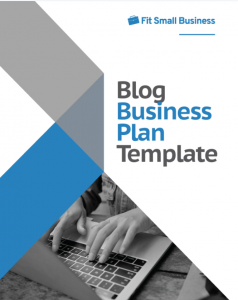
Download Now
10 Essential Sections in a Blog Business Plan
While there are 10 major sections in your business plan, each section of your plan is not necessarily self-contained. This means you can’t expect to finish step one and then move on to step two and proceed to each next area—you may go back and forth between sections when creating your plan. This holds especially true for the Executive Summary, which includes summarized content found in other sections of the plan.
1. Create an Executive Summary
The Executive Summary is widely considered the most important section in a business plan. This one section boils down your business plan to the essentials of how you intend to create and operate a profitable business. As a blogger, the main reason to create an Executive Summary is so that you are clear and remain focused on what you want to accomplish.
Your Executive Summary should list your blog’s name, a brief blog description, as well as summarized information about your blog’s target market and ideal audience. You will also want to include your blog’s mission statement and top business goals in this section of your plan.
Enter Your Blog’s Name on Your Plan
Your blog’s name may or may not be the same as your business name. For example, the popular lifestyle and personal finance blog Living Well Spending Less® is owned by Ruth Soukup Omnmedia. Soukup has several businesses and brands and gathers them all under one company name. If your blog’s name and your business name are not identical, that should be noted in this section of your plan.
Deciding on your blog’s name somewhat mirrors the steps you take to come up with a business name. Here are a few things to keep in mind when creating your blog name:
- Look for names that aren’t already taken
- Decide the tone you want your name to convey such as serious, playful, formal, or informal
- Select a name that is easy to remember and spell
- When possible, use a blog name that you can also use as your domain name
Here are some simple name-generating tactics that might inspire you:
- Incorporate the blog audience in your blog name.
- Find naming inspiration from characters in books or mythology
- Incorporate a location name into your blog’s name, if appropriate.
- Consider using a portmanteau, which is just two names modified and smushed to become one name (e.g., breakfast + lunch = brunch).
You may find that naming your blog presents a little more challenge than you anticipated. Let’s face it, with more than 31 active million bloggers in the world, a lot of terrific names are already taken. Finding the perfect blog name and domain will take time and creativity on your part, but the tips listed above will make the process easier.
Write a Blog Overview
An overview is a 40,000 foot fly-over description of what your blog is about and why it exists. Write this from the perspective of a business owner who intends to monetize a blog.
If you’re starting a blog as a hobby or passion project, you don’t need a business plan because your goal is not to make money. Your secondary reasons for starting a blog might be because you’re passionate about the blog’s subject, but your ultimate goal is to turn a profit. I really can’t overemphasize the need to view your blog as a business.
Try to keep this section of your blog plan to 250 to 500 words. Remember, it’s a summary, not a dissertation. The primary advantage of creating a relatively brief blog description is so you can refer to it as you build your blogging businesses. When you stay focused on why your blog exists, and make decisions based on that why, you’ll avoid many bumps in the road that throw less business-focused bloggers off course.
Add a Short Description of Your Target Market & Ideal Audience
While it’s wise to include an overview of your target market and audience in your Executive Summary, it’s not something you can do before conducting in-depth research. This is what I meant by creating a business plan is not a straight step-by-step path; sometimes you have to skip a few steps and then come back to complete those you skipped.
When creating section two of your blog business plan-—the Market & Competitor Analysis section-—you’ll conduct in-depth research and provide considerably more detail about your target market and audience. That detailed information will help you create the abbreviated content you add to this section of your Executive Summary.
Write Your Mission Statement
A mission statement is a short declaration of what you do and who you do it for, as well as how your blog is unique. The purpose of a mission statement is to keep all those who work on your blog focused on your business goals and ideals.
When writing your mission statement, be sure to answer these questions:
- Who does the blog serve?
- What will the blog do for them; i.e., what’s its purpose?
- How will the blog accomplish this? (This is where being unique will set you apart from competitors. )
A strong mission statement is clear and compelling. The best mission statements are simple, jargon-free, and straightforward. Moreover, they’re inspiring. Your mission statement should both inspire you, those who work on your blog with you.
Blog Mission Statement Template
Our mission at [blog name]____________________________________ is [what you do]_____________________________________________ for [who you do it for] ________________________________________ that [what you accomplish] ____________________________________
Example of a Mission Statement for a Fictional Travel Blog
Our mission at Travel Morocco Now is to provide incredible experiences for travel enthusiasts worldwide that offer an authentic glimpse at all this exotic land offers.
List Top Goals that Are Key to Your Blog’s Success
Once again, you may need to refer to other sections in the plan before entering this information on your Executive Summary. For example, you may want to set goals around the types of monetization strategies you plan to pursue (which is discussed in-depth in your Blog Monetization Plan ) or set goals for your promotional investments (which you outline in the Blog Marketing & Promotion section).
Include around four to seven goals in your top goals list. If you’re not certain how to set business goals, check out this list of 10 SMART goal examples . Goals can include anything from selling 1,000 e-books in the first six months at $19 each to achieving 30,000 average monthly page views so you can join a high-paying advertising network like MediaVine .
2. Market & Competitor Analysis
Many bloggers do at least some niche market research before deciding to start a blog business. If you’re already done that, congratulations—you’re ahead of the curve. If you haven’t started yet, don’t worry, as you can still commence your in-depth study of your blog’s niche market as well as the top competitors in your blog’s area of expertise.
Write Your Niche Market Analysis
When starting a blog with the aim of making money, it’s best to focus on a niche rather than a broad market. Frankly, it’s simply too hard for a solo blogger to gain traction for a blog that tries to cover too many subjects (the exception being lifestyle blogs, that typically cover more areas but from one person’s point of view).
You can always broaden or narrow your blog’s focus once it’s been up and running for a while. Before you do that though, it’s best to look at blog performance data to see if a change in content scope is appropriate.
To create this section of your plan, you’ll need to conduct thorough market research. Once you have a good handle on your niche, it’s time to summarize your findings in the Market Analysis section of your blog business plan.
Here are key questions to address on your plan:
- What topics are potential customers searching for on Google?
- How big is the market and is there any evidence it’s growing or shrinking?
- Who is your ideal customer and what are they like?
- Are there any uncontrollable market factors that could threaten or increase your odds for success?
Your business plan isn’t a static document. Market conditions and demand change over time, hence you’ll need to revisit your blogging plan periodically to make sure you stay up with an ever-changing environment. This is especially true when it comes to your blog’s market and competitor analyses.
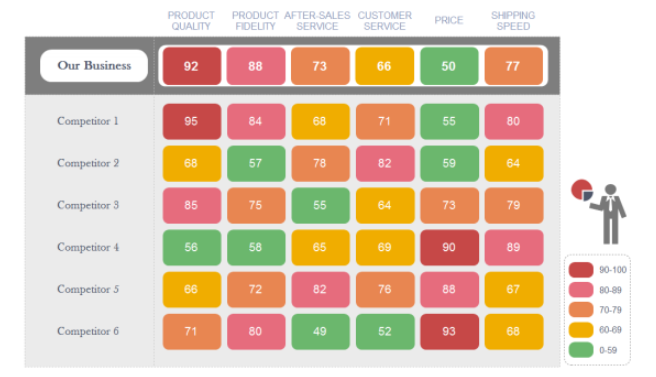
You might want to consider using a competitor analysis mapping tool like edraw by Wondershare to evaluate competitors in your niche. Source: edrawsoft.com
Develop a Thorough Competitor Analysis
Getting a good handle on who your blog competitors are is absolutely critical to your success—like “you won’t stand a chance of success if you don’t get this right” critical. A thorough competitor analysis is likely to reveal many opportunities you wouldn’t find elsewhere.
Here are crucial questions to address in this section of your plan:
- Who are my blog’s primary competitors?
- How are those competitors making money with their blogs?
- What topics are my competitors covering on their blogs?
- What are they doing well?
- What are they not doing so well?
- What are the “holes” in their strategies (in other words, opportunities to solve problems competitors aren’t addressing)?
- How big is their follow base on various social media channels?
- How much traffic does each competitor get? (Tip: use Alexa to get this information.)
When visiting competitors’ blogs, make sure you spend some time taking in the full experience. Pay attention to site design, overall vibe, use of visuals and videos, and other site features that make a favorable—as well as unfavorable—impression on you. Sometimes it’s those subtle details that add up to make a blog stand apart from the crowd.
3. Brand Identity Overview
The amount of detail you include in this section of your blog business plan will vary based on where you are in your blog development process. If you’re still in the conceptualization stage of your blog, you may not have your entire brand identity worked out yet.
At a minimum, include the following information in your Brand Identity Overview:
- A description of your brand’s personality—for example serious, casual, warm, or cutting-edge.
- What you want people to think of when they describe your blog’s brand.
- How you’ll reflect your blog’s core values and mission in your brand identity.
If possible, also include:
- Your logo and all brand marks
- Specific typography used in your brand
- Brand colors
- Brand taglines
- Iconography and other key graphics
Remember, your plan is not something you create and forget. If you don’t have all your brand identity components available to post in your plan now, go back and add them later.

Example of a brand identity board from Storenvy.com Source: storenvy.com
4. Blog Content Overview
Your blog needs an overall business plan, but it also needs a blog content strategy plan. In the Blog Content Overview, you’ll add a summary of your content strategy, discussing not only the types of content that will be created, but also how you intend to keep that quality high.
Here are the basics to add to your Blog Content Overview:
- Core blog categories: List the main topic categories that will be covered on your blog. For new blogs, three to five categories is recommended. You may also want to include the first 10 blog posts that you’ll create under each of these categories.
- Types of blog formats planned: Most blogs use a variety of blog formats, including how-to posts, interviews, reviews, case studies, guides, opinion posts, and behind-the-scenes posts.
- How you’ll create 10X content : You want to wow your reader so here’s your chance to explain how you’ll develop content that’s ten-times better than anything else available.
- How you plan to establish your expertise, authority, and trust (EAT) : Your blog posts will only appear in Google’s top search results if Google feels it meets its quality expectations.
- Posting frequency: Create a plan for how frequently you’ll post based on available time and resources.
Two of the biggest mistakes new bloggers make are to create content inconsistently and develop blog posts that are irrelevant to the blog audience. Consistency helps you build your following while developing your brand’s authority. Creating content focused exclusively on the needs of your niche provides a trustworthy experience for your audience as well as shows Google that you have deep expertise in your niche.
5. Blog Monetization Plan
If you want to turn your blog into a profitable business, you need a sound plan for making money. There are many ways to monetize a blog, though some produce better results than others.
Affiliate marketing and selling digital products and services top the list of best ways to make money blogging. You can get started with affiliate marketing from day one on your blog.
Digital products, such as e-books and online courses, may take longer to create, but the upside is that you get to keep all the profits. Seven-figure bloggers , including Michelle Schroeder-Gardner, Pat Flynn, and Brian Clark, all made the bulk of their fortunes through self-produced products and courses.
Other monetization techniques include:
- Selling ads directly or joining ad networks
- Sponsored posts
- Private memberships
- Events and Retreats
- Exclusive forums
- Physical products
- Digital downloads (e.g., checklists,templates, and planners)
- Offering coaching, consulting, or freelancing services
Some monetization strategies just aren’t practical for new blogs. For example, you won’t make any money through advertising when your blog has very little traffic coming to it. That’s why many bloggers list two different monetization strategies on their business plan. The first is a startup monetization plan. The second is a “next-step” monetization plan, which commences when blog traffic picks up.
In the Blog Monetization section of your plan, be sure to include specific tactics you plan to pursue. Set goals regarding when you’ll start each tactic as well as how much money you hope to generate from each method.

According to a study by Growth badger, the top tactic high-earning bloggers use to make money is affiliate marketing. Source: growthbadger.com
6. Blog Marketing & Promotion Strategies
You can create the best blog on the planet, but your results will be abysmal if no one knows you exist. Developing an effective blog marketing and promotion strategy is yet another key to your ultimate success.
While there are many ways to promote your blog, you want to focus on those that make the biggest difference, which include a strong launch strategy, social media marketing, search engine optimization, and email marketing. If your budget allows, you may also want to consider paid advertising.
Launch Strategy
What’s your plan for getting the word out about your blog when it’s brand-new? It’s wise to create a blog launch strategy much like you would develop a product launch strategy .
Types of marketing and promotional activities to pursue in the launch phase of your blog include:
- Tell your network about your new blog and ask them to share it with their networks
- Appear as a guest on popular podcasts
- Guest blog on other blogs (where you’ll get exposure for your blog)
- Create highly targeted, paid social media channels ads or Google ads
- Reach out to influencers in your niche
The toughest phase of any new blog is the launch period. You may find that it’s difficult to get traction at first, but be persistent in your efforts to get the word out about your blog; that persistence will be rewarded.
Social Media Marketing Strategy
Successful bloggers understand the power of using social media for driving both blog traffic and blog profits. The trick is to identify the best social media channels for your blog—that means developing your presence where your ideal audience can be found. Your social media marketing strategy summary should identify which social channels you plan to use, how you plan to use them, and what your top goals are for those efforts.
The lure of social media is enticing. I must warn you, though, that the hip-and-happening world of social media has a dark side where you could find yourself drained of time and money with little to nothing to show for your investments.
Posting pretty pictures and clever sayings alone won’t build your blog business. You need to develop a smart social media marketing strategy. Done right, a solid social plan can catapult your business to success. Done wrong, you could end up on the dark side that I just described.
My top success tip here is don’t try to be in all social channels all at once. Pick one or two social channels and focus on those until you have the time and resources to expand while still being effective.

View Template
Search Engine Optimization (SEO)Strategy
If you want to rank higher on Google —and trust me, you do, as that’s a key source of traffic for most bloggers—then you need to have a firm understanding of SEO and how to apply it to your blog. If you don’t have a solid grasp on SEO yet, start by reviewing SEO for Bloggers. Once you more fully understand SEO, you’ll be ready to develop an overview of your SEO strategy.
When summarizing your SEO goals on your business plan, be sure to include goals for both on-page and off-page SEO. On-page SEO includes using relevant keywords and providing valuable content for your readers. Off-page SEO includes other factors that impact page rank, the most important of which is getting highly credible sites to link to your blog.
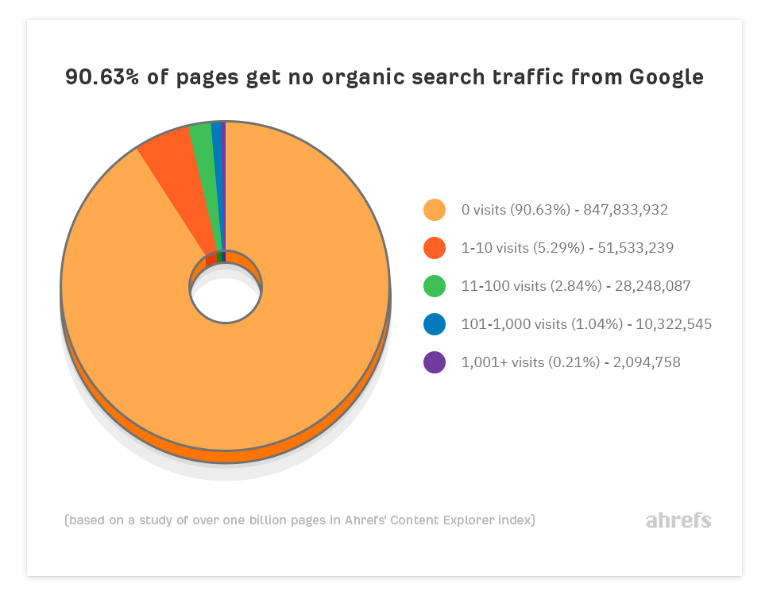
According to SEO solutions giant ahrefs, 90.63% of pages published on the internet receive no organic traffic from Google. Source: ahrefs.com
Email Marketing Strategy
If you’re serious about your blog business—and if you’ve read this far, I know you are—then you’ll want to get serious about building relationships with your blog audience. You can’t depend on them to come back to your blog again and again, much less make a purchase from you, without a little prompting on your part. That’s why every money-making blog needs a sound email marketing strategy.
When listing your email marketing plan summary on your business plan, include the following:
- Your email marketing service provider
- Planned email name capture campaigns
- Emailing frequency plan
- Email capture goals by volume and conversion rates
Some bloggers fail to capture emails on their blogs and this can be a disastrous mistake. You need to know who your audience is and have an avenue for reaching out to them. Social media is not enough—you need an email marketing plan.
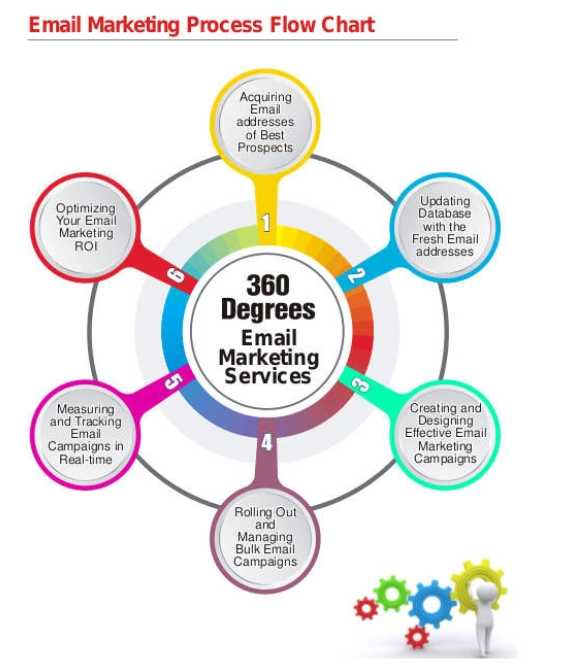
Email Marketing is a powerful way to boost blog results. Source: pioneermarketers.biz
Paid Advertising Strategy
Not all bloggers use paid advertising, though many top bloggers include paid advertising in their promotions mix. Successful bloggers are particularly drawn to paid ads on social media channels, but deploy those ads strategically.
When first starting out, you may want to purchase paid ads to attract traffic to your blog. The best use of paid ads over time, though, is to use them to generate leads for items you plan to sell, including e-books, online courses, and coaching or consulting services.
If you plan to use paid advertising in your business, be sure to include a summary of your strategy and goals—plus costs and sales forecasts from those ads—in your business plan.
Average Cost of Social Media Advertising by Platform
7. blog management & operations.
The Blog Management & Operations section of your business plan outlines how different tasks will be managed and executed. Here is where you describe who’s responsible for which tasks. You’ll also list key resources you plan to use in managing and operating your business.
When creating your summary for this section, make sure you address the following:
- Blog platform: State the blog platform you plan to use, hosting provider, and any other key tools and resources you’ll use to build your blog.
- Technical and design plan: If you’re working with an outside developer or designer, include a summary of your arrangement in your plan.
- Blog content planning and creation: Decide who’s going to develop content, how it will be proofed, and how new content will be added to your website. You’ll likely do the lion’s share of this work, but list your freelance or outsourcing plan if relevant.
- Accounting plan: All businesses need a way to track expenses and revenues. Describe how you’ll conduct these activities, listing software and any other external resources or professionals you plan to employ.
The purpose of the Blog Management and Operations section of your business plan is to make you think not only about what you plan to do with your blog, but also how you plan to manage the day-to-day operation of your business. This will help you avoid missed steps that bloggers who don’t plan ahead wrestle with on an ongoing basis.
One way you can make managing your blog easier is to choose the right blogging tools. To arm yourself with the resources and capabilities you need, choose from these best blogging tools .
8. Blog Costs & Revenues Forecast
Blogs can be built on a shoestring or an opulent budget, but one thing holds true in either case: if you don’t know what you’re spending, you won’t know whether you’re turning a profit. In this section of your blog plan, you’ll outline anticipated costs as well as forecast revenues.
Frankly, it’s a lot easier to come up with an accurate costs forecast than revenues forecasts. Still, you need a starting reference point so that’s why it’s important to include a basic outline of both projected costs and revenues on your initial business plan. You’ll revise your plan as your blog business grows at which time you’ll have more precise performance data from which to draw.
Specify Anticipated Blog Costs
Carefully consider how much money you plan to invest in your blog. Some investments will be a one-time purchase, others require an annual purchase, while still others will incur a monthly expense.
Most new bloggers—particularly those on a tight budget—begin by investing only in the essentials and acquire additional tools and resources as their businesses grow. Below is a list of costs you may encounter.
Typical Costs for a New Blog
Specify Revenue Projections
Every business plan includes revenue projections. To do this, outline which monetization methods you intend to use, when those methods will start earning revenue, and how much revenue you expect to earn. Be prepared: most bloggers earn little to no revenue in their first few months of blogging, but don’t let that discourage you. Everyone has to start somewhere.
Sample Revenue Projections
In the example above, the blogger forecasts that she’ll gross $50,216 in the first year. First year earnings are often modest, but if your business is successful, sales can grow nearly exponentially over time.
While the blogger in this example plans to use six different monetization methods, the lion’s share of her earnings is expected to come from coaching services. It’s not uncommon for one method to be the main driver of a blog’s profitability. I don’t recommend putting your eggs in one basket, though. The most successful bloggers use multiple monetization tactics to build their businesses.
Know Your Break-Even Point
Your break-even point is merely the point where your total revenues minus your total costs equals zero. That’s the point where you’re not making any money, but you’re not losing any, either. Include your projected break-even point in the Blogs and Revenues section of your business plan.
Add Your Projected Profits to Your Business Plan
Once you know your projected costs and revenues, you can calculate your profit forecast and add it to your business plan. Simply deduct all costs from all revenues to come up with your profit forecast.
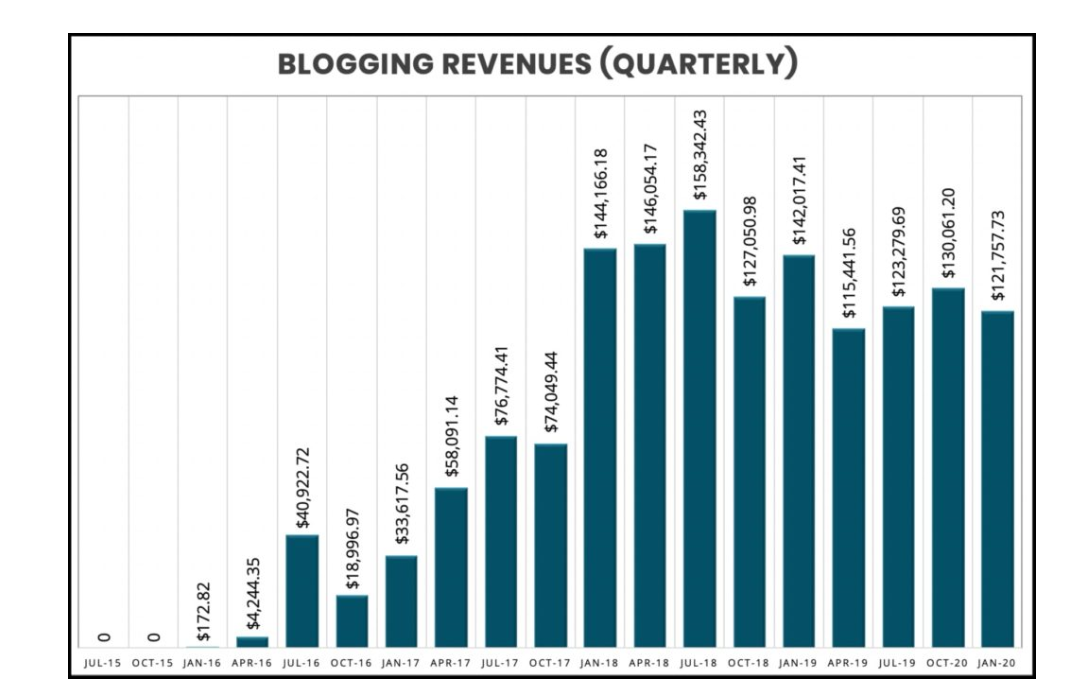
Most blogs start out slow and revenues build yet still fluctuate over time | Example here from the Create and Go Blog Income Report. Source: createandgo.com
9. Blog Performance Tracking & Analysis Plan
As a business owner, it’s imperative that you can identify efforts that drive results as well as those that underperform expectations. That’s why you’ll include a section on performance tracking and analysis in your overall blog business plan.
First, list the tools you will use to track and analyze blog performance such as Google Analytics and Google Search Console, as well as social media management and analytics tools like Keyhole and Hootsuite .
Next, consider the key performance indicators (KPIs) that drive your blog’s overall performance. Include a list of KPIs you plan to monitor regularly in the Blog Performance Tracking & Analysis section of your business plan.
Examples of KPIs that help you better understand blog performance:
- Overall blog visitor count
- Top viewed blog posts
- Total site backlinks and backlinks by individual posts
- Total page views
- Average number of page views per visitors
- Blog bounce rate
- Total post views
- Social share likes, follows, and engagement statistics
- Social media stats by social channel
- Number of sales leads
- Email list subscriber rates
- Conversion rates on a site and page level
- Source of lead acquisition
The better you are at finding and replicating results-producing activities on your blog, the more money you’ll make in your business. Simply put, don’t skimp on performance tracking and analytics. Having a strong plan upfront will yield stronger profits over the long run.
10. Blog Exit Strategy
Sadly, the primary exit strategy for most blogs today is abandonment. That’s because most bloggers don’t treat their blogs like a business. That’s not you. You understand the importance of pursuing your blog with a deliberate business-building strategy. That means you have more options available to you.
Just because you’re enthusiastic about starting a blog today doesn’t mean you want to run a blog for the rest of your life. When the time comes that you want to move on, your three main exit strategies are: 1) abandon it, 2) give it away, or 3) sell it. If your intention is to sell your blog at some point, it’s best to outline the fundamentals of your money-making exit strategy now.
Bottom Line
I know what it’s like to dream of creating your own blog business; it’s both exhilarating and a little bit scary. I assure you that if you put in the effort to create a solid business plan for your blog, you’ll give yourself a business advantage that most bloggers simply don’t have.
Take the time to create your own plan now using the template provided at the top of this post. The stronger your plan, the better your chances of creating a thriving business.
About the Author

Find Janette On LinkedIn
Janette Novak
Janette Novak is a business journalist who primarily writes about starting, marketing, and growing online businesses. As a seasoned business consultant, she helps entrepreneurs and business leaders develop winning marketing and business growth strategies. She previously served as the Executive Vice President & Chief Marketing Officer for an international leader in professional development and business training.
Join Fit Small Business
Sign up to receive more well-researched small business articles and topics in your inbox, personalized for you. Select the newsletters you’re interested in below.
MELYSSA GRIFFIN
SUCCESS STORIES
Student login, online courses, home about online courses the podcast success stories mastermind the blog, give back our values resources contact, take the money mindset quiz.
How to Create a Bangin’ Blog Business Plan (Workbook Included!)
Melyssa Griffin
Business Tips
Time to read.

This is my digital home, where I offer unfiltered advice and offerings about how to choose self expression, inner healing, ancient wisdom, and alignment as the pathway to real and lasting abundance.
I’m Melyssa Griffin
Hey there, sweet one..

MORE ABOUT ME
Popular categories, popular lately.
Grow, scale, and get the open book lessons I’ve learned along the way.
How Your Money Mindset is Sabotaging Your Business (And How to Fix It)
How to Let Go of the Status Quo to Live the Life You Were Meant For

Your Dream Life is on the Other Side of Your Scarcity Mindset
Why It’s So Damn Important to Heal Your Relationship With Money
TAKE THE QUIZ
Discover Your Money Magnetism Archetype
Because the best way to grow your business is from the inside out.
You know, just the stuff from me to you.
Case Studies
Facts, numbers, behind the scenes, and income reports. I’m sharing it all!
Over 20,000 online entrepreneurs have gone through my programs.
Sucess stories, see their stories.

Anjali
Profitable creator student.
PINFINITE GROWTH STUDENT

EMAIL LIST ACADEMY STUDENT
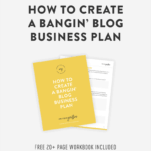
Get this: I did a recent survey of my audience (hey, like you!) and almost 75% of the people who responded said that they would love to turn their blog into a full-time business. Awesome, right?
Well, kind of.
Of everyone who responded, only about 15% said that they were actually making a living from their blog right now. So, what gives? What’s with all the people who yearn to do it compared to the small amount of people actually making it happen? For one, if you want to turn your blog into a business, you need to have a solid and strategic plan in place. That’s where today’s post comes into play. I’m going to show you how to create a Blog Business Plan , which is one of the first things you should do if you’re interested in one-day earning a full-time income from your blog.
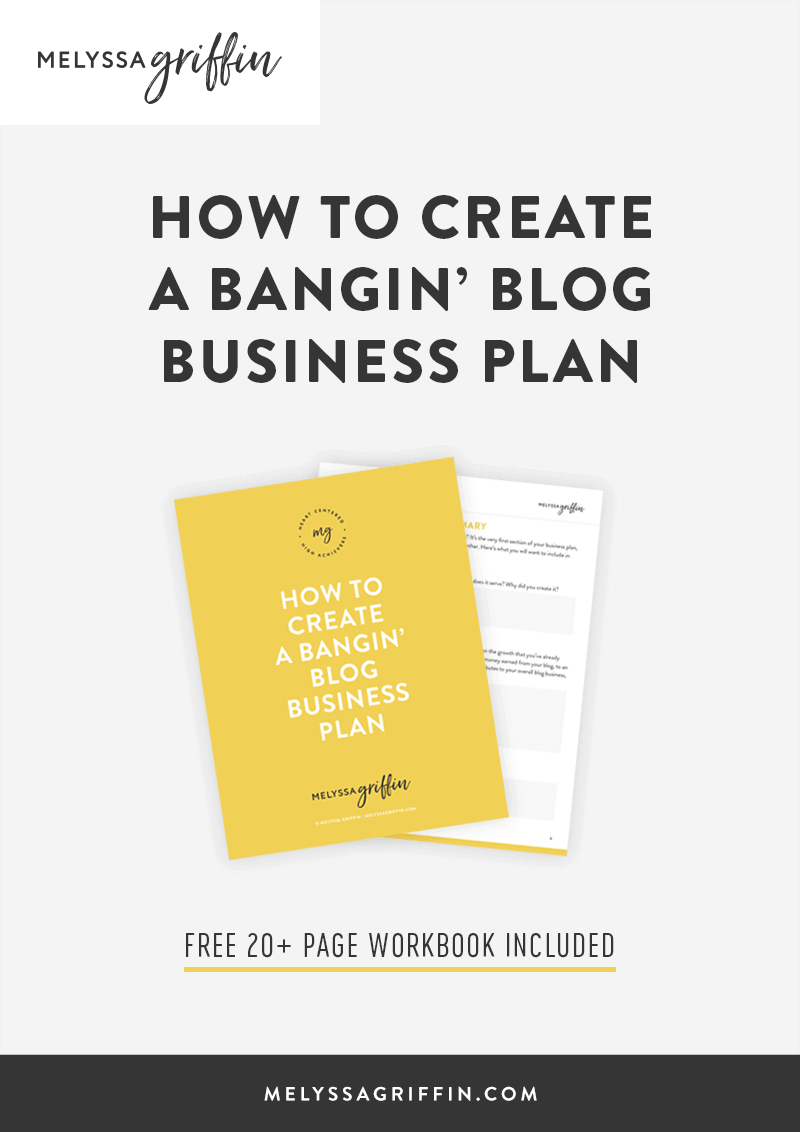
Also, if The Oprah Winfrey Show ever comes back for an encore, I’d love to see Oprah throw out blog businesses to her audience. You get to earn a full-time income from your blog! And YOU get to earn a full-time income from your blog! Make it happen, O.
Back to business here. 😉 Business plans, at their core, are used by nearly all profitable businesses in the world. Creating a business plan for your blog gives you the opportunity to nail down all of the specifics, do important research, and create strategies that will propel you forward. It is essentially a roadmap of your blog business, written with your audience in mind.
I’ve even got some free worksheets for you, that will guide you through this post and give you a free Blog Business Plan that you can download, print out, and keep forever. Sound good?
Download your free workbook here:
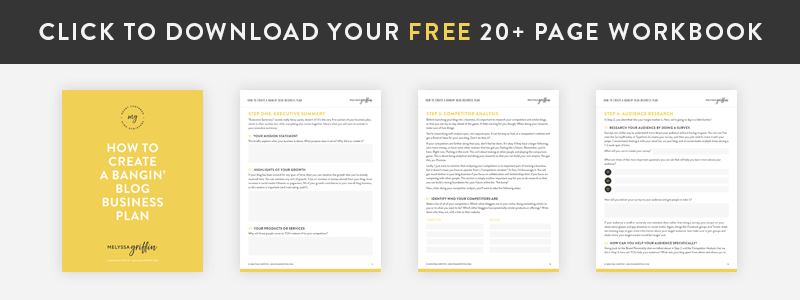
Now, we’re ready to dive in! Let’s do this, yo. Here are the key components of a Blog Business Plan:
Step 1: Executive Summary
“Executive Summary” sounds really fancy pants, doesn’t it? It’s the very first section of your business plan, which is often written last, after everything else comes together. Here’s what you will want to include in your executive summary:
1. Your Mission Statement
This briefly explains what your business is about. What purpose does it serve? Why did you create it?
2. Highlights of Your Growth
If your blog has been around for any span of time, then you can mention the growth that you’ve already received here. You can mention any sort of growth, from an increase in money earned from your blog, to an increase in social media followers or pageviews. All of your growth contributes to your overall blog business, so this section is important (and motivating, yeah?).
3. Your products or services.
You’ll have the chance to talk more about your products and services in a later section, but here, write a couple brief sentences about the monetization methods you are using or the ones you intend to use.
4. Finally, what are your goals?
Here, you get to do some planning for the future! Always exciting, yes? Where do you plan to take your blog business in the future? What are some holy-crap-I-want-to-accomplish-this-one-day goals you have?
HOLD UP. What if you’re brand new to blogging?
In that case, you may not be able to fill out some of the sections above as easily. Instead, focus on your experience and how YOU are able turn your blog into a business. You can think of it as almost like a cover letter — what kind of research have you done and experience do you have that will make your business succeed? After that, make sure to talk about your future goals. Anyone can plan for the future. 😀
Step 2: Blog Business Description
In this section, we’re going to tackle the organization and culture of your blog business. You may not feel like you have a “company culture” just yet, but you are certainly building a brand, which is nearly the same thing. *hair flip* Let’s do this.
1. What sets your blog apart from others?
Take some time to think about this one — why would someone read your blog over another, similar blog? In Step 4, we’re going to do some serious competitor analysis, but for now, just think about how you’re different and what you can do to separate yourself from your competition.
2. Who do you serve?
Your Blog Business Plan basically revolves around your target market. Actually, just about everything that you do for your blog should revolve around them! Without an audience, it will be impossible to grow a community around your blog or turn it into a full-time business. So, get really clear about who you serve.
- How old are they?
- What do they do for a living?
- What brought them to your blog?
- How can you help them?
- What are their future goals or aspirations?
- What are their hobbies?
Keep in mind, even if you are new to blogging and don’t have much of an audience to analyze, you can absolutely still take part in this section. Truthfully, blogging is not about creating content and trying to figure out who is reading it. It’s the opposite — deciding who you want to serve and then creating content that helps that specific type of person. Get it? 😉
Related: How to Choose a Focus for Your Blog (And Why It’s the Most Important Thing You’ll Do As a Blogger)
3. What is your “company culture” or brand personality?
You may not be running a business casual office for your blog, but you still have a brand personality and culture to uphold.
- When people interact with you or your blog, what do you want them to feel?
- What words would you use to describe your blog’s personality?
- What purpose does your blog serve?
The answers to these questions will help to analyze what your brand personality is. Developing a true personality for your blog means that you are consistent. It’s okay to try on different hats at first, but the most successful blogs are ones that have a distinct personality (perhaps similar to your own personality, you little blog hustler, you!).
4. What is the organizational structure of your blog business?
This may not be a concern for you at the moment, but in the future you may want to turn your blog into a recognized “corporation,” like an LLC (Limited Liability Corporation). If you are currently running a blog and accepting money as a blogger, then you obviously need to file taxes on that income. However, as you work with more clients and customers, turning your blog biz into an LLC or Incorporation (Inc) can protect your income and business from things like lawsuits.
If you’re just getting started, I would recommend waiting to turn your blog into an LLC or Inc unless you are in some sort of high-risk blogging industry. *Casually puts on sunglasses like and walks off into the sunset.* When I started my first business through my blog, it took me about a year before I turned it into an LLC. If you are the only employee and choose not to create an LLC or Incorporation, then you are simply known as a “sole proprietor,” which is totally legal and fuss-free.
Related: How to File Taxes as a Blogger
Step 3: Competitor Analysis
Before launching your blog into a business, it’s important to research your competitors and similar blogs, so that you can try to stay ahead of the game. A little warning for you though: When doing your research, make sure of two things:
- You’re researching with analysis eyes, not copycat eyes. It can be easy to look at a competitor’s website and get a flood of ideas for your own blog. Don’t do that, k?
- If your competitors are farther along than you, don’t feel let down. It’s okay if they have a larger following, earn more money, or have some other statistic that has got you feeling like a failure. Remember, you’re here. Right now. Putting in the work. This isn’t about looking at other people and playing the comparison game. This is about being analytical and doing your research so that you can build your own empire. You got this, yo. Promise.
Lastly, I just want to mention that analyzing your competitors is an important part of starting a business, but it doesn’t mean you have to operate from a “competition mindset.” In fact, I’d discourage it. You will get much farther in your blog business if you focus on collaboration and relationships than if you focus on competing with other people. This section is simply another important way for you to do research so that you can build a strong foundation for your future online biz. *fist bump*
Now, when doing your competitor analysis, you’ll want to take the following steps:
1. Identify who your competitors are.
Make a list of all of your competitors. Which other bloggers are in your niche, doing something similar to you or to what you want to do? Which other bloggers have potentially similar products or offerings? Write down who they are, with a link to their website.
Now, if you’re brand new to blogging, then you may not know who your competitors are. Here are a few ways to find them:
- By being active on social media. The more active you are on social media (so long as you’re sharing content for your niche), the more you’ll naturally discover who your potential competitors are. Observe. See who people are talking about, sharing content from, and engaging with.
- By joining Facebook groups. Facebook groups are a fabulous place to learn more about your market and competition. Again, observe in Facebook groups. You’re obviously welcomed (and encouraged) to participate, but make sure that you are also observing what people say. Who do they mention? You can also start a new thread in a Facebook group (so long as it’s not against the group rules) to ask who people’s inspirations are in _____ niche. That should deliver some stellar results!
- By searching for relevant keywords on Google and seeing what pops up. This is one of the easiest strategies. Think of a few “keywords” to describe your blog or niche. For example, if you write about hand-lettering, then some of your keywords might be “hand-letting for beginners” or “best calligraphy tools.” If you type your keywords into Google or Pinterest, whose content pops up first? These may very well be some of your competitors.
2. Research your competitors’ strategies and goals.
Now that you know who your competition is, take some time to research their strategies and goals. Go through their websites and social media accounts.
- What do they promote and how do they promote it?
- Are there any strategies that many of your competitors seem to use (for example, are most of them hosting webinars)?
- What sets them apart from the other competitors on your list?
- What goals do they have? Of course, you may not know the answer to this, but based on your research, what do you feel they are trying to achieve?
3. Know your competitors’ price points and ranges for their products.
If your competition has any products for sale, then write down what the price ranges are for those products. This will give you an overview of how much is typical for a product you may create one day and what your target audience is used to paying.
4. Create a list of your competitors’ strengths and weaknesses.
Finally, after reviewing their websites, strategies, and offerings, you’ll probably have a good idea about what exactly “exists” in your niche and how people are creating their businesses and blog communities. Now it’s time to dig a little deeper. Choose 3-5 of your competitors and make a list of some of their strengths and weaknesses. What do they excel at and what can they improve? And how can you use that knowledge to craft your own, well-rounded strategy?
Again, the competitor analysis is a great way to get more tuned in to the trends and strategies that are alive and kickin’ in your niche.
After you’ve done your competitor analysis? Don’t visit your competitors’ sites again.
Yup. Seriously serious. You will not reach your goals if you spend your time checking in on what everyone else is doing and trying to replicate it. So, do your research, decide what works for you, and then create your own path.
Step 4: Audience Research
In Step 2, you identified who your target market is. Now, we’re going to dig in a little further!
1. Research your audience by doing a survey.
Surveys are a killer way to understand more about your audience without having to guess. You can use free sites like SurveyMonkey or Typeform to create your survey, and then you just need to share it with your peeps. I recommend sharing it with your email list, on your blog, and on social media multiple times during a 1-2 week span of time.
- What will you use to create your survey?
- What are three of the most important questions you can ask that will help you learn more about your audience?
- How will you deliver your survey to your audience and get people to take it?
If your audience is small or currently non-existent, then rather than doing a survey, you can put on your observation glasses and pay attention on social media. Again, things like Facebook groups and Twitter chats are amazing ways to gain more information about your target audience. Just make sure to join groups and chats where your target market would be hangin’ out.
2. How can you help your audience specifically?
Going back to the Brand Personality that we talked about in Step 2 and the Competitor Analysis that we did in Step 3, how can YOU help your audience? What sets your blog apart from others and allows you to help your peeps in a different way? You don’t need to reinvent the wheel here! You can use many of the same strategies that others do, but it’s just about adding your own flair and personality to the things you create.
Step 5: Building Community
Before you launch a product through your blog, it’s essential to first grow your community and audience. If you want to grow a blog business, then you can buy all the e-courses and books you’d like. But if they only give you strategies for creating and launching product, without strategies for first building a strong audience and growing your traffic, then it’s just unlikely you’ll get the same results. For a successful blog, you totally need both: a community and a product.
1. Social media
One of the best ways to build community is by harnessing the power of social media. Social media is a ridiculously helpful space for growing your tribe and increasing your traffic. You can focus on Pinterest for traffic growth , and Twitter/Facebook/Instagram for finding your potential audience members and engaging with them.
So, for your blog business plan, it’s important to create your social media strategy.
- On which platforms will you put the most emphasis?
- Where does your target market hang out the most?
- What strategies will you use on each platform in order to grow your audience and community?
- How will you find your target audience on social media?
Related: 6 Ways to Create a More Engaged Audience on Instagram
2. Email list
In addition to partying on social media, you also want to put a large focus on your email list. Not only will your email list be essential for selling your products, but it will also be an incredible medium for connecting with your audience.
- Which strategies will you use to grow your email list?
- How often will you communicate with your list?
- Which types of things will you send your email list?
- What will you use for your email list’s lead magnet ?
Related: 8 Things You Can Send to Your Email List (For the Blogger Who Has No Idea What to Say)
3. Humanizing your brand
If you’re going to build a true blog business and community, you have to “humanize your brand.” In other words, what steps will you take so that your audience feels connected to you and can relate to you? Remember, people don’t buy from faceless corporations; they buy from people.
Related: How to Prime and Grow Your Audience for Your First Info Product
Step 6: Your Service or Product
Woop woop! It’s time to start planning your monetization strategies. Exciting, right? Now’s your chance to decide how you will turn your blog into a biz. Will you launch services? Will you create an e-product? Here are some steps to get you started.
1. What do/will you sell?
What is a product or service that would help your target market or is something that you know they need (because you did a survey or observed them!)?
Don’t be afraid to get a little detailed here.
- Will it be an e-course?
- How many modules will it have?
- Which topics will it cover?
- How much do you plan to sell it for?
- When will you launch it?
- Will it be a set of services?
- What kind of service packages will you offer?
Related: How to Create and Prepare Your First E-Product
2. How does your product or service benefit your peeps?
Remember, your blog business plan is all about serving your audience . They are the people who can turn your blog into a community and a business, so we want to serve them! Think critically about the monetization method you chose in the previous step…how will that product or service impact the lives of your tribe members? Why do they need or want it?
3. How is your product or service different from what your competitors are selling?
Lastly, go back to your competitor research and take a look at what your competitors are selling and promoting. How is your offering different, or how can you make it different? Is there anything you could add to your offering that would make it feel even more valuable than whatever else is out there?
Step 7: Marketing and Sales Strategy
Holy moly. You are such a trooper for making it this far. Who knew planning a business could be so much work? 😉 But really, you are putting in the effort right now and I am straight up impressed. Finally, we’re going to talk about your marketing and sales strategy, because once you create your products or services, you actually need to promote them! Let’s get started.
1. How will you market your products, services, and blog?
Take a moment to write down the methods that you will use to market your products, services, and blog. Will you use Facebook ads, schedule tweets, create a robust Pinterest strategy ? Write down all of the methods you’ll employ when promoting and marketing your content.
If you’re looking for ways to market your e-product or service, then check out this post where I share a variety of ways to market and launch your offerings.
2. How long will you spend on marketing and promotion per day?
We’re all busy, right? But turning your blog into a business does take some time. Make sure you analyze how much time you’ll realistically be able to spend on marketing and promotion each day and week. You may need to make some sacrifices or move your schedule around, but it will be worth it when you sell your first e-product and realize you’ve got what it takes to create your own business. 🙂
3. If you haven’t started your blog, what strategies will you use to launch it?
Now, if you’re a new blogger, you may need to start by creating a “launch” strategy specifically for your blog! How will your blog come into existence? What are some things you can do to launch your blog with a bang and get people excited about what you create and do?
One simple technique is to launch your blog with 5-10 pre-published (and freakin’ awesome) posts. If you only have one or two posts for your new visitors to browse during your launch, then they might not find anything that’s relevant to them. Creating multiple pieces of content gives them the chance to browse your site for a longer period of time, find something that interests them, and potentially subscribe and get hooked on your brand.
4. What is your growth strategy? In other words, what techniques will you use to continue growing your audience and income?
Finally (finally!), you want to come up with some strategies that you can use to grow your brand. Imagine that your blog has been around for a few months or even years (maybe it has!) — what types of marketing and promotion strategies will you use to keep your growth on the up and up? Will you do monthly webinars? Biweekly guest posts on bigger sites? Hire an assistant? Launch a new course every quarter? Think about some things that you can add to your tool belt, which will keep your blog business growing and thriving.
MAJOR high five to you, friend. I can tell that you’re here because you’re truly ready to take your blog to a new level by turning it into a community and launching your very own blog business. Doing the same for my own blog (this one you’re reading!), was one of the absolute best decisions of my life.
What is something you struggle with in terms of turning your blog into a community and launching your own products? Let’s chat down below!
p.s. If you’re eager to turn your blog into a business, then I’ve got something BIG coming for you at the end of November. Make sure you sign up for the free Blog Business Plan Worksheets here so that you’re notified when more details are released!
Keep Reading

I’m Retiring

5 Steps to Hiring Your First Virtual Assistant

3 Ways To Set Goals That Actually Work

3 Reasons You’re Not Making More Money (And What to Do Instead)

The REAL Reason Why I Created an Email List 6 Years Ago

How to Make Time To Grow Your Email List

Why NOT Being an Expert Can Help You Grow Your Email List

How She Grew an Email List of 5,000 Subscribers and Had a $20,000 Course Launch (In a Tiny Niche!)

What You Need to Know If You’re Trying to Grow Your Email List

5 Steps to Build Your Email List, Engage Your Subscribers, and Make Sales With Email Marketing

5 Reasons You Feel Unmotivated (and How to Get Your Passion Back)

5 Ways To Get Out of a Work-from-Home Rut
Back to blog home.
My name is Melyssa Griffin
I believe that an unstoppable mindset can be your #1 business tactic. So, my job is to lead you back to yourself and to help you reprogram the limiting beliefs and patterns that are keeping you small.
Around these parts, I share my best business secrets, as well as help you cultivate a life of true freedom, purpose, and fun. I’m also big on bear hugs, anything unconventional and creative, and teaching people like you how to live an abundant and limitless life. Let’s get weird.
I'M GLAD YOU'RE HERE

YOU MIGHT HAVE SEEN MY NAME:

How She Grew an Email List of 5,000 Subscribers and Had a $20,000 Course Launch (In a Tiny Niche!)
If you’ve been in my sphere for awhile now, you know that one of the things I am most passionate about is community and helping others reach their potential by going after their dreams...

read my faves!
5 Steps to Build Your Email List, Engage Your Subscribers, and Make Sales With Email Marketing
6 things you need to know about coming up with a profitable e-course idea, read the post.
Limitless Life™ Podcast
The Top 100 “personal development for entrepreneurs” podcast that teaches you how to grow your business by reprogramming the patterns and beliefs that keep you stuck.
Tell me more, how to embrace ease & flow in your life with zakia haughton (episode 112).

The Sacred Power of Cacao with Christine Hernandez (episode 111)

Uplevel Your Life with Hypnosis with Juliet C. Obodo (episode 110)

LIMITLESS LIFE™ HAS 700+ 5-STAR REVIEWS!
LISTEN ON SPOTIFY
Listen on itunes, listen on stitcher, the podcast.
“I can’t recommend this podcast and Melyssa enough. I pivoted my business and I’m now coaching, creating courses, and living my limitless life! The words you’ll hear will change your life!”
“Loved how raw and heart-centered it was, every few seconds I would nod my head because it resonated so much. Highly recommend if you’re looking for more purpose, passion and well-being in your life!”
- YunzheZhou
“A daily reminder towards greatness... Listening to these podcast episodes are the highlight of my day. It’s my rock and anchor in a chaotic storm of trying to better my life. So so thankful for it!”
- Rosenthorn
Unapologetic Results for Your Business + Mindset
Over 20,000 digital entrepreneurs from around the world have taken my top-rated online courses to step into their next level of leadership and cash money. Ready to grow?
Learn with melyssa.

My Courses:

What’s stopping you from making more money, reaching your goals, and bringing your big dreams to life? It’s probably your relationship with money. Answer a few key questions and you’ll get instant access to a customized path to step into more abundance and ease.

WHAT'S YOUR MONEY MAGNETISM ARCHETYPE?
Hey! I’m Melyssa.
I’m a former school teacher turned entrepreneur who believes that the best way to grow a thriving business is to heal the leader behind the scenes (that’s you!). Together, we’ll reprogram the limiting beliefs and patterns that are keeping you stuck so that you can create unapologetic success and abundance.
Home about our values give back contact free quiz, limitless life podcast, join over 200,000 other digital entrepreneurs and get access to my free library of workbooks, resources, and guides for online business owners..
ready to grow your business?
FIND ME ON INSTAGRAM
Heck yes, i want access, my facebook group.
@melyssa_griffin
BACK TO TOP
Online courses podcast mastermind free resources success stories the blog, come hang out on instagram, copyright the nectar collective, llc | terms | privacy policy | disclaimer | site credit.
- The Ultimate Guide to Creating a Blog Business Plan…
The Ultimate Guide to Creating a Blog Business Plan (Updated)

What sets apart the top-tier blogs in every industry and the blogs most people run? What's the difference between success and mediocrity? As often as anything, the answer is a business plan.
When many people start a blog, they don't have a goal, plan, or drive to succeed. They might know some of the basics of how a blog can be a business. They might know some of the elements of SEO, something about marketing, maybe they've read about maintaining a schedule, and an assortment of other tips and tricks for blogging success.
Few people realize that developing and adhering to a business plan is critical if you want your blog to succeed. You can't simply write some content every week and expect to compete on par with industry giants. Even if you keep at it for years, you might never make a break-even point, let alone a successful brand.
What is a business plan? It is many things.
- A business plan is a roadmap. It guides your business from A-B-C and beyond, with each milestone marked as a tangible goal or achievement.
- A business plan is a tangible document. It's something you can open up and reference to ensure that you're keeping your business on track.
- A business plan is for accountability. You have tangible goals and a roadmap to achieving them. If you fall behind or veer off track, your business plan holds you accountable.
- A business plan is priorities. It's a document that helps you guide your efforts to know what to do next and where to spend your energy.
- A business plan is a prediction. No business has smooth, even growth. There will always be ups and downs, challenges and problems to solve along the way. A business plan helps you predict what and when those challenges may occur.
How do you, a newcomer to blogging (and someone using a blog for their business), go about creating a business plan for a blog?
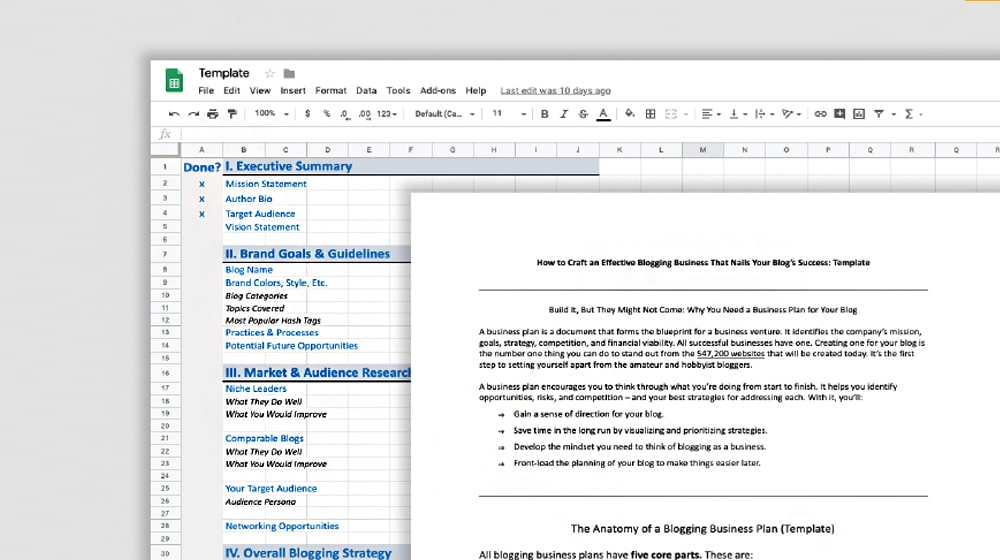
Business plans vary as widely as business owners do. Some businesses run on a single-page document of outlines and a bunch of information in the CEO's head. Others have comprehensive living documents filled to the brim with details, guiding every move the business makes. Most are somewhere in between.
Before you can start making a business plan, you need to know what goes into one. What I've done here is pared down many of the business plan examples I've seen online and added some missing steps to create something that is "middle of the road," so to speak. It's not the most comprehensive and detailed business plan, but neither is it the simplest. You can feel free to pick and choose what ends up being the most useful to you.
For example, if you're starting a blog, how important is setting up a members-only area, subscription service, or affiliate account? In your first month, it's not very important; your first goal is to get traffic because monetization strategies aren't actualized until you have some.
Blog/Brand/Executive Summary
First up, we have the executive summary. While this might sound fancy and over-the-top for a one-person operation like a new blog, it's a pretty critical part of a business plan.
What is it?

Simply put, it's your elevator pitch, your vision, your reminder to yourself of what your blog is and what purpose it serves. It can include elements such as:
- A mission statement. Why did you make your blog? What is your goal? What do you want your blog to look like when it's successful?
- A growth summary. If you're starting a blog from scratch, you don't have milestones yet - you can ignore this for now. If your site has been around for a while, this is where you chart out your existing growth milestones. When did you first start to see organic traffic? When did you make your first sale? You can use this as a motivating force, too.
- A monetization summary. How do you want to monetize your blog? You don't need to go into great detail here; note down the methods you want to use. Display ads, affiliate links, sponsored content, product sales, services, consulting; there are tons of monetization options, and this is where you list what you want to use (and what you don't).
- A goals list. Later on, you can talk about SMART goals, but you're just listing your pie-in-the-sky goals here. Do you want to make a living? Do you want to get links and citations from major publications? Do you want to network with your favorite bloggers in the industry? This list is where you outline the goals that make you think "I made it" when you achieve them.
Remember, none of this needs to go into great detail. It's an overview, a summary, and it doesn't need to be anything more. That's what your business plan is for; remember, this plan is for your blog.
Your Unique Value
Next up, you need to dig deep and consider what you have to offer to the world via your blog. What are you bringing to the table that makes people want to follow you, read your content, partake in your monetization strategies, and otherwise make your business a success?

Again, we're still thinking in more general terms, not deep specifics. You can dig into the specifics later when you do competitive analysis and take a look at the niche and industry you're entering. So, some ideas to get you started:
- You offer unique insight and information about your topic based on your own experience.
- You offer a look at a newcomer's journey from start to finish that others can use as an example.
- You have a new and innovative product you want to bring to market.
- You can offer an existing product presented in a new and exciting way or for a lower price or higher quality than what already exists.
- You have a unique perspective on your industry based on your demographics, past experiences, or situation.
These ideas exist to get you started as much as anything. Some of these apply more to businesses that want to sell a product and use a blog to do it. People who want to be bloggers and make a living on the side might not have goods in mind. There are many potential unique selling points, so feel free to dig deeper into the subject with posts like this:
Competitive Analysis
What is your niche? Are you starting a food blog? A marketing blog? A blog about sports? Music? Any topic you can imagine is something you can write a blog about, so long as you have the expertise to fuel it, or at the very least the interest to learn. Hobbies, careers, it's all viable. There are people with incredible, insightful, and fascinating blogs about organic chemistry, nitty-gritty marketing subjects, and other narrow niches.
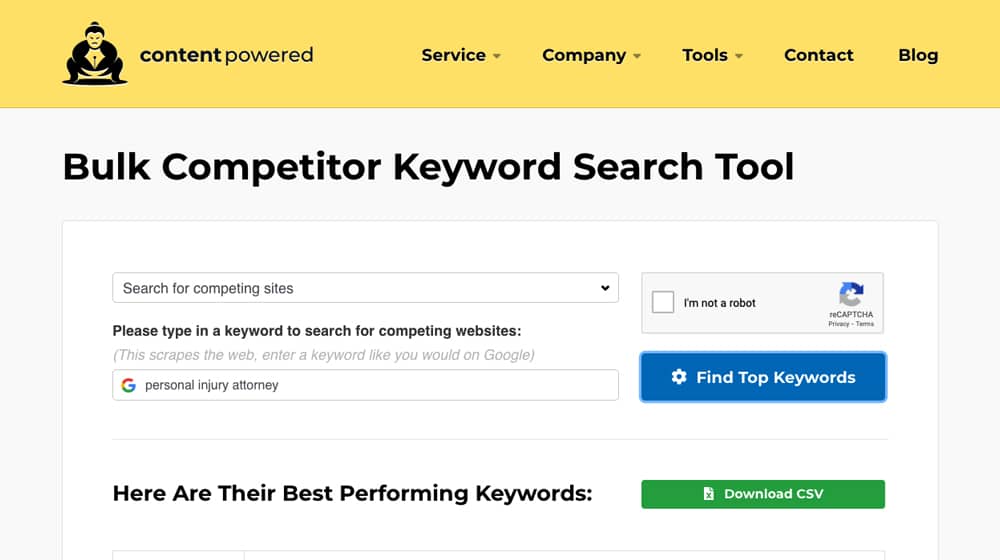
The key isn't just knowing what your niche is; it's about knowing who else is competing in your industry. Performing detailed competitor analysis allows you to build an awareness of the field and figure out who you're competing with and aspiring to be.
Before I dig into how to do this, it's worth mentioning that this can change over time. Your focus and direction within your niche can change in response to your interests changing, the interests of your audience changing, and the industry as a whole changing. Your competitor analysis is, as I mentioned up above, a living document. Things change; you need to change with them.
The actual process for competitive analysis can be somewhat complicated. I'm going to simplify it a bit here under the assumption that you're just starting with a blog and business plan, so you might not have a lot of information when you first start. Once you grow and begin to find your feet, you'll be able to refine this. Competitive analysis is something you should often do because competitors come and go.
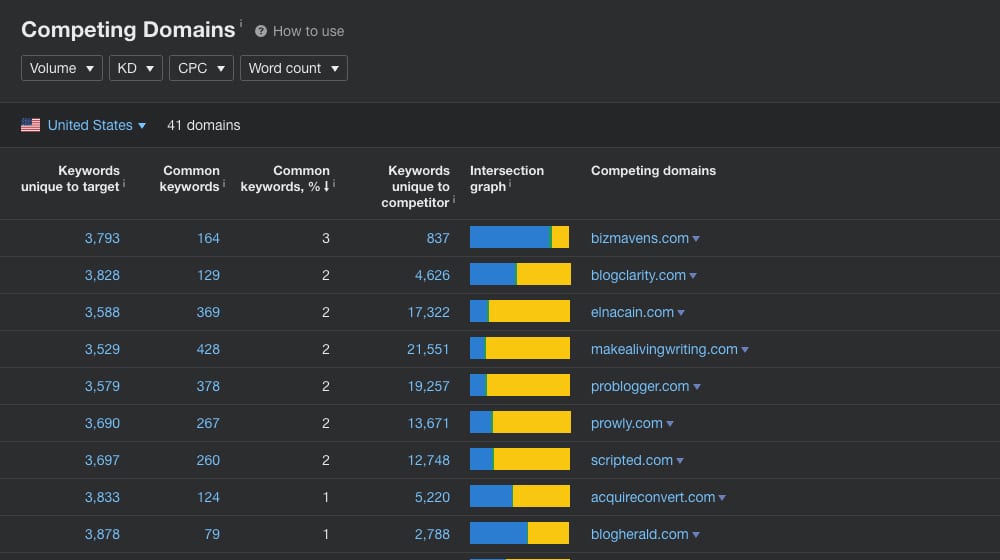
If you want a more refined look, HubSpot has a great guide here:
In short, you need to:
1. Figure out who your competitors are. Identify as many other blogs in your niche as you can, from other small-scale blogs to the giants in the industry.
2. Figure out the scale of your competitors. Rank them; ones who are smaller than you, ones on par with you, larger than you, and as many tiers larger as you feel like dividing them.
3. Pin down information about your closest competitors. What do they do to monetize? How often do they produce new content, and of what quality level? How do they advertise their blog and their products? What sort of holes in their strategy can you identify and potentially be able to exploit?
4. What kind of audience is the competitor targeting, and how engaged are they?
If you're starting with a brand new marketing blog, don't make the mistake of digging into analysis for "competitors" that aren't your competition. For example, you're more likely to analyze me than you are HubSpot, Neil Patel, or Moz.
We create blog content that converts - not just for ourselves, but for our clients, too.
We pick blog topics like hedge funds pick stocks. Then, we create articles that are 10x better to earn the top spot.
Content marketing has two ingredients - content and marketing. We've earned our black belts in both.
Audience Definition
Armed with information about your competitors, niche, and industry, you can now start to do audience definition. If possible, you're going to want to build up a list of audience personas . These are sort of like "character sheets" for archetypal examples of a blog reader. Who are you going to try to target with your blog? The single mom, the college student, the theater performer, and so on.
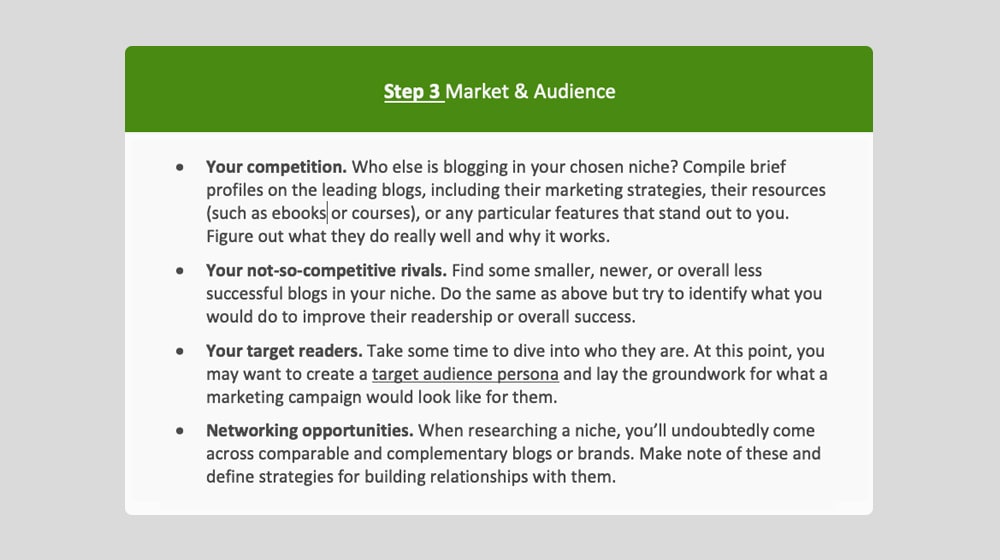
What sort of information is helpful?
- Different age groups like other kinds of content and have different types of interests. Older people might like a more formalized language, for example, and might not get video game references.
- You want to relate to your audience, so knowing the kinds of careers they have can help. A food blog creating elaborate, time-consuming recipes won't resonate with an audience of people who have 10 minutes to cook dinner.
- Understand your visitor's goals. Why is this person visiting your site? Do they want to be educated, need a tutorial for a task, or are they just interested in the subject and want to read about it?
- Other demographics. Gender, sexual identity, general location, income level, marital status; again, all of these help you relate and resonate with your audience and fulfill your reader's needs in a way that keeps them coming back.
Your personas can be as elaborate or as simple as you want to make them. They're also just guesswork, at least initially. If you don't have traffic, you don't have an actual audience to measure, after all. These guesses are just examples of who you want to target. Then, once you have some traffic, you can see who you're attracting and adjust accordingly.
Content Production Pipeline
In my mind, the most critical part of a business plan is establishing a content production pipeline for your blog content. From start to finish, you should have a defined methodology for creating your content.
The number one most critical aspect of content production is topic ideation. You can spend a decade writing content in a niche, but if you're writing random topics that come to mind, you might never resonate with other people, never get picked up by Google, and never have any success.

Every good blog post needs to recognize three things. First, it needs to understand the topic it's covering. Second, it needs to know the audience it's targeting. Third, it needs to grasp the intent of the audience. All three of these combine to create a good blog post.
The audience and their intent can define one subject. For example, let's take a food blog's post about dinner. Your topic is, in general, dinner meals.
- An audience of nutritionists might have questions about the importance of eating dinner, what nutritional profiles it should fit, and how different diets compare.
- An audience of food lovers might be interested in elaborate recipes with stunning presentations that they can replicate or enjoy vicariously.
- An audience of busy working adults might be interested in quick and easy dinner recipes they can follow to make a quick family meal in under an hour.
Thus, by learning who the audience is and what they want, you can shape your content to improve engagement and user experience.
Should it be educational? Should it be deep or superficial? Should it be instructive? All of these have their roles, which is why you need to know what you're producing.
For your blog to perform, it's also necessary for you to focus on competitive topic analysis. You're not the only one covering this topic and probably not the only one targeting this audience with it. How do other blogs compare? Are they shorter, lower-quality posts or longer, high-quality posts? Are they deep or broad? Are the sites that are surfacing small or massive? Did they leave anything out, or can you expand on this topic and create a much better version?
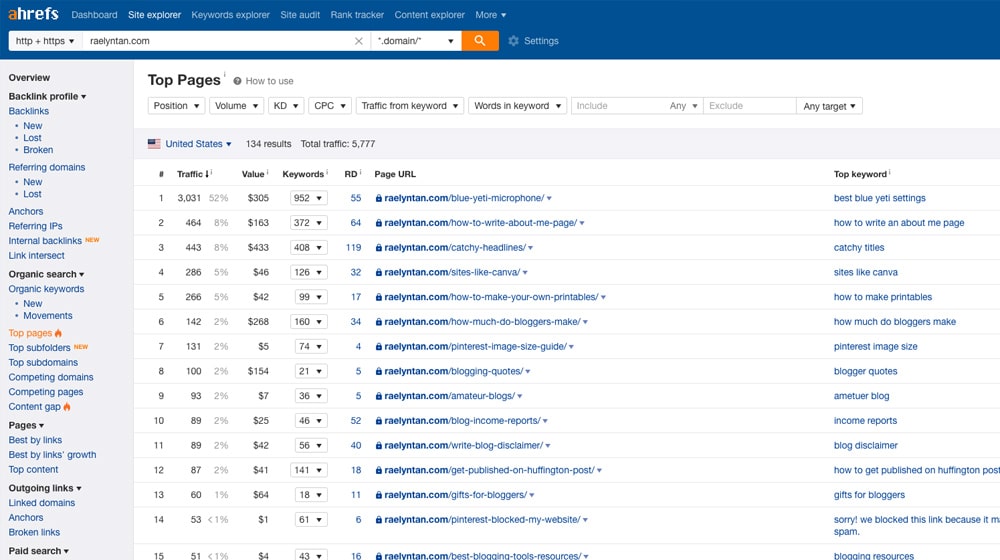
You can also analyze the core keyword of the topic. Specifically, you're looking for subjects that strike the right balance between search volume and competition. A blog topic with too much competition will be impossible to rank for, and a blog post that doesn't get any organic traffic is a failure in my eyes. A topic with too little search volume will get you little or no traffic, even if you rank #1 for it. It would help if you found something in the middle.
From there, your content production pipeline gets into the actual details of production. Here's my general process:
- Begin with topic ideation, as mentioned above.
- Do the research and generate a compelling headline.
- Create an outline for the blog post .
- Flesh out the outline, rearrange sections into a logical order and write the post.
- Edit the post for spelling, grammar, factual information, consistency, and logical flow.
- Add formatting; headings , bold/italics/underlines, symbols, lists, etc.
- Create images. All good blog posts need solid pictures and preferably unique ones.
- Review the post for SEO factors, such as keyword usage, links to other blog posts internal and external, calls to action, and so on .
- Publish the post, or schedule it as part of a backlog for a consistent schedule.
At any given time, I have articles in nearly every stage of this pipeline. I can start and stop as necessary by establishing a defined calendar and maintaining a constant production flow.
A defined pipeline like this also allows you to offload some work to freelancers, contractors, or employees as you grow. For example, you might do your topic ideation and outlining and then hand off the actual writing to a writer, do the editing and formatting, hire someone for graphic design, and do your SEO review and publishing.
Promotion Strategy
Blogs don't work on their own. There's no Field of Dreams-Esque "If you build it, they will come" effect going on. No, the internet is far too packed with content for that to work these days. Today, you need to promote your blog, which means developing a promotion strategy. Your blog business plan should include your primary, secondary, and tertiary promotion strategies in organic and paid methods.
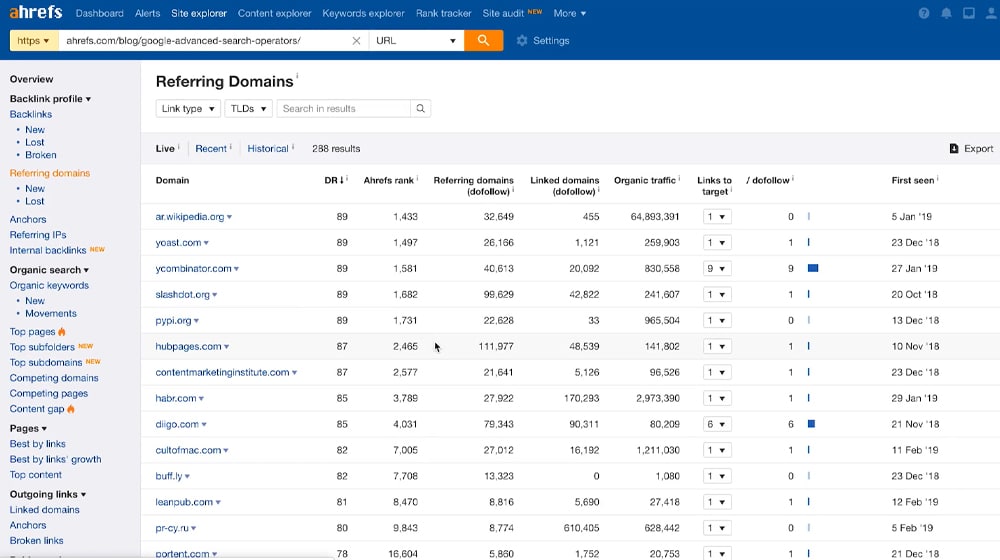
I'm not going to go too deep into specifics about promotion, but here are strategies you can use for ideas and research more into how to do them effectively.
- Paid marketing. Paid ads, sponsorships, paid promotion on social networks; spending money gets you results, as long as you have the money to spend.
- Attract the attention of Google. You want your articles to get ranked for their respective topics and keywords to earn some organic traffic. This one is essential for every blog and the real reason most people start a blog in the first place.
- Link building . One of the core pillars of SEO is links pointing to you from other relevant sites. Getting those links can be complicated and is an industry in and of itself.
- Influencer marketing. This strategy involves networking with influential content creators in your niche, particularly those with active social network audiences.
- Social media posting and sharing. Facebook, Twitter, Pinterest, Instagram, LinkedIn, Reddit, Imgur, YouTube; any relevant social network can be a source of traffic when you promote yourself using the site.
- Content repurposing. A blog post doesn't need to stay a blog post. You can use it as a basis for other forms of content , including videos, podcasts, infographics, and more.
- Newsletter marketing. Building up a newsletter and actively using it is a powerful technique that many bloggers ignore for far too long.
Promoting your content is how you grow. Without it, you're just howling into the void.
Timeline Estimates
Another element of a blog business plan is establishing a timeline. Timelines are flexible, but you can estimate how your blog will grow and set goals to reach specific milestones with SMART goals.

SMART goals are Specific, Measurable, Attainable, Realistic, and Time-Sensitive. SMART goals mean that you can pin them down, measure them, and set them as specific goals with a success or failure attached to them.
A non-SMART goal would be :
"I want to grow my blog."
A SMART goal would be:
"I want to reach at least 100 monthly active users by January 1, 202x."
Developing a timeline helps you set goals and progress towards them, with the added benefit of allowing you to reevaluate and adjust your strategy if you achieve them much earlier than (or fail to achieve them by) the original estimated goal date.
Wrapping Up
While creating a business plan for a blog might sound like unnecessary work, it separates real bloggers from hobbyists. Don't get me wrong; if all you want to do is write about your life in a format you can share with friends and family, that's fine. But, if you're going to earn a living from your blog, you need to treat it like you would anything else you make a living through.
Take it seriously, and your blog will reward you for your effort.
James Parsons is the founder and CEO of Content Powered, a premier content marketing agency that leverages nearly two decades of his experience in content marketing to drive business growth. Renowned for founding and scaling multi-million dollar eCommerce businesses through strategic content marketing, James has become a trusted voice in the industry, sharing his insights in Search Engine Watch, Search Engine Journal, Forbes, Entrepreneur, Inc, and other leading publications. His background encompasses key roles across various agencies, contributing to the content strategies of major brands like eBay and Expedia. James's expertise spans SEO, conversion rate optimization, and effective content strategies, making him a pivotal figure in the industry.
Join Thousands of Marketers and Get Free Tips Weekly!

Related Posts
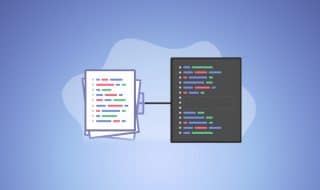
A Step-by-Step Guide to Building a Blog Content Strategy

How to Start a Blog Strategy for Your SaaS Business
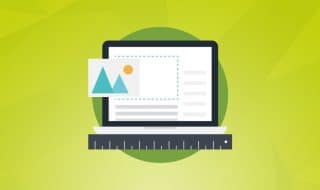
Guide: How to Write Content for Your First Business Blog Post
March 09, 2022 at 7:22 pm
Awesome guide! Extremely useful for a newbie like me.
March 10, 2022 at 9:38 am
Thanks Tom! Good luck with your new blog 🙂 feel free to reach out if you have any questions.
March 23, 2022 at 9:48 pm
What other things should I keep in mind transitioning from writing on a personal blog to a business blog?
March 25, 2022 at 1:50 pm
I think successful blog marketing can be broken down into two categories; research and execution. One falls flat without the other.
Here's an article I wrote on research: https://www.contentpowered.com/blog/blog-topic-ideas-tools/
Here's an article I wrote on execution: https://www.contentpowered.com/blog/blog-optimization-tips-seo/
These two should help you out quite a bit!
March 25, 2022 at 2:01 pm
I wrote a great guide on this here, focused on business blogging: https://www.contentpowered.com/blog/write-first-blog-post/
The most significant shift between a personal blog and a business blog is the increased importance of choosing the correct blog post titles.
Traffic volume, pain points, and conversions aren't always as crucial with a journal or a for-fun blog. With a business blog, those things are essential.
Here's a guide that I wrote on how to find great blog post titles: https://www.contentpowered.com/blog/blog-topic-ideas-tools/
I hope this helps!
Leave a Reply Cancel reply
Name (required)
Email (will not be published) (required)
Your Comment
Let's Grow Your Business
Want some free consulting? Let’s hop on a call and talk about what we can do to help.

How To Craft Your Blog Business Plan (Template Included!)

If you’re just starting out, chances are that you would want to create a blog business plan for your business.
If you want to create a successful blog + biz, you need a plan. You can’t just launch a website (although that’s important) and hope that it would work out.
Yes – your blog business plan is your blog’s BLUEPRINT.
But first, if you have not started your blog yet, here’s a step-by-step tutorial on how to start a blog .
You’re back? Great! I will share with you the exact blog business plan template I used… when I first started this blog.
Sounds good?

A blog business plan is great because you get real clear on the direction, goals and vision of your business, leaving no stone unturned. When you organize your thoughts and plans into one central place, it increases the chances of you starting a successful blog .
Clarity = better business!
Without further ado, here are the components of my blog business plan:

You should come up with a brand name. This is the same as your blog name. Don’t need to go over the top – keep it simple. Here’s a tutorial on how to pick a blog name , if you need help.
- Vision & mission of your brand
What’s the vision you have for your blog + business? Why are you doing what you are doing?
- Your brand style
Your branding has to look cohesive. Create a cohesive and attractive brand style. Decide on your brand colors, brand fonts and other aesthetic aspects of your brand. This will be incorporated uniformly across your website, social media platforms, and other collaterals.
- Brand vibes/ values
This is threading into the more intangible part of your brand: What vibe/ values do you want people to associate your brand with?
For instance, for me, its no-nonsense, smart, action-oriented, etc.
2. NICHE & TARGET AUDIENCE

- Target audience
Who are you targeting (specifically) with your website? Why? For more info, there’s a tutorial about defining your target audience on this blog as well.
- Competitors (VERY IMPORTANT)
Who are your competitors? Go scope out the situation. I always tell my 1:1 private clients: You don’t open an offline ice-cream store without checking out the other ice-cream stores down the street, do you?
The same applies to your online biz. One does not simply start a blog without knowing who else is in business.
- Points of difference
This is something I always like to do with all my businesses. How are you different from your competitors?
This could be your experience, your personality, certain things you cover, your brand positioning, better design, better service etc. There’s an article about how to make your brand stand out that could be helpful for you.

- Infrastructure
What host will you be on? What domain name provider will you use? Check out this tutorial on how to start a blog for more information about this.
I highly recommend that you use SiteGround as your host – their support is THE BEST, and my website runs perfectly with them. I have lost count of the number of times that SiteGround has saved me from losing sleep because something on my website messed up.
You also need a website theme – I recommend Divi (very customizable, great for beginners) or Genesis (for the more tech savvy ones).
The best option is my done-for-you website kit made with Divi where you can get an amazing website up by this week… all for a fraction of Divi’s website! Check out Your Stunning Website 🙂
- Content Planning
What topics will you blog about? Having some idea of what your blog content will consist of. This will save you valuable time later. Make sure it is something that your target audience (that you’ve decided earlier) would want.
Also, how often will you post?
4. EMAIL LIST BUILDING

For my long-term readers you would know that I’m big on email marketing.
If you are new and don’t really know why you need an email list ASAP, check out this post: Why Building an Email List is a MUST for Your Blog & Business
I highly recommend Convertkit . I love Convertkit so much because it’s just so easy to use, while giving me a ton of functions that my business needs at an affordable price. Click here to check out Convertkit and get your email list started! Feel free to email me if you’ve any questions about using it.
With that out of the way, some things you need to think about:
- What will you be sending to your subscribers?
For more ideas, you can check out my post about newsletter content ideas to send and engage your subscribers.
- How often will you send an email out to your subscribers?
Best to get this out of the way and decide once and for all. Once a week is a safe decision.
5. MARKETING: SOCIAL MEDIA

Social media is a huge part of marketing your blog + business for most entrepreneurs.
- Facebook fan page strategy
Chances are you will want to create a Facebook business page. You need a plan for that! Some things you’ll have to decide and plan for include: What will you post on the page (make sure it is interesting to your target audience)? How often will you post on your Facebook page?
- Facebook group
Many people decide to create a Facebook group. You can check out mine here .
You don’t need to have a Facebook group. Feel free to skip this section (or any other section in the social media section, actually). Not every business has to be on every single social media platform.
So… do the same for every other social media platform you want to be on:
What’s your Pinterest strategy , if any?
What’s your Instagram strategy, if any?
What’s your Twitter strategy, if any?
Rinse and repeat for any other social media platform that you intend to use to market your online business . REMEMBER, only write a business plan out for social media platforms that you intend to use. Otherwise, you’re just wasting your time. You don’t need to be everywhere.

6. MARKETING: OTHER STRATEGIES

Here, you plan for any other ways that you intend to market your business.
For instance, you could choose to collaborate with other businesses, or do networking events offline, etc. Whatever it is, be sure to include it in your blog business plan.
How will you be marketing your business via these channels? When will you start? Who will you be working with? Etc. [Tweet “Great post on how to craft your blog business plan, template included!”]
7. MONETIZATION

No money, no business. Simple as that. You can’t run a charity, trust me!
- Financial goals
What’s your income goal that you aim to reach for this blog + business? Make sure that it’s a specific income goal, and have a timeframe for it too.
- How do you intend to monetize?
What are some monetization channels that you intend to use for your blog? For extra help, you may find my post about having an online business model as well as my post about different online business ideas (where I explore different monetization methods) helpful.
Relevant posts:
- Why I Switched To Teachable To Host And Sell My Online Courses
- The Ultimate Guide: How to Become a Successful Infopreneur Online
- How to Create an Online Course in 72 Hours (With Guided Instructions!)
- How to Sell Online Courses 101
- 10 Highly Effective Tips To Get More Clients Online (From My Personal Experience!)
For me, I do 1:1 coaching (check out how you can work with me here – that’s hands-down the best way you can get success for your blog + biz, as you get personal attention and guidance from a coach that has been there before), courses (I provide step-by-step guidance and give my best tips in my quality courses), and affiliate marketing by recommending helpful blogging tools and resources that you can view here .
(Update 2021: I no longer do 1:1 coaching. You can check out my programs instead!)
What about you? 🙂
8. ACTION PLAN

Break down what you have to do for your business week by week. I recommend that you have an action plan down for the next 3 months or so.
Having a deadline for certain activities will work wonders for your blog + biz. What will you do each week of your business?
No action, no results! 🙂
That’s all, folks!
I hope that you have found this helpful.
New pin design?

God bless, Raelyn
P.S. Want comprehensive guidance on how you can attract an online audience and get more traffic?
That’s exactly where my signature course, List Building Incubator will help. It’s my step-by-step system to grow & monetize your email list. Check it out here .
A tiny request: If you liked this post, please share this?
I know most people don’t share because they feel that us bloggers don’t need their “tiny” social share. But here’s the truth…
I built this blog piece by piece, one small share at a time, and will continue to do so. So thank you so much for your support, my reader.
A share from you would seriously help a lot with the growth of this blog.
Some great suggestions: – Pin it! (I even made a pretty pin for ya!) – Share it to your favorite blog + biz Facebook group – Tweet it!
It won’t take more than 10 seconds of your time. The share buttons are right here. 🙂
Thank you so much!
If you enjoyed this post, get updates from me. (it’s FREE)
You’re awesome for staying till the end. Signup for my newsletter below.
I send email updates about new posts, and tips and tricks to build & monetize your online business.
Similar Posts
Buzzsumo tutorial: how to find top influencers who’ll share your posts.

10 Biggest Lessons I Have Learned As An Internet Entrepreneur

10 Must-Dos To Optimize Your 404 Error Page And Retain Blog Visitors
What’s your 404 page like? I don’t know about you, but I used to completely ignore my 404 page. My 404 page would just say, “Oops! Page not found!”, and my visitors would be left in limbo. As I was systemically evaluating my blog for places to optimize for subscribers years ago, I came across…
What is a Sales Funnel And How Does it Work?
This is part 1 of 3 of the Sales Funnels series.1. What is a Sales Funnel And How Does it Work?2. The 7 Types Of Online Sales Funnels That Work Really Well In 20193. How to Build an Automated Webinar Sales Funnel For Your Online Business Recently, I have been very obsessed with sales funnels. Currently,…
What is Affiliate Marketing, And How Does It Work?

11 Things To Do Immediately After You Start a New Blog

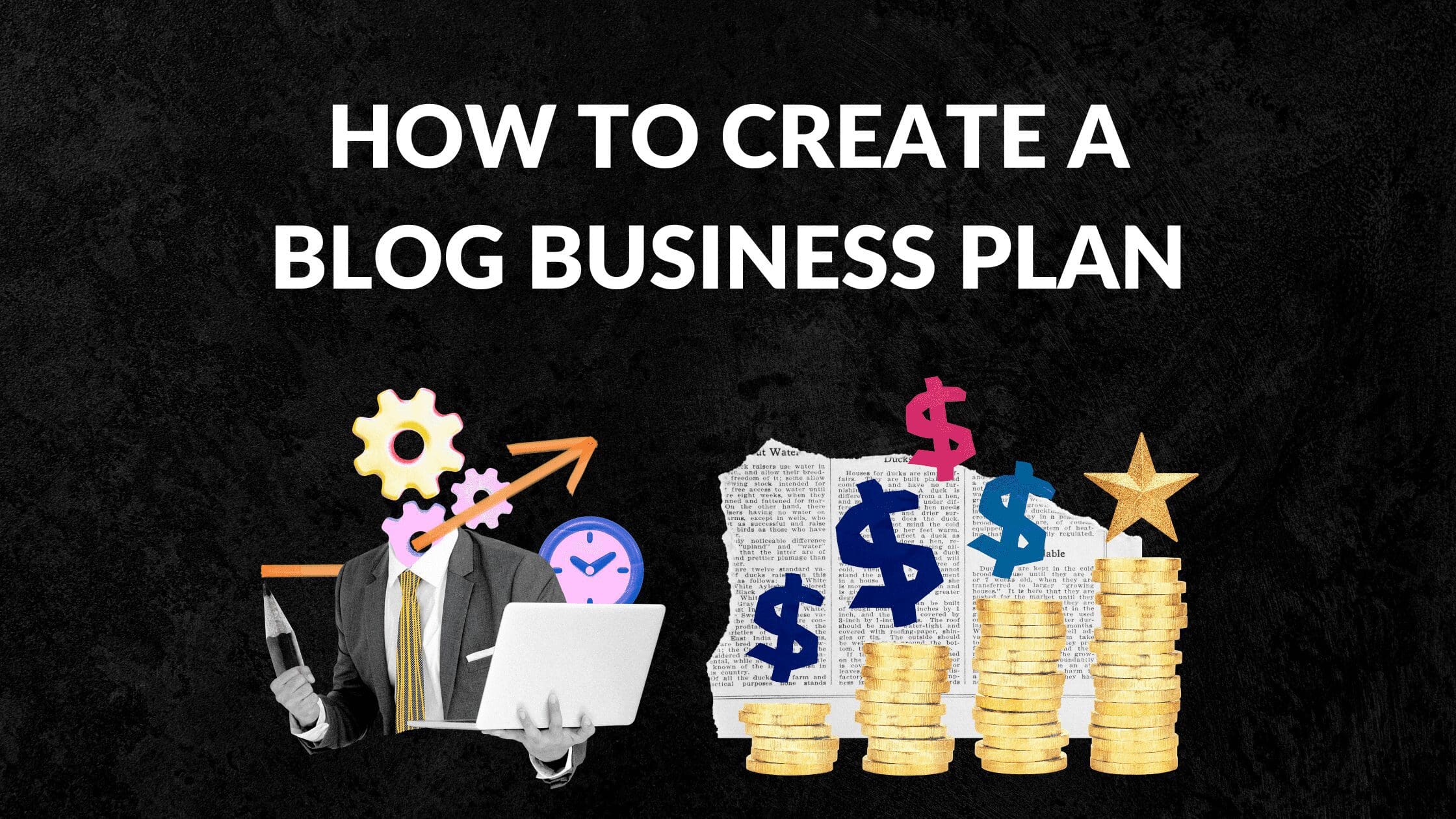
Written by Casey Botticello
Disclosure : Some of the links below are affiliate links, meaning that at no additional cost to you, I will receive a commission if you click through and make a purchase. Read our full affiliate disclosure here .
It’s all well and good to want to start a blog.
Perhaps it’s just a hobby, or a side hustle. However, if you’re looking to become a successful blogger and monetize, you’ll need to treat your blog like a business!
Behind any successful business is a business plan. If you’re a smart blogger, then you’ll want to create a blog business plan . This will help guide any decisions you make and grow your brand down the line.
To learn how to create a blog business plan effectively, read on to discover all the elements you need to consider!
What Is a Blog Business Plan?

In general, a business plan is a document that you, the business owner, creates in order to lay out your goals more efficiently.
Essentially, you can think of it as a “roadmap” for your business.
It functions as a guide to the core activities of your business, how you plan to move forward, what your goals are, ethos of the business, and any projections.
A well-crafted business plan will contain the following:
- An executive summary
- Information about your services and products
- Plans for your marketing strategy
- Analysis of the market and competitors
- Budget and financial planning or considerations.
So how does this relate to your blog?
Well, if you think about your blog as a business , then you can see how important it is to craft a blog business plan. How much better is it if you know what you’re aiming for with your blog, rather than stumbling around in the dark?
Making sure you have a blog business plan will enable you to:
- Be clear about what you’re trying to achieve with your blog
- Hold yourself accountable to your goals
- Be clear about your priorities in order to achieve your goals
- Be prepared for whatever comes your way.
Yes, putting together a business plan is a bit of an undertaking, but you’ll be relieved when you have it in place. Not only that, but you’ll set yourself on the path to success!
The Elements of a Blog Business Plan

So now you know the why , let’s get into the how . Here are all of the things you need to prepare:
The Executive Summary
This should always be the first section of your business plan. It’ll lay out exactly what your business — in this case your blog — is all about.
Your executive summary should be broken down into several sections:
- Your mission statement
What purpose does your blog serve and what is it about? Do you fit into a particular niche?
Really dig in and consider why you started your blog in the first place. This is your opportunity to evaluate your ethos and core values.
- Information about you
Who are you? What’s your background? Why should you be considered an authority on your topic?
- Who is your ideal target audience?
What kind of person is your perfect reader? What is their demographic?
- Any relevant blog growth highlights
If you’ve already been running your blog for some time, this is your opportunity to boast about your achievements thus far!
Have your followers increased? Were you able to monetize through affiliate partnerships, or otherwise? Have your unique views increased?
Don’t worry if you don’t have anything to put in this section yet — remember, your business plan can (and should) be updated!
- Any services or products you offer
You don’t need to go into excessive depth here, as you’ll be able to expand on this later in your business plan. However, you should mention in brief what you’re doing, or planning on doing, in order to monetize.
- What goals are you hoping to achieve?
The most exciting bit! Here’s where you get to lay out your dream goals and vision statement for the future.
Don’t scare yourself off, really think hard about what it is you want to achieve and put it down. Not only is it motivating, but once you’ve written it down, you can start to consider how to make those goals reality.
Brand Identification
The backbone of any business is the brand identity. This is what hooks customers, inspires brand loyalty, and brings a touch of humanity to a service.
For a blog, this is even more important, because what you’re selling is, well — you! As a blogger you’re putting yourself out there as the authority on your subject or topic, bringing value to your audience.
While it can be tempting to create a brand persona for your blog, what readers really love is authenticity and trustworthiness. Plus, how exhausting would it be to have to keep up a double life?!
Maybe your brand identity is a little more extra than you are in person, but at the core it’s still you. Lean into this and build off it in order to find what works for you, your blog, and your audience.
Ask yourself the following:
- Why does your blog exist?
- How do you want your audience to feel when they interact with your blog or you?
- What keywords would you use to describe your blog?
It’s also important to know what your “ definitely wouldn’t do” s as well as your “ would love to do” s are. That way you can refine the core values and ethos of your blog.
In this section you should note:
- Your blog details
What’s your blog called? What kind of vibe are you aiming for?
- What do you cover?
Here you’ll want to explain what topics and categories you cover on your blog, i.e. what’s your niche? Include what hashtags you use on your social media channels, too, as this will be relevant for your marketing strategy.
- What are your posting processes or practices?
Do you have a specific format or style guide to stick to? How about images? This is important to know not just for you but for any guest bloggers you may invite to your blog.
- How would you like to expand on your blog later down the line?
How could your blog and brand expand in the future? What opportunities exist?
Here you could think about publishing books, starting a video channel, doing live demonstrations and events — anything you can think of that you’d like to do!
Overall Business Strategy
Here’s where you’re going to talk about how you plan on executing your goals. You’ll want to include:
- Your posting schedule
Consistency is key! Blogging regularly not only helps you, but it lets your audience know when to expect content. Create a schedule and stay the course!
- Your marketing strategy
What methods are you planning on using for marketing yourself and your blog? Social media and email mailing lists are commonly used, but there are other forms of marketing out there, too.
What about using guest bloggers, or link exchanges? Known as outreach marketing, this can also be an extremely effective form of marketing for blogs.
- How you’ll monetize and what you offer
What techniques will you use to bring money in, while also offering value to your audience? Check back over your goals and future expansion ideas for help with this if you’re stuck.
Remember : There are lots of different ways to monetize your blog, but don’t stray too far from your mission statement, blog ethos, and brand identity.
- Analytics of your blog
Being able to analyze your blog performance and track unique views, keywords, and more, is essential to the success of your blog. While Google Analytics is an excellent choice here, it isn’t the only one.
Identify which analytics service(s) or tools you’ll use and how they can help drive your blog forward.
Market and Audience Analysis
As with any business, one of the most important steps is identifying who your audience are, the current market, and any competition.
Knowing who you’re trying to reach with your blog and how you can stand out from the crowd is essential to success.
In this section you should lay out:
- Who are your target readers?
How old are they? What demographic are you trying to reach?
It could be helpful to imagine your ideal reader here, as this can help you when writing your blog posts if you imagine that you are writing for that specific person.
- Who is your competition?
Who are the successful bloggers in your niche? What sets them apart and what tools or marketing strategies are they using?
It’s a good idea to profile your competition and include not just your main rivals but also smaller blogs. What are they doing right? How could you improve on what they’re doing?
- What networking opportunities exist?
No man is an island and blogging is all about community. That’s not just the community that you’re building, but the community that already exists around you.
There are plenty of opportunities to collaborate and work with others in your field. Identify these and use them to your advantage.
Financial Considerations
Of course, you can run a blog for free. However, in order to really level up, you’re going to want to spend a bit of money.
Even if you’re running your blog for free right now, it’s a good idea to be clear about what expenses you may need in the future.
- Domain and hosting costs
- Branding or logo design costs
- Any subscriptions you may need for themes, plugins, tools, or software
- Photography costs, whether that’s your own or licenses required
- Any promotional materials, eg, business cards and Facebook ads
- Office supplies
- Internet provider costs
- Any fees associated with starting a business (not necessarily required).
How Blogs Can Turn into a Business
As soon as you monetize your blog, it’s no longer a hobby but a business! On your blogging journey, somewhere along the line you may decide that doing it for no return isn’t worth the effort any more.
After all, you’re putting time into creating a resource for others– so why shouldn’t you be compensated?
When you decide that your blog should be a business, you’ll want to make sure that you:
- Post consistently
- Market and promote your content in order to grow your audience
- Communicate with your followers though email mailing lists, social media, and more
- Find different ways to monetize your blog
- Keep going!
You may find that what works for other blogs doesn’t for yours. That’s okay! Just keep hustling, and you’ll eventually find a winning formula.
How to Create a Blog Business Plan

While we’ve already covered a lot of the steps you need to go through in order to create your blog business plan, let’s break it down even further.
1. Create a Blog Roadmap: Define Your Blog’s Goals, Mission, & Vision

What Is Your Niche?
Defining your niche is the most important step: what are you going to blog about? What sets you apart from your competitors as the authority on this subject? Niche vs. micro niche ?
You really could pick any topic you like, as long as there’s a demand!
Who Is Your Target Market?
Who is your ideal reader? What are their demographics and psychographics?
Research your target market — what are their pain points? How can you tap into this to create content that’s of value to them?
How Will You Monetize Your Blog?
There are a million and one ways to monetize your blog. Here are some ideas:
- Become an affiliate partner
- Sell advertising space
- Partner with brands
- Sell physical or online products or courses
- Write and sell e-books
Be sure to stay true to your blog’s ethos and brand when choosing monetizing opportunities , as not all will be a good fit.
What Do You Want Your Blog Business to Achieve?
Perhaps you want to hit a certain unique visitor milestone, or email subscriptions?
Maybe you want to earn a specific amount of money, or even spend a particular amount of time working on your blog.
Whatever it is, be reasonable and realistic with your timeframes. You want this to be a way to measure your success.
2. Do Competitive Research & Analysis

Who Are Your Main Competitors?
Use Google Alerts and keyword searches to figure out who your main competitors are.
Knowing who your competitors are means that you’ll be better equipped to place yourself as the authority in your niche.
What Are Their Strengths, Weaknesses, and Keywords?
If you’re able to identify your competitor’s strengths, weaknesses, and keywords, you’ll know what pitfalls to avoid and how you can better them.
Keyword research is vital here. When it comes to beating your competition, it’s all about placing higher in Google searches so that you become the top-ranked blog in your niche.
How Can You Differentiate Your Blog from Theirs?
Your USP (unique selling point) is what’s going to give you the edge over anyone else in your niche. What is it that makes you special and unique?
Make a list of all of the ways your blog is or could stand out from the crowd, then use this as a guide for your content and strategies.
Tools You Can Use for Competitive Analysis
There are many tools out there you can utilize when analyzing your competition.
Some will be paid, and some will be free with the option to upgrade. We recommend starting with free versions first and seeing if you need to upgrade.
You may find that a combination of tools works best for you, as some will analyze particular social media whereas others will look at keywords and SEO-related analytics .
You may want to check out tools such as:
- SproutSocial
- SocialBlade
3. Establish Website

Domain Name
This is what you’ll name your blog . Make sure it’s registered, fits with your brand and blog in some way, and that the domain has a clean history .
Blog Hosting
This is where your blog lives on the Internet. Make sure you choose a reliable and reputable blog web hosting service — a blog with a lot of downtime isn’t going to help you!
Website Elements
What will you use to design your website? WordPress is one of the most used platforms for building a blog– and for good reason. It’s extremely user-friendly, and you don’t need to know code to get going.
However, there are plenty of other website building tools out there, so do your research and pick the best one for your blog.
You’ll want to think about the visual appeal and aesthetics of your blog as well as the personality and tone. Make sure it all ties into your blog’s ethos, message, and vision, too.
4. Make a Content Strategy

SEO and Keywords
SEO and keywords are, arguably, the most important part of getting your blog out there. If you aren’t ranking highly on search engines then how will anybody see your hard work?
Make sure you take the time to get your SEO up to scratch and do thorough keyword search. That way you can ensure that you’re giving yourself the best chance for your blog to be seen.
Guest Blogging
Guest blogging is a great way to bring new traffic into your blog, whether you’re hosting another blogger or creating a post for someone else.
Be sure to align yourself with others in your niche to draw the right traffic into your blog.
Building backlinks with other blogs is also a great way to improve your SEO. Guest blogging also helps to establish you as an expert in your niche and build awareness of your brand.
In other words: There’s no downside to guest blogging as long as it’s carried out legitimately and with reputable partners!
Email Marketing
Email mailing lists are still a great way of keeping in touch with your existing audience, as well as helping to grow your readership.
Encourage people to sign up by having a great lead magnet. Don’t forget to be consistent and send out newsletters to your readership, directing them to where you want them to go.
Social Media
Social media can be an excellent way to build community around your blog. Ideally, your blog’s community will be engaged, and social media is where you can really make that happen.
You can even use social media to drive more traffic to your blog. Just don’t forget to be authentic and engage with your audience in a genuine way!
5. Develop Standard Operating Procedures

Content Calendars
Creating content calendars can be extremely helpful as you continue to refine your blog posting processes and operating procedures.
This lays out exactly what you’ll be posting and when, making it easier for you to create content regularly.
Your content should always be high quality and of value to your audience. Knowing what you’re going to post and when allows you to plan your content to make sure this is true every time!
Should You Outsource?
You may find at some point that the growth of your blog has exceeded your individual ability to fulfill its needs. At this point, you may want to consider outsourcing parts of your blog .
This is also why it’s important for you to lay out your business plan early on — what are the essential tasks that only you can do?
What other menial tasks could you outsource, without affecting quality, value, or your bottom line?
Time Spent on Blog
There’s going to come a point when your blog side hustle is now your main hustle, and when that time comes you’ll need to be able to respect the commitment required.
How much time is reasonable for you to spend on your blog? Is it going to be financially sustainable? How will the time you spend on your blog affect its future valuation should you choose to sell it?
Try to define your time commitment to your blog and balance this with the rest of your life.
6. Sales & Marketing

There are so many different ways to market your blog, some of which we’ve already outlined in this article. Whatever you choose, just make sure that it remains true to your blog’s brand!
7. Performance Tracking

Don’t forget : Once you’ve put everything else in place, you’ll want to use various tools to track your performance.
Google Analytics is a great place to start, but there are many free and paid-for tools available, too.
Only by tracking your performance will you be able to make positive changes for success.
8. Launch Your Blog

And, you’re off! Now that you’ve put in all the prep work, it’s time to get your blog off the paper and into the world. Start your blog today !
The Bottom Line
Anyone can have a blog, but to have a successful blog takes a lot of blood, sweat, and tears.
By creating a blog business plan, you can ensure that you’ve got a framework to work from, measure your progress, motivate you, and make sure that you stay true to your values.
If you’re ready to take your blog from a side hustle to a business, then following the above steps will ensure that you’re prepared to do so.
Just remember to stay true to why you started your blog in the first place, as well as your values and blog ethos. Best of luck!
Related Articles
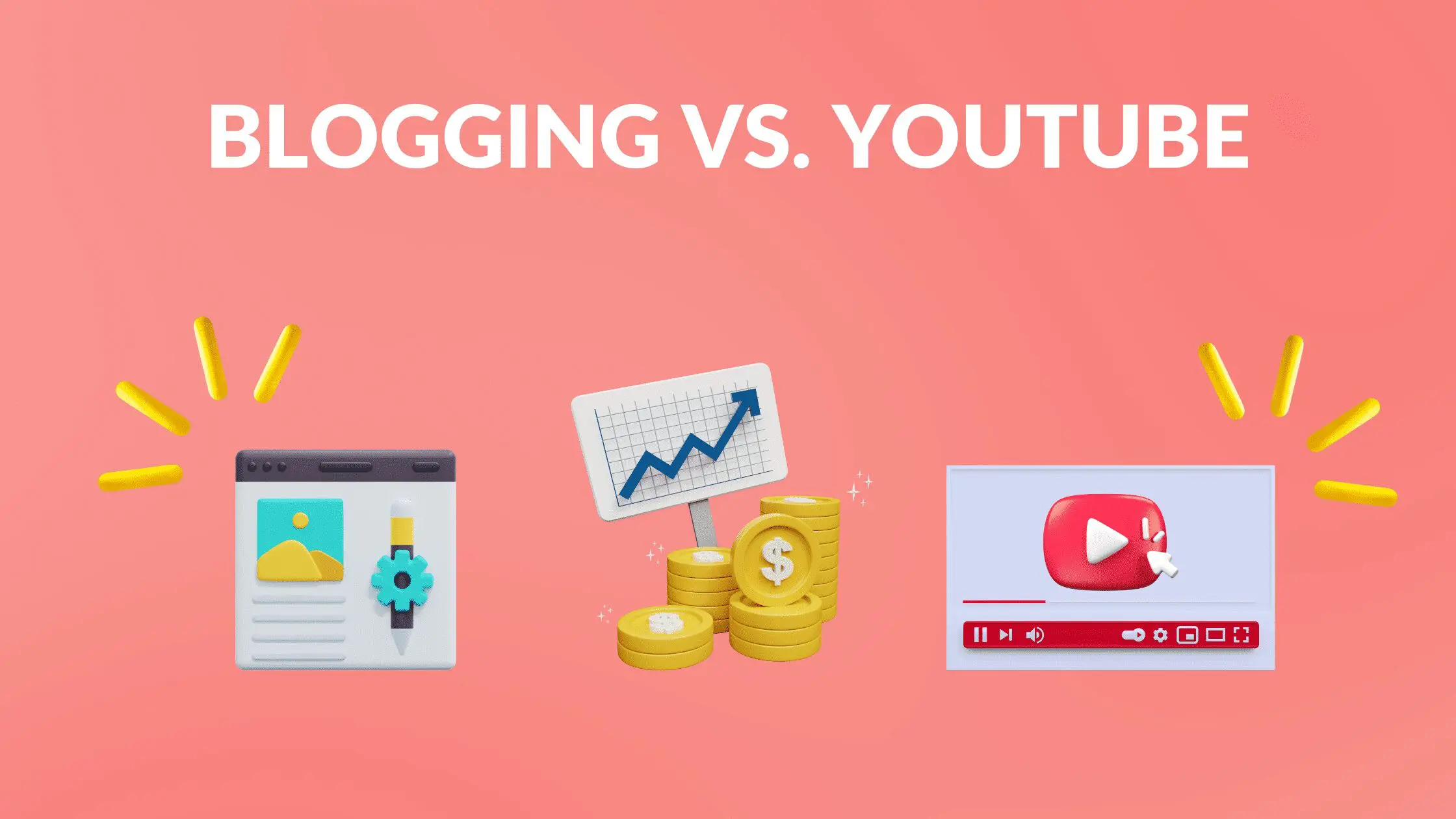
Latest Posts
- Journey by Mediavine Review
- Mediavine vs. Raptive
- March 2024 Niche Site Report
- How to Configure Your Mediavine Ad Settings to Optimize RPM
- Why Was My Blog Rejected by Mediavine?
WEBSITE ESSENTIALS
How to start a blog: a complete guide
- Rebecca Strehlow
- 28 min read
Get started by: Creating a blog → | Getting a domain →

If you’re wondering how to create a blog , you’ve come to the right place. As a blogger myself, I can tell you it’s a rewarding way to hone your writing skills, explore new ideas and build an online presence that revolves around your passions and expertise. You’ll get the chance to inspire, educate, and entertain your readers—and as your blog grows, you can even start making money and turn it into a full-time job or use it to start a business .
In other words, blogging is the first step toward finally pursuing your dream job or favorite hobby, so you really can’t go wrong. While starting a blog might seem daunting, I’m going to walk you through every step to make it as smooth and successful as possible. The process is actually quite easy, and you’ll have your blog up and running, as well as your first blog post written, before you know it.
In this step-by-step guide, you’ll find all the guidance and tools you’ll need to start a blog and get writing blog posts. You’ll learn how to make your website , write your first blog post and draw in loyal readers. Sounds exciting? Let’s dive in.
How to start a blog in 10 steps
Choose a blogging platform. Use a platform that offers customizable templates.
Pick a hosting platform. Consider a platform with good bandwidth, uptime and customer support.
Find the right niche. Narrow down your theme and have a specific audience in mind.
Select a blog name and domain. Choose a descriptive name that piques readers’ interests.
Set up and design your blog. Include imagery and effects that reflect your theme.
Brainstorm blog topics. Write down all your ideas before narrowing down topic selections.
Write your first blog post. Engage your audience with a killer title and use headers to make the content skimmable.
Create an editorial calendar. Create a calendar to help you publish consistently and hold yourself accountable.
Promote your blog. Use marketing strategies to expand your reach.
Make money blogging. Take advantage of opportunities to monetize your blog.
In this complete how to blog A to Z tutorial, we’ll cover everything from choosing your blogging platform to making money from your written work. With a little bit of guidance, you can get your blog online in 30 minutes or less.
This is going to be the most comprehensive advice you’ll find on building a successful blog from scratch. If you want to start a blog fast, though, feel free to use the numbered steps above as a quick cheat sheet. You can go directly to the step you need the most help with, or grab a cup of coffee and read it all the way through.
What is a blog?
While a blog can encompass an entire website or simply be its own section of a website, this is a place to share content about a topic you’re passionate about. A blog will typically include both written and visual elements published in an easy-to-read, article format so visitors can swiftly browse and find what they’re looking for. And with over 31.7 million blogs in the US alone, you can literally find blogs about every subject out there, from home renovation to baking to local business marketing strategies . Once you’ve established a community of readers, the possibilities are truly endless.
There's no definitive "perfect" time to start a blog. If you feel that you have the time and resources to start, manage and promote a blog and are enthusiastic about sharing your ideas with the world, it might be the right time to take the plunge and start your blogging journey. The sooner you start, the sooner you can learn and grow as a blogger.
Ready to start your blog now? Sign up with Wix today.
01. Choose a blogging platform
The first step in starting a blog is to select a blogging platform or Content Management System (CMS) for publishing your content. A quick Google search will show you that there are several different sites available that suit bloggers from all industries. I recommend Wix because it’s a good all-around blogging platform that satisfies most needs.
Wix’s blogging platform is fairly straightforward to get the hang of, and it offers a variety of attractive design options and templates to work with. In addition, it comes with features to analyze your blog’s performance and monetize your content, which will come in handy as you setup your blog and build your readership.

How much does it cost to start a blog?
When researching how to create a blog, one of the biggest questions people have is how much does it cost to start a blog . On many platforms, starting a blog is completely free .
You can decide at any point whether you’d like to upgrade to a variety of different plans, depending on your budget and needs. Learn more about how much does it cost to build a website.
02. Pick a hosting platform
Once you select your preferred blogging platform, you’ll need to choose a hosting platform. A blog, like other types of websites , requires a host. This essentially stores websites on a server under a unique address so that visitors can easily reach them.

faqOn some blogging platforms, hosting is already included, so you won’t need to find a separate web host when setting up your blog. In that case, you can skip this step and move to Step 3 .
With other website builders, such as WordPress, you will need to find and pay for a separate web hosting platform. Some popular options include:
If you’re not sure which web hosting platform to choose, take into account these factors:
Uptime: The amount of time that the server hosting your website is up and running. A strong uptime rate (99.95% or above) is a good indication that the host’s servers perform well.
Bandwidth: The amount of data your website can transfer to visitors over a certain period of time. This factor is based on the size of your website pages as well as the amount of traffic you expect. This quick bandwidth calculator can help you determine your site’s bandwidth.
Customer support: Customer service you can contact in the event something goes wrong. Ideally, your hosting provider should offer an online help center, offer callbacks and respond to questions and concerns on social media.
Once you’ve chosen your blogging platform and hosting provider, you can start coming up with your blog idea.
Don’t worry about picking and registering your domain name just yet. We’ll walk through that process together in Step 4 .
03. Find the right profitable blog niche
Let’s move away from the technical and dive into the more theoretical. Take a step back and think about the main element that will form the foundation of your blog, from its URL and domain name to its content and design: your blog’s niche. What, exactly, do you want your blog to be about?
There is virtually no limit when it comes to your choice of subjects. The most crucial thing is that you select a specific topic area that will be the central focus of your entire blog and its content strategy.
Possible blog types range from fashion blogs to real estate blogs to book blogs or food blogs . Because there are lots of other blogs focusing on the same subjects, you’ll need a way to stand out while still writing about what you love.
Here are three simple steps for choosing the perfect blog niche —one that not only is in line with your passions, but one that you can also monetize and grow:
Narrow down your interests
Research your audience
Check if it’s profitable

Narrow down your blogging interests
When you start a blog, think long term. To motivate yourself to blog regularly, you’ll need to write about something you’re genuinely interested in. If you choose a topic solely on the basis of its being popular or profitable, your efforts will peter out pretty quickly, along with your entire blog content strategy.
If you aren’t sure right off the bat what you should be blogging about, that’s okay. Begin with a simple brainstorming session about subjects you like. What do you get excited talking about? What are you eager to learn more about?
Now, write down the first five to 10 interests that come to mind. For the sake of this example, let’s say:
Next, think about your more specific interests within these subject areas and add them to your list. Your additions might look something like this:
Backpacking in Southeast Asia
Vegan recipes
Raising twins
Indie rock music
Hiking in the Rockies
Don’t worry about these niches being perfect just yet. You’ll research them more thoroughly in the next steps. (However, if you're looking for inspiration, check out how these popular art blogs are using their platforms to connect with audiences who share a similar passion.)
The next step of starting and creating a blog is to learn which topics people are interested in reading about. If your blog gains traction, you can eventually start making money from it and become a full-time blogger.
You can determine the demand for any given niche with a bit of market research. Begin by taking a look at Google Trends , which shows you how many people are searching for a particular topic. The more searches a topic gets, the more public demand it has.
For instance, let’s type “vegan recipes” into Google Trends. In the image below, you’ll see that there’s a relatively stable level of interest in this topic, so it’s a good candidate for a blog niche.

“Paleo recipes,” on the other hand, has a much lower degree of interest. This doesn’t mean it’s a bad idea—some bloggers prefer to write for a more specific crowd if they have a unique specialty—but it does mean there are fewer people interested in that particular subject area.
If Google Trends reveals that interest in a subject area is either very low or declining, then that topic is unlikely to gain traction.
Check if it’s profitable blog niche you want to start
Whether you run a personal blog or a professional one, it’s a good idea to check whether your niche is profitable. Even if you’re starting out as a hobby blogger or want to create a fan website , you’ll want to think about future monetization options in the event that your blogging efforts evolve into a career.
There are multiple ways to earn money as a blogger, but one of the most common methods is affiliate marketing. As an affiliate, you’ll work together with a specific company, providing a link to their products within your blog, and earning a commission for any sale made through your site.
Considering whether you could blog as an affiliate is a good way to figure out if your niche is profitable. Think about the kinds of “best of” or “how to” posts you might write. For instance, “Best kitchen appliances for easy cooking” or “How to make carrot cake in 10 minutes.” In both instances, you could include an affiliate link to your favorite food processor or electric mixer and make money for each purchase made through your blog.
You don’t need to plan out your money-making strategy just yet, but thinking generally about profitable opportunities can help you choose a niche. For now, focus on starting your blog—we’ll talk more about making money blogging in Step 10 .
04. Select a blog name and domain
As you think about how to make a blog, the question of what to name it is probably lurking somewhere in the back of your mind.
There are three main routes you can go with your blog's name. These include:
Your first and last name
The name of your business (if you have one)
A creative new name
When choosing your blog’s name, you should also think about the personality you want it to reflect. Should it be formal and professional? Sweet and romantic? Edgy and offbeat? If you’re stuck on names for your blog , this blog name generator is a helpful source of inspiration.

Once you decide, you should also go ahead and choose your domain name for your blog. Also referred to as a URL, a domain is a site’s address on the web (this website’s domain name, for example, is www.wix.com). Typically, your domain name will be the same as, or at least influenced by, the name of your blog.
If you really want your blog to stand out, consider a .blog domain extension . It's a clear and unique way to help your blog and content pop.
05. Set up and design your blog
Choose a blog template, decide which pages to include, get indexed on search engines, create a blog logo.
At this point, you’ve chosen a blogging and hosting platform, domain name and blog niche. You’re now equipped with all the basics for setting up your blog. Here's how to optimize your blog design :
The first part of setup for a blog is selecting a template. Like your blog’s name, its look and feel will be an important part of its personality.
The most efficient way to get your blog up and running is to choose a pre-designed blog template . Afterwards, you can customize it based on your preferences.
Be sure to pick one that conveys your blog’s subject area. There are website templates for bloggers of any genre, whether you’re a food blogger, photography blogger or business blogger. As you browse, think about the mood you want your website to communicate, for example. whether it’s classic, modern, rugged or minimalist.
You should also take that into account as you further personalize the template with your preferred colors. Color psychology plays a huge role in forming your audience’s impression of your blog. As you choose a color palette, keep in mind the feelings and attitudes that different colors evoke. Blue, for instance, tends to evoke dependability and trust, while yellow evokes energy and joy.
If you’re unsure of which templates to choose, these blog examples serve as a helpful source of design inspiration.
Once you’ve chosen a template, think about which pages to include. Most blogs include more than just a section to display their posts. They might also include an online store, as in the image below, or a contact page.

Here's an overview of the different options when designing your blog:
01. Contact page: This is a place to put your email address so that fans and potential business partners can reach out to you. You can also include a contact form so that people can send a message directly through your site.

02. About page: This tells visitors who you are, what you do, and why you do it, providing some context behind your blog and humanizing your content.

03. Online store: You’ll also want to add a separate online store page if you’re thinking of selling items related to your blog. You can call this page “Products” or “Shop.”

If you want to beef up your blog with even more pages, a Tutorials page, Now Trending page or Author’s Pick page are all popular options.
Furthermore, some blogs opt to place their posts directly on the homepage, while others keep their homepages and blog pages separate. If you do this, make sure to include a navigation menu so that visitors can easily access your blog as well as any other pages.
There’s no right or wrong way to set up a blog, so play around with different options to see what best suits your style and personality. Keep in mind that you can always add or remove pages over time as your blog evolves.
Another part of starting a blog is making sure it’s visible on Google and other search engines. This is crucial if you want your content to pop up in search results, so you’ll want to take care of this step right away.
First, make sure your site is indexed on Google. Essentially, this means giving Google a heads up that your blog exists. You can do this by submitting your sitemap to Google Search Console .
Pro tip: Google Search Console is not only important for indexing your site, but it’s also a valuable platform that you’ll be using throughout your blogging journey. It tells you important data about your blog’s site visitors and clicks, which you can use to improve your content.

To find out whether your site is already included in Google’s search index, do a quick site search (a site search uses your homepage URL and takes the form of site:yourblogname.com ). If your blog pops up in the search results, then your site is already indexed.
Finally, polish off your site with an attractive blog logo . This is another way to add personality to your site, and it’s an essential step if you want to create a blog that evolves into a recognizable brand.
One option is to design your own or outsource the task, but you can also use an online logo maker . These tools give you plenty of room to customize your logo with your preferred colors, fonts and icons, and tend to be quicker and more affordable than hiring a professional designer.
Once you create your logo, place it in the upper left-hand corner of your website, and link it to your homepage. This will help brand your content while improving the navigation experience for readers.

06. Brainstorm blog topics
On the technical side, your blog is now setup and ready to go. It’s time to start thinking about which topics you’ll get started with.
Begin by thinking about your experiences, successes, failures or discoveries related to your niche. What insights can you share? What ideas are you looking to explore in-depth?
As you think of topics, try to get into your readers’ heads. Here are some questions to guide you through the brainstorming process:
What characteristics does my target audience possess?
What subjects does my target audience get excited about?
What challenges does my target audience face?
You can also come up with ideas using the topic cluster model . Essentially, this is a tightly organized system that strings together related posts using a series of internal links. While this process is usually considered part of SEO, you can also think of it as a mind map for coming up with ideas.
By this model, think about a broad topic—say, recipes—and then divide that up into smaller subtopics, like dinner recipes or brunch recipes. Then, divide those up into even more specific topics, like 20-minute dinner recipes, mimosa recipes, and cake decoration ideas. Any of these topics could be its own blog post.

If you’re still stuck, this list of blog ideas can help jumpstart the brainstorming process. They include:
A 30 before 30 list (also 40 before 40, or 50 before 50)
Your sources of inspiration
Beginners’ guides
Time-saving hacks
A challenge you’ve faced
Use these ideas to guide you, but feel free to add your own creative twist based on your niche.
07. Write your first blog post
Start with keyword research, come up with a blog post title, outline your main points, write engaging content, insert images, optimize for seo, edit and publish.
Now that you’ve come up with ideas, you’re ready to dive into the writing. Let’s go over how to write a blog post from start to finish:
Finding the right keywords is crucial for getting people to read your posts. By targeting certain phrases with your article, you increase the chances of your blog appearing on search results pages for those queries.
Let’s say, for instance, that you want to share a carrot cake recipe in your blog. You’ll want to target keywords such as:
Carrot cake
Carrot cake recipe
Best carrot cake recipe
How to make carrot cake
Depending on your topic, some keywords may be more obvious than others. You can refine your keywords using free keyword research tools such as Google Keyword Planner or you can use more robust paid options like SEMrush or Ahrefs .

Next, you’ll need to strategically target your selected keywords throughout your article. This means two things: First, you’ll need to sprinkle those phrases throughout your post (but try to do so as organically as possible—no one likes unnatural keyword stuffing). Second, you should structure your article based on the format you see in the top 10 search results for those keywords (you can also reference these results when deciding how long should a blog post be ).
Let’s say, for example, that you want to write an article about your favorite carrot cake recipe. Start by checking your competitors—the top 10 search results on Google for the keyword “carrot cake recipe.”
When you type that phrase into the search engine, you’ll notice that the top results are written as numbered steps, rather than as a story. You can therefore assume that most readers prefer the list format for these types of posts. In order to provide valuable content to your readers—and to rank high on Google as a result—you’ll want your own post to assume a similar format.
Likewise, you’ll want to touch on all the main points covered by your competitors. This doesn’t mean you can’t be be creative. It’s just to say that in addition to sharing your own original insights, you should cover all the bases.
To continue with our example, let’s assume that when you look up “carrot cake recipe,” the top search results include a section about how to make cream cheese frosting. This is an indicator that many readers find this content helpful. In addition, it shows that Google has a preference for articles including that detail. You’d be wise, then, to touch on this idea in your own article.
Keyword research gives you an idea of the best format for your blog post, as well as which sections to include. This naturally segues into the outline stage of the writing process.
First, choose which type of blog post you’d like to write. Will it be a how-to guide? A product recommendation? An op-ed? Whichever blog post template you choose, you’ll want to have a clear idea in mind before structuring the outline.
Then, use headers and subheaders to break up your content into organized, bite-sized chunks. Beneath each heading, make bulleted notes of the main points you’ll include in each section. This will be the skeleton of your first blog post.
Feel free to use this downloadable blog post template to help with your outline. All you need to do is fill in the blanks:

The next part of starting a blog article is coming up with a strong title. You can come up with your blog titles at any stage of the planning process, but the best ideas often arise as you build your outline.
A blog title is a small but mighty piece of content. Often, it makes the difference between whether or not people click on your article.
To make your blog titles catchy and compelling, put yourself in your readers’ shoes. Think about what might interest and excite them, and try the following strategies:
Be clear and direct
Promise value
Appeal to your readers’ emotions
Pique their curiosity
Use humor, alliteration or wordplay
Here are a few fill-in-the-blank blog title ideas to help you:

Here’s more information on how to write a headline that stands out. If you’re curious about diving more into what makes a headline a success, Buzzsumo’s shared headlines study is also an insightful resource.
Now, it’s time to start typing away. Keep in mind that you’ll need an introduction, body text broken up by headers and sub-headers, and a conclusion (optional).
In the introduction, grab your audience’s attention with a captivating anecdote, a compelling quote or statistic, or an interesting fact. Then, share a brief summary of what the article is about, making sure to grab the interest of your readers.
Next, write the body text, using your outline as a guide. This is where you share your knowledge and expertise as a blogger. Be sure to avoid fluff; writing for the sake of writing is one of the biggest blogging mistakes . Instead, make sure each sentence is meaningful, and dive straight into sharing your original insights and actionable tips. You should also use a tone of voice that resonates with your audience, whether it’s funny and casual or serious and formal.
Finally, wrap up the post with a concluding section. While not every blog includes this final bit, it’s a nice way to tie your ideas together and share your closing thoughts.
Keep in mind that writing a blog post can take several hours, and it’s a process that shouldn’t be rushed. Set aside at least half a day to write your first draft.
There are quicker ways to research, plan and create blog content, if you choose to decide with AI content generation tools. There are several to choose from - including Open AI's Chat GPT, Google's BARD and others such as Jasper.ai. Just be sure to heavily edit any AI generated content, be on top of fact checking it's output and don't forget to bring your own voice and style to the content.
Write a blog post with AI
As AI content generators become more popular and as their output improves, considering whether to use AI to write blog posts is a valid question a lot of bloggers are asking themselves. AI content generation can speed up the blog writing process and help you create more, faster. However, in our experience, AI generated content still requires a large degree of human editing, fact checking and injecting of experience into it. So while it might help you create drafts faster, it's not going to be something you can publish fresh from an AI content generator.
However you can use AI for other parts of the blog writing process. You can use it to:
Create blog titles
Write meta titles and descriptions
Structure your blog articles
Help you proofread for grammar and spelling mistakes
As you start your blog, remember that your choice of images can strengthen readers’ overall impression of your article. Whether you add photos, screenshots or illustrations to your articles, they should be functional as well as beautiful. Make sure they convey your main points and highlight important examples in the post.
If you don’t have your own images, begin by browsing free stock photos on the web. Pexels and Unsplash are both popular sites for gathering visual material. While you might eventually want to use photos you take yourself, stock photos are a quick way to get your blog started.
Once you create your content, there are a couple things you’ll need to take care of before hitting Publish. These steps primarily revolve around strategy, from improving your blog SEO to generating conversions through your article. Here’s a quick post-writing checklist to guide you:
Double check your keywords: Quickly search your content (CTRL+F) to review your use of keywords. Did you include all the keywords you intended to? If not, check to see whether there are any other opportunities to incorporate the keywords throughout your article. (Keep in mind that keyword stuffing is considered a bad practice, and search engines can penalize you for it. Incorporate them naturally into the text, rather than forcing them in.)
Add internal links: One trick up every bloggers’ sleeve is to link between their blog posts (also known as the practice of internal linking). This helps improve your posts’ SEO, and it also encourages your readers to browse your other articles. Rather than linking randomly, you should link between primarily related blog posts; this is better for SEO, and it also makes the links more valuable to your readers. If you’re just starting a blog and don’t have much content yet, don’t forget to go back into your posts and add in the links later.
Incorporate CTAs: The next trick in the book is to include calls-to-action (CTAs) throughout the article. These little snippets of content often take the form of phrases such as Buy Now, Subscribe, or Read More. By placing call-to-action buttons in your article, you can direct readers to buy your products, subscribe to your newsletter, or click for further reading.
Use alt text: Because Google can’t read photos, bloggers often add a short description to each image (ideally using keywords) to help the search engine understand what is being displayed. This description, called alt text, helps your images show up in Google image searches.
Write your post’s metadata: Metadata is the term for the text used to display a web page in Google search results. This includes the meta title (also known as the title tag) and meta description. Sometimes, the meta title is the same as the title of your blog post, while other times, you’ll want to choose a slightly different title for displaying your post. There’s no right or wrong here, so long as your title is engaging and includes your most important keyword. The meta description, which is the short snippet of text beneath the meta title, should also include your main keywords and should preview the article’s main points.

Choose your URL: Every webpage has a dedicated URL, and your blog posts are no different. A strong URL helps your articles rank high on search engine results pages, and typically contains a keyword. Blog post URLs often take the form of www.yourdomainname.com/blog-post-keyword or www.yourdomainname.com/blog/blog-post-keyword .
You now have everything you need for your first blog post. Give it a couple reads, and share it with family members or friends to review. It’s always helpful to have a second, third, or fourth pair of eyes.
When you think your article is ready to go, upload it to your blog. Your blogging platform will also have a place for you to type in the metadata and URL. Once that’s done, hit Publish and let the celebrations begin.
08. Create an editorial calendar
Whew! You’ve just written your first blog post. Take a break, and when you’re ready, plan out the rest of the month’s posting schedule.
Creating an editorial calendar is an important part of starting a blog. It’s an effective way to ensure you publish content consistently, letting you hold yourself accountable as a writer and ensuring you don’t deviate from your blogging goals. Your readers want new content, and you need to deliver. Plus, search engines take into account how frequently you publish when determining your site’s overall ranking.
You probably already have a handful of topics from your brainstorming session in Step 6. If not, use the same process to come up with new ideas. Once you have at least 10 or so ideas, start building a content calendar.
Your calendar doesn’t need to cost a thing, and it certainly doesn’t require the use of unfamiliar tools or platforms. Open up Excel or Google Sheets, and start building a schedule from there. The columns you use are completely up to you, but you’ll probably want to create different sections for the publishing date, blog title, main keywords, article status and comments.

Pro tip: If you know you’re prone to procrastination (aren't we all?), open up a Google Calendar and fill in your deadlines there. You can even set aside blocks of time in your calendar for writing.
How often should you blog?
When learning how to start a blog, a big question people ask is how often they should be publishing new content. As a rule of thumb, the more often you blog, the more traffic you get. There’s no black-or-white answer for exactly how frequently that is, but studies have pointed us to a few important statistics :
11 or more posts per month yields a noticeable increase in traffic. Among small companies of 10 or fewer employees, those who published at least 11 blog posts a month had twice as much traffic as those who published two to five blogs a month.
Small companies also found that publishing at least 11 posts per month yields twice as many leads as those publishing six to 10 monthly articles. This is important if your goal is to obtain subscribers, sell products or work as an affiliate (more on that in Step 10).

How often you blog also depends on your goals . If your main goal is to generate brand awareness, start with one to two new posts per week. On the other hand, if you’re primarily aiming to increase blog traffic , you should ideally be writing three to four new posts per week.
Keep all this in mind as you create your editorial calendar, but make your goals small and achievable. If you set unrealistic deadlines that you can’t meet, you’ll get thrown off course and even discouraged.
You can always ramp up your efforts once you get used to publishing and make it a habit to stick to your schedule. In addition, remember that you can always bring in guest contributors to up the quantity of published content each week.
09. Promote your blog
Share on social media
Create a blog newsletter
Write for other sites
Reach out to an existing community
Participate in question and discussion sites
Invest in paid ads
Try new content formats
At this stage, you have everything you need to start a blog. These last couple of steps will focus on how to spread the word about your blog and grow it into a serious monetization tool.
In order to get readers, you’ll need to find creative ways to drive traffic to your site. While improving your SEO is an important step, the following methods can also help you promote your blog . Note that most of them are completely free, while a few (like advertising) are paid.
Share on social media: Social media is an excellent place to post your content and draw attention to your blog. Whether you promote your blog on Facebook , Instagram, Twitter or LinkedIn, it’s a great way to reach new readers. Learn more about blogging vs instagram in our guide.
Create a blog newsletter: Send out a weekly email newsletter to engage your readers and get them coming back to your blog for more. This will help you sustain a loyal fan base. To get subscribers to your blog email list in the first place, include a prominent Subscribe button in your website’s navigation bar, footer, and within your blog posts.

Write for other sites: Strengthen your reputation as a writer and expert in your niche by publishing content outside your own website. Consider opening a Medium account and making a name for yourself there, or post articles on LinkedIn . You should also keep an eye out for guest blogging opportunities, which are offered by publications such as Forbes and Entrepreneur .
Reach out to an existing community: Facebook groups, forums and LinkedIn groups are gathering places for people interested in a particular topic. If you find an online community that’s relevant to your blog niche, share your website with them and network among their group members.
Participate in question and discussion sites: Sites such as Quora and Reddit give you the opportunity to highlight your blog in discussion threads. Use one of your blog posts to answer a question or follow up on a comment, but be sure to come across as helpful and informative rather than promotional.
Invest in paid ads: In addition to sharing posts on social media, you can boost your posts with a paid promotion so that they reach more people. Likewise, you can pay for Google ads and reach new users through the search engine.
Try new content formats: Expand your reach even further by trying new content formats. These essentially repurpose the same information provided in your posts. For instance, you can turn your blog posts into videos and start a YouTube channel. You might even create a podcast or offer a webinar. The sky's the limit.
Learn more: Blogging vs Youtube
10. Make money blogging
Affiliate marketing
Advertise within your blog
Offer paid subscriptions
Write sponsored content
Sell e-books and merchandise
Provide consulting services
If you’re looking to start a blog with a large readership, chances are you’re also aiming to make money from your blog’s popularity. We touched on affiliate marketing earlier in the article, but let’s talk more about this and other money-making strategies that can help you generate passive income from your writing efforts.

There are more ways than one to make money blogging . Here’s a quick overview of each method:
Affiliate marketing: This is one of the most common ways to make money blogging, and it’s easy to get started. Intermediate affiliates can earn between $300 to $3,000 per day , and that number only goes up with experience. There are plenty of affiliate marketing programs out there, but Amazon Associates is a popular choice for beginners.
Advertising within your blog: Another option is to display ads within your blog, which means you’re essentially selling your blog real estate as ad space. This is a fairly reliable way to make money, as you’ll be earning revenue with each click. If you’re thinking of taking this route, Google AdSense is by far one of the most lucrative and popular programs.
Offering paid subscriptions: You know how the New York Times makes you pay to read their content? You can do the same thing with your blog. While some of your articles should be free, you can also create exclusive content that readers can buy access to through a subscription plan.
Write sponsored content: Reach out to companies—or, as you blog grows, make it easy for brands to contact you—regarding sponsorship opportunities. You’ll be writing articles that promote those companies’ products, and the business, in turn, will compensate you for the posts.
Sell e-books and merchandise: You can also sell digital or physical goods directly from your site. This might include branded merchandise, products related to your field, or e-books and other online resources. One way to do this is by adding a Pay button to your homepage that your readers can click to browse your merchandise.
Provide consulting services: This approach involves making use of your professional experience and harnessing the knowledge you’ve gained as a professional blogger. Based on your insights and expertise, think about the kinds of consulting services you might be able to offer to your clients. If you’re writing a nutrition blog, one such idea could be making customized diet plans or working as a nutrition coach for clients.
For further details, take a look at this article on how to monetize a blog or check out the Wix Learn online course on monetizing your blog.
5 reasons to start a blog and is it worth it
People start blogs for a variety of reasons, many of which mean blogging is still worth it, some of these reasons include:
01. Share your ideas with the world
Sometimes you just want to be heard and get your ideas out into the universe. This is where a blog can help—it’s a form of communication and space that’s entirely your own. You can use your creativity and passion to create a space customized exactly to your liking where you can share your ideas, expertise and experiences.
02. Promote a product or service
Blogging for business is a great way to engage potential customers and provide more information about a product or service. Additionally, blogging does wonders for a website's SEO.
03. Build your brand
A blog provides a platform to showcase your knowledge and skills, establishing yourself as an authority in your field and building credibility and trust with your audience. As Ophyr Hanan, Blog Growth and SEO Outreach Specialist at Wix, says, "By fostering relationships and collaborating on content, it can help build the foundation for thought leadership and authority building both for you and within your industry."
04. Earn income
Blogging can be profitable with time and continued effort. The best way to see the monetary fruits of your labor is by posting quality content regularly that draws in new readers and brings more traffic to your website. This will help your blog gain advertisers and can also boost your status as an online influencer, which can open up the door for affiliate marketing.
05. Build a community
Thanks to the internet, we no longer need to live in the same city, state or even country to feel connected to others. A blog, as part of a wider blogosphere community, creates a space to share your story, ideas and start conversations with people all over the world with mutual interests. A blog typically has a comments section where your readers can speak with you directly, allowing you to engage in conversation and build relationships.
Is it too late to start a blog?
Blogging is crucial to build your brand's voice and community, and allows you to expand your reach to a relevant audience who might otherwise not know you exist.
Judit Ruiz Ricart, Team Lead of Blog Growth at Wix
Blogs are still a popular and effective way to share your thoughts, ideas and expertise with the world. In fact, blogging is one of the most popular forms of content marketing. It can also be a great way to build a community and connect with other people who share your interests.
Remember that the internet is still growing, with more and more people using it every day. This means that there's a large and growing potential audience for your blog, too. While there are many blogs out there, there's always room for new voices and perspectives. If you have something unique to share, people will be interested in reading it. And the best part is that there are many tools and platforms that make it easy to create and manage a blog.
There are a number of reasons why blogging is still relevant, including:
Search engines love blogs
Blogs are a great way to improve your website's SEO and rank higher in search engine results pages (SERPs). This is because blogs provide fresh, high-quality content that is relevant to your target audience.
Blogs build authority
When you write informative and engaging blog posts, you establish yourself as an expert in your field. This can help you attract new customers and clients, and build trust with your existing audience.
Blogs build connections
Blogs provide a platform for you to share your thoughts and ideas and to connect with other people who share your interests. This can help you build a community around your brand. This is especially true of service industries, fitness blogs for example are a great way to build a loyal health focused audience and the same is true for almost every industry.
Blogs generate leads and sales
When you write blog posts that are relevant to your target audience, you can include calls to action that encourage them to learn more about your products or services, or to contact you for a consultation.
The blogging landscape has changed in recent years, the space is more competitive as more blogs exist and competition for audience numbers grows. Hand in hand with this social media and video have become more popular ways to consume content, especially amongst younger audiences. However amongst all of this blogs still play an important role in the content marketing mix.
Blogging resources - how to become a blogger
As you learn how to create a blog and become a blogger, browse these blogging resources to help guide you through the writing process, SEO and more:
Blog post checklist : Check off these steps to ensure you’ve covered all the bases with your first blog post.
Blogging for beginners : Read through these additional tips on how to start your blog from scratch.
Free online writing courses (Udemy) : Browse Udemy for professional writing courses that will help you develop your blogging skills.
Free SEO tutorial (Moz) : Learn the basics of SEO with this free six-part video course.
Blogging tools
Finally, online tools are a big part of launching a blog, since they make the process more streamlined and efficient. Here’s a quick list of some helpful blogging tools you can use to start a blog—don’t forget to bookmark them for future reference:
Google Keyword Planner : Get data about which keywords to use in your blog posts.
Google Analytics : Obtain insights into your blog’s data to strengthen its performance.
Google Search Console : Have a clear view of the number of website visitors and clicks your blog receives.
ShareThrough’s headline analyzer : Type in your headline and get feedback on its strengths and weaknesses.
Pexels : Find free stock photos for your blog articles.
Grammarly : Review your writing with an AI editing tool.
BuzzSumo : Keep track of trending content to create relevant, targeted posts.
Asana : Manage your writing schedule with an online task management tool.
How to start a blog infographic
That's all there is to it. Let's wrap up with a quick infographic:

At this point, you have all the tools and resources you need for starting a blog. You couldn't have found a more rewarding endeavor, and I couldn't be more honored to help you get your blog off the ground. Feel free to bookmark this guide as a reference as you begin this new journey, and happy blogging.
Start a blog FAQ
How can i start a blog for free.
First of all you'll need to choose a blogging platform with free user options. With Wix, for example, you can create a blog for free. You can also save money when starting a blog by writing all of your content yourself and by using as many free content planning and keyword research tools as possible. You can also use stock images included within the template or editor of your blogging platform for free in most cases.
How do I make a successful blog?
Is blogging still worth it in 2024, how to make a blogging website, how do bloggers get paid, can you start a blog as a side hustle, how to write a blog post with ai, do blogs make money, how do i start a blog with no money, related posts.
How to write catchy blog titles: 12 tips and examples
120 profitable blog niche ideas and how to pick the right one
How to make money blogging: the complete free guide
Was this article helpful?
The Step-By-Step Guide To Creating A Blog Business Plan
Thinking about starting a blog?
Having a business plan is like your favorite GPS app (whichever you fancy, I’m not here to incite a Google Maps vs. Waze debate).
It guides you around the pot-holes, helps you steer clear of the congested lanes, and ensures you reach your destination most effectively.
You’re probably thinking, “But, I’m just starting a small blog, not Amazon 2.0. Do I really need a business plan?”
To that, I say, resoundingly, “YES!”
A business plan is like your secret weapon to side hustle success.
It keeps you on track, keeps the chaos at bay, and best of all, it’s customizable to you and your aspirations.
It’s not just about having blog ideas or setting goals but also about mapping the path to achieve them.
In this blog post, I’ll help you through the steps of creating a business plan tailored just for your blog.
Steps To Create A Killer Blog Business Plan
The first and foremost thing to consider when creating a blog business plan is to define your niche .
Identifying your niche means specifying the topic you want to write about and who your target audience is.
Choosing a topic that you’re knowledgeable and passionate about and resonates with your audience is crucial.
Once you’ve identified your niche, research your competition and identify what makes your blog unique.
The next step is to develop a content strategy that aligns with your niche and blog goals.
A content strategy involves planning for your blog posts, including the type of content you’ll write , the posting frequency, and how you’ll promote your content.
You should also consider the tone of voice you want to use, the length of your blog posts, and the format of your content.
Blogging is not just about writing content; it’s also about promoting it.
Social media is a powerful tool to drive traffic to your blog and grow your audience.
Thus, developing a social media strategy that supports your blog goals is essential.
Create social media profiles across platforms like Facebook, Twitter, Instagram, LinkedIn, and Pinterest.
Additionally, consider the type of content you want to post, the timing, and relevant hashtags.
Once you’ve established your content and social media strategy, the next step is to consider how you’ll monetize your blog.
There are several ways to generate revenue from your blog, such as affiliate marketing, sponsored posts, advertising, and selling digital or physical products.
You should identify which monetization strategy aligns with your niche, audience, and blog goals.
Lastly, setting key performance indicators (KPIs) to measure your progress and success is crucial when creating a blog business plan.
KPIs are specific metrics that you can track, such as traffic, engagement, revenue, and email subscribers.
You should monitor these metrics regularly and adjust your plan.
Tips For Establishing Long-Term Objectives
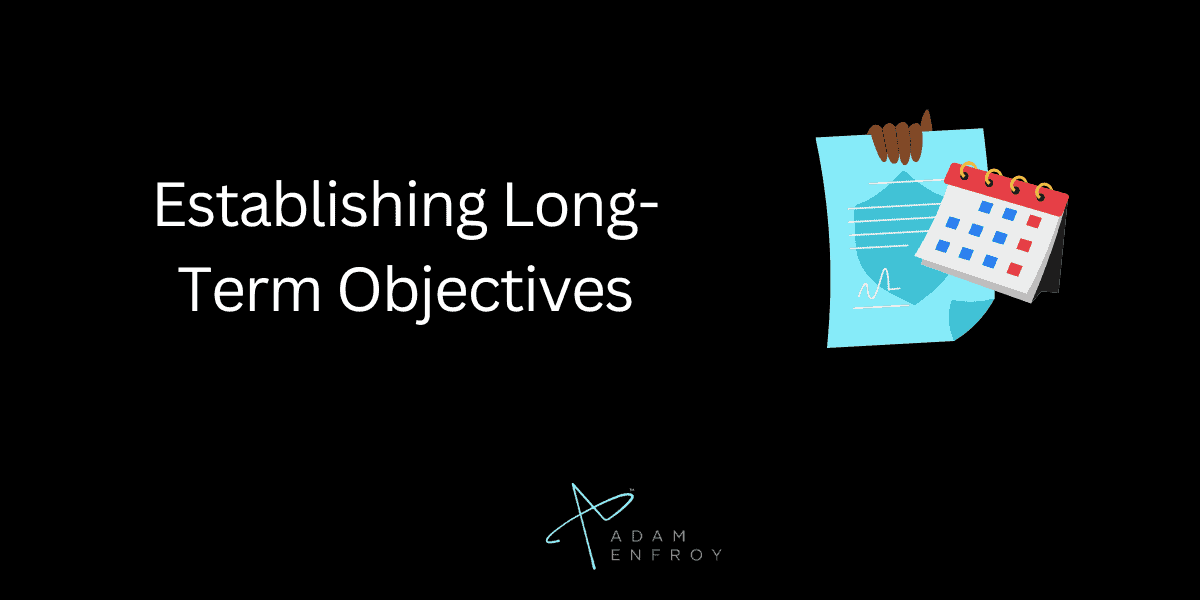
Creating achievable long-term objectives requires careful planning, strategic thinking, and an eye for detail.
Let’s explore some top tips for establishing and working towards these goals.
Clearly Define Your Objectives
The first step in establishing long-term objectives is understanding your goals.
Define your objectives in specific, measurable terms, and make sure they align with your business or blog’s mission.
Objectives should be not only financial but also qualitative.
How will you measure success?
What milestones will you need to achieve along the way?
Having clear objectives will help you make informed decisions and prioritize tasks.
Conduct A SWOT Analysis
Before creating a strategy, it’s crucial to understand your business or blog’s strengths, weaknesses, opportunities, and threats.
Conducting a SWOT (Strengths, Weaknesses, Opportunities, and Threats) analysis will help you identify internal and external factors that can impact your long-term objectives.
By understanding your strengths, you can leverage them to achieve your goals.
You can develop contingency plans to overcome challenges by recognizing weaknesses and threats.
Create A Strategic Plan
Create a strategic plan once you have defined your objectives and conducted a SWOT analysis.
A strategic plan should identify your goals, tactics, timelines, and resources to achieve long-term objectives.
The plan should also anticipate potential challenges and include contingency business plans.
Ensure the plan is flexible enough to adapt to changes in the market or industry.
Include an executive summary as well to provide a clear plan overview.
Celebrate Small Victories
Achieving long-term objectives can be a lengthy process.
Remember to celebrate small victories along the way.
Celebrating small successes can boost morale and motivate you to keep moving forward.
Recognizing your team’s achievements can also help build a collaborative and positive work culture.
Persevere Through Challenges
Finally, it’s essential to persevere through challenges to achieve long-term objectives.
Creating a strategy does not guarantee success.
Challenges and setbacks will inevitably occur.
Focus on your objectives, and have the flexibility to pivot your tactics when necessary.
Use challenges as an opportunity to learn and improve.
Additional Blogging Business Plan Tips
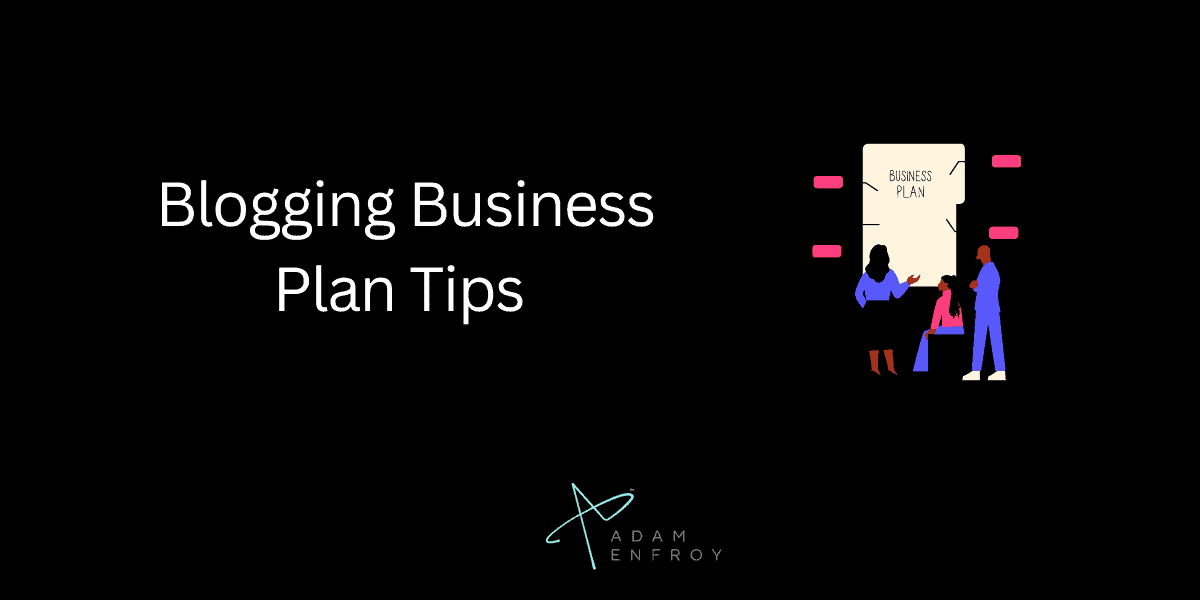
Here are a few more tips to keep in mind when creating a blog business plan:
Craft Your Mission Statement
Before you begin blogging, determine what your mission statement for the blog is.
Your statement would summarize what your blog is about, what your goal is, and how you want to reach your goal.
This statement can keep you focused and motivated.
Pinpoint Your Niche
Finding your niche is crucial.
You can’t just write about everything and expect a high traffic flow.
The more specific your focus, the more likely your blog will be successful.
People interested in the topics you’re writing about will stay on the blog longer and engage with the content.
A strong understanding of your audience will lead to more advertising and product sales, generating more revenue for your business.
Create Engaging Content
Your blog’s success mainly depends on its content’s quality.
Create content to educate or entertain your target audience or inspire them with your eye-catching visuals.
Ensure the blog’s content is readable and user-friendly to create a fantastic experience for your readers.
You want your readers to keep coming back to see what’s new, so post and update your content regularly.
Determine Monetization Channels
You can earn through a blog business in various ways.
That is, through sponsorships, ad revenues, affiliate marketing, selling ebooks, merchandise, or courses, among others.
Monetization options depend on the niche and audience.
Consider all available options and select monetization channels that work best for your blog.
Set Specific Goals
Setting achievable and specific goals for the blog will help identify where to focus your effort.
A blog business plan should include the following:
- A rough timeline of how often you will post.
- The number of subscribers you expect.
- Your targeted income.
Goals can ensure that you stay on track, reach your milestones on time, and measure the blog’s success as it grows.
Analyzing Your Competitors For Blogging Success
Analyzing your competition provides valuable insights into your niche, audience, and potential opportunities to improve your blog.
One of the first steps in analyzing your competition is conducting keyword research.
It allows you to see what keywords your competitors are ranking for and what potential opportunities exist for you to create content that can rank higher.
Use free AI-powered tools like Google Keyword Planner or Ubersuggest to identify valuable and high-ROI keywords you can focus on in your content.
You can discover their strengths and weaknesses by thoroughly analyzing your competitors’ blogs.
Are they producing engaging content that is shared on various social media platforms?
Do they have a strong email marketing strategy?
Are they involved in affiliate marketing?
Identifying these strengths can help you replicate their successes while recognizing their weaknesses.
You’ll then address potential gaps or opportunities.
It can be helpful to dive into your competition’s monetization techniques.
Do they rely heavily on advertising or affiliate marketing?
Are they selling their products or services?
Understanding what strategies have been successful for other bloggers in your field can be a valuable tool in shaping your business plan.
Knowing where your competitors’ traffic is coming from can offer insights into how to drive traffic to your blog.
Look at sources like social media, email marketing, search engines, and referrals to see where your competition is getting traffic.
You can then implement similar strategies to drive traffic to your blog.
One of the most important aspects of blogging is creating engaging and helpful content for your readers.
Analyzing your competitors’ content lets you understand what topics resonate with your target audience.
Look for ways to improve upon your competitors’ content by adding a unique perspective or delving deeper into a particular topic.
A Step-By-Step Guide to Launching Your Blog

Once you have your plan and content strategy sorted, it is time to create your blog.
Here are the steps you need to follow:
Choose Your Platform and Hosting Provider
Before starting your blog, choose your platform and hosting provider.
When selecting your platform, consider what kind of blog you want to run, your budget, and your technical skills.
WordPress is one of the most popular platforms that is easy to use and customizable.
Numerous hosting provider options are available, including Bluehost, SiteGround, and DreamHost.
Do your research to find a reliable, secure provider that aligns with your budget.
Plan Your Technical and Design Strategy
Plan your technical and design strategy once you have selected your platform and hosting provider.
The technical aspects of your blog include setting up your domain, installing necessary plugins, and optimizing your site’s performance.
In terms of design, this involves identifying your brand, creating a website layout, and designing your visual content (like your website banners or post images).
Planning these aspects will help streamline the building process and ensure your blog aligns with your vision.
Content Creation And Proofing
Creating quality content is essential to your blog’s success.
Use your blog’s mission statement and brand guidelines to develop a content strategy enticing your target audience.
Consider including evergreen and up-to-date information and incorporating your unique voice and perspective into your posts.
Be sure to proofread your posts before publishing them, or better yet, consider hiring a proofreader or editor to help ensure clarity, grammar, and accuracy in your content.
Consistency Is Key
Once your blog is up and running, maintaining momentum is the key to continued success.
Engaging your audience and building trust requires creating and sticking to a content calendar.
Ensure your content promotes your brand values and mission statement and provides value to your readers.
And remember to build your audience by promoting your blog posts through social media channels and relevant platforms where your target audience may be hanging out.
Create An Accounting Plan
While it’s important to focus on creating valuable content for your blog, you must also keep an eye on your finances.
Tracking your expenses and your revenue can give you a better idea of how your blog is performing.
Start by creating a budget that includes hosting fees, domain and design costs, and content creation fees.
Look into using reliable accounting software to help keep your records organized, and if necessary, consider hiring an external professional to assist you in overseeing your finances.
How To Increase Traffic To Your Blog For Profit
Creating high-quality content is key to attracting and retaining your audience.
Start by researching your target audience’s interests and pain points.
Find out what topics resonate with them and create unique, engaging, and informative content.
Remember that your content should reflect your brand’s voice and values.
Utilize a mix of text, images, and videos to capture your audience’s attention and provide value with each post.
Remember that quality always trumps quantity, so focus on creating fewer, comprehensive blog posts to build trust and credibility with your readers.
Search engine optimization (SEO) is a strategy that helps your blog rank higher in search engines’ results pages.
Start by conducting keyword research to identify the keywords your target audience is searching for.
Then, optimize your blog post titles, meta descriptions, URLs, and content with those keywords.
Ensure your site’s navigation is simple and easy for readers to use.
Additionally, make sure your site is mobile-friendly and has a fast loading speed.
SEO takes time and effort, but the results can be profound.
You can also invest in paid search ads to bring targeted visitors to your blog.
Collaborating with other bloggers and websites can be an effective way to increase your reach.
Identify blogs and sites that cater to your target audience and reach out to them.
Offer to write a guest post, exchange links, or collaborate on a project.
Additionally, guest posting on other blogs gives you access to their audience and can help to establish yourself as an authority in your field.
Be selective in your partnerships and aim to maintain long-term relationships that will benefit your blog.
Understanding SEO For Your Blog
Understanding SEO for your blog is crucial for any blogger wanting to get noticed online.
Successful bloggers know that having a comprehensive understanding of SEO principles and the use of keywords is vital for ensuring your blog content gets the desired page views.
Google Analytics is an in-depth tool that helps bloggers keep track of their blog’s performance and identify areas that need improvement.
Competitive analysis and target market analysis are critical components of a successful blog business plan.
Luckily, free blog business plan templates incorporating SEO optimization tips for blogs are available online.
Incorporating these SEO optimization tips in your business plan can help you target the right audience, increase traffic, and monetize your blog.
Monitoring SEO performance helps bloggers identify what areas need tweaking and what works.
By implementing SEO optimization strategies in your blog business plan, you can ensure the longevity and success of your blog.
Social Media Promotion For Your Blog
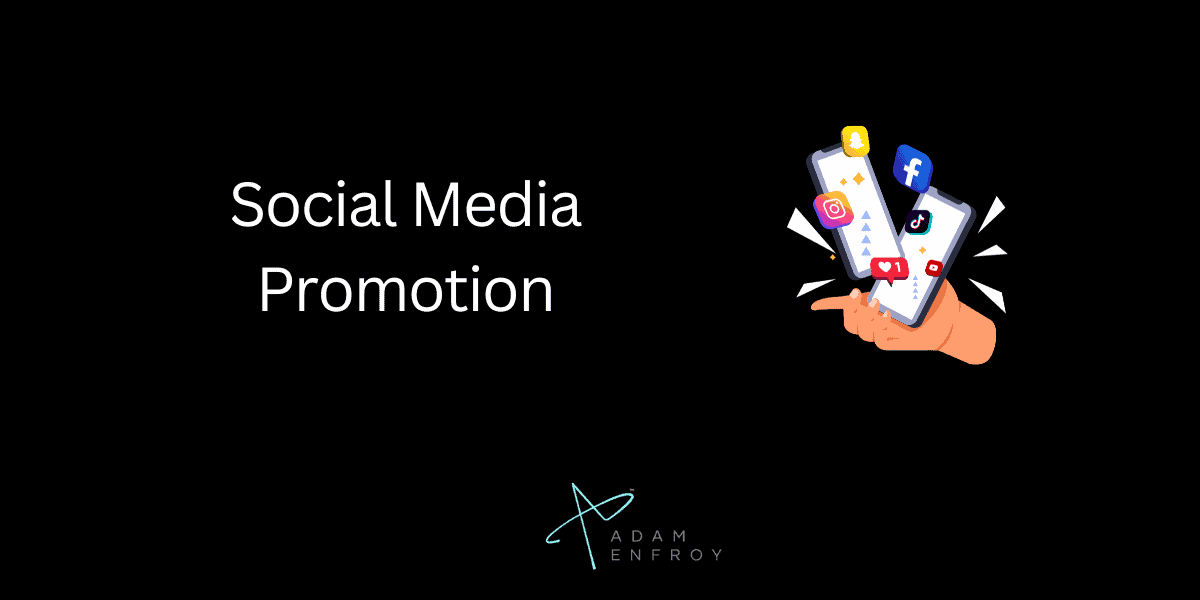
When creating a successful business plan for a blog, one must consider a thorough marketing plan, especially social media promotion.
We cannot overstate the importance of social media marketing; it’s one of the most effective tools for reaching a broad audience.
Selecting the right social media platforms is crucial, as different demographics prefer different platforms.
By understanding the demographics of your target audience, you can select the appropriate social media platforms to focus your efforts on.
Influencers can also be a valuable asset in promoting your blog’s brand, as they have a large following and can boost your content to their audience.
However, selecting influencers that align with your blog’s brand and values is important.
As new bloggers, entrepreneurs, and even full-time business owners turn to social media as a platform to connect with their audience, there is a growing need to create social media content that reflects your blog.
Consider your blog’s look, tone, and feel when creating social media content.
Engaging your audience on social media is also crucial, as it builds a community of loyal followers and helps to increase your blog’s visibility.
Live streams, webinars, and even podcasts are all effective ways to engage with your audience on social media and provide value to your followers.
Building And Nurturing An Email List
Building and nurturing an email list is crucial for the success of any online business, including small businesses, beginners, and seasoned entrepreneurs.
An email list is a valuable asset that provides a direct line of communication to potential customers and clients.
To start building your email list, you’ll need to create a lead magnet, such as a free template or ebook, that encourages people to opt-in to your list.
This roadmap will help ensure that your email list grows naturally and effectively.
Once you’ve captured email addresses, nurture your subscribers and engage with them regularly.
One strategy is to send weekly or bi-weekly newsletters that share helpful resources, business ideas, and income reports.
You can also offer exclusive discounts, early access to your online courses, and other perks that show your subscribers you value their support.
Measuring the success of your email marketing efforts is critical.
You can use analytics tools to track open, click-through, and conversion rates to see how your subscribers engage with your content .
Using these strategies, you can turn your email list into a powerful tool for growing a successful business.
Planning For Blog Growth And Scalability

When planning for blog growth and scalability, several key considerations can help you become a successful blogger and turn your startup into a profitable online business.
Creating a blog business plan is essential, as this will help you to define your vision statement, market research, growth strategies, and monetization strategies.
Your blog can serve as a section of your business plan, and it is essential to consider the different stages of blog growth as you develop your content strategy.
Tutorials and guest posts can be valuable tools for attracting new readers to your site, while adapting your content strategy to meet the needs of your ideal reader is crucial for sustained growth.
Infrastructure considerations are also important, as you may need to upgrade your hosting, invest in a reliable blog name , or consider outsourcing some of your tasks as your traffic increases.
Long-term financial planning is also essential for blog growth, and you should constantly think about how to turn your blog into a profitable business.
With the right approach, a well-developed blog business plan template, and a focus on growth strategies that are both sustainable and scalable, you can build a successful online business that will stand the test of time.
A solid business plan and a comprehensive and targeted marketing strategy are essential for driving traffic to your blog.
Utilize SEO, social media, and collaboration with other bloggers to increase visibility and engagement.
Monitor your progress and adjust your tactics accordingly to optimize the results and get the most out of your efforts.
You can create an effective online presence for your blog with hard work and dedication.
Further reading on AdamEnfroy.com: As a business owner, you might choose various elements of your blog to outsource .
Knowing which components to outsource and which to keep in-house can remove a lot of the strain from building an online business.
Finally, check out these online blogging courses to learn more about how to start a successful blog.
Editorial Process:
Our reviews are made by a team of experts before being written and come from real-world experience. Read our editorial process here .
Some of the links in this article may be affiliate links, which can provide compensation to us at no cost to you if you decide to purchase a paid plan. These are products we’ve personally used and stand behind. This site is not intended to provide financial advice. You can read our affiliate disclosure in our privacy policy .
Adam Enfroy
We test and review software products based on an independent, multi-point methodology. If you use our links to purchase something, we earn a commission. Read our editorial process and disclosures .
#ezw_tco-3 .ez-toc-title{ font-size: 120%; ; ; } #ezw_tco-3 .ez-toc-widget-container ul.ez-toc-list li.active{ background-color: #ededed; } Table of Contents Toggle Table of Content Toggle
Related Articles

The 350+ BEST Friends Captions for Instagram (2024 List)

GPT-4 vs. GPT-3: A Comprehensive AI Comparison

21 Ways How to Find Niche Products To Sell Online (2024)

Amazon Side Hustle: Turn Your Spare Time Into A Gold Mine
Leave a reply cancel reply.
Your email address will not be published. Required fields are marked *
This site uses Akismet to reduce spam. Learn how your comment data is processed .
Upmetrics AI Assistant: Simplifying Business Planning through AI-Powered Insights. Learn How
- AI ASSISTANTS
Upmetrics AI Your go-to AI-powered business assistant
AI Writing Assist Write, translate, and refine your text with AI
AI Financial Assist Automated forecasts and AI recommendations
- TOP FEATURES
AI Business Plan Generator Create business plans faster with AI
Financial Forecasting Make accurate financial forecasts faster
Strategic Planning Develop actionable strategic plans on-the-go
AI Pitch Deck Generator Use AI to generate your investor deck
See how it works →
AI-powered business planning software
Very useful business plan software connected to AI. Saved a lot of time, money and energy. Their team is highly skilled and always here to help.
- Julien López
- BY USE CASE
Starting & Launching a Business Plan your business for launch and success
Validate Your Business Idea Discover the potential of your business idea
Secure Funding, Loans, Grants Create plans that get you funded
Business Consultant & Advisors Plan seamlessly with your team members and clients
Business Schools & Educators Simplify business plan education for students
Students & Learners Your e-tutor for business planning
- Sample Plans
- WHY UPMETRICS?
Reviews See why customers love Upmetrics
Customer Success Stories Read our customer success stories
Blogs Latest business planning tips and strategies
Strategic Planning Templates Ready-to-use strategic plan templates
Business Plan Course A step-by-step business planning course
Ebooks & Guides A free resource hub on business planning
Business Tools Free business tools to help you grow
- Sample Business Plans
- Entertainment & Media
Blog Business Plan Template

Are you a fan of storytelling? If yes, then the decision to start a blog business is one of the wisest choices to spread your voice to a lot of people.
But, do you know, without a proper plan it might fail? If you want a successful blog with millions of readers and a lot of affiliate offers, then start it on the right foot.
Get assistance in crafting a business plan for your blog business with the help of our blog business plan template.
How to Write a Blog Business Plan?
Writing a blog business plan is a crucial step toward the success of your business. Here are the key steps to consider when writing a business plan:
1. Executive Summary
An executive summary is the first section planned to offer an overview of the entire business plan. However, it is written after the entire business plan is ready and summarizes each section of your plan.
Here are a few key components to include in your executive summary:
Introduce your Business
Start your executive summary by briefly introducing your business to your readers.
This section may include the name of your blog business, the website’s name, the type of blog business (E.g., fitness blog, educational blog), etc.
Highlight the blog niche you will work in. The USPs and differentiators you offer are always a plus. You may even include examples to show your work to the readers.
Marketing & Sales Strategies
Outline your sales and marketing strategies—what marketing platforms you use, how you plan on acquiring more viewers, etc.
Financial Highlights
Briefly summarize your financial projections for the initial years of business operations. Include any capital or investment requirements, associated startup costs, projected revenues, and profit forecasts.
Call to Action
Summarize your executive summary section with a clear CTA, for example, inviting other bloggers to work with you.
Ensure your executive summary is clear, concise, easy to understand, and jargon-free.
2. Business Overview
The business overview section of your business plan offers detailed information about your company. The details you add will depend on how important they are to your business. Yet, business name, location, business history, and future goals are some of the foundational elements you must consider adding to this section:
Business Description
Describe your business in this section by providing all the basic information like name, website domain authority, etc.
Describe what kind of blog business you run and the name of it. You may specialize in one of the following blog businesses:
- Personal blogs
- Niche blogs
- Finance blogs
- Photography blogs
- News media blogs
- Review blogs
- Educational blogs
List the names of your blog company’s founders or owners. Describe what shares they own and their responsibilities for efficiently managing the business.
Business History
If you’re an established blog service provider, briefly describe your business history, like—when it was founded, how it evolved over time, etc.
Additionally, If you have received any awards or recognition for excellent work, describe them.
Future Goals
It’s crucial to convey your aspirations and vision. Mention your short-term and long-term goals; they can be specific targets for revenue, market share, or expanding your niche.
This section should provide a thorough understanding of your business, its history, and its plans. Keep this section engaging, precise, and to the point.
3. Market Analysis
The market analysis section of your business plan should offer a thorough understanding of the industry with the target market, competitors, and growth opportunities. You should include the following components in this section.
Target market
Start this section by describing your target market. Define your ideal customer and explain what types of services they prefer. Creating a buyer persona will help you easily define your target market to your readers. For example:
The target market of TrendWave Insights
TrendWave Insights aims to capture the attention of a diverse and tech-savvy audience seeking valuable insights into emerging trends across various industries.
The target market likely includes professionals, entrepreneurs, and enthusiasts interested in staying ahead of the curve in areas such as sustainability, remote work, wellness, technology, e-learning, health tech, cryptocurrency, diversity and inclusion, and digital marketing. With a focus on providing in-depth analyses and expert perspectives,
TrendWave Insights appeals to individuals and businesses looking for actionable insights and a nuanced understanding of the evolving landscape.
Market size and growth potential
Describe your market size and growth potential and whether you will target a niche or a much broader market.
For example, the number of bloggers in the United States alone was around 32 million in 2020, so you can imagine the competition and market size in the current times.
Competitive Analysis
Identify and analyze your direct and indirect competitors. Identify their strengths and weaknesses, and describe what differentiates your blog page from them. Point out how you have a competitive edge in the market.
Market Trends
Analyze emerging trends in the industry, such as technology, changes in audience behavior or preferences, etc. Explain how your business will cope with all the trends. For example:
Market trends for TrendWave Insights
TrendWave Insights navigates a dynamic market where trends spotlight sustainability, remote work, wellness, and tech innovations. E-learning, health tech, and diverse, equitable practices are on the rise.
E-commerce evolves with personalization and cryptocurrency gains traction. Post-pandemic, hybrid work and digital marketing innovations shape consumer behavior. The entertainment industry has shifted to streaming and niche content. Space exploration, cybersecurity, and privacy also make waves in TrendWave’s trend-spotting journey.
Regulatory Environment
List regulations and licensing requirements that may affect your blog business, such as business registration, insurance, copyright & intellectual property laws, privacy & data protection, etc.
Here are a few tips for writing the market analysis section of your blog business plan:
- Conduct market research, industry reports, and surveys to gather data.
- Provide specific and detailed information whenever possible.
- Illustrate your points with charts and graphs.
- Write your business plan keeping your target audience in mind.
4. Products And Services
The product and services section should describe the specific services and products that will be offered to customers. To write this section should include the following:
Describe your services
Mention the blog services your business will offer. This list may include services like:
- Content creation
- SEO services
- Social media management
- Email marketing
- Affiliate marketing
Additional Services
Mention if your blog business offers any additional services. You may include services like content marketing consultation, guest posting services, online courses, etc.
In short, this section of your blog plan must be informative, precise, and client-focused. By providing a clear and compelling description of your offerings, you can help potential investors and readers understand the value of your business.
5. Sales And Marketing Strategies
Writing the sales and marketing strategies section means a list of strategies you will use to attract and retain your clients. Here are some key elements to include in your sales & marketing plan:
Unique Selling Proposition (USP)
Define your business’s USPs depending on the market you serve, the equipment you use, and the unique services you provide. Identifying USPs will help you plan your marketing strategies. For example:
Unique Selling Proposition of TrendWave Insights
At TrendWave Insights, we ride the crest of innovation, bringing you a tidal wave of the latest trends across diverse industries. What sets us apart is our commitment to not just reporting trends but diving deep into their impact.
Our seasoned editorial team curates content that goes beyond the surface, providing you with insightful analyses, expert perspectives, and actionable insights. Whether you’re a trendsetter, business enthusiast, or simply curious about the world’s latest waves, TrendWave Insights is your beacon to stay ahead, understand the currents, and ride the trends with confidence.
Marketing Strategies
Discuss your marketing strategies to market your services. You may include some of these marketing strategies in your business plan—social media marketing, Google ads, email marketing, content marketing, and affiliate marketing.
Sales Strategies
Outline the strategies you’ll implement to maximize your sales. Your sales strategies may include loyalty programs, offers to repeat customers, referral programs, etc.
Customer Retention
Describe your customer retention strategies and how you plan to execute them. For instance, introducing loyalty programs, personalized service, etc.
Overall, this section of your blog business plan should focus on customer acquisition and retention.
Have a specific, realistic, and data-driven approach while planning sales and marketing strategies for your blog business, and be prepared to adapt or make strategic changes in your strategies based on feedback and results.
6. Operations Plan
The operations plan section of your business plan should outline the processes and procedures involved in your business operations, such as staffing requirements and operational processes. Here are a few components to add to your operations plan:
Staffing & Training
Mention your blog business’s staffing requirements, including the number of employees or writers needed. Include their qualifications, the training required, and the duties they will perform.
Operational Process
Outline the processes and procedures you will use to run your blog business. Your operational processes may include meeting clients, training employees, and blogging.
Adding these components to your operations plan will help you lay out your business operations, which will eventually help you manage your business effectively.
7. Management Team
The management team section provides an overview of your blog business’s management team. This section should provide a detailed description of each manager’s experience and qualifications, as well as their responsibilities and roles.
Founders/CEO
Mention the founders and CEO of your blog business, and describe their roles and responsibilities in successfully running the business.
Key managers
Introduce your management and key members of your team, and explain their roles and responsibilities.
Organizational structure
Explain the organizational structure of your management team. Include the reporting line and decision-making hierarchy.
Compensation Plan
Describe your compensation plan for the management and staff. Include their salaries, incentives, and other benefits.
Advisors/Consultants
Mentioning advisors or consultants in your business plans adds credibility to your business idea.
So, if you have any advisors or consultants, include them with their names and brief information consisting of roles and years of experience.
Here is an example of the management team:
The management team of TrendWave Insights
Founder and CEO – Jessica Reynolds
Jessica is the driving force behind TrendWave Insights. With a background in journalism and a keen interest in emerging trends, she founded the blog to provide readers with insightful content on the latest trends in various industries. Jessica sets the strategic vision for the blog, emphasizing the importance of staying ahead in the ever-evolving landscape of trends and innovation.
Editor-in-Chief – Benjamin Hayes
Benjamin is the editorial lead at TrendWave Insights. With a wealth of experience in journalism and content creation, he ensures that the blog produces high-quality and engaging content. Benjamin oversees the editorial team, guiding them in curating content that reflects the most relevant and impactful trends.
This section should describe the key personnel for your blog business, highlighting how you have the perfect team to succeed.
8. Financial Plan
Your financial plan section should provide a summary of your business’s financial projections for the first few years. Here are some key elements to include in your financial plan:
Profit & loss statement
Describe details such as projected revenue, operational costs, and service costs in your projected profit and loss statement. Make sure to include your business’s expected net profit or loss.
Cash flow statement
The cash flow for the first few years of your operation should be estimated and described in this section. This may include billing invoices, payment receipts, loan payments, and any other cash flow statements.
Balance Sheet
Create a projected balance sheet documenting your blog business’s assets, liabilities, and equity.
Break-even point
Determine and mention your business’s break-even point—the point at which your business costs and revenue will be equal.
This exercise will help you understand how much revenue you need to generate to sustain or be profitable.
Financing Needs
Calculate costs associated with starting a blog business, and estimate your financing needs and how much capital you need to raise to operate your business. Be specific about your short-term and long-term financing requirements, such as investment capital or loans.
Be realistic with your financial projections, and make sure you offer relevant information and evidence to support your estimates.
9. Appendix
The appendix section of your plan should include any additional information supporting your business plan’s main content, such as market research, legal documentation, financial statements, and other relevant information.
- Add a table of contents for the appendix section to help readers easily find specific information or sections.
- In addition to your financial statements, provide additional financial documents like tax returns, a list of assets within the business, credit history, and more. These statements must be the latest and offer financial projections for at least the first three or five years of business operations.
- Provide data derived from market research, including stats about the blog industry, user demographics, and industry trends.
- Include any legal documents such as permits, licenses, and contracts.
- Include any additional documentation related to your business plan, such as product brochures, marketing materials, operational procedures, etc.
Use clear headings and labels for each section of the appendix so that readers can easily find the necessary information.
Remember, the appendix section of your blog business plan should only include relevant and important information supporting your plan’s main content.
This sample blog business plan will provide an idea for writing a successful blog plan, including all the essential components of your business.
After this, if you still need clarification about writing an investment-ready business plan to impress your audience, download our blog business plan pdf .
Related Posts
SEO Business Plan
Guide on Business Plan for a Loan
How to do a Market Analysis for a Business Plan
Financial Plan for Startup Business
Frequently asked questions, why do you need a blog business plan.
A business plan is an essential tool for anyone looking to start or run a successful blog business. It helps to get clarity in your business, secures funding, and identifies potential challenges while starting and growing your business.
Overall, a well-written plan can help you make informed decisions, which can contribute to the long-term success of your blog company.
How to get funding for your blog business?
There are several ways to get funding for your blog business, but self-funding is one of the most efficient and speedy funding options. Other options for funding are:
- Bank loan – You may apply for a loan in government or private banks.
- Small Business Administration (SBA) loan – SBA loans and schemes are available at affordable interest rates, so check the eligibility criteria before applying for it.
- Crowdfunding – The process of supporting a project or business by getting a lot of people to invest in your business, usually online.
- Angel investors – Getting funds from angel investors is one of the most sought-after startup options.
Apart from all these options, there are small business grants available, check for the same in your location, and you can apply for it.
What is the easiest way to write your blog business plan?
A lot of research is necessary for writing a business plan, but you can write your plan most efficiently with the help of any blog business plan example and edit it as per your need. You can also quickly finish your plan in just a few hours or less with the help of our business planning software .
How do I write a good market analysis in a blog business plan?
Market analysis is one of the key components of your business plan that requires deep research and a thorough understanding of your industry.
We can categorize the process of writing a good market analysis section into the following steps:
- Stating the objective of your market analysis—e.g., investor funding.
- Industry study—market size, growth potential, market trends, etc.
- Identifying target market—based on user behavior and demographics.
- Analyzing direct and indirect competitors.
- Calculating market share—understanding TAM, SAM, and SOM.
- Knowing regulations and restrictions
- Organizing data and writing the first draft.
Writing a marketing analysis section can be overwhelming, but using ChatGPT for market research can make things easier.
Can a good blog business plan help me secure funding?
Indeed. A well-crafted blog business plan will help your investors better understand your business domain, market trends, strategies, business financials, and growth potential—helping them make better financial decisions.
So, if you have a profitable and investable business, a comprehensive business plan can certainly help you secure your business funding.
About the Author

Vinay Kevadiya
Vinay Kevadiya is the founder and CEO of Upmetrics, the #1 business planning software. His ultimate goal with Upmetrics is to revolutionize how entrepreneurs create, manage, and execute their business plans. He enjoys sharing his insights on business planning and other relevant topics through his articles and blog posts. Read more
Plan your business in the shortest time possible
No Risk – Cancel at Any Time – 15 Day Money Back Guarantee
Popular Templates

Create a great Business Plan with great price.
- 400+ Business plan templates & examples
- AI Assistance & step by step guidance
- 4.8 Star rating on Trustpilot
Streamline your business planning process with Upmetrics .

- Shop my eBook
- Partnerships
- Privacy Policy
- Amazon Finds
- Motherhood + Baby
- United States
- The Influencer Biz Course
- The Influencer University: Influencer Coaching
- Philly Guide
- 0 Cart No products in the cart
How to Create an Full Proof Blog Business Plan
Ever since I started out as an influencer coach, one of the main questions that I typically get asked is ‘ What is the one thing that you found essential to creating a successful full-time business ?’ And my answer every time has been that I created a blog business plan that has helped me to stay on track with goals, revenue tracking, and promoted my business to a full-time business that generates six-figures each year. At the end of it all, it’s all about intention.
Many of the individuals who have taken my influencer course or have entered into a creator coaching program have indicated that they needed that extra help to go full-time as a blogger or influencer, or that they began the journey, but just didn’t know where to go from there to make it fully lucrative. I’ve helped many take that step and move forward with their full-time creator business with high success.
Even with bloggers who are already full time, I discovered that over 85% of them weren’t making the full time income that they wanted to make and began thinking about going back to getting another job. It wasn’t that they were specifically failing, but they weren’t reaching the level that they wanted or needed to sustain.
So you may we wondering, of those who didn’t fully make it…. where did it go wrong? And it all came down to that if you’re looking to go full time to turn your blog or social media side hustle into a full time business, you need to have a full proof and strategic business plan, which is exactly what I’m here to share with you. I’m going to show you exactly how to create a Blog Business Plan that will work for you no matter which stage of growing your business that you are in. Even if you don’t have a blog, this business plan can be tweaked to make it work for you.

RUNNING YOUR SUCCESSFUL BLOG BUSINESS
A baseline for your blog business.
When it comes to running a blog business, you want to first want to understand what it is like to be a small business owner who is focusing on running a blogging business. Even if you are not planning on running a blog and instead want to create a business around your social media accounts, still keep in mind that many of these business tactics work for any type of creator who wants to start making money as a full-time creator.
The main tactic that I’ll be explaining in this blog post is focused around creating a baseline for your business. A blog business plan is essential for all types of business owners because it is the essential need for long-term success. It’ll align with your goals, provide you a strategic way to generate smart passive income, and it’ll give you what you need to start growing towards the future. But let’s first quickly start by talking about how to create a blog since we will be discussing creating a business plan for.
STARTING A SUCCESSFUL BLOG
As you are starting out your blog business, you’ll need to create a new blog. If you’re a creator who only operates on social media, I highly recommend starting a blog because it’s something that you’ll be in control of. To start off a blog you’ll need first start by creating a blog on a content management system or CMS like WordPress – which I highly recommend. Then make sure that you purchase a domain and hosting provider as many bloggers who work full time have a web hosting provider.
It’s essential to be self-hosted because many affiliate platforms and brands solely work with bloggers who have a self-hosted blog. If you’re putting in the effort to create blog posts and various other types of blog content, you’ll want to make sure that you can make money in your blog business through sponsored partnerships and affiliate revenue.
To discover more about which platform to pick, you can read the related post that details the Best Blogging Platforms to Make Money .

BUILDING YOUR BLOG BUSINESS PLAN
In case that you didn’t know, you absolutely can earn a full time income from your blog and/or influencer business. There are plenty of creators and blogger out there who started out working a 9 to 5 job under someone else’s direction who then decided to take the leap and go into business themselves. Many of these creators have gone on to become big names, other’s went into creating products and businesses outside of blogging for themselves, and some of them are still getting a lucrative income running their blog full time and loving each day of it.
The one thing that I know that each of these people had was a business plan. Business plans are the foundation of any successful business, no matter the type. Creating a business plan allows you to plan out what your idea of success is, provides you with specifics on your goals, keeps you accountable for any things that you plan to do, and provides you specific strategies that will help you grow.
I can attest that if I had never created a blog business plan for myself, I probably would not be where I am today – running a full-time blog business with a team while traveling the world, building a custom home, getting myself out of debt, and loving the work that I do every day. But let’s not go too deep into my story, you’re reading this to find out what you need to do, so let’s get into it.
But before we get started, you’re going to need something to get some of this down. So I’ve created a free mini business plan workbook that you can download, print out, or keep online to get you started.
DOWNLOAD YOUR FREE BLOG BUSINESS PLAN WORKBOOK:

PART 1: YOUR BRAND
As a business, you need to have a brand and you need to detail what that brand is. In this section, you’ll be showcasing how your business is different from others and how you are unique. It’ll also give you an establishment of what your brand is so that as you grow, you keep aligned with your branding for cohesiveness.
BRAND IDENTITY
Your brand identity is the visual aspects of your brand. The name, colors, tagline, etc. This part of your blog business plan should be detailed and include some visual elements that you can attach. If you already have a brand board, connect it to your business plan and save it for external sharing when the time comes. If you don’t have a brand board or branding guidelines to share, it’s highly recommended that you create one so that as you grow and either bring in contractors for specific jobs or begin hiring employees, you can send it out externally for any content creation.
Related: How to Build Your Brand
CUSTOMER DEMOGRAPHICS
In a business, you need to understand who your target market is because that is who you are creating content for. Without knowing who you target market is can lead you to creating content that isn’t speaking to anyone which will then lead to no attention, traffic, or revenue. It becomes virtually impossible to grow an engaged community without knowing who you working to serve.
To outline your target market you need to ask yourself:
– What is their age? – What is their socioeconomic status? Income range? – What are their interests? – What do they do for a living? – What are they looking for? – What are their goals, wants, and needs?
Knowing these things will help to to create content that speaks to them, and within that content, if you’re looking to generate revenue from selling products, affiliate links, sponsored content, etc. you will know what exactly will resonate with your community so that you aren’t blinding throwing out content with the hope that someone will read it, you’ll create content that you know will be read by the community that you are creating.
COMPETITORS
One thing that many people often miss when creating their business plan is doing research on their competitors. To grow a successful business you need to know who you are coming up against. It’s similar to how athletes get ready for their next game, they watch the previous games of other teams to identify any weaknesses and strengths, and then use that information to begin deciding how they can be better to win the game. And though your business is not a game, it’s still the same type of methodology.
DO A COMPETITOR ANALYSIS
For a competitor analysis, you’ll want to first research who your competitors are. If you already have an existing blog with content that you’ve already created, a strong search engine optimization (SEO) tool will tell you who your top competitors are. Once you find out this information, you can begin by going to their sites and social media channels and discovering what content is working for them, what their strongest platforms are, what they are using, and where they are getting the most engagement.
Not only do you want to look into the strengths and weaknesses of your competitors, you’ll also want to look into their products and services and their price points. The price points not only are something that you’ll want to look into for the products and services that they are offering themselves, but the ones that they are sharing in their content that is actually gaining them revenue through affiliate marketing.
PART 2: YOUR MISSION
When running any business, you need to have a purpose for what you are doing. While many call this section an executive summary, it typically all includes this element of what you want to do with your business and where you want to go with it. Here are some aspects to include in your mission:
Related: Blogging as a Job: How to Start Your Creator Business
MISSION STATEMENT
This statement details out what your business is about and what your purpose it. If someone where to pick up your business plan, this statement should be a high-level, brief statement of exactly what your business is. Think of it as a two-floor elevator pitch.
VISION STATEMENT
Your vision statement goes further to detail where you see your business going. What’s your vision of what your business will do and how it will serve your community? You have a reason as to why you created this business and you know exactly what you want to do with it. This is where you write it down.
MID & LONG TERM GOALS
With an overall business plan, you want to set your mid-term goals and your long-term goals. Of course, you are sitting there thinking: “Well, where is the midpoint?” The answer to that question depends on how long you want this business plan to set before you “renew” it. For example, for my first business plan, I set my long term goal with a deadline of four years. Meaning, that my initial business plan was only meant to serve for four years total, and my mid-point was in two years. So I based my goals off of that. Just make sure that for your goals, that you are setting goals that are within reason and are goals that can be tracked.
STEP 3: BLOG BUSINESS GOALS
With your overarching mid-term and long-term goals, you want to set specific broken down business goals that you can break down annually, quarterly, and or monthly. Additionally, those goals should be segmented based on the types of the goals (i.e. whether they are financial, business growth, personal goals, etc.).
BLOG BUSINESS EXPANSION PLAN
In this section, you want to detail what your goal is in expanding your business and how you see yourself doing so. The expansion of your business can be anything from growing your team to adding on additional services to expanding onto additional platforms. With many bloggers who are just starting out, this goal is typically around the expansion of the platforms such as if you started your blog but you want to also start a YouTube channel and begin cross promoting content.
FINANCIAL GOALS
Every business should have financial goals written down. These goals will not only keep you on budget, but will also allow you to detail what things need to be done to achieve those financial goals. You’ll want to review any previous financial measurements that you may have from previous years, but if you’re just starting out, you can start from scratch. Write down both your business ( revenue generated in business ) and personal ( paying off personal debt ) financial goals, but make sure not to cross them over. Writing both of them down just help to segment one from the other.
As you are creating your financial goals in your business plan, also outline what your revenue streams are and the amount of revenue that you would like to generate from that stream. Fore example, you can specifically note out that you want to make $20,000 from content marketing for the year, and then for affiliate revenue you want generate another $10,000. But specifically detailing your revenue goals in this manner will help you at the end of the year to see where your strengths and weaknesses are when it comes to what income streams are generating money. And then as you move into the following years, you’re able to create strategies to focus on improving revenue streams that did not meet the goals that were created. Just make sure to have an accounting software to monitor your revenue.
Also note, that your financial goals don’t have to only tie to revenue generation and paying off any debt. You can also set goals to decrease certain spend in the year. Maybe you’re overall target it to generate $125,000 by the end of the year with a net income of $80,000, you can create a strategy that also decreases your expenses for certain departments of spend.
Related: How to Make Money as a Lifestyle Influencer
STEP 4: PLATFORM GROWTH STRATEGY / BUILDING A COMMUNITY
Running a blog business means that you’ll need to go deeper into building your community and growing your platforms. If you have launched a blog, you may be thinking about growing it further and developing it with further functionality, or if you are starting out, you may want to know how to start and where to go from there. Either way, planning for platform growth and community building will help you in various aspects especially as you launch additional products and services related to your business.
Depending on where you are in your journey, your strategy for growing your blog is going to be integral to your blog business in many aspects. If you’re just launching a blog, you’ll want to first map out what you want your website to look for and how you would want it organized. Your site should be created based on your knowledge of your target market and how they consume content. If your site isn’t designed with them in mind, you may end up losing visitors who may come to your site based on one piece of content but they may not return or visit other places around the site because it’s not a site that is resonating with them.
If you already have a website, this section will detail how you are planning to grow your site in relation to improvements on existing pages or building out additional pages. With an already existing site, my recommendation is to first do a website audit by having a collective of your ideal reader review your site and give feedback and also have it audited from an SEO level. Gather that feedback and make any updates and changes to get your site to a strong foundation before you begin building out additional pages, if needed.
As a blogger, it’s essential to keep trying to determine the best way to grow you blog. I’m not specifically saying that each year you should be creating new pages, but you should be developing new content that is resonating with your readers and constantly looking at places where improvement is needed. With industries constantly shifting, you’ll need to make sure that you are staying up to date on what is going on in the market so that you can provide the best content and information to your community. Without doing that, you may become stagnant in your blog business growth and start to decline in your passive revenue.
SOCIAL MEDIA
It’s no secret that social media is a powerful tool. With many creators now running influencer businesses solely through social media, it’s grown the industry to be quite vast with a variety of different types of creators in various niches. With a blog business, it’s essential to harness the power of social media and with your business plan, it’s essential to outline how you are planning to harness it’s power and grow on social media platforms. Again, this is where it comes to knowing your target market. If you are starting off with a blog and then now looking to push towards social media platforms, you need to know what platforms your target market is on. There would be no point in focusing on creating content on TikTok if your audience is on Instagram or Pinterest.
Furthermore, there are various ways to make money on social media without a blog, but again, I highly recommend having one. Once you get to a point where you have established a strong blog and are just growing through slight improvements to keep up with the market shift, you may want to look into strategies on how to not only grow other social media platforms, but also how to make money from them without the need to depend on your blog. Other than sponsored posts on social media platforms, there are other ways to monetize on social media including rewards programs and ads. Various platforms such as YouTube and Pinterest have great ways to monetize with the creation of additional content as well as using already existing content.
Related post: How to Make Money on Pinterest Without a Blog
In recent years, many people have put their email list on the backburner and have ignored it’s power. But it must be said that an email newsletter is an essential tool to have to not only grow your community but maintain a connection to them to keep them coming back. In many cases, you may have a visitor come to your site from a piece of content and then never come back again if you don’t have a newsletter. A newsletter allows for those visiting your site to stay connected and return back.
For your business plan, write out what strategies you will use to grow your email list, how often you’ll send out those newsletters, how you’ll keep them engaged, and what things you’ll be sharing in those newsletters. You’ll also want to detail how you plan to use your newsletter to bring in revenue, if that is an avenue that you’ll want to explore.
STEP 4: YOUR SERVICES & PRODUCTS
If you’re at the point in your blog business that you have an already established blog and social media channels, you may be ready to begin selling services and products. Even if you aren’t already established, you may still want to include this section in your business plan so that you can create a strategy to work with when you have created your foundation and need to know what next steps to create.
WHAT WILL YOU SELL?
You first need to ask yourself, what exactly are you selling and how will it help your community. You need to know what you are adding to the current industry and detail out what exactly this product or service will do. Go into as much detail as you can with examples and/or sketches so that you can fully visualize what you are selling.
When detailing your product or service, don’t feel as if you need to name it right away. In some cases, the name may be something that you can derive through it’s development or through market research. In my business plan, when I am developing a new product or service, I start with detailing the description. What is this product doing and if I had to explain it to someone what would I say? Writing down each detail of how you would share this product will also give you information to further develop the pieces, and if you ever are at the point where you are looking for investors, gives you a starting point to create an investor pitch.
All small business owners typically are detailing their product for some time before ever actually putting it into development and this is exactly what you want to do as a blogger who may be creating a digital or physical product.
WHAT ARE THE BENEFITS?
At the end of the day, in order to make any type of revenue from your service or product, you need to create a product or service that serves your community. You need to strategically list out how this product or service is going to benefit your community. As you are considering the benefits, also write down how those benefits may change over time and how they will meet an ever changing market.
In your blog business plan, you want to make sure that you are planning for the future so that your revenue doesn’t go into depletion, but keeps growing. So creating a product and/or service that can be updated depending on any changes to technology or the overall market, gives you the ability to create a long-standing and consistent revenue generating stream.
HOW IS IT DIFFERENT FROM OTHERS?
When creating a product or service, it needs to be unique from others. Creating another type of service or product that is exactly like someone else’s may not be ideal as you may end up just having to drop your prices to compete in the industry which may not benefit you at all. So before you begin fully developing your product or service, review your competitor research and take a look at what they are already doing. If they are selling anything similar to what you are looking to create, you need to plan on how to make this product or service different to make it stand out and become worth someone spending their money on.
STEP 5: SALES STRATEGY
Once you’ve gotten through the steps of planning out your product or service, you now need to get create a marketing strategy that will allow you to generate sales so that you don’t feel as if you created a product or service that you won’t receive return on investment on. Having a successful go to market strategy is integral for launching any thing in your business.
HOW WILL YOU MARKET YOUR PRODUCT OR SERVICE AS WELL AS OVERALL BRAND?
For any go-to-market strategy, you need to create a detailed strategy on how you are going to market to your brand. Where are you planning to do pre-promotion? How are you going to build anticipation? How will you further promote after you’ve launched the product or service? Building a plan ahead of time will allow you to make sure that when your product or service is launched that there is no revenue generated within the first quarter of it launching.
Many creators begin building how their marketing plan while their product is still in development. Once you have finalized what your produce and service is and begin building, start creating a pre-promotion marketing plan so that you can create content that serves as teasers. You’ll need to build out multiple phases of your blog business marketing plan for any product or service and align it with your timelines for product or service launch.
If you are not at the point where you are ready to market a product or service, create a marketing strategy for marketing your overall brand. By increasing your brand awareness prior to actually marketing and selling any product or service is super beneficial since you’ll have a community to eagerly await anything that you may end up releasing. Consider strategies that are both virtual as well as in-person to market your brand.
WHAT IS YOUR MARKETING BUDGET?
Another integral part of building out a marketing strategy is also having a budget. I’m sure you’ve heard the phrase ‘ It Takes Money to Make Money ‘ and that is true in all businesses. You need to invest in yourself and with a launch of a product or service, you’ll not only be investing to create the product or service, you’ll also be investing to market it. Review your overall marketing plan and attach a budget as it aligns with any ad spend that you may put it, external creation of any marketing materials, etc.
Make sure that your marketing budget also aligns with your financial goals. You won’t want to be spending a lot on marketing which then inhibits your goals and prevents you from reaching them.

I know that this is a lot, but at the end of it all, knowing your business inside and out and having a plan takes a lot of work but it grants an even bigger reward. Keep in mind that this business plan isn’t something that you need to build all in one day. As a rule of thumb, take a month to build out a blog business plan and keep in mind that not all part of your business plan are needed. If you aren’t ready to launch a service or product within the next five years, don’t include that section. And if at some point in those five years, you actually get the point that you are able to launch a product, then tackle that section then.
If you’re sitting here thinking, I am not sure whether I can do this on my own, or that you’ve tried and it’s just a lot, know that you’re not alone and you can find support. In both my influencer course and coaching options, I offer more detailed and extensive support for not only building out a blog business plan but also building out a business in various aspects.
Discover what you’ll learn in: The Influencer Biz Course
Take advantage of of the support you’ll get in: Creator Coaching
MORE POSTS TO READ:
Influencer vs. Blogger: The Key Differences You Need to Know
Fighting the Social Algorithm: Tacking Growth on Instagram and TikTok
Blogger Tax Write Offs

EXPLORE More

White Christmas Holiday Margarita

Hotel Review: The Casa da Companhia in Porto, Portugal

Fall Family Activities to Do Near Philadelphia

Best Coffee for French Press

Best Gifts for Travel Couples | Holiday Gift Guide

The Best Mom Backpacks for Everything

How to Communicate Boundaries with Female Friends

Tips for Traveling While Pregnant

Florida Keys Travel Guide | Ultimate Vacation Itinerary

How to Get Sponsored on Instagram | Tips from a Full-Time Influencer

How to Find Brands to Work with on Instagram

Non Caffeinated Pregnancy Safe Drinks at Starbucks

Stylish Blob Mirrors to Add Some Sass to Your Home

Things to Do in Ocean City, Maryland | Family Vacation Itinerary
We use cookies to ensure you get the best experience on our website.
- Skip to main content
- Skip to primary sidebar
- Skip to footer
It's All You Boo

How to Create A Successful Blog Business Plan
October 7, 2018 60 Comments

How do you create a blog business plan?
What’s the best way to start a money making blog?
One of the most overwhelming parts of blogging is…well, actually starting a blog .
There’s so much info out there. There are so many blogging resources, right?
Sometimes you don’t know who to turn to or listen to. You’re worried you’ll make mistakes. You’re wondering how to turn all that info into actionable steps .
But after poring through tons of info online, you end up back where you started: Lost and confused.
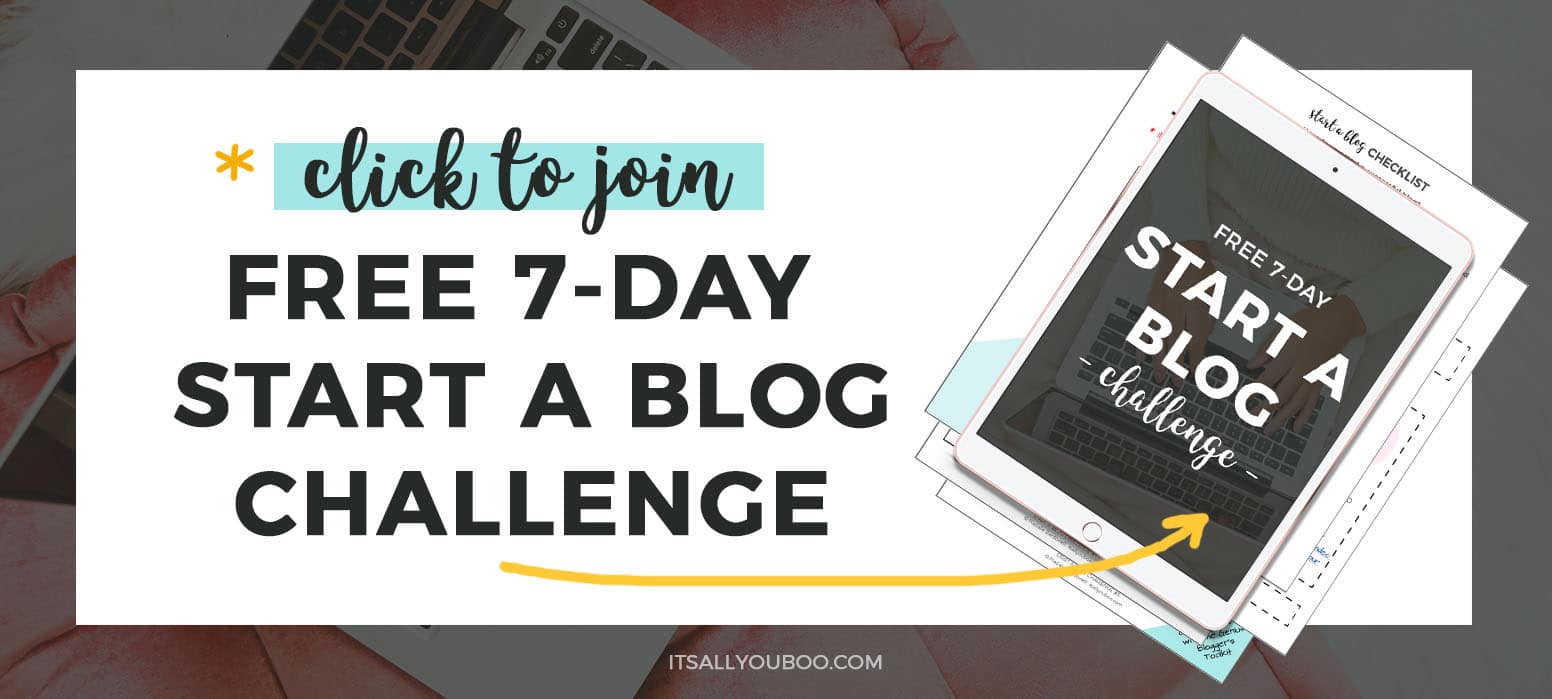
I realized most newbie bloggers feel this way becaus e they’re not approaching blogging from a business mindset .
When you treat your blog like a business from the get-go, your vision for your blog becomes clear.
And the way you do that is by creating a superstar blog business plan you can refer back to whenever you’re feeling even a tad confused. Business plans exist to keep business owners on track.
Below, I’ve outlined the *most* important steps to create a stellar blog business plan that’ll give you clarity, vision, and direction.
Ready for a fresh look at your blogging dreams?
Then let’s begin with Step 1 below.
This post contains affiliate links. If you make a purchase from these links, I may earn a commission. You can read my full disclaimer here .
6 steps to creating a blog business plan, step #1: define your brand identity.
Branding isn’t just your visuals and how your blog looks. It’s how your blog makes your audience feel.
So, how does good branding relate to your blog business plan? Believe it or not, a successful brand boosts customer loyalty and improves your blog’s relatability.
Think of good branding as the way your audience connects to your brand. The stronger the connection, the better the brand loyalty your audience has.
Every successful blog has a defined brand identity . You can get a glimpse of a blog’s brand identity based on personality traits that come to mind when you interact with a brand.
Let’s take a look at the brand identity of It’s All You Boo:

What are some brand personality traits that come to mind when you read this snippet from Nadalie’s homepage?
- Trustworthy
Notice how these personality traits make Nadalie, and her blog feel soo approachable. You relate to Nadalie almost immediately just based on her warm introduction on her homepage, making you want to stick around her blog for more.
Blog Business Plan Action Step 1:
Define the top 5 personality traits you want people to associate with your blog. Make sure these are traits you value, too, since you’re going to be the face of your blogging brand. Down the line, make sure each interaction you have with your readers allows those personality traits to shine through.
Step #2: Research Your Niche
If you’re just starting out blogging, how do you know what’s the “standard” for your niche?
How do you know the kinds of services bloggers in your niche provide? Or the way these bloggers monetize their blogs?
An essential step of creating a blog business plan is knowing your niche inside-out.
Here’s the good news:
Getting to know your blogging niche is easier than you think. Why? Because you have a world of successful bloggers in your niche already!
Here’s what to look for when you’re doing niche research:
- The blog’s target audience : who the blog is written for (you can usually find this on the homepage or about page)
- Any opt-in offers : the lead magnets the blog owner uses to get visitors to subscribe
- Monetization methods : how the blog owner monetizes his or her blog
- Product and service price points : the services and/or products the blog has for sale and how much they cost
- Your opportunities : anywhere you feel the blog doesn’t provide full value (this is where you can fill in the gap with your own blog)
Great business owners understand the standard for their market and niche so that they know exactly how to stand out. This step is crucial in your blog business plan.
Let’s say I’m a budding food blogger, and I want to get to know my niche better. I’ll do some research on several big food blogs. I know a popular food blog is Pinch of Yum :
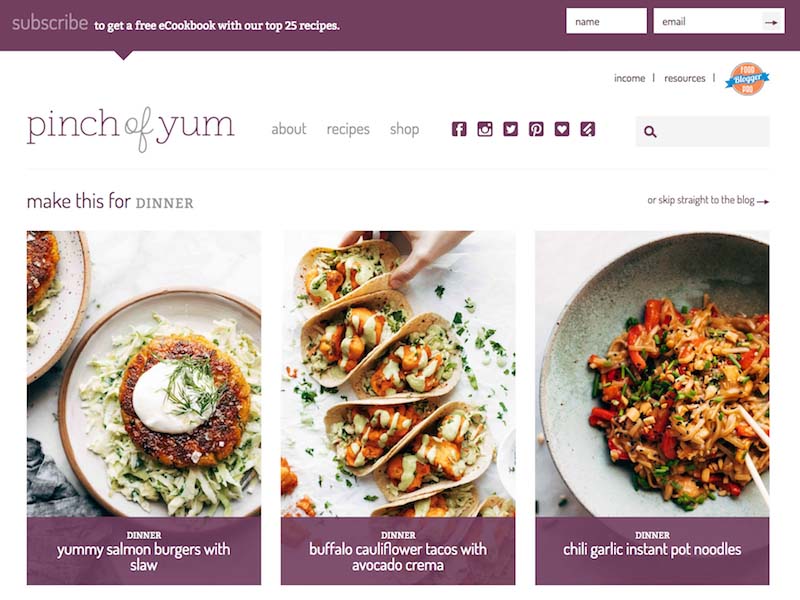
Based on my research, I find:
- The blog’s target audience : people who want to cook simple and healthy recipes
- Any opt-in offers : one primary lead magnet for a free e-cookbook featuring a collection of top 25 recipes from the blog
- Monetization methods : display advertising, food blogging online course, affiliate marketing, brand partnerships/sponsorships
- Product and service price points : food blogging online course (price unknown — the course is closed for now — but estimating it is $499+)
- Your opportunities : hard to say; Pinch of Yum has great photography, recipes, and resources. However, they offer one main lead magnet — a collection of recipes — maybe there’s a better lead magnet I can offer here? Maybe a grocery list plus a collection of recipes?
See how much information you can gain just by doing a bit of research from one blog?
The lesson? Get to know your niche!
You’ll be happy you did, and you’ll be prepared to take on the gaps in value for your audience.
Blog Business Plan Action Step 2 :
Research 5 top blogs in your niche . Get to understand their target audience, their opt-in offers, monetization methods, product and services they offer, and opportunities where you can do better.
Step #3: Create Your USP
Ah, the USP. So misunderstood.
And so often neglected by new bloggers as part of their new blog business plan.
What’s a USP, you ask?
World-famous business strategist Jay Abraham couldn’t put it any better in his book, Getting Everything You Can Out of All You’ve Got :
“You must identify and understand what it is you or your company do or can start doing for your clients that provides them with a result or an advantage superior to the competition’s. This is called the unique selling proposition (USP).”
The USP is what sets you apart. It’s the thing you want to be known for.
It’s the thing you will be known for as your blogging biz grows. If you define your USP early on, you’ll be clear on the value you provide in your blog.
If you don’t define your blog’s USP, then you’re in big danger of confusing not only your audience but also yourself!
So, think about what it is you want to be known for. Do you…
- Want to have the most comprehensive collection of blog content for your niche?
- Get your audience’s fitness results in 30 minutes or less a day?
- Have the first-ever (proven) system for beating procrastination?
- Have lead magnets that are as good as paid products?
Example time:
Can you figure out what Natalie Bacon’s USP is based on her homepage ?
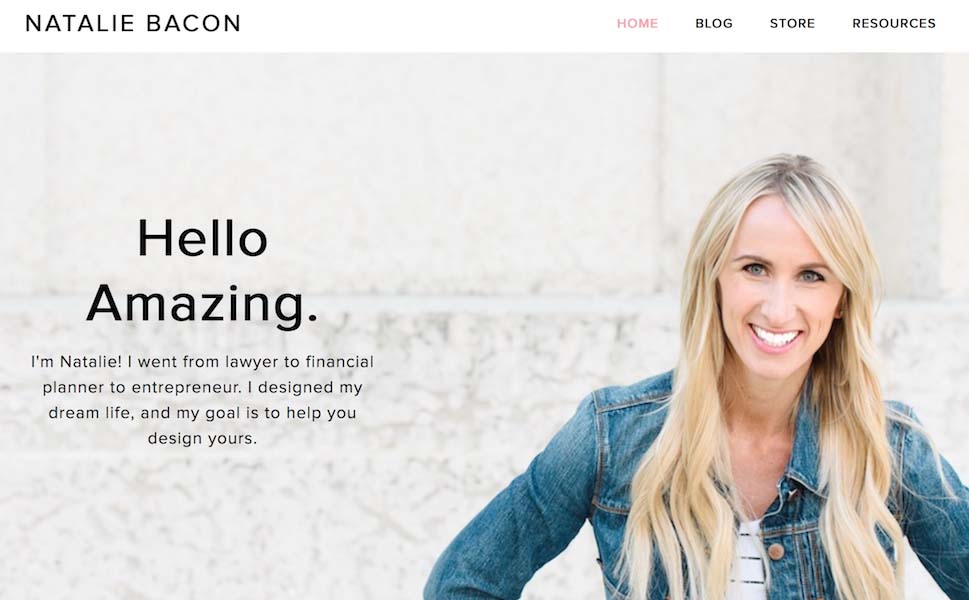
Natalie offers blogging and marketing advice on her blog. But a lot of other bloggers do, too! How is she differentiating herself from the competition?
By having a USP.
Her blog’s USP is along the lines of: “A blog that helps you redesign your life by teaching you how to build a blog.”
Natalie approaches teaching blogging from a lifestyle design aspect. This is what sets her apart and makes her stand out in her niche.
There are limitless ways you can frame your USP for your blogging biz. Follow the exercise below to get ideas for yours.
Blog Business Plan Action Step 3:
Define your USP! Jot down 10 different ways you can differentiate your blog from the competition. Just keep writing, even if the ideas sound crazy. Glance over your brainstorm when you’re done and ask yourself: What do I want my blog to be known for?
Step #4: Get to Know Your Audience
Your audience is what keeps your business moving. Treat them right, and you’ll treat your business.
The same goes for the converse: Neglect your audience, and you’ll neglect your business.
That’s why it’s key to get to know your audience like the back of your hand.
After all, if you don’t “get” your audiences biggest wishes, desires, pain points, dreams, hopes, fears, and pet peeves, how will you possibly provide services and products they’ll need?
Doing a bit of research on your target audience goes a long way in your blog business plan.
Don’t have an audience yet because you just started blogging? That’s totally ok.
You can get to know your would-be audience by checking out the comments in popular blog posts in your niche .
Chances are, you’re solving similar problems as your competitors (but differently, of course). You can infer what your audience’s biggest problems will be based on what they talk about on fellow blogs in your niche.
Go back to the blogs you researched in Step 2 and find their most popular blog posts . Check out the comments section and start to get a feel for how your audience talks and the issues they struggle with the most.
Let’s say I was starting a blog that teaches how to be a successful blogger. Here’s one comment I found from a blog post titled, How to Write A Blog Business Plan .
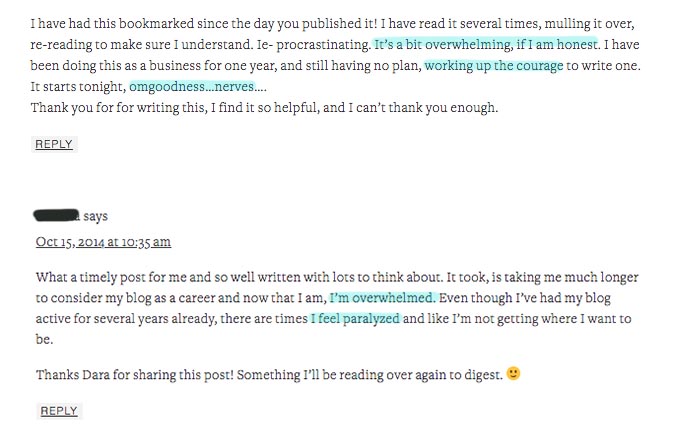
Notice the wealth of info you get just from one blog comment.
Specifically, look at the highlighted part: The reader says, “It’s a bit overwhelming if I am honest…”
From this one comment, we’ve learned that people who have already started their blog procrastinate writing a blog business plan. It seems overwhelming and scary to start, feelings echoed in multiple comments.
You now have inspiration for a series of blog posts, lead magnets, and even a paid product just by paying attention to what people are struggling with in blog comments.
Blog Business Plan Action Step 4:
Read through the comments from a popular blog post in your niche. Write down 10-15 things (big or small) readers in your niche seem to be struggling with. You can quote them directly, too.
Step #5: Decide How You Want to Make Money
You wouldn’t have a blog business plan if you didn’t know how you’d make money, right?
Thankfully, there are tons of way to monetize a new blog .
And no: You don’t need thousands of page views to make money on your blog.
You don’t need to sell a high-priced course.
Nor do you need to become an affiliate for every affiliate program out there.
You just need to see what works best in your niche (based on research you did in Step 2) and go from there.
Here are some common ways to monetize a blog, to get you started:
- Display advertising
- Brand sponsorships
- Influencer marketing
- Paid products
- Online stores : physical products
- Dropshipping
- Online stores: printables and digital products
- Affiliate marketing
I’ve found that most niches do well to start with a small introductory product, like a mini-course or an ebook, in the price range of $7 to $37.
How do you come up with an idea for a product?
Go back to the blog comments you found in Step 4! There’s plenty of inspiration in them for a paid product.
And the best part is that you know your audience is genuinely struggling with this problem because they’ve voiced it in the comments.
Blog Business Plan Action Step 5:
Go back to the comments you found in Step 4. See if you can group several of those comments together based on a central problem readers are trying to solve. See how you can package the solutions to these problems as a small information product (<$37).
Step #6: Follow a Doable Social Media Marketing Strategy
You need to know how you’re going to get traffic to your blog. That’s why every blog business plan needs a doable marketing strategy.
Many newbie bloggers make the mistake of trying to be everywhere on social media.
They’ll start a Pinterest account and start pinning.
They’ll post to their Facebook page 2x a day.
Or they’ll tweet 17 random quotes and generic links back to their blog.
Here’s the problem with this approach: You’ll burn yourself out just as quickly as you started your blog!
Here’s the reality: You do not need to be *everywhere* on social media.
You just need to master one social media platform from the start . Why is that?
Because every social media platform requires a certain skill-set for you to learn to grab that social traffic and redirect it back to your blog.
Successful bloggers know where to place their emphasis on social media from the start. Take a look at how active Adrian of Adrian’s Crazy Life is on Pinterest:
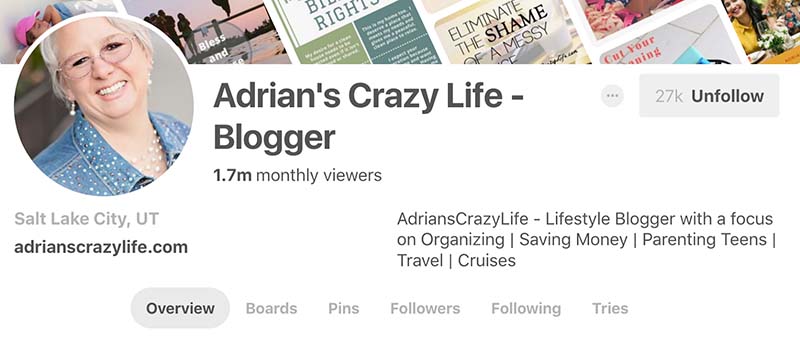
- 1.7 million monthly viewers on her Pinterest profile, with 27,000 followers.
- And her Facebook profile? 363 ‘Likes’ from the date I wrote this post.
Now, this doesn’t mean the monthly viewers on your Pinterest profile or your follower numbers are a sign of blogging success (most of these numbers are vanity metrics).
I’m showing you these numbers to prove that smart bloggers choose where they spend their time the most on social media. Pinterest clearly gives Adrian good results, which is why she spends most of her time there.
I suggest beginner bloggers start off with Pinterest because it’s relatively easy to grow your organic traffic on Pinterest compared to other platforms.
Blog Business Plan Action Step 6:
Start your Pinterest business account or current your current profile to a business one (it’s free). Add searchable keywords to your name and Pinterest page description. Next, create boards related to your blogging niche with searchable keywords, too. Start to pin relevant content (starting at 15 pins/day) to these boards, including your own. Do this consistently, and you’ll build your Pinterest traffic over time.
How to Create a Blog Business Plan
If you want to have a clear vision on your blog, then a solid blog business plan is a must.
Just to recap, here were the steps to creating a stellar one:
- Define your brand identity
- Research your niche
- Create your USP
- Get to know your audience
- Decide how you want to make money
- Follow a doable social media marketing strategy
Take the FREE Start a Blog Challenge
Ready to create a successful blog? Sign up for the FREE 7-Day Start a Blog Challenge , with daily video lessons, tech training and printable workbook.

Sign up below to join the free challenge + get weekly tips to help you slay your goals. Privacy Policy
Have any questions about your blog business plan?
Having trouble finding a profitable blogging niche?
Maybe you need some clarification on your blog strategy?
Then ask away in the comments below!

Ready to create your blog business plan?

More About Guest Contributor
Alex runs the marketing blog, Unicorn Copy. Want to work out your blog’s business plan even more? Connect with her.
Last Updated on July 11, 2021
Join the FREE Start a Blog Challenge

+ get weekly tips to help you slay your goals.
Privacy Policy
Success! Now check your email to confirm your subscription.
There was an error submitting your subscription. Please try again.
Share or save for later!
Nadalie Bardo
Nadalie Bardo is here to help you slay your goals, so you can pursue your boss life with confidence + action. As the Founder of It's All You Boo, a personal development blog, she curates the very best content to keep you motivated and inspired to slay your goals in life and business. Her first book, Conquer Procrastination, is now available wherever books are sold, including Amazon and Barnes & Noble. Nadalie is also the creator of the Slay Your Goals Planner, the only planner dedicated to helping you actually achieve your goals.
Looking for something?
Trending topics.
Goal Setting • College Student Life • Get Motivated • Be More Productive • Change Your Mindset • Improve Your Mental Health • Develop Good Habits • Inspirational Quotes • Self-Love & Care • Organize Your Life • Be Your Own Boss • Manage Your Money
MY FAV TOOLS
Amazon storefront, slay your goals planner, positive mindset mantras, goal setting 101, #goalslayer program, 📦 conquer procrastination book 📘, pinterest courses + pin templates📌, want to connect, become an affiliate, pin with me, submit a guest post.
Get access to over 25 resources + weekly tips to help you slay your goals.
Privacy Policy.
BECOME A VIP
Get your FREE 10-Step Guide
+ weekly tips to help you slay your goals
Take the FREE Challenge
Sign up below to join us LIVE Weds, December 11th @ 8pm EST
+ get access to the replay
Sign up below to plan your personal goals for 2020.
+ get tips to help you slay your goals
Sign up below to join my FREE 7-Day Challenge!
Sign up below to start the FREE Masterclass.
Get your FREE Printable Workbook
Get your FREE Printable Checklist
Sign up below to join us LIVE Weds., March 6th @ 8pm EST
Sign up below to plan your online blog and business goals.
How to Build a Detailed Business Plan That Stands Out [Free Template]
Updated: March 29, 2022
Published: March 11, 2022
While starting a company may seem easier now than ever before, entrepreneurs have an uphill battle from the moment they start a business. And without a clear, actionable business plan for selling, marketing, finances, and operations, you're almost destined to face significant challenges.

This is why crafting a business plan is an essential step in the entrepreneurial process.
In this post, we'll walk you through the process of filling out your business plan template, like this free, editable version :

Download a free, editable one-page business plan template.
We know that when looking at a blank page on a laptop screen, the idea of writing your business plan can seem impossible. However, it's a mandatory step to take if you want to turn your business dreams into a reality.

That's why we've crafted a business plan template for you to download and use to build your new company. You can download it here for free . It contains prompts for all of the essential parts of a business plan, all of which are elaborated on, below.
This way, you'll be able to show them how organized and well-thought-out your business idea is, and provide them with answers to whatever questions they may have.
.webp)
Free Business Plan Template
The essential document for starting a business -- custom built for your needs.
- Outline your idea.
- Pitch to investors.
- Secure funding.
- Get to work!
You're all set!
Click this link to access this resource at any time.
Building a Successful Business Plan
In the next section, we'll cover the components of a business plan , such as an executive summary and company description. But before we get to that, let's talk about key elements that should serve as building blocks for your plan.
For some entrepreneurs, the thought of writing a business plan sounds like a chore — a necessary means to an end. But that's a bad take.
A solid business plan is a blueprint for success . It's key to securing financing, presenting your business, outlining your financial projections, and turning that nugget of a business idea into a reality.
At the core, your business plan should answer two questions: why your business and why now?
Investors want to know why your business is entering the market, i.e. what problem it's solving and how it's different from what's currently out there. They also want to know why now is the right time for your type of product or service.
At a minimum, your plan should:
- Be more realistic than idealistic: Too often, business plans focus too much on how things could be instead of how they are. While having a vision is important, your plan needs to be rooted in research and data.
- Legitimize your business idea : If an idea fails on paper, it's a signal to go back to the drawing board. In doing so, you avoid losing precious time or money chasing an unrealistic idea.
- Position your business for funding: To get your business off the ground, chances are you'll need financial backing. Even with a solid business idea, investors, lenders, and banks still need convincing. An effective business plan will outline how much money you need, where it's going, what targets you will hit, and how you plan to repay any debts.
- Lay the foundation: Investors focus on risk – if anything looks shaky, it could be a dealbreaker. Ideally, your business plan will lay down the foundation for how you'll operate your business — from operational needs to financial projections and goals.
- Communicate your needs: It's nearly impossible to communicate your needs if you don't know what they are first. Of course, a business’ needs are always changing — but your plan should give you a well-rounded view of how your business will work in the short and long term.
So back to the question of why and why now – consider three things:
- Your industry – How does your product or service fit within your industry? Are you targeting a specific niche? Where do you see the industry going in the next five to 10 years?
- Your target audience – Who are you targeting? What challenges are they facing? How will your product or service help them in their daily lives?
- Your unique selling proposition (USP) – What sets you apart from your competitors? Is it your product/service features? Your company values? Price?
Once you know the answers to these questions, you'll be equipped to answer the question: why your business and why now.
How to Build a Business Plan
- Executive Summary
- Company and Business Description
- Product and Services Line
- Market Analysis
- Marketing Plan
- Legal Notes
- Financial Considerations
Featured Resource: Free Business Plan Template
1. cover page.
Your business plan should be prefaced with an eye-catching cover page. This means including a high-resolution image of your company logo, followed by your company's name, address, and phone number.
Since this business plan will likely change hands and be seen by multiple investors, you should also provide your own name, role in the business, and email address on the cover page.
At the bottom of this page, you can also add a confidentiality statement to protect against the disclosure of your business details.
The statement can read as follows: " This document contains confidential and proprietary information created by [your company name]. When receiving this document, you agree to keep its content confidential and may only reproduce and/or share it with express written permission of [your company name] ."
Remember to keep your cover page simple and concise — and save the important details for other sections.
Why it matters: First impressions are everything, and a clean cover page is the first step in the right direction.
Example of a Cover Page

2. Executive Summary
The executive summary of your business plan provides a one- to two-page overview of your business and highlights the most crucial pieces of your plan, such as your short-term and long-term goals.
The executive summary is essentially a boiled-down version of your entire business plan, so remember to keep this section to the point and filled only with essential information.
Typically, this brief section includes:
- A mission statement.
- The company's history and leadership model.
- An overview of competitive advantage(s).
- Financial projections.
- Company goals.
- An ask from potential investors.
Why it matters: The executive summary is known as the make-or-break section of a business plan. It influences whether investors turn the page or not — so effectively summarizing your business and the problem it hopes to solve is a must.
Think of the Summary as a written elevator pitch (with more detail). While your business plan provides the nitty-gritty details, your Summary describes — in a compelling but matter-of-fact language — the highlights of your plan. If it's too vague, complicated, or fuzzy, you may need to scrap it and start again.
Example of an Executive Summary Introduction
"The future looks bright for North Side Chicago, particularly the Rock Hill Neighborhood. A number of high-end commercial and residential developments are well on their way, along with two new condo developments in nearby neighborhoods.
While the completion of these developments will increase the population within the neighborhood and stimulate the economy, the area lacks an upscale restaurant where residents and visitors can enjoy fine food and drink. Jay Street Lounge and Restaurant will provide such a place."
3. Company & Business Description
In this section, provide a more thorough description of what your company is and why it exists.

The bulk of the writing in this section should be about your company's purpose – covering what the business will be selling, identifying the target market, and laying out a path to success.
In this portion of your business plan, you can also elaborate on your company's:
- Mission statement
- Core values
- Team and organizational structure
Why it matters: Investors look for great structures and teams in addition to great ideas. This section gives an overview of your businesses' ethos. It's the perfect opportunity to set your business apart from the competition — such as your team's expertise, your unique work culture, and your competitive advantage.
Example of a Values/Mission Statement
"Jay Street Lounge and Restaurant will be the go-to place for people to get a drink or bite in an elegant, upscale atmosphere. The mission is to be North Side's leading restaurant, with the best tasting food and the highest quality service."
3. Product & Services Line
Here's where you'll cover the makeup of your business's product and/or services line. You should provide each product or service's name, its purpose, and a description of how it works (if appropriate). If you own any patents, copyrights, or trademarks, it's essential to include this info too.
Next, add some color to your sales strategy by outlining your pricing model and mark-up amounts.
If you're selling tangible products, you should also explain production and costs, and how you expect these factors to change as you scale.
Why it matters: This section contains the real meat of your business plan. It sets the stage for the problem you hope to solve, your solution, and how your said solution fits in the market.
There's no one-size-fits-all formula for this section. For instance, one plan may delve into its ability to market in a more cost-effective way than the competition, whereas another plan focuses on its key products and their unique features and benefits.
Regardless of your angle, it's critical to convey how your offerings will differ from the competition.
Example of a Product/Service Offering
"The menu at Jay Street Lounge and Restaurant will focus on Moroccan cuisine. The stars of the menu (our specialties) are the Moroccan dishes, such as eggplant zaalouk, seafood bastilla, tagine, and chickpea stew. For those who enjoy American dishes, there will also be a variety of options, from burger sliders and flatbread pizza to grilled steak and salads.
The food at Jay Street will have premium pricing to match its upscale atmosphere. During the summer months, the restaurant will have extra seating on the patio where clients can enjoy a special summer menu. We will be open on all days of the week."
4. Market Analysis

It helps to reference your market research documentation in this section, like a Porter's Five Forces Analysis or a SWOT Analysis ( templates for those are available here ). You can also include them in your appendix.
If your company already has buyer personas, you should include them here as well. If not, you can create them right now using the Make My Persona Tool .
Why it matters: Having an awesome product is, well, awesome — but it isn't enough. Just as important, there must be a market for it.
This section allows you to dig deeper into your market, which segments you want to target, and why. The "why" here is important, since targeting the right segment is critical for the success and growth of your business.
It's easy to get lost (or overwhelmed) in a sea of endless data. For your business plan, narrow your focus by answering the following questions:
- What is my market? In other words, who are my customers?
- What segments of the market do I want to target?
- What's the size of my target market?
- Is my market likely to grow?
- How can I increase my market share over time?
Example of a Market Analysis
"Jay Street Lounge and Restaurant will target locals who live and work within the Rock Hill Neighborhood and the greater North Side Chicago area. We will also target the tourists who flock to the many tourist attractions and colleges on the North Side.
We will specifically focus on young to middle-aged adults with an income of $40,000 to $80,000 who are looking for an upscale experience. The general demographics of our target market are women between 20 to 50 years old.
A unique and varied Moroccan-American menu, along with our unique upscale atmosphere, differentiates us from competitors in the area. Jay Street will also set itself apart through its commitment to high-quality food, service, design, and atmosphere."
5. Marketing Plan
Unlike the market analysis section, your marketing plan section should be an explanation of the tactical approach to reaching your aforementioned target audience. List your advertising channels, organic marketing methods, messaging, budget, and any relevant promotional tactics.
If your company has a fully fleshed-out marketing plan, you can attach it in the appendix of your business plan. If not, download this free marketing plan template to outline your strategy.

Free Marketing Plan Template
Outline your company's marketing strategy in one simple, coherent plan.
- Pre-Sectioned Template
- Completely Customizable
- Example Prompts
- Professionally Designed
Why it matters: Marketing is what puts your product in front of your customers. It's not just advertising — it's an investment in your business.
Throwing money into random marketing channels is a haphazard approach, which is why it's essential to do the legwork to create a solid marketing plan.
Here's some good news — by this point, you should have a solid understanding of your target market. Now, it's time to determine how you'll reach them.
Example of a Marketing Plan Overview
"Our marketing strategy will focus on three main initiatives:
- Social media marketing. We will grow and expand our Facebook and Instagram following through targeted social media ads.
- Website initiatives. Our website will attract potential visitors by offering updated menus and a calendar of events.
- Promotional events. Jay Street will have one special theme night per week to attract new clients."
6. Sales Plan
It doesn't matter if your sales department is an office full of business development representatives (BDR) or a dozen stores with your products on their shelves.
The point is: All sales plans are different, so you should clearly outline yours here. Common talking points include your:
- Sales team structure, and why this structure was chosen.
- Sales channels.
- Sales tools, software, and resources.
- Prospecting strategy.
- Sales goals and budget.
Like with your marketing plan, it might make sense to attach your completed sales plan to the appendix of your business plan. You can download a template for building your sales plan here .
Why it matters: Among other things, investors are interested in the scalability of your business — which is why growth strategies are a critical part of your business plan.
Your sales plan should describe your plan to attract customers, retain them (if applicable), and, ultimately, grow your business. Be sure to outline what you plan to do given your existing resources and what results you expect from your work.
Example of a Sales Plan Overview
"The most important goal is to ensure financial success for Jay Street Lounge and Restaurant. We believe we can achieve this by offering excellent food, entertainment, and service to our clients.
We are not a low-cost dining option in the area. Instead, the food will have premium pricing to match its upscale feel. The strategy is to give Jay Street a perception of elegance through its food, entertainment, and excellent service."
7. Legal Notes
Your investors may want to know the legal structure of your business, as that could directly impact the risk of their investments. For example, if you're looking for business partners to engage in a non-corporation or LLC partnership, this means they could be on the line for more than their actual investment.
Because this clarification is often needed, explain if you are and/or plan to become a sole proprietor, partnership, corporation, LLC, or other.
You should also outline the steps you have taken (or will need to take) to operate legally. This includes licenses, permits, registrations, and insurance.
The last thing your investor wants to hear after they've sent you a big chunk of change is that you're operating without proper approval from the local, state, or federal government.
Why it matters: The last thing your investor wants to hear after they've sent you a big chunk of change is that you're operating without proper approval from the local, state, or federal government.
Example of Legal Notes
"Jay Street Lounge and Restaurant is up-to-date on all restaurant licenses and health permits. Our business name and logo are registered trademarks, presenting the possibility of expanding locally."
8. Financial Considerations
Ultimately, investors want to know two things:
- When they will earn their money back.
- When they will start seeing returns on their initial investment.
That said, be clear, calculated, and convincing in this section. It should cover:
- Startup costs.
- Sales forecasts for the next several months/quarters.
- Break-even analysis for time and dollars.
- Projected profit and loss (P&L) statement.
Facts and figures are key here, so be as specific as possible with each line item and projection. In addition, explain the "why" behind each of these sections.
However, keep in mind that information overload is a risk, especially when it comes to data. So, if you have pages upon pages of charts and spreadsheets for this section, distill them into a page or two and include the rest of the sheets in the appendix. This section should only focus on key data points.
Why it matters: One of the most important aspects of becoming "investor ready" is knowing your numbers. More importantly, you need to understand how those numbers will enhance your business.
While it's easy to write a number down on paper, it's more important to understand (and communicate) why you need capital, where it's going, and that your evaluation makes sense.
Example of Financial Projections
"Based on our knowledge and experience in the restaurant industry, we have come up with projections for the business.
Starting with an expenditure of $400,000 in year 1, we forecast sales of $1,500,000 and $2,800,000 for years two and three. We expect to achieve a net profit of 15% by year three."
9. Appendix
A detailed and well-developed business plan can range anywhere from 20 to 50 pages, with some even reaching upward of 80.
In many cases, the appendix is the longest section. Why? Because it includes the supportive materials mentioned in previous sections. To avoid disrupting the flow of the business plan with visuals, charts, and spreadsheets, business owners usually add them in the last section, i.e. the appendix.
Aside from what we've already mentioned – marketing plan, sales plan, department budgets, financial documents – you may also want to attach the following in the appendix:
- Marketing materials
- Market research data
- Licensing documentation
- Branding assets
- Floor plans for your location
- Mockups of your product
- Renderings of your office space or location design
Adding these pieces to the appendix enriches the reader's understanding of your business and proves you've put the work into your business plan without distracting from the main points throughout the plan.
Why it matters: An appendix helps the reader do their due diligence. It contains everything they need to support your business plan.
Keep in mind, however, that an appendix is typically necessary only if you're seeking financing or looking to attract business partners.
Use a Business Plan Template to Get Started
Writing a business plan shouldn't be an insurmountable roadblock to starting a business. Unfortunately, for all too many, it is.
That's why we recommend using our free business plan template. Pre-filled with detailed section prompts for all of the topics in this blog post, we're confident this template will get your business plan started in the right direction.
Editor's note: This post was originally published in June 2017 and has been updated for comprehensiveness.

Don't forget to share this post!
Related articles.
![how to make a blog business plan How to Calculate Your Lead Generation Goals [Free Calculator]](https://blog.hubspot.com/hubfs/lead-generation-goal-calculator_5.webp)
How to Calculate Your Lead Generation Goals [Free Calculator]

What Are Direct Costs & How Do They Differ From Indirect Costs?
![how to make a blog business plan How to Write a Business Plan: A Step-by-Step Guide [Examples + Template]](https://blog.hubspot.com/hubfs/how%20to%20write%20a%20business%20plan.jpg)
How to Write a Business Plan: A Step-by-Step Guide [Examples + Template]

9 Handy Business Calculators That’ll Make Your Life Easier
![how to make a blog business plan The Definition of CAC [In Under 100 Words]](https://blog.hubspot.com/hs-fs/hub/53/file-1053926490-jpg/calculate_CAC_%28blog%29.jpg)
The Definition of CAC [In Under 100 Words]
![how to make a blog business plan How to Calculate Next Month's Lead Gen Goal [Quick Tip]](https://blog.hubspot.com/hs-fs/hub/53/file-703140114-jpg/Blog_Thinkstock_Images/calculate_monthly_goals.jpg)
How to Calculate Next Month's Lead Gen Goal [Quick Tip]
![how to make a blog business plan How to Calculate the Value of Your Social Media Followers [CALCULATOR]](https://blog.hubspot.com/hs-fs/hub/53/file-23155342-png/blog/images/voal-snapshot.png)
How to Calculate the Value of Your Social Media Followers [CALCULATOR]
![how to make a blog business plan A Simple Calculator to Determine Your Monthly Traffic & Leads Goals [Template]](https://blog.hubspot.com/hs-fs/hub/53/file-23127769-png/blog/images/leads-goal-calculator1.png)
A Simple Calculator to Determine Your Monthly Traffic & Leads Goals [Template]

How to Calculate & Track a Leads Goal That Sales Supports
2 Essential Templates For Starting Your Business
Marketing software that helps you drive revenue, save time and resources, and measure and optimize your investments — all on one easy-to-use platform
- Sources of Business Finance
- Small Business Loans
- Small Business Grants
- Crowdfunding Sites
- How to Get a Business Loan
- Small Business Insurance Providers
- Best Factoring Companies
- Types of Bank Accounts
- Best Banks for Small Business
- Best Business Bank Accounts
- Open a Business Bank Account
- Bank Accounts for Small Businesses
- Free Business Checking Accounts
- Best Business Credit Cards
- Get a Business Credit Card
- Business Credit Cards for Bad Credit
- Build Business Credit Fast
- Business Loan Eligibility Criteria
- Small-Business Bookkeeping Basics
- How to Set Financial Goals
- Business Loan Calculators
- How to Calculate ROI
- Calculate Net Income
- Calculate Working Capital
- Calculate Operating Income
- Calculate Net Present Value (NPV)
- Calculate Payroll Tax
How to Write a Business Plan in 9 Steps (+ Template and Examples)
Every successful business has one thing in common, a good and well-executed business plan. A business plan is more than a document, it is a complete guide that outlines the goals your business wants to achieve, including its financial goals . It helps you analyze results, make strategic decisions, show your business operations and growth.
If you want to start a business or already have one and need to pitch it to investors for funding, writing a good business plan improves your chances of attracting financiers. As a startup, if you want to secure loans from financial institutions, part of the requirements involve submitting your business plan.
Writing a business plan does not have to be a complicated or time-consuming process. In this article, you will learn the step-by-step process for writing a successful business plan.
You will also learn what you need a business plan for, tips and strategies for writing a convincing business plan, business plan examples and templates that will save you tons of time, and the alternatives to the traditional business plan.
Let’s get started.
What Do You Need A Business Plan For?
Businesses create business plans for different purposes such as to secure funds, monitor business growth, measure your marketing strategies, and measure your business success.
1. Secure Funds
One of the primary reasons for writing a business plan is to secure funds, either from financial institutions/agencies or investors.
For you to effectively acquire funds, your business plan must contain the key elements of your business plan . For example, your business plan should include your growth plans, goals you want to achieve, and milestones you have recorded.
A business plan can also attract new business partners that are willing to contribute financially and intellectually. If you are writing a business plan to a bank, your project must show your traction , that is, the proof that you can pay back any loan borrowed.
Also, if you are writing to an investor, your plan must contain evidence that you can effectively utilize the funds you want them to invest in your business. Here, you are using your business plan to persuade a group or an individual that your business is a source of a good investment.
2. Monitor Business Growth
A business plan can help you track cash flows in your business. It steers your business to greater heights. A business plan capable of tracking business growth should contain:
- The business goals
- Methods to achieve the goals
- Time-frame for attaining those goals
A good business plan should guide you through every step in achieving your goals. It can also track the allocation of assets to every aspect of the business. You can tell when you are spending more than you should on a project.
You can compare a business plan to a written GPS. It helps you manage your business and hints at the right time to expand your business.
3. Measure Business Success
A business plan can help you measure your business success rate. Some small-scale businesses are thriving better than more prominent companies because of their track record of success.
Right from the onset of your business operation, set goals and work towards them. Write a plan to guide you through your procedures. Use your plan to measure how much you have achieved and how much is left to attain.
You can also weigh your success by monitoring the position of your brand relative to competitors. On the other hand, a business plan can also show you why you have not achieved a goal. It can tell if you have elapsed the time frame you set to attain a goal.
4. Document Your Marketing Strategies
You can use a business plan to document your marketing plans. Every business should have an effective marketing plan.
Competition mandates every business owner to go the extraordinary mile to remain relevant in the market. Your business plan should contain your marketing strategies that work. You can measure the success rate of your marketing plans.
In your business plan, your marketing strategy must answer the questions:
- How do you want to reach your target audience?
- How do you plan to retain your customers?
- What is/are your pricing plans?
- What is your budget for marketing?

How to Write a Business Plan Step-by-Step
1. create your executive summary.
The executive summary is a snapshot of your business or a high-level overview of your business purposes and plans . Although the executive summary is the first section in your business plan, most people write it last. The length of the executive summary is not more than two pages.

Generally, there are nine sections in a business plan, the executive summary should condense essential ideas from the other eight sections.
A good executive summary should do the following:
- A Snapshot of Growth Potential. Briefly inform the reader about your company and why it will be successful)
- Contain your Mission Statement which explains what the main objective or focus of your business is.
- Product Description and Differentiation. Brief description of your products or services and why it is different from other solutions in the market.
- The Team. Basic information about your company’s leadership team and employees
- Business Concept. A solid description of what your business does.
- Target Market. The customers you plan to sell to.
- Marketing Strategy. Your plans on reaching and selling to your customers
- Current Financial State. Brief information about what revenue your business currently generates.
- Projected Financial State. Brief information about what you foresee your business revenue to be in the future.
The executive summary is the make-or-break section of your business plan. If your summary cannot in less than two pages cannot clearly describe how your business will solve a particular problem of your target audience and make a profit, your business plan is set on a faulty foundation.
Avoid using the executive summary to hype your business, instead, focus on helping the reader understand the what and how of your plan.
View the executive summary as an opportunity to introduce your vision for your company. You know your executive summary is powerful when it can answer these key questions:
- Who is your target audience?
- What sector or industry are you in?
- What are your products and services?
- What is the future of your industry?
- Is your company scaleable?
- Who are the owners and leaders of your company? What are their backgrounds and experience levels?
- What is the motivation for starting your company?
- What are the next steps?
Writing the executive summary last although it is the most important section of your business plan is an excellent idea. The reason why is because it is a high-level overview of your business plan. It is the section that determines whether potential investors and lenders will read further or not.
The executive summary can be a stand-alone document that covers everything in your business plan. It is not uncommon for investors to request only the executive summary when evaluating your business. If the information in the executive summary impresses them, they will ask for the complete business plan.
If you are writing your business plan for your planning purposes, you do not need to write the executive summary.
2. Add Your Company Overview
The company overview or description is the next section in your business plan after the executive summary. It describes what your business does.
Adding your company overview can be tricky especially when your business is still in the planning stages. Existing businesses can easily summarize their current operations but may encounter difficulties trying to explain what they plan to become.
Your company overview should contain the following:
- What products and services you will provide
- Geographical markets and locations your company have a presence
- What you need to run your business
- Who your target audience or customers are
- Who will service your customers
- Your company’s purpose, mission, and vision
- Information about your company’s founders
- Who the founders are
- Notable achievements of your company so far
When creating a company overview, you have to focus on three basics: identifying your industry, identifying your customer, and explaining the problem you solve.
If you are stuck when creating your company overview, try to answer some of these questions that pertain to you.
- Who are you targeting? (The answer is not everyone)
- What pain point does your product or service solve for your customers that they will be willing to spend money on resolving?
- How does your product or service overcome that pain point?
- Where is the location of your business?
- What products, equipment, and services do you need to run your business?
- How is your company’s product or service different from your competition in the eyes of your customers?
- How many employees do you need and what skills do you require them to have?
After answering some or all of these questions, you will get more than enough information you need to write your company overview or description section. When writing this section, describe what your company does for your customers.

The company description or overview section contains three elements: mission statement, history, and objectives.
- Mission Statement
The mission statement refers to the reason why your business or company is existing. It goes beyond what you do or sell, it is about the ‘why’. A good mission statement should be emotional and inspirational.
Your mission statement should follow the KISS rule (Keep It Simple, Stupid). For example, Shopify’s mission statement is “Make commerce better for everyone.”
When describing your company’s history, make it simple and avoid the temptation of tying it to a defensive narrative. Write it in the manner you would a profile. Your company’s history should include the following information:
- Founding Date
- Major Milestones
- Location(s)
- Flagship Products or Services
- Number of Employees
- Executive Leadership Roles
When you fill in this information, you use it to write one or two paragraphs about your company’s history.
Business Objectives
Your business objective must be SMART (specific, measurable, achievable, realistic, and time-bound.) Failure to clearly identify your business objectives does not inspire confidence and makes it hard for your team members to work towards a common purpose.
3. Perform Market and Competitive Analyses to Proof a Big Enough Business Opportunity
The third step in writing a business plan is the market and competitive analysis section. Every business, no matter the size, needs to perform comprehensive market and competitive analyses before it enters into a market.
Performing market and competitive analyses are critical for the success of your business. It helps you avoid entering the right market with the wrong product, or vice versa. Anyone reading your business plans, especially financiers and financial institutions will want to see proof that there is a big enough business opportunity you are targeting.
This section is where you describe the market and industry you want to operate in and show the big opportunities in the market that your business can leverage to make a profit. If you noticed any unique trends when doing your research, show them in this section.
Market analysis alone is not enough, you have to add competitive analysis to strengthen this section. There are already businesses in the industry or market, how do you plan to take a share of the market from them?
You have to clearly illustrate the competitive landscape in your business plan. Are there areas your competitors are doing well? Are there areas where they are not doing so well? Show it.
Make it clear in this section why you are moving into the industry and what weaknesses are present there that you plan to explain. How are your competitors going to react to your market entry? How do you plan to get customers? Do you plan on taking your competitors' competitors, tap into other sources for customers, or both?
Illustrate the competitive landscape as well. What are your competitors doing well and not so well?
Answering these questions and thoughts will aid your market and competitive analysis of the opportunities in your space. Depending on how sophisticated your industry is, or the expectations of your financiers, you may need to carry out a more comprehensive market and competitive analysis to prove that big business opportunity.
Instead of looking at the market and competitive analyses as one entity, separating them will make the research even more comprehensive.
Market Analysis
Market analysis, boarding speaking, refers to research a business carried out on its industry, market, and competitors. It helps businesses gain a good understanding of their target market and the outlook of their industry. Before starting a company, it is vital to carry out market research to find out if the market is viable.

The market analysis section is a key part of the business plan. It is the section where you identify who your best clients or customers are. You cannot omit this section, without it your business plan is incomplete.
A good market analysis will tell your readers how you fit into the existing market and what makes you stand out. This section requires in-depth research, it will probably be the most time-consuming part of the business plan to write.
- Market Research
To create a compelling market analysis that will win over investors and financial institutions, you have to carry out thorough market research . Your market research should be targeted at your primary target market for your products or services. Here is what you want to find out about your target market.
- Your target market’s needs or pain points
- The existing solutions for their pain points
- Geographic Location
- Demographics
The purpose of carrying out a marketing analysis is to get all the information you need to show that you have a solid and thorough understanding of your target audience.
Only after you have fully understood the people you plan to sell your products or services to, can you evaluate correctly if your target market will be interested in your products or services.
You can easily convince interested parties to invest in your business if you can show them you thoroughly understand the market and show them that there is a market for your products or services.
How to Quantify Your Target Market
One of the goals of your marketing research is to understand who your ideal customers are and their purchasing power. To quantify your target market, you have to determine the following:
- Your Potential Customers: They are the people you plan to target. For example, if you sell accounting software for small businesses , then anyone who runs an enterprise or large business is unlikely to be your customers. Also, individuals who do not have a business will most likely not be interested in your product.
- Total Households: If you are selling household products such as heating and air conditioning systems, determining the number of total households is more important than finding out the total population in the area you want to sell to. The logic is simple, people buy the product but it is the household that uses it.
- Median Income: You need to know the median income of your target market. If you target a market that cannot afford to buy your products and services, your business will not last long.
- Income by Demographics: If your potential customers belong to a certain age group or gender, determining income levels by demographics is necessary. For example, if you sell men's clothes, your target audience is men.
What Does a Good Market Analysis Entail?
Your business does not exist on its own, it can only flourish within an industry and alongside competitors. Market analysis takes into consideration your industry, target market, and competitors. Understanding these three entities will drastically improve your company’s chances of success.

You can view your market analysis as an examination of the market you want to break into and an education on the emerging trends and themes in that market. Good market analyses include the following:
- Industry Description. You find out about the history of your industry, the current and future market size, and who the largest players/companies are in your industry.
- Overview of Target Market. You research your target market and its characteristics. Who are you targeting? Note, it cannot be everyone, it has to be a specific group. You also have to find out all information possible about your customers that can help you understand how and why they make buying decisions.
- Size of Target Market: You need to know the size of your target market, how frequently they buy, and the expected quantity they buy so you do not risk overproducing and having lots of bad inventory. Researching the size of your target market will help you determine if it is big enough for sustained business or not.
- Growth Potential: Before picking a target market, you want to be sure there are lots of potential for future growth. You want to avoid going for an industry that is declining slowly or rapidly with almost zero growth potential.
- Market Share Potential: Does your business stand a good chance of taking a good share of the market?
- Market Pricing and Promotional Strategies: Your market analysis should give you an idea of the price point you can expect to charge for your products and services. Researching your target market will also give you ideas of pricing strategies you can implement to break into the market or to enjoy maximum profits.
- Potential Barriers to Entry: One of the biggest benefits of conducting market analysis is that it shows you every potential barrier to entry your business will likely encounter. It is a good idea to discuss potential barriers to entry such as changing technology. It informs readers of your business plan that you understand the market.
- Research on Competitors: You need to know the strengths and weaknesses of your competitors and how you can exploit them for the benefit of your business. Find patterns and trends among your competitors that make them successful, discover what works and what doesn’t, and see what you can do better.
The market analysis section is not just for talking about your target market, industry, and competitors. You also have to explain how your company can fill the hole you have identified in the market.
Here are some questions you can answer that can help you position your product or service in a positive light to your readers.
- Is your product or service of superior quality?
- What additional features do you offer that your competitors do not offer?
- Are you targeting a ‘new’ market?
Basically, your market analysis should include an analysis of what already exists in the market and an explanation of how your company fits into the market.
Competitive Analysis
In the competitive analysis section, y ou have to understand who your direct and indirect competitions are, and how successful they are in the marketplace. It is the section where you assess the strengths and weaknesses of your competitors, the advantage(s) they possess in the market and show the unique features or qualities that make you different from your competitors.

Many businesses do market analysis and competitive analysis together. However, to fully understand what the competitive analysis entails, it is essential to separate it from the market analysis.
Competitive analysis for your business can also include analysis on how to overcome barriers to entry in your target market.
The primary goal of conducting a competitive analysis is to distinguish your business from your competitors. A strong competitive analysis is essential if you want to convince potential funding sources to invest in your business. You have to show potential investors and lenders that your business has what it takes to compete in the marketplace successfully.
Competitive analysis will s how you what the strengths of your competition are and what they are doing to maintain that advantage.
When doing your competitive research, you first have to identify your competitor and then get all the information you can about them. The idea of spending time to identify your competitor and learn everything about them may seem daunting but it is well worth it.
Find answers to the following questions after you have identified who your competitors are.
- What are your successful competitors doing?
- Why is what they are doing working?
- Can your business do it better?
- What are the weaknesses of your successful competitors?
- What are they not doing well?
- Can your business turn its weaknesses into strengths?
- How good is your competitors’ customer service?
- Where do your competitors invest in advertising?
- What sales and pricing strategies are they using?
- What marketing strategies are they using?
- What kind of press coverage do they get?
- What are their customers saying about your competitors (both the positive and negative)?
If your competitors have a website, it is a good idea to visit their websites for more competitors’ research. Check their “About Us” page for more information.

If you are presenting your business plan to investors, you need to clearly distinguish yourself from your competitors. Investors can easily tell when you have not properly researched your competitors.
Take time to think about what unique qualities or features set you apart from your competitors. If you do not have any direct competition offering your product to the market, it does not mean you leave out the competitor analysis section blank. Instead research on other companies that are providing a similar product, or whose product is solving the problem your product solves.
The next step is to create a table listing the top competitors you want to include in your business plan. Ensure you list your business as the last and on the right. What you just created is known as the competitor analysis table.
Direct vs Indirect Competition
You cannot know if your product or service will be a fit for your target market if you have not understood your business and the competitive landscape.
There is no market you want to target where you will not encounter competition, even if your product is innovative. Including competitive analysis in your business plan is essential.
If you are entering an established market, you need to explain how you plan to differentiate your products from the available options in the market. Also, include a list of few companies that you view as your direct competitors The competition you face in an established market is your direct competition.
In situations where you are entering a market with no direct competition, it does not mean there is no competition there. Consider your indirect competition that offers substitutes for the products or services you offer.
For example, if you sell an innovative SaaS product, let us say a project management software , a company offering time management software is your indirect competition.
There is an easy way to find out who your indirect competitors are in the absence of no direct competitors. You simply have to research how your potential customers are solving the problems that your product or service seeks to solve. That is your direct competition.
Factors that Differentiate Your Business from the Competition
There are three main factors that any business can use to differentiate itself from its competition. They are cost leadership, product differentiation, and market segmentation.
1. Cost Leadership
A strategy you can impose to maximize your profits and gain an edge over your competitors. It involves offering lower prices than what the majority of your competitors are offering.
A common practice among businesses looking to enter into a market where there are dominant players is to use free trials or pricing to attract as many customers as possible to their offer.
2. Product Differentiation
Your product or service should have a unique selling proposition (USP) that your competitors do not have or do not stress in their marketing.
Part of the marketing strategy should involve making your products unique and different from your competitors. It does not have to be different from your competitors, it can be the addition to a feature or benefit that your competitors do not currently have.
3. Market Segmentation
As a new business seeking to break into an industry, you will gain more success from focusing on a specific niche or target market, and not the whole industry.
If your competitors are focused on a general need or target market, you can differentiate yourself from them by having a small and hyper-targeted audience. For example, if your competitors are selling men’s clothes in their online stores , you can sell hoodies for men.
4. Define Your Business and Management Structure
The next step in your business plan is your business and management structure. It is the section where you describe the legal structure of your business and the team running it.
Your business is only as good as the management team that runs it, while the management team can only strive when there is a proper business and management structure in place.
If your company is a sole proprietor or a limited liability company (LLC), a general or limited partnership, or a C or an S corporation, state it clearly in this section.
Use an organizational chart to show the management structure in your business. Clearly show who is in charge of what area in your company. It is where you show how each key manager or team leader’s unique experience can contribute immensely to the success of your company. You can also opt to add the resumes and CVs of the key players in your company.
The business and management structure section should show who the owner is, and other owners of the businesses (if the business has other owners). For businesses or companies with multiple owners, include the percent ownership of the various owners and clearly show the extent of each others’ involvement in the company.
Investors want to know who is behind the company and the team running it to determine if it has the right management to achieve its set goals.
Management Team
The management team section is where you show that you have the right team in place to successfully execute the business operations and ideas. Take time to create the management structure for your business. Think about all the important roles and responsibilities that you need managers for to grow your business.
Include brief bios of each key team member and ensure you highlight only the relevant information that is needed. If your team members have background industry experience or have held top positions for other companies and achieved success while filling that role, highlight it in this section.

A common mistake that many startups make is assigning C-level titles such as (CMO and CEO) to everyone on their team. It is unrealistic for a small business to have those titles. While it may look good on paper for the ego of your team members, it can prevent investors from investing in your business.
Instead of building an unrealistic management structure that does not fit your business reality, it is best to allow business titles to grow as the business grows. Starting everyone at the top leaves no room for future change or growth, which is bad for productivity.
Your management team does not have to be complete before you start writing your business plan. You can have a complete business plan even when there are managerial positions that are empty and need filling.
If you have management gaps in your team, simply show the gaps and indicate you are searching for the right candidates for the role(s). Investors do not expect you to have a full management team when you are just starting your business.
Key Questions to Answer When Structuring Your Management Team
- Who are the key leaders?
- What experiences, skills, and educational backgrounds do you expect your key leaders to have?
- Do your key leaders have industry experience?
- What positions will they fill and what duties will they perform in those positions?
- What level of authority do the key leaders have and what are their responsibilities?
- What is the salary for the various management positions that will attract the ideal candidates?
Additional Tips for Writing the Management Structure Section
1. Avoid Adding ‘Ghost’ Names to Your Management Team
There is always that temptation to include a ‘ghost’ name to your management team to attract and influence investors to invest in your business. Although the presence of these celebrity management team members may attract the attention of investors, it can cause your business to lose any credibility if you get found out.
Seasoned investors will investigate further the members of your management team before committing fully to your business If they find out that the celebrity name used does not play any actual role in your business, they will not invest and may write you off as dishonest.
2. Focus on Credentials But Pay Extra Attention to the Roles
Investors want to know the experience that your key team members have to determine if they can successfully reach the company’s growth and financial goals.
While it is an excellent boost for your key management team to have the right credentials, you also want to pay extra attention to the roles they will play in your company.
Organizational Chart

Adding an organizational chart in this section of your business plan is not necessary, you can do it in your business plan’s appendix.
If you are exploring funding options, it is not uncommon to get asked for your organizational chart. The function of an organizational chart goes beyond raising money, you can also use it as a useful planning tool for your business.
An organizational chart can help you identify how best to structure your management team for maximum productivity and point you towards key roles you need to fill in the future.
You can use the organizational chart to show your company’s internal management structure such as the roles and responsibilities of your management team, and relationships that exist between them.
5. Describe Your Product and Service Offering
In your business plan, you have to describe what you sell or the service you plan to offer. It is the next step after defining your business and management structure. The products and services section is where you sell the benefits of your business.
Here you have to explain how your product or service will benefit your customers and describe your product lifecycle. It is also the section where you write down your plans for intellectual property like patent filings and copyrighting.
The research and development that you are undertaking for your product or service need to be explained in detail in this section. However, do not get too technical, sell the general idea and its benefits.
If you have any diagrams or intricate designs of your product or service, do not include them in the products and services section. Instead, leave them for the addendum page. Also, if you are leaving out diagrams or designs for the addendum, ensure you add this phrase “For more detail, visit the addendum Page #.”
Your product and service section in your business plan should include the following:
- A detailed explanation that clearly shows how your product or service works.
- The pricing model for your product or service.
- Your business’ sales and distribution strategy.
- The ideal customers that want your product or service.
- The benefits of your products and services.
- Reason(s) why your product or service is a better alternative to what your competitors are currently offering in the market.
- Plans for filling the orders you receive
- If you have current or pending patents, copyrights, and trademarks for your product or service, you can also discuss them in this section.
What to Focus On When Describing the Benefits, Lifecycle, and Production Process of Your Products or Services
In the products and services section, you have to distill the benefits, lifecycle, and production process of your products and services.
When describing the benefits of your products or services, here are some key factors to focus on.
- Unique features
- Translating the unique features into benefits
- The emotional, psychological, and practical payoffs to attract customers
- Intellectual property rights or any patents
When describing the product life cycle of your products or services, here are some key factors to focus on.
- Upsells, cross-sells, and down-sells
- Time between purchases
- Plans for research and development.
When describing the production process for your products or services, you need to think about the following:
- The creation of new or existing products and services.
- The sources for the raw materials or components you need for production.
- Assembling the products
- Maintaining quality control
- Supply-chain logistics (receiving the raw materials and delivering the finished products)
- The day-to-day management of the production processes, bookkeeping, and inventory.
Tips for Writing the Products or Services Section of Your Business Plan
1. Avoid Technical Descriptions and Industry Buzzwords
The products and services section of your business plan should clearly describe the products and services that your company provides. However, it is not a section to include technical jargons that anyone outside your industry will not understand.
A good practice is to remove highly detailed or technical descriptions in favor of simple terms. Industry buzzwords are not necessary, if there are simpler terms you can use, then use them. If you plan to use your business plan to source funds, making the product or service section so technical will do you no favors.
2. Describe How Your Products or Services Differ from Your Competitors
When potential investors look at your business plan, they want to know how the products and services you are offering differ from that of your competition. Differentiating your products or services from your competition in a way that makes your solution more attractive is critical.
If you are going the innovative path and there is no market currently for your product or service, you need to describe in this section why the market needs your product or service.
For example, overnight delivery was a niche business that only a few companies were participating in. Federal Express (FedEx) had to show in its business plan that there was a large opportunity for that service and they justified why the market needed that service.
3. Long or Short Products or Services Section
Should your products or services section be short? Does the long products or services section attract more investors?
There are no straightforward answers to these questions. Whether your products or services section should be long or relatively short depends on the nature of your business.
If your business is product-focused, then automatically you need to use more space to describe the details of your products. However, if the product your business sells is a commodity item that relies on competitive pricing or other pricing strategies, you do not have to use up so much space to provide significant details about the product.
Likewise, if you are selling a commodity that is available in numerous outlets, then you do not have to spend time on writing a long products or services section.
The key to the success of your business is most likely the effectiveness of your marketing strategies compared to your competitors. Use more space to address that section.
If you are creating a new product or service that the market does not know about, your products or services section can be lengthy. The reason why is because you need to explain everything about the product or service such as the nature of the product, its use case, and values.
A short products or services section for an innovative product or service will not give the readers enough information to properly evaluate your business.
4. Describe Your Relationships with Vendors or Suppliers
Your business will rely on vendors or suppliers to supply raw materials or the components needed to make your products. In your products and services section, describe your relationships with your vendors and suppliers fully.
Avoid the mistake of relying on only one supplier or vendor. If that supplier or vendor fails to supply or goes out of business, you can easily face supply problems and struggle to meet your demands. Plan to set up multiple vendor or supplier relationships for better business stability.
5. Your Primary Goal Is to Convince Your Readers
The primary goal of your business plan is to convince your readers that your business is viable and to create a guide for your business to follow. It applies to the products and services section.
When drafting this section, think like the reader. See your reader as someone who has no idea about your products and services. You are using the products and services section to provide the needed information to help your reader understand your products and services. As a result, you have to be clear and to the point.
While you want to educate your readers about your products or services, you also do not want to bore them with lots of technical details. Show your products and services and not your fancy choice of words.
Your products and services section should provide the answer to the “what” question for your business. You and your management team may run the business, but it is your products and services that are the lifeblood of the business.
Key Questions to Answer When Writing your Products and Services Section
Answering these questions can help you write your products and services section quickly and in a way that will appeal to your readers.
- Are your products existing on the market or are they still in the development stage?
- What is your timeline for adding new products and services to the market?
- What are the positives that make your products and services different from your competitors?
- Do your products and services have any competitive advantage that your competitors’ products and services do not currently have?
- Do your products or services have any competitive disadvantages that you need to overcome to compete with your competitors? If your answer is yes, state how you plan to overcome them,
- How much does it cost to produce your products or services? How much do you plan to sell it for?
- What is the price for your products and services compared to your competitors? Is pricing an issue?
- What are your operating costs and will it be low enough for you to compete with your competitors and still take home a reasonable profit margin?
- What is your plan for acquiring your products? Are you involved in the production of your products or services?
- Are you the manufacturer and produce all the components you need to create your products? Do you assemble your products by using components supplied by other manufacturers? Do you purchase your products directly from suppliers or wholesalers?
- Do you have a steady supply of products that you need to start your business? (If your business is yet to kick-off)
- How do you plan to distribute your products or services to the market?
You can also hint at the marketing or promotion plans you have for your products or services such as how you plan to build awareness or retain customers. The next section is where you can go fully into details about your business’s marketing and sales plan.
6. Show and Explain Your Marketing and Sales Plan
Providing great products and services is wonderful, but it means nothing if you do not have a marketing and sales plan to inform your customers about them. Your marketing and sales plan is critical to the success of your business.
The sales and marketing section is where you show and offer a detailed explanation of your marketing and sales plan and how you plan to execute it. It covers your pricing plan, proposed advertising and promotion activities, activities and partnerships you need to make your business a success, and the benefits of your products and services.
There are several ways you can approach your marketing and sales strategy. Ideally, your marketing and sales strategy has to fit the unique needs of your business.
In this section, you describe how the plans your business has for attracting and retaining customers, and the exact process for making a sale happen. It is essential to thoroughly describe your complete marketing and sales plans because you are still going to reference this section when you are making financial projections for your business.
Outline Your Business’ Unique Selling Proposition (USP)

The sales and marketing section is where you outline your business’s unique selling proposition (USP). When you are developing your unique selling proposition, think about the strongest reasons why people should buy from you over your competition. That reason(s) is most likely a good fit to serve as your unique selling proposition (USP).
Target Market and Target Audience
Plans on how to get your products or services to your target market and how to get your target audience to buy them go into this section. You also highlight the strengths of your business here, particularly what sets them apart from your competition.

Before you start writing your marketing and sales plan, you need to have properly defined your target audience and fleshed out your buyer persona. If you do not first understand the individual you are marketing to, your marketing and sales plan will lack any substance and easily fall.
Creating a Smart Marketing and Sales Plan
Marketing your products and services is an investment that requires you to spend money. Like any other investment, you have to generate a good return on investment (ROI) to justify using that marketing and sales plan. Good marketing and sales plans bring in high sales and profits to your company.
Avoid spending money on unproductive marketing channels. Do your research and find out the best marketing and sales plan that works best for your company.
Your marketing and sales plan can be broken into different parts: your positioning statement, pricing, promotion, packaging, advertising, public relations, content marketing, social media, and strategic alliances.
Your Positioning Statement
Your positioning statement is the first part of your marketing and sales plan. It refers to the way you present your company to your customers.
Are you the premium solution, the low-price solution, or are you the intermediary between the two extremes in the market? What do you offer that your competitors do not that can give you leverage in the market?
Before you start writing your positioning statement, you need to spend some time evaluating the current market conditions. Here are some questions that can help you to evaluate the market
- What are the unique features or benefits that you offer that your competitors lack?
- What are your customers’ primary needs and wants?
- Why should a customer choose you over your competition? How do you plan to differentiate yourself from the competition?
- How does your company’s solution compare with other solutions in the market?
After answering these questions, then you can start writing your positioning statement. Your positioning statement does not have to be in-depth or too long.
All you need to explain with your positioning statement are two focus areas. The first is the position of your company within the competitive landscape. The other focus area is the core value proposition that sets your company apart from other alternatives that your ideal customer might consider.
Here is a simple template you can use to develop a positioning statement.
For [description of target market] who [need of target market], [product or service] [how it meets the need]. Unlike [top competition], it [most essential distinguishing feature].
For example, let’s create the positioning statement for fictional accounting software and QuickBooks alternative , TBooks.
“For small business owners who need accounting services, TBooks is an accounting software that helps small businesses handle their small business bookkeeping basics quickly and easily. Unlike Wave, TBooks gives small businesses access to live sessions with top accountants.”
You can edit this positioning statement sample and fill it with your business details.
After writing your positioning statement, the next step is the pricing of your offerings. The overall positioning strategy you set in your positioning statement will often determine how you price your products or services.
Pricing is a powerful tool that sends a strong message to your customers. Failure to get your pricing strategy right can make or mar your business. If you are targeting a low-income audience, setting a premium price can result in low sales.
You can use pricing to communicate your positioning to your customers. For example, if you are offering a product at a premium price, you are sending a message to your customers that the product belongs to the premium category.
Basic Rules to Follow When Pricing Your Offering
Setting a price for your offering involves more than just putting a price tag on it. Deciding on the right pricing for your offering requires following some basic rules. They include covering your costs, primary and secondary profit center pricing, and matching the market rate.
- Covering Your Costs: The price you set for your products or service should be more than it costs you to produce and deliver them. Every business has the same goal, to make a profit. Depending on the strategy you want to use, there are exceptions to this rule. However, the vast majority of businesses follow this rule.
- Primary and Secondary Profit Center Pricing: When a company sets its price above the cost of production, it is making that product its primary profit center. A company can also decide not to make its initial price its primary profit center by selling below or at even with its production cost. It rather depends on the support product or even maintenance that is associated with the initial purchase to make its profit. The initial price thus became its secondary profit center.
- Matching the Market Rate: A good rule to follow when pricing your products or services is to match your pricing with consumer demand and expectations. If you price your products or services beyond the price your customer perceives as the ideal price range, you may end up with no customers. Pricing your products too low below what your customer perceives as the ideal price range may lead to them undervaluing your offering.
Pricing Strategy
Your pricing strategy influences the price of your offering. There are several pricing strategies available for you to choose from when examining the right pricing strategy for your business. They include cost-plus pricing, market-based pricing, value pricing, and more.

- Cost-plus Pricing: This strategy is one of the simplest and oldest pricing strategies. Here you consider the cost of producing a unit of your product and then add a profit to it to arrive at your market price. It is an effective pricing strategy for manufacturers because it helps them cover their initial costs. Another name for the cost-plus pricing strategy is the markup pricing strategy.
- Market-based Pricing: This pricing strategy analyses the market including competitors’ pricing and then sets a price based on what the market is expecting. With this pricing strategy, you can either set your price at the low-end or high-end of the market.
- Value Pricing: This pricing strategy involves setting a price based on the value you are providing to your customer. When adopting a value-based pricing strategy, you have to set a price that your customers are willing to pay. Service-based businesses such as small business insurance providers , luxury goods sellers, and the fashion industry use this pricing strategy.
After carefully sorting out your positioning statement and pricing, the next item to look at is your promotional strategy. Your promotional strategy explains how you plan on communicating with your customers and prospects.
As a business, you must measure all your costs, including the cost of your promotions. You also want to measure how much sales your promotions bring for your business to determine its usefulness. Promotional strategies or programs that do not lead to profit need to be removed.
There are different types of promotional strategies you can adopt for your business, they include advertising, public relations, and content marketing.
Advertising
Your business plan should include your advertising plan which can be found in the marketing and sales plan section. You need to include an overview of your advertising plans such as the areas you plan to spend money on to advertise your business and offers.
Ensure that you make it clear in this section if your business will be advertising online or using the more traditional offline media, or the combination of both online and offline media. You can also include the advertising medium you want to use to raise awareness about your business and offers.
Some common online advertising mediums you can use include social media ads, landing pages, sales pages, SEO, Pay-Per-Click, emails, Google Ads, and others. Some common traditional and offline advertising mediums include word of mouth, radios, direct mail, televisions, flyers, billboards, posters, and others.
A key component of your advertising strategy is how you plan to measure the effectiveness and success of your advertising campaign. There is no point in sticking with an advertising plan or medium that does not produce results for your business in the long run.
Public Relations
A great way to reach your customers is to get the media to cover your business or product. Publicity, especially good ones, should be a part of your marketing and sales plan. In this section, show your plans for getting prominent reviews of your product from reputable publications and sources.
Your business needs that exposure to grow. If public relations is a crucial part of your promotional strategy, provide details about your public relations plan here.
Content Marketing
Content marketing is a popular promotional strategy used by businesses to inform and attract their customers. It is about teaching and educating your prospects on various topics of interest in your niche, it does not just involve informing them about the benefits and features of the products and services you have,

Businesses publish content usually for free where they provide useful information, tips, and advice so that their target market can be made aware of the importance of their products and services. Content marketing strategies seek to nurture prospects into buyers over time by simply providing value.
Your company can create a blog where it will be publishing content for its target market. You will need to use the best website builder such as Wix and Squarespace and the best web hosting services such as Bluehost, Hostinger, and other Bluehost alternatives to create a functional blog or website.
If content marketing is a crucial part of your promotional strategy (as it should be), detail your plans under promotions.
Including high-quality images of the packaging of your product in your business plan is a lovely idea. You can add the images of the packaging of that product in the marketing and sales plan section. If you are not selling a product, then you do not need to include any worry about the physical packaging of your product.
When organizing the packaging section of your business plan, you can answer the following questions to make maximum use of this section.
- Is your choice of packaging consistent with your positioning strategy?
- What key value proposition does your packaging communicate? (It should reflect the key value proposition of your business)
- How does your packaging compare to that of your competitors?
Social Media
Your 21st-century business needs to have a good social media presence. Not having one is leaving out opportunities for growth and reaching out to your prospect.
You do not have to join the thousands of social media platforms out there. What you need to do is join the ones that your customers are active on and be active there.

Businesses use social media to provide information about their products such as promotions, discounts, the benefits of their products, and content on their blogs.
Social media is also a platform for engaging with your customers and getting feedback about your products or services. Make no mistake, more and more of your prospects are using social media channels to find more information about companies.
You need to consider the social media channels you want to prioritize your business (prioritize the ones your customers are active in) and your branding plans in this section.

Strategic Alliances
If your company plans to work closely with other companies as part of your sales and marketing plan, include it in this section. Prove details about those partnerships in your business plan if you have already established them.
Strategic alliances can be beneficial for all parties involved including your company. Working closely with another company in the form of a partnership can provide access to a different target market segment for your company.
The company you are partnering with may also gain access to your target market or simply offer a new product or service (that of your company) to its customers.
Mutually beneficial partnerships can cover the weaknesses of one company with the strength of another. You should consider strategic alliances with companies that sell complimentary products to yours. For example, if you provide printers, you can partner with a company that produces ink since the customers that buy printers from you will also need inks for printing.
Steps Involved in Creating a Marketing and Sales Plan
1. Focus on Your Target Market
Identify who your customers are, the market you want to target. Then determine the best ways to get your products or services to your potential customers.
2. Evaluate Your Competition
One of the goals of having a marketing plan is to distinguish yourself from your competition. You cannot stand out from them without first knowing them in and out.
You can know your competitors by gathering information about their products, pricing, service, and advertising campaigns.
These questions can help you know your competition.
- What makes your competition successful?
- What are their weaknesses?
- What are customers saying about your competition?
3. Consider Your Brand
Customers' perception of your brand has a strong impact on your sales. Your marketing and sales plan should seek to bolster the image of your brand. Before you start marketing your business, think about the message you want to pass across about your business and your products and services.
4. Focus on Benefits
The majority of your customers do not view your product in terms of features, what they want to know is the benefits and solutions your product offers. Think about the problems your product solves and the benefits it delivers, and use it to create the right sales and marketing message.
Your marketing plan should focus on what you want your customer to get instead of what you provide. Identify those benefits in your marketing and sales plan.
5. Focus on Differentiation
Your marketing and sales plan should look for a unique angle they can take that differentiates your business from the competition, even if the products offered are similar. Some good areas of differentiation you can use are your benefits, pricing, and features.
Key Questions to Answer When Writing Your Marketing and Sales Plan
- What is your company’s budget for sales and marketing campaigns?
- What key metrics will you use to determine if your marketing plans are successful?
- What are your alternatives if your initial marketing efforts do not succeed?
- Who are the sales representatives you need to promote your products or services?
- What are the marketing and sales channels you plan to use? How do you plan to get your products in front of your ideal customers?
- Where will you sell your products?
You may want to include samples of marketing materials you plan to use such as print ads, website descriptions, and social media ads. While it is not compulsory to include these samples, it can help you better communicate your marketing and sales plan and objectives.
The purpose of the marketing and sales section is to answer this question “How will you reach your customers?” If you cannot convincingly provide an answer to this question, you need to rework your marketing and sales section.
7. Clearly Show Your Funding Request
If you are writing your business plan to ask for funding from investors or financial institutions, the funding request section is where you will outline your funding requirements. The funding request section should answer the question ‘How much money will your business need in the near future (3 to 5 years)?’
A good funding request section will clearly outline and explain the amount of funding your business needs over the next five years. You need to know the amount of money your business needs to make an accurate funding request.
Also, when writing your funding request, provide details of how the funds will be used over the period. Specify if you want to use the funds to buy raw materials or machinery, pay salaries, pay for advertisements, and cover specific bills such as rent and electricity.
In addition to explaining what you want to use the funds requested for, you need to clearly state the projected return on investment (ROI) . Investors and creditors want to know if your business can generate profit for them if they put funds into it.
Ensure you do not inflate the figures and stay as realistic as possible. Investors and financial institutions you are seeking funds from will do their research before investing money in your business.
If you are not sure of an exact number to request from, you can use some range of numbers as rough estimates. Add a best-case scenario and a work-case scenario to your funding request. Also, include a description of your strategic future financial plans such as selling your business or paying off debts.
Funding Request: Debt or Equity?
When making your funding request, specify the type of funding you want. Do you want debt or equity? Draw out the terms that will be applicable for the funding, and the length of time the funding request will cover.
Case for Equity
If your new business has not yet started generating profits, you are most likely preparing to sell equity in your business to raise capital at the early stage. Equity here refers to ownership. In this case, you are selling a portion of your company to raise capital.
Although this method of raising capital for your business does not put your business in debt, keep in mind that an equity owner may expect to play a key role in company decisions even if he does not hold a major stake in the company.
Most equity sales for startups are usually private transactions . If you are making a funding request by offering equity in exchange for funding, let the investor know that they will be paid a dividend (a share of the company’s profit). Also, let the investor know the process for selling their equity in your business.
Case for Debt
You may decide not to offer equity in exchange for funds, instead, you make a funding request with the promise to pay back the money borrowed at the agreed time frame.
When making a funding request with an agreement to pay back, note that you will have to repay your creditors both the principal amount borrowed and the interest on it. Financial institutions offer this type of funding for businesses.
Large companies combine both equity and debt in their capital structure. When drafting your business plan, decide if you want to offer both or one over the other.
Before you sell equity in exchange for funding in your business, consider if you are willing to accept not being in total control of your business. Also, before you seek loans in your funding request section, ensure that the terms of repayment are favorable.
You should set a clear timeline in your funding request so that potential investors and creditors can know what you are expecting. Some investors and creditors may agree to your funding request and then delay payment for longer than 30 days, meanwhile, your business needs an immediate cash injection to operate efficiently.
Additional Tips for Writing the Funding Request Section of your Business Plan
The funding request section is not necessary for every business, it is only needed by businesses who plan to use their business plan to secure funding.
If you are adding the funding request section to your business plan, provide an itemized summary of how you plan to use the funds requested. Hiring a lawyer, accountant, or other professionals may be necessary for the proper development of this section.
You should also gather and use financial statements that add credibility and support to your funding requests. Ensure that the financial statements you use should include your projected financial data such as projected cash flows, forecast statements, and expenditure budgets.
If you are an existing business, include all historical financial statements such as cash flow statements, balance sheets and income statements .
Provide monthly and quarterly financial statements for a year. If your business has records that date back beyond the one-year mark, add the yearly statements of those years. These documents are for the appendix section of your business plan.
8. Detail Your Financial Plan, Metrics, and Projections
If you used the funding request section in your business plan, supplement it with a financial plan, metrics, and projections. This section paints a picture of the past performance of your business and then goes ahead to make an informed projection about its future.
The goal of this section is to convince readers that your business is going to be a financial success. It outlines your business plan to generate enough profit to repay the loan (with interest if applicable) and to generate a decent return on investment for investors.
If you have an existing business already in operation, use this section to demonstrate stability through finance. This section should include your cash flow statements, balance sheets, and income statements covering the last three to five years. If your business has some acceptable collateral that you can use to acquire loans, list it in the financial plan, metrics, and projection section.
Apart from current financial statements, this section should also contain a prospective financial outlook that spans the next five years. Include forecasted income statements, cash flow statements, balance sheets, and capital expenditure budget.
If your business is new and is not yet generating profit, use clear and realistic projections to show the potentials of your business.
When drafting this section, research industry norms and the performance of comparable businesses. Your financial projections should cover at least five years. State the logic behind your financial projections. Remember you can always make adjustments to this section as the variables change.
The financial plan, metrics, and projection section create a baseline which your business can either exceed or fail to reach. If your business fails to reach your projections in this section, you need to understand why it failed.
Investors and loan managers spend a lot of time going through the financial plan, metrics, and projection section compared to other parts of the business plan. Ensure you spend time creating credible financial analyses for your business in this section.
Many entrepreneurs find this section daunting to write. You do not need a business degree to create a solid financial forecast for your business. Business finances, especially for startups, are not as complicated as they seem. There are several online tools and templates that make writing this section so much easier.
Use Graphs and Charts
The financial plan, metrics, and projection section is a great place to use graphs and charts to tell the financial story of your business. Charts and images make it easier to communicate your finances.
Accuracy in this section is key, ensure you carefully analyze your past financial statements properly before making financial projects.
Address the Risk Factors and Show Realistic Financial Projections
Keep your financial plan, metrics, and projection realistic. It is okay to be optimistic in your financial projection, however, you have to justify it.
You should also address the various risk factors associated with your business in this section. Investors want to know the potential risks involved, show them. You should also show your plans for mitigating those risks.
What You Should In The Financial Plan, Metrics, and Projection Section of Your Business Plan
The financial plan, metrics, and projection section of your business plan should have monthly sales and revenue forecasts for the first year. It should also include annual projections that cover 3 to 5 years.
A three-year projection is a basic requirement to have in your business plan. However, some investors may request a five-year forecast.
Your business plan should include the following financial statements: sales forecast, personnel plan, income statement, income statement, cash flow statement, balance sheet, and an exit strategy.
1. Sales Forecast
Sales forecast refers to your projections about the number of sales your business is going to record over the next few years. It is typically broken into several rows, with each row assigned to a core product or service that your business is offering.
One common mistake people make in their business plan is to break down the sales forecast section into long details. A sales forecast should forecast the high-level details.
For example, if you are forecasting sales for a payroll software provider, you could break down your forecast into target market segments or subscription categories.

Your sales forecast section should also have a corresponding row for each sales row to cover the direct cost or Cost of Goods Sold (COGS). The objective of these rows is to show the expenses that your business incurs in making and delivering your product or service.
Note that your Cost of Goods Sold (COGS) should only cover those direct costs incurred when making your products. Other indirect expenses such as insurance, salaries, payroll tax, and rent should not be included.
For example, the Cost of Goods Sold (COGS) for a restaurant is the cost of ingredients while for a consulting company it will be the cost of paper and other presentation materials.

2. Personnel Plan
The personnel plan section is where you provide details about the payment plan for your employees. For a small business, you can easily list every position in your company and how much you plan to pay in the personnel plan.
However, for larger businesses, you have to break the personnel plan into functional groups such as sales and marketing.
The personnel plan will also include the cost of an employee beyond salary, commonly referred to as the employee burden. These costs include insurance, payroll taxes , and other essential costs incurred monthly as a result of having employees on your payroll.

3. Income Statement
The income statement section shows if your business is making a profit or taking a loss. Another name for the income statement is the profit and loss (P&L). It takes data from your sales forecast and personnel plan and adds other ongoing expenses you incur while running your business.

Every business plan should have an income statement. It subtracts your business expenses from its earnings to show if your business is generating profit or incurring losses.
The income statement has the following items: sales, Cost of Goods Sold (COGS), gross margin, operating expenses, total operating expenses, operating income , total expenses, and net profit.
- Sales refer to the revenue your business generates from selling its products or services. Other names for sales are income or revenue.
- Cost of Goods Sold (COGS) refers to the total cost of selling your products. Other names for COGS are direct costs or cost of sales. Manufacturing businesses use the Costs of Goods Manufactured (COGM) .
- Gross Margin is the figure you get when you subtract your COGS from your sales. In your income statement, you can express it as a percentage of total sales (Gross margin / Sales = Gross Margin Percent).
- Operating Expenses refer to all the expenses you incur from running your business. It exempts the COGS because it stands alone as a core part of your income statement. You also have to exclude taxes, depreciation, and amortization. Your operating expenses include salaries, marketing expenses, research and development (R&D) expenses, and other expenses.
- Total Operating Expenses refers to the sum of all your operating expenses including those exemptions named above under operating expenses.
- Operating Income refers to earnings before interest, taxes, depreciation, and amortization. It is simply known as the acronym EBITDA (earnings before interest, taxes, depreciation, and amortization). Calculating your operating income is simple, all you need to do is to subtract your COGS and total operating expenses from your sales.
- Total Expenses refer to the sum of your operating expenses and your business’ interest, taxes, depreciation, and amortization.
- Net profit shows whether your business has made a profit or taken a loss during a given timeframe.
4. Cash Flow Statement
The cash flow statement tracks the money you have in the bank at any given point. It is often confused with the income statement or the profit and loss statement. They are both different types of financial statements. The income statement calculates your profits and losses while the cash flow statement shows you how much you have in the bank.

5. Balance Sheet
The balance sheet is a financial statement that provides an overview of the financial health of your business. It contains information about the assets and liabilities of your company, and owner’s or shareholders’ equity.
You can get the net worth of your company by subtracting your company’s liabilities from its assets.

6. Exit Strategy
The exit strategy refers to a probable plan for selling your business either to the public in an IPO or to another company. It is the last thing you include in the financial plan, metrics, and projection section.
You can choose to omit the exit strategy from your business plan if you plan to maintain full ownership of your business and do not plan on seeking angel investment or virtual capitalist (VC) funding.
Investors may want to know what your exit plan is. They invest in your business to get a good return on investment.
Your exit strategy does not have to include long and boring details. Ensure you identify some interested parties who may be interested in buying the company if it becomes a success.

Key Questions to Answer with Your Financial Plan, Metrics, and Projection
Your financial plan, metrics, and projection section helps investors, creditors, or your internal managers to understand what your expenses are, the amount of cash you need, and what it takes to make your company profitable. It also shows what you will be doing with any funding.
You do not need to show actual financial data if you do not have one. Adding forecasts and projections to your financial statements is added proof that your strategy is feasible and shows investors you have planned properly.
Here are some key questions to answer to help you develop this section.
- What is your sales forecast for the next year?
- When will your company achieve a positive cash flow?
- What are the core expenses you need to operate?
- How much money do you need upfront to operate or grow your company?
- How will you use the loans or investments?
9. Add an Appendix to Your Business Plan
Adding an appendix to your business plan is optional. It is a useful place to put any charts, tables, legal notes, definitions, permits, résumés, and other critical information that do not fit into other sections of your business plan.
The appendix section is where you would want to include details of a patent or patent-pending if you have one. You can always add illustrations or images of your products here. It is the last section of your business plan.
When writing your business plan, there are details you cut short or remove to prevent the entire section from becoming too lengthy. There are also details you want to include in the business plan but are not a good fit for any of the previous sections. You can add that additional information to the appendix section.
Businesses also use the appendix section to include supporting documents or other materials specially requested by investors or lenders.
You can include just about any information that supports the assumptions and statements you made in the business plan under the appendix. It is the one place in the business plan where unrelated data and information can coexist amicably.
If your appendix section is lengthy, try organizing it by adding a table of contents at the beginning of the appendix section. It is also advisable to group similar information to make it easier for the reader to access them.
A well-organized appendix section makes it easier to share your information clearly and concisely. Add footnotes throughout the rest of the business plan or make references in the plan to the documents in the appendix.
The appendix section is usually only necessary if you are seeking funding from investors or lenders, or hoping to attract partners.
People reading business plans do not want to spend time going through a heap of backup information, numbers, and charts. Keep these documents or information in the Appendix section in case the reader wants to dig deeper.
Common Items to Include in the Appendix Section of Your Business Plan
The appendix section includes documents that supplement or support the information or claims given in other sections of the business plans. Common items you can include in the appendix section include:
- Additional data about the process of manufacturing or creation
- Additional description of products or services such as product schematics
- Additional financial documents or projections
- Articles of incorporation and status
- Backup for market research or competitive analysis
- Bank statements
- Business registries
- Client testimonials (if your business is already running)
- Copies of insurances
- Credit histories (personal or/and business)
- Deeds and permits
- Equipment leases
- Examples of marketing and advertising collateral
- Industry associations and memberships
- Images of product
- Intellectual property
- Key customer contracts
- Legal documents and other contracts
- Letters of reference
- Links to references
- Market research data
- Organizational charts
- Photographs of potential facilities
- Professional licenses pertaining to your legal structure or type of business
- Purchase orders
- Resumes of the founder(s) and key managers
- State and federal identification numbers or codes
- Trademarks or patents’ registrations
Avoid using the appendix section as a place to dump any document or information you feel like adding. Only add documents or information that you support or increase the credibility of your business plan.
Tips and Strategies for Writing a Convincing Business Plan
To achieve a perfect business plan, you need to consider some key tips and strategies. These tips will raise the efficiency of your business plan above average.
1. Know Your Audience
When writing a business plan, you need to know your audience . Business owners write business plans for different reasons. Your business plan has to be specific. For example, you can write business plans to potential investors, banks, and even fellow board members of the company.
The audience you are writing to determines the structure of the business plan. As a business owner, you have to know your audience. Not everyone will be your audience. Knowing your audience will help you to narrow the scope of your business plan.
Consider what your audience wants to see in your projects, the likely questions they might ask, and what interests them.
- A business plan used to address a company's board members will center on its employment schemes, internal affairs, projects, stakeholders, etc.
- A business plan for financial institutions will talk about the size of your market and the chances for you to pay back any loans you demand.
- A business plan for investors will show proof that you can return the investment capital within a specific time. In addition, it discusses your financial projections, tractions, and market size.
2. Get Inspiration from People
Writing a business plan from scratch as an entrepreneur can be daunting. That is why you need the right inspiration to push you to write one. You can gain inspiration from the successful business plans of other businesses. Look at their business plans, the style they use, the structure of the project, etc.
To make your business plan easier to create, search companies related to your business to get an exact copy of what you need to create an effective business plan. You can also make references while citing examples in your business plans.
When drafting your business plan, get as much help from others as you possibly can. By getting inspiration from people, you can create something better than what they have.
3. Avoid Being Over Optimistic
Many business owners make use of strong adjectives to qualify their content. One of the big mistakes entrepreneurs make when preparing a business plan is promising too much.
The use of superlatives and over-optimistic claims can prepare the audience for more than you can offer. In the end, you disappoint the confidence they have in you.
In most cases, the best option is to be realistic with your claims and statistics. Most of the investors can sense a bit of incompetency from the overuse of superlatives. As a new entrepreneur, do not be tempted to over-promise to get the interests of investors.
The concept of entrepreneurship centers on risks, nothing is certain when you make future analyses. What separates the best is the ability to do careful research and work towards achieving that, not promising more than you can achieve.
To make an excellent first impression as an entrepreneur, replace superlatives with compelling data-driven content. In this way, you are more specific than someone promising a huge ROI from an investment.
4. Keep it Simple and Short
When writing business plans, ensure you keep them simple throughout. Irrespective of the purpose of the business plan, your goal is to convince the audience.
One way to achieve this goal is to make them understand your proposal. Therefore, it would be best if you avoid the use of complex grammar to express yourself. It would be a huge turn-off if the people you want to convince are not familiar with your use of words.
Another thing to note is the length of your business plan. It would be best if you made it as brief as possible.
You hardly see investors or agencies that read through an extremely long document. In that case, if your first few pages can’t convince them, then you have lost it. The more pages you write, the higher the chances of you derailing from the essential contents.
To ensure your business plan has a high conversion rate, you need to dispose of every unnecessary information. For example, if you have a strategy that you are not sure of, it would be best to leave it out of the plan.
5. Make an Outline and Follow Through
A perfect business plan must have touched every part needed to convince the audience. Business owners get easily tempted to concentrate more on their products than on other sections. Doing this can be detrimental to the efficiency of the business plan.
For example, imagine you talking about a product but omitting or providing very little information about the target audience. You will leave your clients confused.
To ensure that your business plan communicates your full business model to readers, you have to input all the necessary information in it. One of the best ways to achieve this is to design a structure and stick to it.
This structure is what guides you throughout the writing. To make your work easier, you can assign an estimated word count or page limit to every section to avoid making it too bulky for easy reading. As a guide, the necessary things your business plan must contain are:
- Table of contents
- Introduction
- Product or service description
- Target audience
- Market size
- Competition analysis
- Financial projections
Some specific businesses can include some other essential sections, but these are the key sections that must be in every business plan.
6. Ask a Professional to Proofread
When writing a business plan, you must tie all loose ends to get a perfect result. When you are done with writing, call a professional to go through the document for you. You are bound to make mistakes, and the way to correct them is to get external help.
You should get a professional in your field who can relate to every section of your business plan. It would be easier for the professional to notice the inner flaws in the document than an editor with no knowledge of your business.
In addition to getting a professional to proofread, get an editor to proofread and edit your document. The editor will help you identify grammatical errors, spelling mistakes, and inappropriate writing styles.
Writing a business plan can be daunting, but you can surmount that obstacle and get the best out of it with these tips.
Business Plan Examples and Templates That’ll Save You Tons of Time
1. hubspot's one-page business plan.

The one-page business plan template by HubSpot is the perfect guide for businesses of any size, irrespective of their business strategy. Although the template is condensed into a page, your final business plan should not be a page long! The template is designed to ask helpful questions that can help you develop your business plan.
Hubspot’s one-page business plan template is divided into nine fields:
- Business opportunity
- Company description
- Industry analysis
- Target market
- Implementation timeline
- Marketing plan
- Financial summary
- Funding required
2. Bplan’s Free Business Plan Template

Bplans' free business plan template is investor-approved. It is a rich template used by prestigious educational institutions such as Babson College and Princeton University to teach entrepreneurs how to create a business plan.
The template has six sections: the executive summary, opportunity, execution, company, financial plan, and appendix. There is a step-by-step guide for writing every little detail in the business plan. Follow the instructions each step of the way and you will create a business plan that impresses investors or lenders easily.
3. HubSpot's Downloadable Business Plan Template

HubSpot’s downloadable business plan template is a more comprehensive option compared to the one-page business template by HubSpot. This free and downloadable business plan template is designed for entrepreneurs.
The template is a comprehensive guide and checklist for business owners just starting their businesses. It tells you everything you need to fill in each section of the business plan and how to do it.
There are nine sections in this business plan template: an executive summary, company and business description, product and services line, market analysis, marketing plan, sales plan, legal notes, financial considerations, and appendix.
4. Business Plan by My Own Business Institute

My Own Business Institute (MOBI) which is a part of Santa Clara University's Center for Innovation and Entrepreneurship offers a free business plan template. You can either copy the free business template from the link provided above or download it as a Word document.
The comprehensive template consists of a whopping 15 sections.
- The Business Profile
- The Vision and the People
- Home-Based Business and Freelance Business Opportunities
- Organization
- Licenses and Permits
- Business Insurance
- Communication Tools
- Acquisitions
- Location and Leasing
- Accounting and Cash Flow
- Opening and Marketing
- Managing Employees
- Expanding and Handling Problems
There are lots of helpful tips on how to fill each section in the free business plan template by MOBI.
5. Score's Business Plan Template for Startups

Score is an American nonprofit organization that helps entrepreneurs build successful companies. This business plan template for startups by Score is available for free download. The business plan template asks a whooping 150 generic questions that help entrepreneurs from different fields to set up the perfect business plan.
The business plan template for startups contains clear instructions and worksheets, all you have to do is answer the questions and fill the worksheets.
There are nine sections in the business plan template: executive summary, company description, products and services, marketing plan, operational plan, management and organization, startup expenses and capitalization, financial plan, and appendices.
The ‘refining the plan’ resource contains instructions that help you modify your business plan to suit your specific needs, industry, and target audience. After you have completed Score’s business plan template, you can work with a SCORE mentor for expert advice in business planning.
6. Minimalist Architecture Business Plan Template by Venngage

The minimalist architecture business plan template is a simple template by Venngage that you can customize to suit your business needs .
There are five sections in the template: an executive summary, statement of problem, approach and methodology, qualifications, and schedule and benchmark. The business plan template has instructions that guide users on what to fill in each section.
7. Small Business Administration Free Business Plan Template

The Small Business Administration (SBA) offers two free business plan templates, filled with practical real-life examples that you can model to create your business plan. Both free business plan templates are written by fictional business owners: Rebecca who owns a consulting firm, and Andrew who owns a toy company.
There are five sections in the two SBA’s free business plan templates.
- Executive Summary
- Company Description
- Service Line
- Marketing and Sales
8. The $100 Startup's One-Page Business Plan

The one-page business plan by the $100 startup is a simple business plan template for entrepreneurs who do not want to create a long and complicated plan . You can include more details in the appendices for funders who want more information beyond what you can put in the one-page business plan.
There are five sections in the one-page business plan such as overview, ka-ching, hustling, success, and obstacles or challenges or open questions. You can answer all the questions using one or two sentences.
9. PandaDoc’s Free Business Plan Template

The free business plan template by PandaDoc is a comprehensive 15-page document that describes the information you should include in every section.
There are 11 sections in PandaDoc’s free business plan template.
- Executive summary
- Business description
- Products and services
- Operations plan
- Management organization
- Financial plan
- Conclusion / Call to action
- Confidentiality statement
You have to sign up for its 14-day free trial to access the template. You will find different business plan templates on PandaDoc once you sign up (including templates for general businesses and specific businesses such as bakeries, startups, restaurants, salons, hotels, and coffee shops)
PandaDoc allows you to customize its business plan templates to fit the needs of your business. After editing the template, you can send it to interested parties and track opens and views through PandaDoc.
10. Invoiceberry Templates for Word, Open Office, Excel, or PPT

InvoiceBerry is a U.K based online invoicing and tracking platform that offers free business plan templates in .docx, .odt, .xlsx, and .pptx formats for freelancers and small businesses.
Before you can download the free business plan template, it will ask you to give it your email address. After you complete the little task, it will send the download link to your inbox for you to download. It also provides a business plan checklist in .xlsx file format that ensures you add the right information to the business plan.
Alternatives to the Traditional Business Plan
A business plan is very important in mapping out how one expects their business to grow over a set number of years, particularly when they need external investment in their business. However, many investors do not have the time to watch you present your business plan. It is a long and boring read.
Luckily, there are three alternatives to the traditional business plan (the Business Model Canvas, Lean Canvas, and Startup Pitch Deck). These alternatives are less laborious and easier and quicker to present to investors.
Business Model Canvas (BMC)
The business model canvas is a business tool used to present all the important components of setting up a business, such as customers, route to market, value proposition, and finance in a single sheet. It provides a very focused blueprint that defines your business initially which you can later expand on if needed.

The sheet is divided mainly into company, industry, and consumer models that are interconnected in how they find problems and proffer solutions.
Segments of the Business Model Canvas
The business model canvas was developed by founder Alexander Osterwalder to answer important business questions. It contains nine segments.

- Key Partners: Who will be occupying important executive positions in your business? What do they bring to the table? Will there be a third party involved with the company?
- Key Activities: What important activities will production entail? What activities will be carried out to ensure the smooth running of the company?
- The Product’s Value Propositions: What does your product do? How will it be different from other products?
- Customer Segments: What demography of consumers are you targeting? What are the habits of these consumers? Who are the MVPs of your target consumers?
- Customer Relationships: How will the team support and work with its customer base? How do you intend to build and maintain trust with the customer?
- Key Resources: What type of personnel and tools will be needed? What size of the budget will they need access to?
- Channels: How do you plan to create awareness of your products? How do you intend to transport your product to the customer?
- Cost Structure: What is the estimated cost of production? How much will distribution cost?
- Revenue Streams: For what value are customers willing to pay? How do they prefer to pay for the product? Are there any external revenues attached apart from the main source? How do the revenue streams contribute to the overall revenue?
Lean Canvas
The lean canvas is a problem-oriented alternative to the standard business model canvas. It was proposed by Ash Maurya, creator of Lean Stack as a development of the business model generation. It uses a more problem-focused approach and it majorly targets entrepreneurs and startup businesses.

Lean Canvas uses the same 9 blocks concept as the business model canvas, however, they have been modified slightly to suit the needs and purpose of a small startup. The key partners, key activities, customer relationships, and key resources are replaced by new segments which are:
- Problem: Simple and straightforward number of problems you have identified, ideally three.
- Solution: The solutions to each problem.
- Unfair Advantage: Something you possess that can't be easily bought or replicated.
- Key Metrics: Important numbers that will tell how your business is doing.
Startup Pitch Deck
While the business model canvas compresses into a factual sheet, startup pitch decks expand flamboyantly.
Pitch decks, through slides, convey your business plan, often through graphs and images used to emphasize estimations and observations in your presentation. Entrepreneurs often use pitch decks to fully convince their target audience of their plans before discussing funding arrangements.

Considering the likelihood of it being used in a small time frame, a good startup pitch deck should ideally contain 20 slides or less to have enough time to answer questions from the audience.
Unlike the standard and lean business model canvases, a pitch deck doesn't have a set template on how to present your business plan but there are still important components to it. These components often mirror those of the business model canvas except that they are in slide form and contain more details.

Using Airbnb (one of the most successful start-ups in recent history) for reference, the important components of a good slide are listed below.
- Cover/Introduction Slide: Here, you should include your company's name and mission statement. Your mission statement should be a very catchy tagline. Also, include personal information and contact details to provide an easy link for potential investors.
- Problem Slide: This slide requires you to create a connection with the audience or the investor that you are pitching. For example in their pitch, Airbnb summarized the most important problems it would solve in three brief points – pricing of hotels, disconnection from city culture, and connection problems for local bookings.
- Solution Slide: This slide includes your core value proposition. List simple and direct solutions to the problems you have mentioned
- Customer Analysis: Here you will provide information on the customers you will be offering your service to. The identity of your customers plays an important part in fundraising as well as the long-run viability of the business.
- Market Validation: Use competitive analysis to show numbers that prove the presence of a market for your product, industry behavior in the present and the long run, as well as the percentage of the market you aim to attract. It shows that you understand your competitors and customers and convinces investors of the opportunities presented in the market.
- Business Model: Your business model is the hook of your presentation. It may vary in complexity but it should generally include a pricing system informed by your market analysis. The goal of the slide is to confirm your business model is easy to implement.
- Marketing Strategy: This slide should summarize a few customer acquisition methods that you plan to use to grow the business.
- Competitive Advantage: What this slide will do is provide information on what will set you apart and make you a more attractive option to customers. It could be the possession of technology that is not widely known in the market.
- Team Slide: Here you will give a brief description of your team. Include your key management personnel here and their specific roles in the company. Include their educational background, job history, and skillsets. Also, talk about their accomplishments in their careers so far to build investors' confidence in members of your team.
- Traction Slide: This validates the company’s business model by showing growth through early sales and support. The slide aims to reduce any lingering fears in potential investors by showing realistic periodic milestones and profit margins. It can include current sales, growth, valuable customers, pre-orders, or data from surveys outlining current consumer interest.
- Funding Slide: This slide is popularly referred to as ‘the ask'. Here you will include important details like how much is needed to get your business off the ground and how the funding will be spent to help the company reach its goals.
- Appendix Slides: Your pitch deck appendix should always be included alongside a standard pitch presentation. It consists of additional slides you could not show in the pitch deck but you need to complement your presentation.
It is important to support your calculations with pictorial renditions. Infographics, such as pie charts or bar graphs, will be more effective in presenting the information than just listing numbers. For example, a six-month graph that shows rising profit margins will easily look more impressive than merely writing it.
Lastly, since a pitch deck is primarily used to secure meetings and you may be sharing your pitch with several investors, it is advisable to keep a separate public version that doesn't include financials. Only disclose the one with projections once you have secured a link with an investor.
Advantages of the Business Model Canvas, Lean Canvas, and Startup Pitch Deck over the Traditional Business Plan
- Time-Saving: Writing a detailed traditional business plan could take weeks or months. On the other hand, all three alternatives can be done in a few days or even one night of brainstorming if you have a comprehensive understanding of your business.
- Easier to Understand: Since the information presented is almost entirely factual, it puts focus on what is most important in running the business. They cut away the excess pages of fillers in a traditional business plan and allow investors to see what is driving the business and what is getting in the way.
- Easy to Update: Businesses typically present their business plans to many potential investors before they secure funding. What this means is that you may regularly have to amend your presentation to update statistics or adjust to audience-specific needs. For a traditional business plan, this could mean rewriting a whole section of your plan. For the three alternatives, updating is much easier because they are not voluminous.
- Guide for a More In-depth Business Plan: All three alternatives have the added benefit of being able to double as a sketch of your business plan if the need to create one arises in the future.
Business Plan FAQ
Business plans are important for any entrepreneur who is looking for a framework to run their company over some time or seeking external support. Although they are essential for new businesses, every company should ideally have a business plan to track their growth from time to time. They can be used by startups seeking investments or loans to convey their business ideas or an employee to convince his boss of the feasibility of starting a new project. They can also be used by companies seeking to recruit high-profile employee targets into key positions or trying to secure partnerships with other firms.
Business plans often vary depending on your target audience, the scope, and the goals for the plan. Startup plans are the most common among the different types of business plans. A start-up plan is used by a new business to present all the necessary information to help get the business up and running. They are usually used by entrepreneurs who are seeking funding from investors or bank loans. The established company alternative to a start-up plan is a feasibility plan. A feasibility plan is often used by an established company looking for new business opportunities. They are used to show the upsides of creating a new product for a consumer base. Because the audience is usually company people, it requires less company analysis. The third type of business plan is the lean business plan. A lean business plan is a brief, straight-to-the-point breakdown of your ideas and analysis for your business. It does not contain details of your proposal and can be written on one page. Finally, you have the what-if plan. As it implies, a what-if plan is a preparation for the worst-case scenario. You must always be prepared for the possibility of your original plan being rejected. A good what-if plan will serve as a good plan B to the original.
A good business plan has 10 key components. They include an executive plan, product analysis, desired customer base, company analysis, industry analysis, marketing strategy, sales strategy, financial projection, funding, and appendix. Executive Plan Your business should begin with your executive plan. An executive plan will provide early insight into what you are planning to achieve with your business. It should include your mission statement and highlight some of the important points which you will explain later. Product Analysis The next component of your business plan is your product analysis. A key part of this section is explaining the type of item or service you are going to offer as well as the market problems your product will solve. Desired Consumer Base Your product analysis should be supplemented with a detailed breakdown of your desired consumer base. Investors are always interested in knowing the economic power of your market as well as potential MVP customers. Company Analysis The next component of your business plan is your company analysis. Here, you explain how you want to run your business. It will include your operational strategy, an insight into the workforce needed to keep the company running, and important executive positions. It will also provide a calculation of expected operational costs. Industry Analysis A good business plan should also contain well laid out industry analysis. It is important to convince potential investors you know the companies you will be competing with, as well as your plans to gain an edge on the competition. Marketing Strategy Your business plan should also include your marketing strategy. This is how you intend to spread awareness of your product. It should include a detailed explanation of the company brand as well as your advertising methods. Sales Strategy Your sales strategy comes after the market strategy. Here you give an overview of your company's pricing strategy and how you aim to maximize profits. You can also explain how your prices will adapt to market behaviors. Financial Projection The financial projection is the next component of your business plan. It explains your company's expected running cost and revenue earned during the tenure of the business plan. Financial projection gives a clear idea of how your company will develop in the future. Funding The next component of your business plan is funding. You have to detail how much external investment you need to get your business idea off the ground here. Appendix The last component of your plan is the appendix. This is where you put licenses, graphs, or key information that does not fit in any of the other components.
The business model canvas is a business management tool used to quickly define your business idea and model. It is often used when investors need you to pitch your business idea during a brief window.
A pitch deck is similar to a business model canvas except that it makes use of slides in its presentation. A pitch is not primarily used to secure funding, rather its main purpose is to entice potential investors by selling a very optimistic outlook on the business.
Business plan competitions help you evaluate the strength of your business plan. By participating in business plan competitions, you are improving your experience. The experience provides you with a degree of validation while practicing important skills. The main motivation for entering into the competitions is often to secure funding by finishing in podium positions. There is also the chance that you may catch the eye of a casual observer outside of the competition. These competitions also provide good networking opportunities. You could meet mentors who will take a keen interest in guiding you in your business journey. You also have the opportunity to meet other entrepreneurs whose ideas can complement yours.
Exlore Further
- 12 Key Elements of a Business Plan (Top Components Explained)
- 13 Sources of Business Finance For Companies & Sole Traders
- 5 Common Types of Business Structures (+ Pros & Cons)
- How to Buy a Business in 8 Steps (+ Due Diligence Checklist)
Was This Article Helpful?
Martin luenendonk.
Martin loves entrepreneurship and has helped dozens of entrepreneurs by validating the business idea, finding scalable customer acquisition channels, and building a data-driven organization. During his time working in investment banking, tech startups, and industry-leading companies he gained extensive knowledge in using different software tools to optimize business processes.
This insights and his love for researching SaaS products enables him to provide in-depth, fact-based software reviews to enable software buyers make better decisions.
START YOUR ECOMMERCE BUSINESS FOR JUST $1
- Skip to primary navigation
- Skip to main content
A magazine for young entrepreneurs
The best advice in entrepreneurship
Subscribe for exclusive access, how to write a business plan (tips, templates, examples).

Written by Jesse Sumrak | May 14, 2023
Comments -->

Get real-time frameworks, tools, and inspiration to start and build your business. Subscribe here
Business plans might seem like an old-school stiff-collared practice, but they deserve a place in the startup realm, too. It’s probably not going to be the frame-worthy document you hang in the office—yet, it may one day be deserving of the privilege.
Whether you’re looking to win the heart of an angel investor or convince a bank to lend you money, you’ll need a business plan. And not just any ol’ notes and scribble on the back of a pizza box or napkin—you’ll need a professional, standardized report.
Bah. Sounds like homework, right?
Yes. Yes, it does.
However, just like bookkeeping, loan applications, and 404 redirects, business plans are an essential step in cementing your business foundation.
Don’t worry. We’ll show you how to write a business plan without boring you to tears. We’ve jam-packed this article with all the business plan examples, templates, and tips you need to take your non-existent proposal from concept to completion.
Table of Contents
What Is a Business Plan?
Tips to Make Your Small Business Plan Ironclad
How to Write a Business Plan in 6 Steps
Startup Business Plan Template
Business Plan Examples
Work on Making Your Business Plan
How to Write a Business Plan FAQs
What is a business plan why do you desperately need one.
A business plan is a roadmap that outlines:
- Who your business is, what it does, and who it serves
- Where your business is now
- Where you want it to go
- How you’re going to make it happen
- What might stop you from taking your business from Point A to Point B
- How you’ll overcome the predicted obstacles
While it’s not required when starting a business, having a business plan is helpful for a few reasons:
- Secure a Bank Loan: Before approving you for a business loan, banks will want to see that your business is legitimate and can repay the loan. They want to know how you’re going to use the loan and how you’ll make monthly payments on your debt. Lenders want to see a sound business strategy that doesn’t end in loan default.
- Win Over Investors: Like lenders, investors want to know they’re going to make a return on their investment. They need to see your business plan to have the confidence to hand you money.
- Stay Focused: It’s easy to get lost chasing the next big thing. Your business plan keeps you on track and focused on the big picture. Your business plan can prevent you from wasting time and resources on something that isn’t aligned with your business goals.
Beyond the reasoning, let’s look at what the data says:
- Simply writing a business plan can boost your average annual growth by 30%
- Entrepreneurs who create a formal business plan are 16% more likely to succeed than those who don’t
- A study looking at 65 fast-growth companies found that 71% had small business plans
- The process and output of creating a business plan have shown to improve business performance
Convinced yet? If those numbers and reasons don’t have you scrambling for pen and paper, who knows what will.
Don’t Skip: Business Startup Costs Checklist
Before we get into the nitty-gritty steps of how to write a business plan, let’s look at some high-level tips to get you started in the right direction:
Be Professional and Legit
You might be tempted to get cutesy or revolutionary with your business plan—resist the urge. While you should let your brand and creativity shine with everything you produce, business plans fall more into the realm of professional documents.
Think of your business plan the same way as your terms and conditions, employee contracts, or financial statements. You want your plan to be as uniform as possible so investors, lenders, partners, and prospective employees can find the information they need to make important decisions.
If you want to create a fun summary business plan for internal consumption, then, by all means, go right ahead. However, for the purpose of writing this external-facing document, keep it legit.
Know Your Audience
Your official business plan document is for lenders, investors, partners, and big-time prospective employees. Keep these names and faces in your mind as you draft your plan.
Think about what they might be interested in seeing, what questions they’ll ask, and what might convince (or scare) them. Cut the jargon and tailor your language so these individuals can understand.
Remember, these are busy people. They’re likely looking at hundreds of applicants and startup investments every month. Keep your business plan succinct and to the point. Include the most pertinent information and omit the sections that won’t impact their decision-making.
Invest Time Researching
You might not have answers to all the sections you should include in your business plan. Don’t skip over these!
Your audience will want:
- Detailed information about your customers
- Numbers and solid math to back up your financial claims and estimates
- Deep insights about your competitors and potential threats
- Data to support market opportunities and strategy
Your answers can’t be hypothetical or opinionated. You need research to back up your claims. If you don’t have that data yet, then invest time and money in collecting it. That information isn’t just critical for your business plan—it’s essential for owning, operating, and growing your company.
Stay Realistic
Your business may be ambitious, but reign in the enthusiasm just a teeny-tiny bit. The last thing you want to do is have an angel investor call BS and say “I’m out” before even giving you a chance.
The folks looking at your business and evaluating your plan have been around the block—they know a thing or two about fact and fiction. Your plan should be a blueprint for success. It should be the step-by-step roadmap for how you’re going from Point A to Point B.

How to Write a Business Plan—6 Essential Elements
Not every business plan looks the same, but most share a few common elements. Here’s what they typically include:
- Executive Summary
- Business Overview
- Products and Services
- Market Analysis
- Competitive Analysis
- Financial Strategy
Below, we’ll break down each of these sections in more detail.
1. Executive Summary
While your executive summary is the first page of your business plan, it’s the section you’ll write last. That’s because it summarizes your entire business plan into a succinct one-pager.
Begin with an executive summary that introduces the reader to your business and gives them an overview of what’s inside the business plan.
Your executive summary highlights key points of your plan. Consider this your elevator pitch. You want to put all your juiciest strengths and opportunities strategically in this section.
2. Business Overview
In this section, you can dive deeper into the elements of your business, including answering:
- What’s your business structure? Sole proprietorship, LLC, corporation, etc.
- Where is it located?
- Who owns the business? Does it have employees?
- What problem does it solve, and how?
- What’s your mission statement? Your mission statement briefly describes why you are in business. To write a proper mission statement, brainstorm your business’s core values and who you serve.
Don’t overlook your mission statement. This powerful sentence or paragraph could be the inspiration that drives an investor to take an interest in your business. Here are a few examples of powerful mission statements that just might give you the goosebumps:
- Patagonia: Build the best product, cause no unnecessary harm, use business to inspire and implement solutions to the environmental crisis.
- Tesla: To accelerate the world’s transition to sustainable energy.
- InvisionApp : Question Assumptions. Think Deeply. Iterate as a Lifestyle. Details, Details. Design is Everywhere. Integrity.
- TED : Spread ideas.
- Warby Parker : To offer designer eyewear at a revolutionary price while leading the way for socially conscious businesses.
3. Products and Services
As the owner, you know your business and the industry inside and out. However, whoever’s reading your document might not. You’re going to need to break down your products and services in minute detail.
For example, if you own a SaaS business, you’re going to need to explain how this business model works and what you’re selling.
You’ll need to include:
- What services you sell: Describe the services you provide and how these will help your target audience.
- What products you sell: Describe your products (and types if applicable) and how they will solve a need for your target and provide value.
- How much you charge: If you’re selling services, will you charge hourly, per project, retainer, or a mixture of all of these? If you’re selling products, what are the price ranges?
4. Market Analysis
Your market analysis essentially explains how your products and services address customer concerns and pain points. This section will include research and data on the state and direction of your industry and target market.
This research should reveal lucrative opportunities and how your business is uniquely positioned to seize the advantage. You’ll also want to touch on your marketing strategy and how it will (or does) work for your audience.
Include a detailed analysis of your target customers. This describes the people you serve and sell your product to. Be careful not to go too broad here—you don’t want to fall into the common entrepreneurial trap of trying to sell to everyone and thereby not differentiating yourself enough to survive the competition.
The market analysis section will include your unique value proposition. Your unique value proposition (UVP) is the thing that makes you stand out from your competitors. This is your key to success.
If you don’t have a UVP, you don’t have a way to take on competitors who are already in this space. Here’s an example of an ecommerce internet business plan outlining their competitive edge:
FireStarters’ competitive advantage is offering product lines that make a statement but won’t leave you broke. The major brands are expensive and not distinctive enough to satisfy the changing taste of our target customers. FireStarters offers products that are just ahead of the curve and so affordable that our customers will return to the website often to check out what’s new.
5. Competitive Analysis
Your competitive analysis examines the strengths and weaknesses of competing businesses in your market or industry. This will include direct and indirect competitors. It can also include threats and opportunities, like economic concerns or legal restraints.
The best way to sum up this section is with a classic SWOT analysis. This will explain your company’s position in relation to your competitors.
6. Financial Strategy
Your financial strategy will sum up your revenue, expenses, profit (or loss), and financial plan for the future. It’ll explain how you make money, where your cash flow goes, and how you’ll become profitable or stay profitable.
This is one of the most important sections for lenders and investors. Have you ever watched Shark Tank? They always ask about the company’s financial situation. How has it performed in the past? What’s the ongoing outlook moving forward? How does the business plan to make it happen?
Answer all of these questions in your financial strategy so that your audience doesn’t have to ask. Go ahead and include forecasts and graphs in your plan, too:
- Balance sheet: This includes your assets, liabilities, and equity.
- Profit & Loss (P&L) statement: This details your income and expenses over a given period.
- Cash flow statement: Similar to the P&L, this one will show all cash flowing into and out of the business each month.
It takes cash to change the world—lenders and investors get it. If you’re short on funding, explain how much money you’ll need and how you’ll use the capital. Where are you looking for financing? Are you looking to take out a business loan, or would you rather trade equity for capital instead?
Read More: 16 Financial Concepts Every Entrepreneur Needs to Know
Startup Business Plan Template (Copy/Paste Outline)
Ready to write your own business plan? Copy/paste the startup business plan template below and fill in the blanks.
Executive Summary Remember, do this last. Summarize who you are and your business plan in one page.
Business Overview Describe your business. What’s it do? Who owns it? How’s it structured? What’s the mission statement?
Products and Services Detail the products and services you offer. How do they work? What do you charge?
Market Analysis Write about the state of the market and opportunities. Use date. Describe your customers. Include your UVP.
Competitive Analysis Outline the competitors in your market and industry. Include threats and opportunities. Add a SWOT analysis of your business.
Financial Strategy Sum up your revenue, expenses, profit (or loss), and financial plan for the future. If you’re applying for a loan, include how you’ll use the funding to progress the business.

5 Frame-Worthy Business Plan Examples
Want to explore other templates and examples? We got you covered. Check out these 5 business plan examples you can use as inspiration when writing your plan:
- SBA Wooden Grain Toy Company
- SBA We Can Do It Consulting
- OrcaSmart Business Plan Sample
- Plum Business Plan Template
- PandaDoc Free Business Plan Templates
Get to Work on Making Your Business Plan
If you find you’re getting stuck on perfecting your document, opt for a simple one-page business plan —and then get to work. You can always polish up your official plan later as you learn more about your business and the industry.
Remember, business plans are not a requirement for starting a business—they’re only truly essential if a bank or investor is asking for it.
Ask others to review your business plan. Get feedback from other startups and successful business owners. They’ll likely be able to see holes in your planning or undetected opportunities—just make sure these individuals aren’t your competitors (or potential competitors).
Your business plan isn’t a one-and-done report—it’s a living, breathing document. You’ll make changes to it as you grow and evolve. When the market or your customers change, your plan will need to change to adapt.
That means when you’re finished with this exercise, it’s not time to print your plan out and stuff it in a file cabinet somewhere. No, it should sit on your desk as a day-to-day reference. Use it (and update it) as you make decisions about your product, customers, and financial plan.
Review your business plan frequently, update it routinely, and follow the path you’ve developed to the future you’re building.
Keep Learning: New Product Development Process in 8 Easy Steps
What financial information should be included in a business plan?
Be as detailed as you can without assuming too much. For example, include your expected revenue, expenses, profit, and growth for the future.
What are some common mistakes to avoid when writing a business plan?
The most common mistake is turning your business plan into a textbook. A business plan is an internal guide and an external pitching tool. Cut the fat and only include the most relevant information to start and run your business.
Who should review my business plan before I submit it?
Co-founders, investors, or a board of advisors. Otherwise, reach out to a trusted mentor, your local chamber of commerce, or someone you know that runs a business.
Ready to Write Your Business Plan?
Don’t let creating a business plan hold you back from starting your business. Writing documents might not be your thing—that doesn’t mean your business is a bad idea.
Let us help you get started.
Join our free training to learn how to start an online side hustle in 30 days or less. We’ll provide you with a proven roadmap for how to find, validate, and pursue a profitable business idea (even if you have zero entrepreneurial experience).
Stuck on the ideas part? No problem. When you attend the masterclass, we’ll send you a free ebook with 100 of the hottest side hustle trends right now. It’s chock full of brilliant business ideas to get you up and running in the right direction.

About Jesse Sumrak
Jesse Sumrak is a writing zealot focused on creating killer content. He’s spent almost a decade writing about startup, marketing, and entrepreneurship topics, having built and sold his own post-apocalyptic fitness bootstrapped business. A writer by day and a peak bagger by night (and early early morning), you can usually find Jesse preparing for the apocalypse on a precipitous peak somewhere in the Rocky Mountains of Colorado.
Related Posts

His Ecommerce Funnel Generated $70M Last Year

How Do You Launch a Product?

Why Erin Deering Sold Swimwear Sensation Triangl

How Suneera Madhani’s Rejected Pitch Led to a Billion-Dollar Startup

When to Quit Your Job and Go All-in on Your Side Hustle

How to Choose the Right Color for Your Logo: The Ultimate Cheat Sheet

How becx’s Becky Verma Gained the Confidence to Become an Entrepreneur

How the D’Amelios Built an Empire Using TikTok

Almost Failed Startups: What You Can Learn from 8 Startups That Made It Big

How to Implement AI in Your Business from Consultant Nat Choprasert

Self-Made Mogul Emma Grede on Building SKIMS and Good American – Exclusive

20 Reasons to Start Your Own Business Today

The Horror Stories and Surprises from Nathan Chan’s 500 Founder Interviews

Dany Garcia on Building Her Business Empire with Dwayne Johnson

The 12 Best Business Startup Books Every Entrepreneur Needs
FREE TRAINING FROM LEGIT FOUNDERS
Actionable Strategies for Starting & Growing Any Business.
Don't Miss Out! Get Instant Access to foundr+ for Just $1!
1000+ lessons. customized learning. 30,000+ strong community..

How to Write a Business Plan: Step-by-Step Guide + Examples

Noah Parsons
24 min. read
Updated May 7, 2024
Writing a business plan doesn’t have to be complicated.
In this step-by-step guide, you’ll learn how to write a business plan that’s detailed enough to impress bankers and potential investors, while giving you the tools to start, run, and grow a successful business.
- The basics of business planning
If you’re reading this guide, then you already know why you need a business plan .
You understand that planning helps you:
- Raise money
- Grow strategically
- Keep your business on the right track
As you start to write your plan, it’s useful to zoom out and remember what a business plan is .
At its core, a business plan is an overview of the products and services you sell, and the customers that you sell to. It explains your business strategy: how you’re going to build and grow your business, what your marketing strategy is, and who your competitors are.
Most business plans also include financial forecasts for the future. These set sales goals, budget for expenses, and predict profits and cash flow.
A good business plan is much more than just a document that you write once and forget about. It’s also a guide that helps you outline and achieve your goals.
After completing your plan, you can use it as a management tool to track your progress toward your goals. Updating and adjusting your forecasts and budgets as you go is one of the most important steps you can take to run a healthier, smarter business.
We’ll dive into how to use your plan later in this article.
There are many different types of plans , but we’ll go over the most common type here, which includes everything you need for an investor-ready plan. However, if you’re just starting out and are looking for something simpler—I recommend starting with a one-page business plan . It’s faster and easier to create.
It’s also the perfect place to start if you’re just figuring out your idea, or need a simple strategic plan to use inside your business.
Dig deeper : How to write a one-page business plan
Brought to you by
Create a professional business plan
Using ai and step-by-step instructions.
Secure funding
Validate ideas
Build a strategy
- What to include in your business plan
Executive summary
The executive summary is an overview of your business and your plans. It comes first in your plan and is ideally just one to two pages. Most people write it last because it’s a summary of the complete business plan.
Ideally, the executive summary can act as a stand-alone document that covers the highlights of your detailed plan.
In fact, it’s common for investors to ask only for the executive summary when evaluating your business. If they like what they see in the executive summary, they’ll often follow up with a request for a complete plan, a pitch presentation , or more in-depth financial forecasts .
Your executive summary should include:
- A summary of the problem you are solving
- A description of your product or service
- An overview of your target market
- A brief description of your team
- A summary of your financials
- Your funding requirements (if you are raising money)
Dig Deeper: How to write an effective executive summary
Products and services description
This is where you describe exactly what you’re selling, and how it solves a problem for your target market. The best way to organize this part of your plan is to start by describing the problem that exists for your customers. After that, you can describe how you plan to solve that problem with your product or service.
This is usually called a problem and solution statement .
To truly showcase the value of your products and services, you need to craft a compelling narrative around your offerings. How will your product or service transform your customers’ lives or jobs? A strong narrative will draw in your readers.
This is also the part of the business plan to discuss any competitive advantages you may have, like specific intellectual property or patents that protect your product. If you have any initial sales, contracts, or other evidence that your product or service is likely to sell, include that information as well. It will show that your idea has traction , which can help convince readers that your plan has a high chance of success.
Market analysis
Your target market is a description of the type of people that you plan to sell to. You might even have multiple target markets, depending on your business.
A market analysis is the part of your plan where you bring together all of the information you know about your target market. Basically, it’s a thorough description of who your customers are and why they need what you’re selling. You’ll also include information about the growth of your market and your industry .
Try to be as specific as possible when you describe your market.
Include information such as age, income level, and location—these are what’s called “demographics.” If you can, also describe your market’s interests and habits as they relate to your business—these are “psychographics.”
Related: Target market examples
Essentially, you want to include any knowledge you have about your customers that is relevant to how your product or service is right for them. With a solid target market, it will be easier to create a sales and marketing plan that will reach your customers. That’s because you know who they are, what they like to do, and the best ways to reach them.
Next, provide any additional information you have about your market.
What is the size of your market ? Is the market growing or shrinking? Ideally, you’ll want to demonstrate that your market is growing over time, and also explain how your business is positioned to take advantage of any expected changes in your industry.
Dig Deeper: Learn how to write a market analysis
Competitive analysis
Part of defining your business opportunity is determining what your competitive advantage is. To do this effectively, you need to know as much about your competitors as your target customers.
Every business has some form of competition. If you don’t think you have competitors, then explore what alternatives there are in the market for your product or service.
For example: In the early years of cars, their main competition was horses. For social media, the early competition was reading books, watching TV, and talking on the phone.
A good competitive analysis fully lays out the competitive landscape and then explains how your business is different. Maybe your products are better made, or cheaper, or your customer service is superior. Maybe your competitive advantage is your location – a wide variety of factors can ultimately give you an advantage.
Dig Deeper: How to write a competitive analysis for your business plan
Marketing and sales plan
The marketing and sales plan covers how you will position your product or service in the market, the marketing channels and messaging you will use, and your sales tactics.
The best place to start with a marketing plan is with a positioning statement .
This explains how your business fits into the overall market, and how you will explain the advantages of your product or service to customers. You’ll use the information from your competitive analysis to help you with your positioning.
For example: You might position your company as the premium, most expensive but the highest quality option in the market. Or your positioning might focus on being locally owned and that shoppers support the local economy by buying your products.
Once you understand your positioning, you’ll bring this together with the information about your target market to create your marketing strategy .
This is how you plan to communicate your message to potential customers. Depending on who your customers are and how they purchase products like yours, you might use many different strategies, from social media advertising to creating a podcast. Your marketing plan is all about how your customers discover who you are and why they should consider your products and services.
While your marketing plan is about reaching your customers—your sales plan will describe the actual sales process once a customer has decided that they’re interested in what you have to offer.
If your business requires salespeople and a long sales process, describe that in this section. If your customers can “self-serve” and just make purchases quickly on your website, describe that process.
A good sales plan picks up where your marketing plan leaves off. The marketing plan brings customers in the door and the sales plan is how you close the deal.
Together, these specific plans paint a picture of how you will connect with your target audience, and how you will turn them into paying customers.
Dig deeper: What to include in your sales and marketing plan
Business operations
The operations section describes the necessary requirements for your business to run smoothly. It’s where you talk about how your business works and what day-to-day operations look like.
Depending on how your business is structured, your operations plan may include elements of the business like:
- Supply chain management
- Manufacturing processes
- Equipment and technology
- Distribution
Some businesses distribute their products and reach their customers through large retailers like Amazon.com, Walmart, Target, and grocery store chains.
These businesses should review how this part of their business works. The plan should discuss the logistics and costs of getting products onto store shelves and any potential hurdles the business may have to overcome.
If your business is much simpler than this, that’s OK. This section of your business plan can be either extremely short or more detailed, depending on the type of business you are building.
For businesses selling services, such as physical therapy or online software, you can use this section to describe the technology you’ll leverage, what goes into your service, and who you will partner with to deliver your services.
Dig Deeper: Learn how to write the operations chapter of your plan
Key milestones and metrics
Although it’s not required to complete your business plan, mapping out key business milestones and the metrics can be incredibly useful for measuring your success.
Good milestones clearly lay out the parameters of the task and set expectations for their execution. You’ll want to include:
- A description of each task
- The proposed due date
- Who is responsible for each task
If you have a budget, you can include projected costs to hit each milestone. You don’t need extensive project planning in this section—just list key milestones you want to hit and when you plan to hit them. This is your overall business roadmap.
Possible milestones might be:
- Website launch date
- Store or office opening date
- First significant sales
- Break even date
- Business licenses and approvals
You should also discuss the key numbers you will track to determine your success. Some common metrics worth tracking include:
- Conversion rates
- Customer acquisition costs
- Profit per customer
- Repeat purchases
It’s perfectly fine to start with just a few metrics and grow the number you are tracking over time. You also may find that some metrics simply aren’t relevant to your business and can narrow down what you’re tracking.
Dig Deeper: How to use milestones in your business plan
Organization and management team
Investors don’t just look for great ideas—they want to find great teams. Use this chapter to describe your current team and who you need to hire . You should also provide a quick overview of your location and history if you’re already up and running.
Briefly highlight the relevant experiences of each key team member in the company. It’s important to make the case for why yours is the right team to turn an idea into a reality.
Do they have the right industry experience and background? Have members of the team had entrepreneurial successes before?
If you still need to hire key team members, that’s OK. Just note those gaps in this section.
Your company overview should also include a summary of your company’s current business structure . The most common business structures include:
- Sole proprietor
- Partnership
Be sure to provide an overview of how the business is owned as well. Does each business partner own an equal portion of the business? How is ownership divided?
Potential lenders and investors will want to know the structure of the business before they will consider a loan or investment.
Dig Deeper: How to write about your company structure and team
Financial plan
Last, but certainly not least, is your financial plan chapter.
Entrepreneurs often find this section the most daunting. But, business financials for most startups are less complicated than you think, and a business degree is certainly not required to build a solid financial forecast.
A typical financial forecast in a business plan includes the following:
- Sales forecast : An estimate of the sales expected over a given period. You’ll break down your forecast into the key revenue streams that you expect to have.
- Expense budget : Your planned spending such as personnel costs , marketing expenses, and taxes.
- Profit & Loss : Brings together your sales and expenses and helps you calculate planned profits.
- Cash Flow : Shows how cash moves into and out of your business. It can predict how much cash you’ll have on hand at any given point in the future.
- Balance Sheet : A list of the assets, liabilities, and equity in your company. In short, it provides an overview of the financial health of your business.
A strong business plan will include a description of assumptions about the future, and potential risks that could impact the financial plan. Including those will be especially important if you’re writing a business plan to pursue a loan or other investment.
Dig Deeper: How to create financial forecasts and budgets
This is the place for additional data, charts, or other information that supports your plan.
Including an appendix can significantly enhance the credibility of your plan by showing readers that you’ve thoroughly considered the details of your business idea, and are backing your ideas up with solid data.
Just remember that the information in the appendix is meant to be supplementary. Your business plan should stand on its own, even if the reader skips this section.
Dig Deeper : What to include in your business plan appendix
Optional: Business plan cover page
Adding a business plan cover page can make your plan, and by extension your business, seem more professional in the eyes of potential investors, lenders, and partners. It serves as the introduction to your document and provides necessary contact information for stakeholders to reference.
Your cover page should be simple and include:
- Company logo
- Business name
- Value proposition (optional)
- Business plan title
- Completion and/or update date
- Address and contact information
- Confidentiality statement
Just remember, the cover page is optional. If you decide to include it, keep it very simple and only spend a short amount of time putting it together.
Dig Deeper: How to create a business plan cover page
How to use AI to help write your business plan
Generative AI tools such as ChatGPT can speed up the business plan writing process and help you think through concepts like market segmentation and competition. These tools are especially useful for taking ideas that you provide and converting them into polished text for your business plan.
The best way to use AI for your business plan is to leverage it as a collaborator , not a replacement for human creative thinking and ingenuity.
AI can come up with lots of ideas and act as a brainstorming partner. It’s up to you to filter through those ideas and figure out which ones are realistic enough to resonate with your customers.
There are pros and cons of using AI to help with your business plan . So, spend some time understanding how it can be most helpful before just outsourcing the job to AI.
Learn more: 10 AI prompts you need to write a business plan
- Writing tips and strategies
To help streamline the business plan writing process, here are a few tips and key questions to answer to make sure you get the most out of your plan and avoid common mistakes .
Determine why you are writing a business plan
Knowing why you are writing a business plan will determine your approach to your planning project.
For example: If you are writing a business plan for yourself, or just to use inside your own business , you can probably skip the section about your team and organizational structure.
If you’re raising money, you’ll want to spend more time explaining why you’re looking to raise the funds and exactly how you will use them.
Regardless of how you intend to use your business plan , think about why you are writing and what you’re trying to get out of the process before you begin.
Keep things concise
Probably the most important tip is to keep your business plan short and simple. There are no prizes for long business plans . The longer your plan is, the less likely people are to read it.
So focus on trimming things down to the essentials your readers need to know. Skip the extended, wordy descriptions and instead focus on creating a plan that is easy to read —using bullets and short sentences whenever possible.
Have someone review your business plan
Writing a business plan in a vacuum is never a good idea. Sometimes it’s helpful to zoom out and check if your plan makes sense to someone else. You also want to make sure that it’s easy to read and understand.
Don’t wait until your plan is “done” to get a second look. Start sharing your plan early, and find out from readers what questions your plan leaves unanswered. This early review cycle will help you spot shortcomings in your plan and address them quickly, rather than finding out about them right before you present your plan to a lender or investor.
If you need a more detailed review, you may want to explore hiring a professional plan writer to thoroughly examine it.
Use a free business plan template and business plan examples to get started
Knowing what information to include in a business plan is sometimes not quite enough. If you’re struggling to get started or need additional guidance, it may be worth using a business plan template.
There are plenty of great options available (we’ve rounded up our 8 favorites to streamline your search).
But, if you’re looking for a free downloadable business plan template , you can get one right now; download the template used by more than 1 million businesses.
Or, if you just want to see what a completed business plan looks like, check out our library of over 550 free business plan examples .
We even have a growing list of industry business planning guides with tips for what to focus on depending on your business type.
Common pitfalls and how to avoid them
It’s easy to make mistakes when you’re writing your business plan. Some entrepreneurs get sucked into the writing and research process, and don’t focus enough on actually getting their business started.
Here are a few common mistakes and how to avoid them:
Not talking to your customers : This is one of the most common mistakes. It’s easy to assume that your product or service is something that people want. Before you invest too much in your business and too much in the planning process, make sure you talk to your prospective customers and have a good understanding of their needs.
- Overly optimistic sales and profit forecasts: By nature, entrepreneurs are optimistic about the future. But it’s good to temper that optimism a little when you’re planning, and make sure your forecasts are grounded in reality.
- Spending too much time planning: Yes, planning is crucial. But you also need to get out and talk to customers, build prototypes of your product and figure out if there’s a market for your idea. Make sure to balance planning with building.
- Not revising the plan: Planning is useful, but nothing ever goes exactly as planned. As you learn more about what’s working and what’s not—revise your plan, your budgets, and your revenue forecast. Doing so will provide a more realistic picture of where your business is going, and what your financial needs will be moving forward.
- Not using the plan to manage your business: A good business plan is a management tool. Don’t just write it and put it on the shelf to collect dust – use it to track your progress and help you reach your goals.
- Presenting your business plan
The planning process forces you to think through every aspect of your business and answer questions that you may not have thought of. That’s the real benefit of writing a business plan – the knowledge you gain about your business that you may not have been able to discover otherwise.
With all of this knowledge, you’re well prepared to convert your business plan into a pitch presentation to present your ideas.
A pitch presentation is a summary of your plan, just hitting the highlights and key points. It’s the best way to present your business plan to investors and team members.
Dig Deeper: Learn what key slides should be included in your pitch deck
Use your business plan to manage your business
One of the biggest benefits of planning is that it gives you a tool to manage your business better. With a revenue forecast, expense budget, and projected cash flow, you know your targets and where you are headed.
And yet, nothing ever goes exactly as planned – it’s the nature of business.
That’s where using your plan as a management tool comes in. The key to leveraging it for your business is to review it periodically and compare your forecasts and projections to your actual results.
Start by setting up a regular time to review the plan – a monthly review is a good starting point. During this review, answer questions like:
- Did you meet your sales goals?
- Is spending following your budget?
- Has anything gone differently than what you expected?
Now that you see whether you’re meeting your goals or are off track, you can make adjustments and set new targets.
Maybe you’re exceeding your sales goals and should set new, more aggressive goals. In that case, maybe you should also explore more spending or hiring more employees.
Or maybe expenses are rising faster than you projected. If that’s the case, you would need to look at where you can cut costs.
A plan, and a method for comparing your plan to your actual results , is the tool you need to steer your business toward success.
Learn More: How to run a regular plan review
Free business plan templates and examples
Kickstart your business plan writing with one of our free business plan templates or recommended tools.

Free business plan template
Download a free SBA-approved business plan template built for small businesses and startups.
Download Template

One-page plan template
Download a free one-page plan template to write a useful business plan in as little as 30-minutes.

Sample business plan library
Explore over 500 real-world business plan examples from a wide variety of industries.
View Sample Plans
How to write a business plan FAQ
What is a business plan?
A document that describes your business , the products and services you sell, and the customers that you sell to. It explains your business strategy, how you’re going to build and grow your business, what your marketing strategy is, and who your competitors are.
What are the benefits of a business plan?
A business plan helps you understand where you want to go with your business and what it will take to get there. It reduces your overall risk, helps you uncover your business’s potential, attracts investors, and identifies areas for growth.
Having a business plan ultimately makes you more confident as a business owner and more likely to succeed for a longer period of time.
What are the 7 steps of a business plan?
The seven steps to writing a business plan include:
- Write a brief executive summary
- Describe your products and services.
- Conduct market research and compile data into a cohesive market analysis.
- Describe your marketing and sales strategy.
- Outline your organizational structure and management team.
- Develop financial projections for sales, revenue, and cash flow.
- Add any additional documents to your appendix.
What are the 5 most common business plan mistakes?
There are plenty of mistakes that can be made when writing a business plan. However, these are the 5 most common that you should do your best to avoid:
- 1. Not taking the planning process seriously.
- Having unrealistic financial projections or incomplete financial information.
- Inconsistent information or simple mistakes.
- Failing to establish a sound business model.
- Not having a defined purpose for your business plan.
What questions should be answered in a business plan?
Writing a business plan is all about asking yourself questions about your business and being able to answer them through the planning process. You’ll likely be asking dozens and dozens of questions for each section of your plan.
However, these are the key questions you should ask and answer with your business plan:
- How will your business make money?
- Is there a need for your product or service?
- Who are your customers?
- How are you different from the competition?
- How will you reach your customers?
- How will you measure success?
How long should a business plan be?
The length of your business plan fully depends on what you intend to do with it. From the SBA and traditional lender point of view, a business plan needs to be whatever length necessary to fully explain your business. This means that you prove the viability of your business, show that you understand the market, and have a detailed strategy in place.
If you intend to use your business plan for internal management purposes, you don’t necessarily need a full 25-50 page business plan. Instead, you can start with a one-page plan to get all of the necessary information in place.
What are the different types of business plans?
While all business plans cover similar categories, the style and function fully depend on how you intend to use your plan. Here are a few common business plan types worth considering.
Traditional business plan: The tried-and-true traditional business plan is a formal document meant to be used when applying for funding or pitching to investors. This type of business plan follows the outline above and can be anywhere from 10-50 pages depending on the amount of detail included, the complexity of your business, and what you include in your appendix.
Business model canvas: The business model canvas is a one-page template designed to demystify the business planning process. It removes the need for a traditional, copy-heavy business plan, in favor of a single-page outline that can help you and outside parties better explore your business idea.
One-page business plan: This format is a simplified version of the traditional plan that focuses on the core aspects of your business. You’ll typically stick with bullet points and single sentences. It’s most useful for those exploring ideas, needing to validate their business model, or who need an internal plan to help them run and manage their business.
Lean Plan: The Lean Plan is less of a specific document type and more of a methodology. It takes the simplicity and styling of the one-page business plan and turns it into a process for you to continuously plan, test, review, refine, and take action based on performance. It’s faster, keeps your plan concise, and ensures that your plan is always up-to-date.
What’s the difference between a business plan and a strategic plan?
A business plan covers the “who” and “what” of your business. It explains what your business is doing right now and how it functions. The strategic plan explores long-term goals and explains “how” the business will get there. It encourages you to look more intently toward the future and how you will achieve your vision.
However, when approached correctly, your business plan can actually function as a strategic plan as well. If kept lean, you can define your business, outline strategic steps, and track ongoing operations all with a single plan.
Noah is the COO at Palo Alto Software, makers of the online business plan app LivePlan. He started his career at Yahoo! and then helped start the user review site Epinions.com. From there he started a software distribution business in the UK before coming to Palo Alto Software to run the marketing and product teams.

Table of Contents
- Use AI to help write your plan
- Common planning mistakes
- Manage with your business plan
- Templates and examples
Related Articles

1 Min. Read
How to Calculate Return on Investment (ROI)

7 Min. Read
How to Write a Bakery Business Plan + Sample

5 Min. Read
How To Write a Business Plan for a Life Coaching Business + Free Example

3 Min. Read
What to Include in Your Business Plan Appendix
The Bplans Newsletter
The Bplans Weekly
Subscribe now for weekly advice and free downloadable resources to help start and grow your business.
We care about your privacy. See our privacy policy .

The quickest way to turn a business idea into a business plan
Fill-in-the-blanks and automatic financials make it easy.
No thanks, I prefer writing 40-page documents.

Discover the world’s #1 plan building software
How to Write a Business Plan (Plus Examples & Templates)
May 24, 2021

Have you ever wondered how to write a business plan step by step? Mike Andes, told us:
This guide will help you write a business plan to impress investors.
Throughout this process, we’ll get information from Mike Andes, who started Augusta Lawn Care Services when he was 12 and turned it into a franchise with over 90 locations. He has gone on to help others learn how to write business plans and start businesses. He knows a thing or two about writing business plans!
We’ll start by discussing the definition of a business plan. Then we’ll discuss how to come up with the idea, how to do the market research, and then the important elements in the business plan format. Keep reading to start your journey!
What Is a Business Plan?
A business plan is simply a road map of what you are trying to achieve with your business and how you will go about achieving it. It should cover all elements of your business including:
- Finding customers
- Plans for developing a team
- Competition
- Legal structures
- Key milestones you are pursuing
If you aren’t quite ready to create a business plan, consider starting by reading our business startup guide .
Get a Business Idea
Before you can write a business plan, you have to have a business idea. You may see a problem that needs to be solved and have an idea how to solve it, or you might start by evaluating your interests and skills.
Mike told us, “The three things I suggest asking yourself when thinking about starting a business are:
- What am I good at?
- What would I enjoy doing?
- What can I get paid for?”

If all three of these questions don’t lead to at least one common answer, it will probably be a much harder road to success. Either there is not much market for it, you won’t be good at it, or you won’t enjoy doing it.
As Mike told us, “There’s enough stress starting and running a business that if you don’t like it or aren’t good at it, it’s hard to succeed.”
If you’d like to hear more about Mike’s approach to starting a business, check out our YouTube video
Conduct Market Analysis
Market analysis is focused on establishing if there is a target market for your products and services, how large the target market is, and identifying the demographics of people or businesses that would be interested in the product or service. The goal here is to establish how much money your business concept can make.
Product and Service Demand

A search engine is your best friend when trying to figure out if there is demand for your products and services. Personally, I love using presearch.org because it lets you directly search on a ton of different platforms including Google, Youtube, Twitter, and more. Check out the screenshot for the full list of search options.
With quick web searches, you can find out how many competitors you have, look through their reviews, and see if there are common complaints about the competitors. Bad reviews are a great place to find opportunities to offer better products or services.
If there are no similar products or services, you may have stumbled upon something new, or there may just be no demand for it. To find out, go talk to your most honest friend about the idea and see what they think. If they tell you it’s dumb or stare at you vacantly, there’s probably no market for it.
You can also conduct a survey through social media to get public opinion on your idea. Using Facebook Business Manager , you could get a feel for who would be interested in your product or service.
I ran a quick test of how many people between 18-65 you could reach in the U.S. during a week. It returned an estimated 700-2,000 for the total number of leads, which is enough to do a fairly accurate statistical analysis.
Identify Demographics of Target Market
Depending on what type of business you want to run, your target market will be different. The narrower the demographic, the fewer potential customers you’ll have. If you did a survey, you’ll be able to use that data to help define your target audience. Some considerations you’ll want to consider are:
- Other Interests
- Marital Status
- Do they have kids?
Once you have this information, it can help you narrow down your options for location and help define your marketing further. One resource that Mike recommended using is the Census Bureau’s Quick Facts Map . He told us,
“It helps you quickly evaluate what the best areas are for your business to be located.”
- How to Write a Business Plan

Now that you’ve developed your idea a little and established there is a market for it, you can begin writing a business plan. Getting started is easier with the business plan template we created for you to download. I strongly recommend using it as it is updated to make it easier to create an action plan.
Each of the following should be a section of your business plan:
- Business Plan Cover Page
- Table of Contents
- Executive Summary
- Company Description
- Description of Products and Services
SWOT Analysis
- Competitor Data
- Competitive Analysis
- Marketing Expenses Strategy
Pricing Strategy
- Distribution Channel Assessment
- Operational Plan
- Management and Organizational Strategy
- Financial Statements and/or Financial Projections
We’ll look into each of these. Don’t forget to download our free business plan template (mentioned just above) so you can follow along as we go.
How to Write a Business Plan Step 1. Create a Cover Page
The first thing investors will see is the cover page for your business plan. Make sure it looks professional. A great cover page shows that you think about first impressions.
A good business plan should have the following elements on a cover page:
- Professionally designed logo
- Company name
- Mission or Vision Statement
- Contact Info
Basically, think of a cover page for your business plan like a giant business card. It is meant to capture people’s attention but be quickly processed.
How to Write a Business Plan Step 2. Create a Table of Contents
Most people are busy enough that they don’t have a lot of time. Providing a table of contents makes it easy for them to find the pages of your plan that are meaningful to them.
A table of contents will be immediately after the cover page, but you can include it after the executive summary. Including the table of contents immediately after the executive summary will help investors know what section of your business plan they want to review more thoroughly.
Check out Canva’s article about creating a table of contents . It has a ton of great information about creating easy access to each section of your business plan. Just remember that you’ll want to use different strategies for digital and hard copy business plans.
How to Write a Business Plan Step 3. Write an Executive Summary

An executive summary is where your business plan should catch the readers interest. It doesn’t need to be long, but should be quick and easy to read.
Mike told us,
How long should an executive summary bein an informal business plan?
For casual use, an executive summary should be similar to an elevator pitch, no more than 150-160 words, just enough to get them interested and wanting more. Indeed has a great article on elevator pitches . This can also be used for the content of emails to get readers’ attention.
It consists of three basic parts:
- An introduction to you and your business.
- What your business is about.
- A call to action
Example of an informal executive summary
One of the best elevator pitches I’ve used is:
So far that pitch has achieved a 100% success rate in getting partnerships for the business.
What should I include in an executive summary for investors?
Investors are going to need a more detailed executive summary if you want to secure financing or sell equity. The executive summary should be a brief overview of your entire business plan and include:
- Introduction of yourself and company.
- An origin story (Recognition of a problem and how you came to solution)
- An introduction to your products or services.
- Your unique value proposition. Make sure to include intellectual property.
- Where you are in the business life cycle
- Request and why you need it.
Successful business plan examples
The owner of Urbanity told us he spent 2 months writing a 75-page business plan and received a $250,000 loan from the bank when he was 23. Make your business plan as detailed as possible when looking for financing. We’ve provided a template to help you prepare the portions of a business plan that banks expect.
Here’s the interview with the owner of Urbanity:
When to write an executive summary?
Even though the summary is near the beginning of a business plan, you should write it after you complete the rest of a business plan. You can’t talk about revenue, profits, and expected expenditures if you haven’t done the market research and created a financial plan.
What mistakes do people make when writing an executive summary?
Business owners commonly go into too much detail about the following items in an executive summary:
- Marketing and sales processes
- Financial statements
- Organizational structure
- Market analysis
These are things that people will want to know later, but they don’t hook the reader. They won’t spark interest in your small business, but they’ll close the deal.
How to Write a Business Plan Step 4. Company Description
Every business plan should include a company description. A great business plan will include the following elements while describing the company:
- Mission statement
- Philosophy and vision
- Company goals
Target market
- Legal structure
Let’s take a look at what each section includes in a good business plan.
Mission Statement
A mission statement is a brief explanation of why you started the company and what the company’s main focus is. It should be no more than one or two sentences. Check out HubSpot’s article 27 Inspiring Mission Statement for a great read on informative and inspiring mission and vision statements.
Company Philosophy and Vision

The company philosophy is what drives your company. You’ll normally hear them called core values. These are the building blocks that make your company different. You want to communicate your values to customers, business owners, and investors as often as possible to build a company culture, but make sure to back them up.
What makes your company different?
Each company is different. Your new business should rise above the standard company lines of honesty, integrity, fun, innovation, and community when communicating your business values. The standard answers are corporate jargon and lack authenticity.
Examples of core values
One of my clients decided to add a core values page to their website. As a tech company they emphasized the values:
- Prioritize communication.
- Never stop learning.
- Be transparent.
- Start small and grow incrementally.
These values communicate how the owner and the rest of the company operate. They also show a value proposition and competitive advantage because they specifically focus on delivering business value from the start. These values also genuinely show what the company is about and customers recognize the sincerity. Indeed has a great blog about how to identify your core values .
What is a vision statement?
A vision statement communicate the long lasting change a business pursues. The vision helps investors and customers understand what your company is trying to accomplish. The vision statement goes beyond a mission statement to provide something meaningful to the community, customer’s lives, or even the world.
Example vision statements
The Alzheimer’s Association is a great example of a vision statement:
A world without Alzheimer’s Disease and other dementia.
It clearly tells how they want to change the world. A world without Alzheimers might be unachievable, but that means they always have room for improvement.
Business Goals
You have to measure success against goals for a business plan to be meaningful. A business plan helps guide a company similar to how your GPS provides a road map to your favorite travel destination. A goal to make as much money as possible is not inspirational and sounds greedy.
Sure, business owners want to increase their profits and improve customer service, but they need to present an overview of what they consider success. The goals should help everyone prioritize their work.
How far in advance should a business plan?
Business planning should be done at least one year in advance, but many banks and investors prefer three to five year business plans. Longer plans show investors that the management team understands the market and knows the business is operating in a constantly shifting market. In addition, a plan helps businesses to adjust to changes because they have already considered how to handle them.
Example of great business goals
My all time-favorite long-term company goals are included in Tesla’s Master Plan, Part Deux . These goals were written in 2016 and drive the company’s decisions through 2026. They are the reason that investors are so forgiving when Elon Musk continually fails to meet his quarterly and annual goals.
If the progress aligns with the business plan investors are likely to continue to believe in the company. Just make sure the goals are reasonable or you’ll be discredited (unless you’re Elon Musk).

You did target market research before creating a business plan. Now it’s time to add it to the plan so others understand what your ideal customer looks like. As a new business owner, you may not be considered an expert in your field yet, so document everything. Make sure the references you use are from respectable sources.
Use information from the specific lender when you are applying for lending. Most lenders provide industry research reports and using their data can strengthen the position of your business plan.
A small business plan should include a section on the external environment. Understanding the industry is crucial because we don’t plan a business in a vacuum. Make sure to research the industry trends, competitors, and forecasts. I personally prefer IBIS World for my business research. Make sure to answer questions like:
- What is the industry outlook long-term and short-term?
- How will your business take advantage of projected industry changes and trends?
- What might happen to your competitors and how will your business successfully compete?
Industry resources
Some helpful resources to help you establish more about your industry are:
- Trade Associations
- Federal Reserve
- Bureau of Labor Statistics
Legal Structure
There are five basic types of legal structures that most people will utilize:
- Sole proprietorships
- Limited Liability Companies (LLC)
Partnerships
Corporations.
- Franchises.
Each business structure has their pros and cons. An LLC is the most common legal structure due to its protection of personal assets and ease of setting up. Make sure to specify how ownership is divided and what roles each owner plays when you have more than one business owner.
You’ll have to decide which structure is best for you, but we’ve gathered information on each to make it easier.
Sole Proprietorship
A sole proprietorship is the easiest legal structure to set up but doesn’t protect the owner’s personal assets from legal issues. That means if something goes wrong, you could lose both your company and your home.
To start a sole proprietorship, fill out a special tax form called a Schedule C . Sole proprietors can also join the American Independent Business Alliance .
Limited Liability Company (LLC)
An LLC is the most common business structure used in the United States because an LLC protects the owner’s personal assets. It’s similar to partnerships and corporations, but can be a single-member LLC in most states. An LLC requires a document called an operating agreement.
Each state has different requirements. Here’s a link to find your state’s requirements . Delaware and Nevada are common states to file an LLC because they are really business-friendly. Here’s a blog on the top 10 states to get an LLC.
Partnerships are typically for legal firms. If you choose to use a partnership choose a Limited Liability Partnership. Alternatively, you can just use an LLC.
Corporations are typically for massive organizations. Corporations have taxes on both corporate and income tax so unless you plan on selling stock, you are better off considering an LLC with S-Corp status . Investopedia has good information corporations here .

There are several opportunities to purchase successful franchises. TopFranchise.com has a list of companies in a variety of industries that offer franchise opportunities. This makes it where an entrepreneur can benefit from the reputation of an established business that has already worked out many of the kinks of starting from scratch.
How to Write a Business Plan Step 5. Products and Services
This section of the business plan should focus on what you sell, how you source it, and how you sell it. You should include:
- Unique features that differentiate your business products from competitors
- Intellectual property
- Your supply chain
- Cost and pricing structure
Questions to answer about your products and services
Mike gave us a list of the most important questions to answer about your product and services:
- How will you be selling the product? (in person, ecommerce, wholesale, direct to consumer)?
- How do you let them know they need a product?
- How do you communicate the message?
- How will you do transactions?
- How much will you be selling it for?
- How many do you think you’ll sell and why?
Make sure to use the worksheet on our business plan template .
How to Write a Business Plan Step 6. Sales and Marketing Plan
The marketing and sales plan is focused on the strategy to bring awareness to your company and guides how you will get the product to the consumer. It should contain the following sections:
SWOT Analysis stands for strengths, weaknesses, opportunities, and threats. Not only do you want to identify them, but you also want to document how the business plans to deal with them.
Business owners need to do a thorough job documenting how their service or product stacks up against the competition.
If proper research isn’t done, investors will be able to tell that the owner hasn’t researched the competition and is less likely to believe that the team can protect its service from threats by the more well-established competition. This is one of the most common parts of a presentation that trips up business owners presenting on Shark Tank .
SWOT Examples

Examples of strengths and weaknesses could be things like the lack of cash flow, intellectual property ownership, high costs of suppliers, and customers’ expectations on shipping times.
Opportunities could be ways to capitalize on your strengths or improve your weaknesses, but may also be gaps in the industry. This includes:
- Adding offerings that fit with your current small business
- Increase sales to current customers
- Reducing costs through bulk ordering
- Finding ways to reduce inventory
- And other areas you can improve
Threats will normally come from outside of the company but could also be things like losing a key member of the team. Threats normally come from competition, regulations, taxes, and unforeseen events.
The management team should use the SWOT analysis to guide other areas of business planning, but it absolutely has to be done before a business owner starts marketing.
Include Competitor Data in Your Business Plan
When you plan a business, taking into consideration the strengths and weaknesses of the competition is key to navigating the field. Providing an overview of your competition and where they are headed shows that you are invested in understanding the industry.
For smaller businesses, you’ll want to search both the company and the owners names to see what they are working on. For publicly held corporations, you can find their quarterly and annual reports on the SEC website .
What another business plans to do can impact your business. Make sure to include things that might make it attractive for bigger companies to outsource to a small business.
Marketing Strategy
The marketing and sales part of business plans should be focused on how you are going to make potential customers aware of your business and then sell to them.
If you haven’t already included it, Mike recommends:
“They’ll want to know about Demographics, ages, and wealth of your target market.”
Make sure to include the Total addressable market . The term refers to the value if you captured 100% of the market.
Advertising Strategy
You’ll explain what formats of advertising you’ll be using. Some possibilities are:
- Online: Facebook and Google are the big names to work with here.
- Print : Print can be used to reach broad groups or targeted markets. Check out this for tips .
- Radio : iHeartMedia is one of the best ways to advertise on the radio
- Cable television : High priced, hard to measure ROI, but here’s an explanation of the process
- Billboards: Attracting customers with billboards can be beneficial in high traffic areas.
You’ll want to define how you’ll be using each including frequency, duration, and cost. If you have the materials already created, including pictures or links to the marketing to show creative assets.
Mike told us “Most businesses are marketing digitally now due to Covid, but that’s not always the right answer.”
Make sure the marketing strategy will help team members or external marketing agencies stay within the brand guidelines .

This section of a business plan should be focused on pricing. There are a ton of pricing strategies that may work for different business plans. Which one will work for you depends on what kind of a business you run.
Some common pricing strategies are:
- Value-based pricing – Commonly used with home buying and selling or other products that are status symbols.
- Skimming pricing – Commonly seen in video game consoles, price starts off high to recoup expenses quickly, then reduces over time.
- Competition-based pricing – Pricing based on competitors’ pricing is commonly seen at gas stations.
- Freemium services – Commonly used for software, where there is a free plan, then purchase options for more functionality.
HubSpot has a great calculator and blog on pricing strategies.
Beyond explaining what strategy your business plans to use, you should include references for how you came to this pricing strategy and how it will impact your cash flow.
Distribution Plan
This part of a business plan is focused on how the product or service is going to go through the supply chain. These may include multiple divisions or multiple companies. Make sure to include any parts of the workflow that are automated so investors can see where cost savings are expected and when.
Supply Chain Examples
For instance, lawn care companies would need to cover aspects such as:
- Suppliers for lawn care equipment and tools
- Any chemicals or treatments needed
- Repair parts for sprinkler systems
- Vehicles to transport equipment and employees
- Insurance to protect the company vehicles and people.
Examples of Supply Chains
These are fairly flat supply chains compared to something like a clothing designer where the clothes would go through multiple vendors. A clothing company might have the following supply chain:
- Raw materials
- Shipping of raw materials
- Converting of raw materials to thread
- Shipping thread to produce garments
- Garment producer
- Shipping to company
- Company storage
- Shipping to retail stores
There have been advances such as print on demand that eliminate many of these steps. If you are designing completely custom clothing, all of this would need to be planned to keep from having business disruptions.
The main thing to include in the business plan is the list of suppliers, the path the supply chain follows, the time from order to the customer’s home, and the costs associated with each step of the process.
According to BizPlanReview , a business plan without this information is likely to get rejected because they have failed to research the key elements necessary to make sales to the customer.
How to Write a Business Plan Step 7. Company Organization and Operational Plan
This part of the business plan is focused on how the business model will function while serving customers. The business plan should provide an overview of how the team will manage the following aspects:
Quality Control
- Legal environment
Let’s look at each for some insight.
Production has already been discussed in previous sections so I won’t go into it much. When writing a business plan for investors, try to avoid repetition as it creates a more simple business plan.
If the organizational plan will be used by the team as an overview of how to perform the best services for the customer, then redundancy makes more sense as it communicates what is important to the business.

Quality control policies help to keep the team focused on how to verify that the company adheres to the business plan and meets or exceeds customer expectations.
Quality control can be anything from a standard that says “all labels on shirts can be no more than 1/16″ off center” to a defined checklist of steps that should be performed and filled out for every customer.
There are a variety of organizations that help define quality control including:
- International Organization for Standardization – Quality standards for energy, technology, food, production environments, and cybersecurity
- AICPA – Standard defined for accounting.
- The Joint Commission – Healthcare
- ASHRAE – HVAC best practices
You can find lists of the organizations that contribute most to the government regulation of industries on Open Secrets . Research what the leaders in your field are doing. Follow their example and implement it in your quality control plan.
For location, you should use information from the market research to establish where the location will be. Make sure to include the following in the location documentation.
- The size of your location
- The type of building (retail, industrial, commercial, etc.)
- Zoning restrictions – Urban Wire has a good map on how zoning works in each state
- Accessibility – Does it meet ADA requirements?
- Costs including rent, maintenance, utilities, insurance and any buildout or remodeling costs
- Utilities – b.e.f. has a good energy calculator .
Legal Environment
The legal requirement section is focused on defining how to meet the legal requirements for your industry. A good business plan should include all of the following:
- Any licenses and/or permits that are needed and whether you’ve obtained them
- Any trademarks, copyrights, or patents that you have or are in the process of applying for
- The insurance coverage your business requires and how much it costs
- Any environmental, health, or workplace regulations affecting your business
- Any special regulations affecting your industry
- Bonding requirements, if applicable
Your local SBA office can help you establish requirements in your area. I strongly recommend using them. They are a great resource.
Your business plan should include a plan for company organization and hiring. While you may be the only person with the company right now, down the road you’ll need more people. Make sure to consider and document the answers to the following questions:
- What is the current leadership structure and what will it look like in the future?
- What types of employees will you have? Are there any licensing or educational requirements?
- How many employees will you need?
- Will you ever hire freelancers or independent contractors?
- What is each position’s job description?
- What is the pay structure (hourly, salaried, base plus commission, etc.)?
- How do you plan to find qualified employees and contractors?
One of the most crucial parts of a business plan is the organizational chart. This simply shows the positions the company will need, who is in charge of them and the relationship of each of them. It will look similar to this:

Our small business plan template has a much more in-depth organizational chart you can edit to include when you include the organizational chart in your business plan.
How to Write a Business Plan Step 8. Financial Statements
No business plan is complete without financial statements or financial projections. The business plan format will be different based on whether you are writing a business plan to expand a business or a startup business plan. Let’s dig deeper into each.
Provide All Financial Income from an Existing Business
An existing business should use their past financial documents including the income statement, balance sheet, and cash flow statement to find trends to estimate the next 3-5 years.
You can create easy trendlines in excel to predict future revenue, profit and loss, cash flow, and other changes in year-over-year performance. This will show your expected performance assuming business continues as normal.
If you are seeking an investment, then the business is probably not going to continue as normal. Depending on the financial plan and the purpose of getting financing, adjustments may be needed to the following:
- Higher Revenue if expanding business
- Lower Cost of Goods Sold if purchasing inventory with bulk discounts
- Adding interest if utilizing financing (not equity deal)
- Changes in expenses
- Addition of financing information to the cash flow statement
- Changes in Earnings per Share on the balance sheet
Financial modeling is a challenging subject, but there are plenty of low-cost courses on the subject. If you need help planning your business financial documentation take some time to watch some of them.
Make it a point to document how you calculated all the changes to the income statement, balance sheet, and cash flow statement in your business plan so that key team members or investors can verify your research.
Financial Projections For A Startup Business Plan
Unlike an existing business, a startup doesn’t have previous success to model its future performance. In this scenario, you need to focus on how to make a business plan realistic through the use of industry research and averages.
Mike gave the following advice in his interview:
Financial Forecasting Mistakes
One of the things a lot of inexperienced people use is the argument, “If I get one percent of the market, it is worth $100 million.” If you use this, investors are likely to file the document under bad business plan examples.
Let’s use custom t-shirts as an example.
Credence Research estimated in 2018 there were 11,334,800,000 custom t-shirts sold for a total of $206.12 Billion, with a 6% compound annual growth rate.
With that data, you can calculate that the industry will grow to $270 Billion in 2023 and that the average shirt sold creates $18.18 in revenue.
Combine that with an IBIS World estimate of 11,094 custom screen printers and that means even if you become an average seller, you’ll get .009% of the market.
Here’s a table for easier viewing of that information.

The point here is to make sure your business proposal examples make sense.
You’ll need to know industry averages such as cost of customer acquisition, revenue per customer, the average cost of goods sold, and admin costs to be able to create accurate estimates.
Our simple business plan templates walk you through most of these processes. If you follow them you’ll have a good idea of how to write a business proposal.
How to Write a Business Plan Step 9. Business Plan Example of Funding Requests
What is a business plan without a plan on how to obtain funding?
The Small Business Administration has an example for a pizza restaurant that theoretically needed nearly $20k to make it through their first month.
In our video, How to Start a $500K/Year T-Shirt Business (Pt. 1 ), Sanford Booth told us he needed about $200,000 to start his franchise and broke even after 4 months.
Freshbooks estimates it takes on average 2-3 years for a business to be profitable, which means the fictitious pizza company from the SBA could need up to $330k to make it through that time and still pay their bills for their home and pizza shop.
Not every business needs that much to start, but realistically it’s a good idea to assume that you need a fairly large cushion.
Ways to get funding for a small business
There are a variety of ways to cover this. the most common are:
- Bootstrapping – Using your savings without external funding.
- Taking out debt – loans, credit cards
- Equity, Seed Funding – Ownership of a percentage of the company in exchange for current funds
- Crowdsourcing – Promising a good for funding to create the product
Keep reading for more tips on how to write a business plan.
How funding will be used
When asking for business financing make sure to include:
- How much to get started?
- What is the minimum viable product and how soon can you make money?
- How will the money be spent?
Mike emphasized two aspects that should be included in every plan,
How to Write a Business Plan Resources
Here are some links to a business plan sample and business plan outline.
- Sample plan
It’s also helpful to follow some of the leading influencers in the business plan writing community. Here’s a list:
- Wise Plans – Shares a lot of information on starting businesses and is a business plan writing company.
- Optimus Business Plans – Another business plan writing company.
- Venture Capital – A venture capital thread that can help give you ideas.
How to Write a Business Plan: What’s Next?
We hope this guide about how to write a simple business plan step by step has been helpful. We’ve covered:
- The definition of a business plan
- Coming up with a business idea
- Performing market research
- The critical components of a business plan
- An example business plan
In addition, we provided you with a simple business plan template to assist you in the process of writing your startup business plan. The startup business plan template also includes a business model template that will be the key to your success.
Don’t forget to check out the rest of our business hub .
Have you written a business plan before? How did it impact your ability to achieve your goals?
80% of businesses fail... Learn how not to.
Learn from business failures and successes in 5 min or less. The stories, frameworks, and tactics that will make you a 10x better founder.
Brandon Boushy
Related articles
How to Start a $41K/Month T-Shirt Business (2024)
- Which Business Model Is Easiest
- Skills You Need to Create Your Own T-shirt Designs and Sell Online
- What Makes a Great Business Name
- Elements of a Good Business Plan for an Online T-shirt Business
- Where to Go to Establish Your Business Structure
- Steps to Take Before You Start Selling T-shirts Online
- Choosing a Location to Sell Your T-shirts
- What You Need to Know About Equipment
- Resources for Team Building
- How to Manage Your Small Business Finances
- Paying Taxes
- Marketing Your Business
Step 1. What's the Best Way to Start a T-Shirt Business?

- Focusing on a specific target market, such as small business t-shirts.
- Performing graphic tee design work and printing them yourself.
- Starting an ecommerce store using Print-on-Demand companies.
How to Start a T-Shirts Franchise
How to start a t-shirt printing business with big frog.

- Request information .
- Get to know the franchisor on a business call.
- Attend a webinar that goes into more detail about the responsibilities of an owner.
- Fill out disclosure documents to prove you have the resources necessary to start a t-shirt business franchise.
- Meet other franchise business owners.
- Get to know the corporate team.
- Learn to press T-shirts.
- Learn about their customer support.
- Start the franchise.
- No less than $50K liquid assets
- At least $40K working capital
- $300K net worth (varies based on regional construction costs)
- $39,500 initial franchise fee
- Initial investment of $188,344 to $247,944
- A 6% royalty paid monthly on revenue
- 1.5% of revenue for marketing costs
How to Start a Brick and Mortar T-Shirt Business
Sell custom t-shirts, sell t-shirts online.
- Amazon is the largest online marketplace on the planet. You have to be listed there.
- Facebook and Instagram Marketplaces are also massive. Some functions can be done through one platform and then work on both, but others have to be done separately.
- eBay is another great place to sell t-shirts online. Learn about selling on eBay .
- Shopify offers an easy experience to set up your own clothing store and connects with most of the bigger marketplaces directly from your shop.
- WordPress and WooCommerce work great together for super fast ecommerce stores.
- Etsy is another great marketplace for an online t-shirt business. Check out our guide on creating an Etsy shop .
How to Sell Shirts Online with Print on Demand

Fashion Designers

Manufacturing
Step 2. learning the skills.

- Production and printing
- Business skills
Design Skills
- Draw t-shirt designs using digital software, like Photoshop , Canva , or Illustrator .
- Have a pattern maker cut the patterns for the design.
- Build a prototype.
- Make alterations.
- Create a tech pack . A tech pack is just the design specifications you give to a clothing manufacturer.
- Source the materials and begin manufacturing.
- Embroidery machines
- Sublimation
- Screen printing

- Best Fashion Design Schools
- Best Free Online Classes
- Best Fashion Design Software
- Best Print-on-Demand Companies
- An ecommerce platform (Find Investopedia's review of the best ones here .)
- Payment processors
- Editing software
- Marketing software

- Facebook and Instagram
Production and Printing Skills
- Direct to garment
- Transfer printing
- Cad cut vinyl

Business Skills
- Accounting : Udemy , edX
- Pricing : Coursera , Udemy
- Shipping : Shopify , BigCommerce
- Inventory Management : Quickbooks , Unleashed
Step 3. T-Shirt Business Name
- Will the name indicate your business sells shirts?
- Is it easy to spell?
- Will you focus on local sales? If you do, consider including the name of the location.
- Is the .com domain available ?
- Is the business name unique?
- Does your name fit your branding? Check out Big Frog's logo:

Step 4. Write a T-Shirt Business Plan
- Guiding decisions
- Securing financing
- Developing partnerships with other businesses
- Location selection and lease negotiation
- Design and layout of the store
- Recruitment
- One-page business plan
- U.S. Small Business Administration (SBA) business guide
- State-specific templates
- Business plan template for a startup business
- SCORE's free plans and startup assistance resources
- The Complete Business Plan Course (includes 50 templates)
Step 5. Establish a Legal Structure
- Sole Proprietorship : Most franchises will not allow you to run a sole proprietorship because there is no liability protection, but it's the least expensive way to start a business. Fill out a Schedule C to get started. Consider joining the American Independent Business Alliance .
- Limited Liability Corporation (LLC) : Each state has different requirements. Check your state's requirements . You might choose to register in a different state than where you live to reduce the cost of doing business. Check out the top 10 states to get an LLC.
- Corporation : If you intend to sell stock or raise funds by selling equity, you might want to become a corporation. Otherwise, stick to an LLC.
- Partnership : Normally, legal firms operate as partnerships. Unless there is a specific reason you need a partnership, it is better to do a multi-person LLC. Investopedia has good information about partnerships and corporations here .
- Franchise: Buying the right to use a company's processes and intellectual property to run one of its locations. Franchising.com has two franchise opportunities to start a t-shirt business in the United States. Big Frog is the only Direct to Garment (DTG) t-shirt franchise.
Get an Employer Identification Number (EIN)
Licenses, permits, and tax forms.

Step 6. Getting Ready for Customers
- Location: Where will you be working?
- Inventory: What will you sell, and how will you pay for it?
- Employees: Will you have employees, and how will you make sure it is a safe environment?
- Finances : How will you keep track of transactions and financial records?
- Insurance : How can you protect what you are building?
- Marketing : How will you find customers?
Step 7. T-Shirt Business Location

- Do you need space for screen printing equipment and inventory?
- Are you running an online t-shirt business? If so, you can run it from home.
- Will customers be coming to your small business?
- Does your t-shirt store have inventory?
- How will you display your t-shirt designs?
- How much space is needed to store your t-shirt designs?
- Will you host a traveling pop-up t-shirt store?
How to Start a T-shirt Business From Home
Finding a good spot, step 8. inventory, screen printing machines, and product displays.

Used Printing Machines and Product Displays
Step 9. employees.

Tax Filing and Withholding
Federal employment and labor law posters.
- Employment Eligibility Verification (Form I-9)
- State's New Hire Program
- Worker's Compensation Insurance
- Disability Insurance (varies by state)
- Occupational Safety and Health Administration (OSHA)
Job Posting

- Zip Recruiter
Compensation

- Salary: You might want to assign yourself a flat weekly or monthly rate for budgeting purposes.
- Hourly: This pay structure tracks the hours an employee works and pays them a set hourly rate, but it doesn't reward performance.
- Commission: If you only want to reward performance and not time, a percentage of revenue is the way to go.
- Hybrid Models: Hybrid models combine two pay structures. Combining hourly and commission encourages employees to help drive sales.
Step 10. Financial Management

Budget! Budget! Budget!
- dsBudget : This open-source software requires some development experience.
- QuickBooks: This popular resource is used by millions to make their accounting easy by setting up rules, connecting with their bank(s) directly, and more.
- Xero : I was introduced to them through an Australian client, and people love them. In my experience, it allows you to automate most of your processes but is meant to be set up by an accountant and software developer so that the platform works specifically based on your location(s) tax needs.
How to Start a T-shirt Business with No Money

- Shopify : Get a free 30-day trial of Shopify with our affiliate link.
- A print-on-demand company : I prefer Printful.
- Social media marketing : This might be less than $500 per month and is typically more economical than other options.
Common Funding Paths
- Loans from family or friends
- Business partners
- Government programs
Alternative Sources of Funding
- Crowdfunding
- Credit cards
- Home equity loan
- Rollover for business startups (ROBS)
Develop a Pricing Structure
Increase prices every year.
- Send an email in November letting your customers know that prices will be going up at the beginning of the year.
- Book enough online t-shirt business to keep you busy through the slow months (January to March).
- Raise prices on January 1st.
Step 11: Sales Tax and Insurance
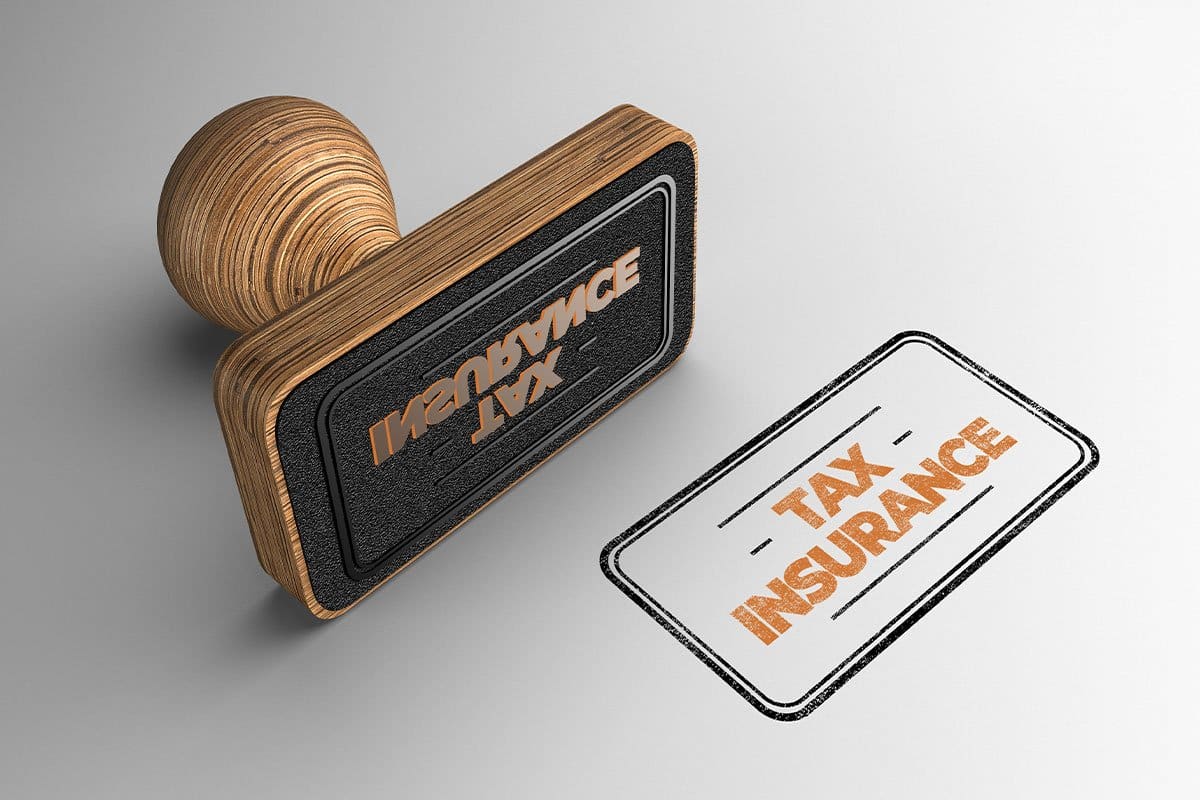
Sales Taxes
Step 12: marketing.

More Marketing Tips for T-Shirt Businesses
- Building relationships. Networking is what makes a business pay off.
- Continually focusing on SEO for your ecommerce business. Start by familiarizing yourself with Google requirements .
- Checking customers' previous print jobs to give you ideas on how to sell more shirts.
- Following up! It makes a difference.
- Using analytics.
Influencers

- Elon Musk : Let's face it, both Sanford and I think he's a rockstar. He mixes jokes, insight, and enthusiasm to spread his message. He's the founder of six companies and the CEO of Tesla and SpaceX. We can all learn from him.
- Screen Printing Blogs : Want a list of 40 blogs focused on t-shirt printing? Check out this one.
- SEO Influencers: Rand Fishkin , Danny Sullivan ,and Neil Patel
Go Forth and Start Your Own T-Shirt Business!
- Do I know how to start an ecommerce store?
- Is it worth it for me to sell online?
- Will I be comfortable speaking to clients?
- Am I starting a clothing line this year?
- Why am I starting a clothing business?
- Do I need employees or advice to get started?
- What will I need to feel successful?
440 Stand-Out Craft Business Names
Did you know craft business owners are expected to make 50% more in 2028 than they did last year?
That means there’s a lot of demand for handmade craft business names. Choosing a great craft business name can give you a headstart in competing for potential customers.
Here, we discuss the craft industry, what makes a good craft business name, catchy craft names for your business, and how to register your craft company name.
[su_note note_color="#dbeafc"] Click on any of the links below to jump ahead in your artistic journey.
Craft Business Industry Outlook
What makes a good craft business name, what should i name my craft business, 30 catchy craft business names, 34 cool craft business names, 36 funny craft business names, 34 creative craft business names, 30 professional craft business names, 20 personal craft business names, 34 location-based craft business names, 40 handmade craft business names, 30 creative shop name ideas, 28 unique craft business names, 30 clever business names for crafters, 32 cute shop names for crafts, 32 jewelry business name ideas, 30 crochet business name ideas, how to register your craft business names.
- Next Steps After Naming Your Craft Business [/su_note]
Craft businesses are expected to grow at a compound annual growth rate of 6.69% and reach $68 billion in industry revenue by 2028. That means a crafting business should expect to see considerable growth in the future if it provides quality handmade crafts.

A good craft business name should be:
- Memorable: Your business name should be easy to remember and pronounce.
- Relevant: Your business name should reflect the type of crafts you make and sell.
- Unique: Your business name should be unique and not already in use by another business.
- Professional: Your business name should sound professional and trustworthy.
- Appealing: Your business name should be appealing to your target audience.
Let’s look at some of the different ways of creating a catchy craft business name.
The best craft business names help you attract customers and communicate what your crafting business does. We’ll cover all kinds of timeless craft business names, including:
- Catchy business names for craft companies
- Cool craft names
- Funny craft names
- Creative name ideas
- Professional names for craft products
- Personal name ideas for craft business owners
- Location-based craft business naming ideas
- Business names perfect for handmade products
Keep reading to get your creative juices flowing. You’re sure to find unique craft business names that you love.
Consider one of these business name ideas when you start selling your crafts.
1. Crafty Creations 2. Creative Hands 3. The Craft Corner 4. The Happy Maker 5. The Artful Crafter 6. The Craftiest 7. The Colorful Crafter 8. The Crafters 9. The Crafty Corner 10. The Craft Zone 11. The Craft Hub 12. The Craft Room 13. The Craft Shop 14. The Craft Studio 15. The Craft Workshop
16. The Crafty Cottage 17. The Crafty Cabin 18. The Crafty Den 19. The Crafty Nook 20. The Crafty Retreat 21. The Crafty Spot 22. The Crafty Store 23. The Crafty Table 24. The Crafty Treehouse 25. The Crafty Turtle 26. The Crafty Unicorn 27. Crafty Wonderland 28. Creative Corner 29. The Creative Studio 30. Craft Galore Club
Pro Tip: Once you have a catchy business name, check if the corresponding domain name is available. Just input the name in the search bar of your web browser and see what comes up. If the website and the social media handles are available, you will have a much easier time attracting customers.

You can create a cool craft brand by combining two or more words to create a new and memorable phrase. This works especially well if they are keywords related to craft businesses.
1. Craftastic Creations 2. The Crafty Caravan 3. The Artisan's Nook 4. The Craft Emporium 5. The Crafter's Collective 6. The Crafty Cat 7. The Crafty Owl 8. The Crafticorn 9. Foxxy Crafty 10. Crafty Rabbit 11. The Crafty Bear 12. The Crafty Mouse 13. Crafty Dog 14. The Crafty Penguin 15. Crafty Frog 16. The Crafty Giraffe 17. Crafty Monkey
18. Crafty Elephant 19. The Crafty Hippo 20. Crafty Lion 21. The Crafty Tiger 22. Crafty Zebra 23. The Crafty Panda 24. Crafty Koala 25. The Crafty Kangaroo 26. Crafty Wombat 27. The Crafty Echidna 28. The Craftipus 29. Crafty Innovation 30. Yarns + Crafts 31. Crafting Cottage 32. The Paperie 33. Pottery Place 34. Woodworking Wizardry
Pro Tip: Rhyming words can also be used to come up with crafty business name ideas.
If your craft business offers products that are defined by their silly or goofy vibe, you might want to go with funny business names for crafts.
1. Artsy Fartsy Crafts 2. Bobbin and Skein 3. Color Me Happy 4. Crafty Critters 5. The Crafty Pickle 6. The Yarn Pirates 7. The Bead Bandits 8. The Crafty Cat Lady 9. The Knit Wits 10. The Sew and Sews 11. The Paper Puppets 12. The Paint Party People 13. The Claymation Crew 14. In Stitches 15. The Crafting Queens 16. The Junk Art Junkies 17. The Upcycled Oddities 18. The Mismatched Masterpieces
19. The Quirky Creations 20. The Silly Sculptors 21. The Wonky Woolen Wonders 22. The Crafty Critters 23. The Whimsical Woodland Workshop 24. The Doodling Dinosaurs 25. The Crafty Cacti 26. The Mischievous Makers 27. Playful Papercrafts 28. Goofy Gifts 29. Silly Stitches 30. Crazy Candles 31. Wonky Wall Art 32. Mismatched Mosaic Madness 33. Crafty Chaos 34. Quirky Quilts 35. Crafty Capers 36. Makin' It Mine
Pro Tip: When choosing a funny craft business name, it's important to strike the right balance of humor and professionalism. You want your name to be memorable and attention-grabbing, but you also don't want to alienate potential customers.
Here are a few tips for choosing a funny craft business name:
- Use puns or wordplay. This is a great way to add humor to your name without being too over the top.
- Choose a name that is relevant to your products or services. This will help customers understand what your business is all about.
- Keep it short and sweet. A long, complicated name is less likely to be remembered than a short, catchy one.
- Avoid using offensive or vulgar language. This could alienate potential customers and damage your reputation.

Want to create a craft business brand that stands out from other crafters? Consider some of these craft business names.
1. Stitch & Stone 2. Nature's Canvas 3. Artisan's Haven 4. Color & Craft 5. Threads & Textures 6. Paper & Paint 7. Clay & Creation 8. Mosaic Moments 9. Yarn & Wonder 10. Fiber & Fabric 11. Metal & Magic 12. Glass & Glamour 13. Wood & Whimsy 14. Resin & Radiance 15. Leather & Love 16. Quill & Ink 17. Candle & Calm
18. Soap & Serenity 19. Bath & Body Bliss 20. Home & Heart 21. Garden & Grace 22. Jewelry & Joy 23. Accessories & Adornments 24. Gifts & Gadgets 25. Party & Play 26. Learn & Create 27. Craft & Connect 28. Inspire & Be Inspired 29. The Maker's Muse 30. Spindles and Yarns 31. Fiber Frenzy 32. Funky Findings 33. Handmade Heaven 34. Heartfelt Creations
Pro Tip: You might incorporate some of your specific craft supplies’ names as you’re brainstorming creative small business names for craft companies.
Professionalism can make all the difference to craft store customers. Consider some of these names to differentiate yourself from other businesses.
1. Crafted Creations 2. The Crafted Studio 3. The Craftery 4. The Crafthouse 5. Crafty Corner 6. Creative Crafts 7. Design & Craft 8. Handmade Elegance 9. Handcrafted Wonders 10. The Craft Loft 11. The Craft Parlour 12. The Craft Station 13. The Crafty Rabbit 14. The Designery 15. The Maker's Place
16. The Maker's Studio 17. The Studio 18. The Workshop 19. Uniquely Crafted 20. Baubles & Blooms 21. Crafted with Love 22. Handcrafted Treasures 23. The Crafting Co. 24. The Crafty Canary 25. The Crafty Cardinal 26. Handmade with Love 27. Crafted By Yours Truly 28. Passion Crafts 29. World of Crafts 30. Wonderfully Handmade
Pro Tip: Your business name ideas should help people understand what you do. You don’t want to confuse customers.
When it comes to personal business names, ideas might include your first name, last name, or something or someone dear to you. Consider some of these creative names for business owners.
1. Emily's Embellishments 2. Ava + Milo Studio 3. Jake's Handmade Haven 4. Lily's Craft Corner 5. Alex's Artistry Alcove 6. Masterpieces by Mason 7. Chloe's Creative Crafts 8. Owen's Originals 9. Bella's Boutique Creations 10. Noah's Nifty Crafts
11. Ava's Artful Designs 12. Smith & Stitches Studio 13. Johnsons Jovial Crafts 14. Anderson Artisans 15. Davis Design Den 16. Taylor Family Treasures Workshop 17. The Miller's Handcrafted Haven 18. Lily & Sage Creations 19. EthanRose Designs 20. Olivia-Max Crafts
Pro Tip: Adding a personal touch to business name ideas helps make your craft store name more relatable to your target customers.

Using your location as part of your craft business name is a great way of selling arts locally.
1. Albuquerque Artisans 2. Anchorage Crafts 3. Atlanta Artworks 4. Austin Artisans 5. Baltimore Crafts 6. Rodeo Drive Designs 7. Boston Creations 8. Charleston Craftsmen 9. Chicago Crafters 10. Cleveland Crafts 11. Columbus Creation 12. Dallas Designs 13. Denver Designs 14. Abbey Road Artistry 15. Detroit Artisans 16. Houston Handcrafts 17. Indianapolis Craftsmen
18. Jacksonville Creations 19. Kansas City Crafts 20. Las Vegas Craftsmen 21. Los Angeles Creations 22. Louisville Artisans 23. Bourbon Street Crafts 24. Memphis Craftsmen 25. Miami Designs 26. Milwaukee Crafters 27. Minneapolis Creations 28. Nashville Craftsmen 29. New Orleans Crafts 30. New York City Creations 31. Orlando Artisans 32. Philadelphia Craftsmen 33. Phoenix Designs 34. Fifth Avenue Creations
Pro Tip: You might also try cute business names using nicknames for your region.
Handmade craft business name ideas can help show that your specific craft is done by hand. See if any of these unique business names for handmade crafts is a win for your business.
1. The Crafted Corner 2. The Maker's Market 3. One-of-a-Kind Creations 4. The Handmade Studio 5. The Craft Cottage 6. Creations by [Your Name] 7. The Upcycled Workshop 8. The Sustainable Stitchery 9. The Yarn Haven 10. The Soap Emporium 11. Candlelight Studio 12. The Artful Abode 13. The Creative Nook 14. The Artisanal Marketplace 15. The Handmade Collective 16. The Maker's Guild 17. The Craft Bazaar 18. Artisan's Alley 19. Handmade Haven 20. The Upcycled Market
21. Sustainable Studio 22. Eco-Friendly Emporium 23. Trinket Trove 24. Crafty Kaleidoscope 25. Tantalizing Creations 26. Upcycled Creative 27. Fabled Fibers 28. Fibers and You 29. Craft Me Not 30. Lovingly Handmade 31. Inspired by Nature 32. Joyful Creations 33. Knitting Nook 34. Papercraft Paradise 35. Piecework Perfection 36. Quilting Corner 37. Recycled Relics 38. Sew Much Fun 39. Something Special 40. Stitching Time
Whether you’re looking for an Etsy shop name or are opening a brick-and-mortar retail store selling your crafts, a great shop name can help your business thrive. Consider some of these craft business name ideas.
1. The Gilded Thimble 2. The Yarn Garden 3. The Bead Bazaar 4. The Fabric Emporium 5. The Paper Palace 6. The Paint Box 7. The Clay Studio 8. The Jewelry Workshop 9. The Woodworking Shop 10. The Glassblowing Studio 11. The Pottery Barn 12. The Fiber Arts Studio 13. The Weaving Studio 14. The Knitting Nook 15. The Quilting Bee
16. The Embroidery Guild 17. The Cross-Stitch Society 18. The Needlepoint Club 19. The Tatting Circle 20. The Lace-Making Society 21. The Bobbin Lace Guild 22. The Crochet Club 23. The Macrame Society 24. The Beading Circle 25. The Jewelry-Making Guild 26. Sew Many Stitches 27. The Doodling Dragon 28. The Mismatched Menagerie 29. The Beaded Bookmark 30. The Quirky Quilter

Want unique craft business name ideas? Here are a few examples.
1. Handman Concoctions 2. Crafty Kids 3. Natural Materials Crafters 4. Craft 4 Days 5. Crafts Gone Wild 6. Curious Craft Company 7. Crafts Galore 8. The Crafty Kraken 9. The Creative Canvas 10. The Stitching Studio 11. The Yarn Emporium 12. The Paintbox 13. The Clay Cottage 14. The Jewelry Junction
15. The Scrapbooking Shack 16. The Upcycling Emporium 17. The Repurposing Realm 18. The Eco-Friendly Crafts Co. 19. The Craft Collective 20. Craft Central 21. Crafty Craze 22. Craftastic World 23. Inkwell & Quill 24. Crafty Concoctions 25. The Painted Petal 26. The Enchanted Easel 27. Button Bonanza 28. The Gilded Loom
Craft business name ideas should show off how crafty you are. What better way than to come up with a clever company name? Try some of these craft business name ideas.
1. Threaded Dreamscapes 2. Fiddlesticks & Fleece 3. Wondrous Weaves 4. Yarnicorn Creations 5. The Looping Llama 6. Crochet Couture 7. Whimsy & Wool 8. Cuddly Creations 9. The Hooked Haven 10. Yarnivore's Delight 11. Knot Just Crochet 12. Threaded Tales & Trails 13. Stitchy & Chic 14. The Wooly Wyvern 15. The Cozy Nest
16. Yarnography 17. The Unraveling Ramble 18. Stitching Symphony 19. Woolful Wonders 20. The Hooked Hippogriff 21. Yarntastic Creations 22. The Cozy Cauldron 23. Loopty-Loo Crafts 24. Hooked on Happiness 25. Stitchin' with Sass 26. Knotty, Spice, and Everything Nice 27. Hook, Line & Stitcher 28. The Yarnival Effect 29. The Fuzzy Foxglove 30. The Critter's Crochet

1. The Threadbender 2. The Painted Fox 3. The Twisted Twine 4. The Gilded Lily 5. The Woven Willow 6. The Knotty Gnome 7. The Beaded Butterfly 8. Our Enchanted Forest 9. The Mermaid's Cove 10. The Dragon's Hoard 11. The Unicorn's Horn 12. The Rainbow Room 13. The Land of Oz 14. Candy Land Crafts 15. The Glass Chocolate 16. Bon Bon Craft Supplies
17. Toyland Crafters 18. The Enchanted Garden 19. The Magic Kingdom 20. The Land of Make-Believe 21. The Land of Dreams 22. Neverland Crafts 23. The Lost World 24. The Secret Garden 25. Misty Mountains Crafters 26. Sparkling Sea Artisans 27. Whispering Woods Studio 28. The Starry Night 29. Knotty and Nice 30. Whimsical Baubles 31. The Yarn Barn 32. Whimsical Wonders
A jewelry company is often focused on crafting and will be appealing to its customers’ aesthetic sensibility. You might try some of these handmade business name ideas if you’re selling a custom jewelry line.
1. The Jewelry Box 2. Adorned Elegance 3. Artisan Jewels 4. Bling Bliss 5. Charm & Chic 6. Dazzling Delights 7. Enchanted Embellishments 8. Exquisite Adornments 9. Gemstone Glamour 10. Heirloom Jewels 11. Jeweled Creations 12. Luminous Luxuries 13. Made with Love Jewelry 14. Ornate Opulence 15. Precious Pieces 16. Radiant Reflections
17. Shimmering Splendor 18. Sparkling Sensations 19. The Bling Boutique 20. Timeless Treasures 21. Unique Adornments 22. Vintage Vibes Jewelry 23. Wearable Art 24. Artisan Adornments 25. Crafted with Care 26. Elegant Expressions 27. Enchanted Elegance 28. Handmade Heirlooms 29. Enchanted Trinkets 30. Embellished by You 31. Diamond Bright Studio 32. The Beading Boutique
Want more ideas? Check out our picks for a crochet business.
Many craft business owners like to crochet. Consider some of these names for crocheted crafts.
1. Hooked on Crochet 2. Stitches of Love 3. The Crochet Corner 4. A Stitch in Time 5. Knotty by Nature 6. Yarn and Joy 7. The Crochet Studio 8. The Yarn Loft 9. Hooked on Handmade 10. The Crochet Cottage 11. The Crochet Parlour 12. The Yarn Boutique 13. The Stitchery 14. The Crochet Nook 15. The Yarn Stash
16. Yarn Over 17. Hook, Line, and Sinker 18. The Yarn Diva 19. The Crochet Queen 20. The Yarn Whisperer 21. The Crochet Goddess 22. The Yarn Enthusiast 23. The Crochet Maven 24. The Yarnista 25. The Crochet Alchemist 26. Yarnspirations 27. Knotty Nirvana 28. Purrfectly Hooked 29. The Cozy Burrow 30. The Wandering Skein

Now that you have plenty of craft business name inspiration, it’s time to talk about how to register your craft business’s name. You’ll want to make sure to:
- Choose a business name. Your business name should be unique, memorable, and relevant to your products or services. It should also be available as a domain name and social media handle.
- Check the availability of your business name. Once you have chosen a business name, you should check to see if it is available in your state. You can do this by searching the Secretary of State's website or contacting the office directly.
- File a DBA (Doing Business As) name. If your business name is different from your legal name, you will need to file a DBA name with the county clerk's office in the county where your business is located.
- Register your business with the IRS. You will need to register your business with the IRS to obtain an Employer Identification Number (EIN). You can do this online or by mail.
- Obtain the necessary licenses and permits. Depending on the type of craft business you are operating, you may need to obtain certain licenses and permits. You can contact your local Chamber of Commerce or the Small Business Administration (SBA) for more information.
Local artisans will have so much more to accomplish for their handmade business operations to be successful. Let’s discuss some of the things you’ll need to do next.
Next Steps After Naming Your Craft Business
Once you’ve found a craft business name you love and registered it, you’ll need to start building your inventory of crafts, create a website, and start marketing your crafts. One of the best ways to market a crafts business is to record yourself making them and share your videos on social media.
What crafts business name do you like?
13 Recession-Proof Businesses (2024)
Are you worried about the direction of the global economy?
You’re not alone. Both business owners and employees are feeling a crunch from rising costs. That’s why we’re going to discuss recession-proof businesses.
[su_note note_color="#dbeafc"] We’ll help you understand more about recessions, including:
Are we in an economic downturn?
What are recession-proof businesses, what industries are recession-proof.
- How do economic downturns impact businesses ?
Recession-Proof Business Ideas: 13 Good Businesses to Start in a Bad Economy
Benefits of starting a business in a bad economy.
- Conclusion [/su_note]
When you’re done reading this, you’ll have an understanding of recession-proof sectors and be prepared for the next economic downturn. Read from start to finish or click any of the links above to jump straight to the section you need to know more about right now.
According to the Federal Reserve , as of April 5, 2024, we are not in a recession, but economic downturns tend to occur every 6.33 years and typically last between 6 and 18 months.
The last economic downturn was caused by the COVID-19 pandemic and government shutdowns that lasted two quarters. Prior to that, the housing market crash of 2008 resulted in a recession that lasted for nearly two years.
Many people believe that the relatively high rate of inflation, the housing and rent bubble, and the reduction in spending power for many Americans are signs that the economic climate is primed for another economic crisis.
If you’re a business owner, now’s the time to should look at your business model and consider how it will survive and thrive during tough economic times.

Recession-proof businesses are companies in industries that tend to perform better than the gross domestic product (GDP) as a whole.
As we experienced during the pandemic, if a small business was considered an “essential service,” it could ride out the tough times because the economic activity that kept it afloat didn’t stop, even when most businesses were not allowed to operate as usual.
When a recession hits, some industries and sectors tend to do better than others. There are essential services and products that people still need during economic slumps, including:
- Utility services
- Disposable goods
- Consumer staples
- Auto repairs
Meanwhile, revenue streams tend to dry up for some companies when widespread economic hardship occurs. Consumer demand for the following tends to decrease during an economic recession:
- New automobiles
- Restaurants
- Large purchases
The economic conditions during each recession will be different, which means consumers cut costs in different areas depending on what the scenario is.
For instance, during the Great Recession in 2008 and 2009, real estate agents were hardest hit because the cash reserves and risk appetite of banks were vastly reduced. In the 1980s, oil embargos caused people to reduce their driving because of gas shortages.
How do economic downturns impact businesses?
When economic uncertainty hits, small business owners will normally experience a reduction of incoming cash flow and be compelled to tighten up their budgets and stop hiring.
When the economic situation gets even worse, they may need to offer cheaper alternatives, lay people off, and, in the worst-case scenario, close their businesses.
Industries that are recession-proof will normally be able to avoid many of the worst-case scenarios because people still need food, clothing, shelter, and other recession-proof products.

In the sections below, we’ll discuss industries that do well in recession.
The following businesses are sorted based on the number of searches for each type of recession-proof business. Why? Search volume is a good indicator of the demand for information about recession-proof industries.
Consider the following recession-proof business ideas:
- Affiliate marketing
- Grocery stores
- Food delivery services
- Auto repair shops
- Home improvement and home repair companies
- Property management companies
- Cleaning services
- Accounting services
- Healthcare industry
- Information technology support
- Dollar stores
Keep reading to learn about the most recession-proof industries.
1. Affiliate Marketing
According to Kinsta , 56% of affiliate marketers increased their earnings during the recession of 2020, making it the best recession-proof business. If that’s not enough, Authority Hacker expects affiliate marketing to be a $27.78 billion recession-proof industry by 2027.
Affiliate marketing is the most commonly searched for recession-proof business. It doesn’t require an inventory, and you make commissions on every sale.
You might need to refer people to recession-proof services like bookkeeping services and rideshare services to keep your income flowing, but there are plenty of great affiliate marketing offerings.
Learn more about affiliate marketing through our interview with affiliate marketing master Matt Diggity.
2. Grocery Store
Grocery stores are another of the most recession-resistant business models. The food industry is never going to end because we have to eat to survive.
According to Forbes , people spend about 14% of their income on food, and the percentage of that spending that goes to fast food and restaurants has declined from 45% to 40%. That means people are grocery shopping more.
Check out our interview with Punardeep Sandhu, a serial entrepreneur who owns a grocery store.
3. Food Delivery Services
According to Bloomberg Second Measure , delivering food spiked during the pandemic. Given this industry hasn’t been around long enough to survive multiple recessions, it might not be as recession-resistant as the chart suggests.
That said, a business owner could focus on offering the same services for grocery stores to help protect against sudden reduced cash flow.
Find out how Adam Haber started his courier services working with Amazon.
4. Auto Repair Shops

According to the Denver Post , auto mechanics saw a 16% increase in revenue during the 2008 financial crisis, making it a fairly recession-proof business. These support services benefited from the lack of available loans during that time.
Meanwhile, repair shops saw a decrease in business during the pandemic because people drove 13.2% less .
Find out how Lucky Sing started his repair business in 2016 for just $20,000.
5. Home Improvement and Home Repair Companies
During the Great Recession, the home improvement and repairs industry dropped 1% the first year before starting to increase again according to Statista . Meanwhile, home repairs increased by 22% during the pandemic.
Depending on the cause of each recession, the business opportunities may be in repairs or improvement. Offering both types of services makes a business that much more recession-proof.
Check out our list of construction businesses to learn more about starting home repair and improvement businesses.
6. Property Management Companies
According to the Congressional Research Survey , there are 49.5 million rental properties in the United States. Furthermore, 44% of them are managed by property managers according to DoorLoop .
People don’t stop renting just because the economy isn’t doing well, and these companies take a percentage of monthly revenue.
Learn more about property management and real estate investment.
7. Cleaning Services
A cleaning business can be recession-resistant. Home cleaners may find people cut back on cleanings, but janitorial services are unlikely to stop managing cleaning contracts because nobody wants to go to a business that is filthy.
During the pandemic, many cleaning services added sterilization services to drive new revenue and growth.
Learn how Christobal Mondragon makes over $1.5 million per year in our exclusive cleaning business course .
8. Accounting Services
Almost everyone in the United States needs accounting services. Some people only need once-per-year tax filing assistance, while others need financial advisors for things like:
- Financial planning services
- Bookkeeping
- Quarterly taxes
- Comparing financing options
These services are in high demand during all economic conditions.
9. Healthcare Industry

The healthcare sector benefits from people getting sick and having emergencies. That means healthcare companies make money no matter what the economy is doing.
Right now is a perfect time for starting a new business in the healthcare industry. According to The Hill , the entire healthcare industry is facing shortages of essential workers. The work is typically high paying and offers job security for those who can handle the grueling hours and stressful environment.
10. Child Care
According to Statista , there are 46.6 million American kids under 11 years old. The Census Bureau estimates 17% of their parents rely on paid childcare services. Meanwhile, the Department of Labor reports that people pay between $5,357 and $17,171 per year for childcare.
In-home daycares make great small businesses—you can save money and fulfill the ever-higher demand for childcare.
Pro Tip: Check out our picks for 698 Endearing Daycare Names and How to Start a Day Care (in 9 Simple Steps) .
11. Information Technology Support

IT support companies are recession-proof companies because people still need help solving their tech-related problems, even in a downturn.
According to Axios , tech companies did poorly at the turn of the century because of the tech bust, but 2008 led to a lot of new technology that opened new business opportunities. Then, in the pandemic, there were grants to help small businesses implement new technology.
Small business ideas in this field tend to have high profits that make it easier for them to be recession-proof businesses. Just make sure to save money so you can weather economic downturns and invest in businesses that thrive in recession.
12. Pet Care
Recession-resistant industries include pet care. These are good business ideas because pets still need to be fed and go to the bathroom during economic downturns.
These recession-resistant businesses can use affordable luxuries like online shopping, digital marketing, and social media to make modern life easier for their pet-owning customers.
13. Dollar Stores
Dollar stores tend to do best when money is tight. According to USA Today , multiple chains are closing down their dollar stores due to financial challenges.
These businesses need to be able to purchase things in bulk and sell them for low costs, which requires implementing successful and sustainable buying and pricing strategies.
While dollar stores can be businesses that are recession-proof, getting into the game might be best in expansionary times.

Starting a business during a recession can actually be really beneficial. A recession often provides people who want to start a business with some competitive advantages, including:
- An Obvious Problem: Recessions are almost always tied to a specific event or industry bubble. Finding the solution to solve that problem can be highly beneficial.
- Lower Costs: Many large purchases, like equipment, real estate, and existing businesses, tend to be less expensive during economic downturns.
- More government incentives: Governments tend to provide other businesses more support during recessions than expansionary times. As long as you provide a solution in the industries they are focused on, this can help you.
Don’t focus so much on what industries do well in a recession; rather, focus on the industries in which you can differentiate yourself.
Consider this example: Lee Kindell started Moto Pizza when COVID shutdowns closed his hotel. He put $60,000 on a credit card to open the pizza shop—and has since opened multiple locations. Find out how he did it in the interview below.
At this point, you have an understanding of recession-proof businesses that commonly perform well during an economic downturn.
We discussed the industries that perform well during recessions, how businesses are impacted by recessions, what businesses do well in a recession, and why you might want to start a business…even during an economic downturn.
It’s up to you to do the research on each business, but we have interviewed hundreds of business owners to learn what they did and how you can speed up your process to success. Consider taking one of our courses to start a successful business faster .
What recession-proof business will you start?
nice work https://binarychemist.com/
My Name is PRETTY NGOMANE. A south African female. Aspiring to do farming. And finding a home away from home for the differently abled persons in their daily needs.
Become a business owner in less than 90 days
Start your 10-day free trial of the UpFlip Academy and learn how to start your own business from scratch.
Get business advice straight to your Inbox

4+ SAMPLE Blog Business Plan in PDF
Blog business plan, 4+ sample blog business plan, what is a blog business plan, different types of blogs, reasons to make a blog, how to write a blog business plan, what are the advantages of having a blog, what is a blog exit strategy, can a blog become a business.
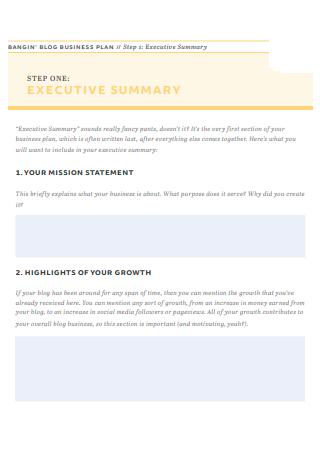
Blog Business Plan Template
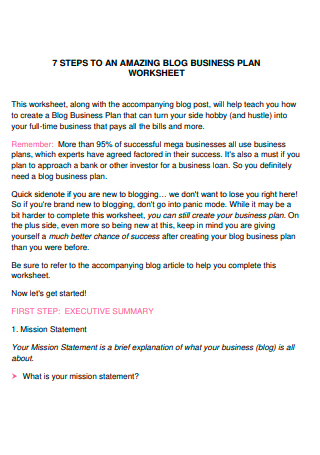
Blog Business Plan Worksheet
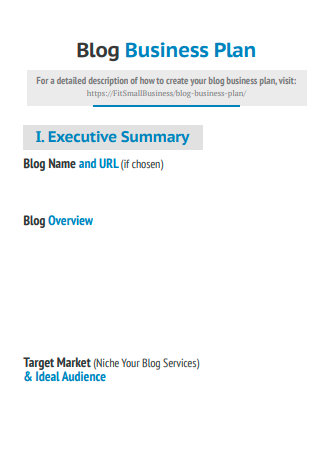
Basic Blog Business Plan
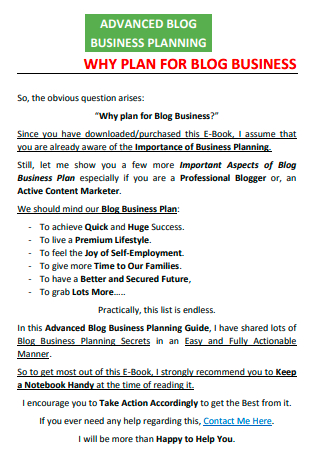
Advanced Blog Business Planning

Blog Business Plan Example
Step 1: create an executive summary, step 2: brand identity overview, step 3: blog content overview, step 4: blog marketing and promotion strategies, step 5: develop a thorough competitor analysis, step 6: blog monetization plan, share this post on your network, file formats, word templates, google docs templates, excel templates, powerpoint templates, google sheets templates, google slides templates, pdf templates, publisher templates, psd templates, indesign templates, illustrator templates, pages templates, keynote templates, numbers templates, outlook templates, you may also like these articles, 5+ sample investment company business plan in pdf.

What do you do when you have tons of spare cash lying around your home or burning a hole in your wallet or expensive jeans pocket? For some people, the…
41+ SAMPLE Unit Plan Templates in PDF | MS Word

As a teacher, you might know about every school policy, the steps to keep classrooms safe for intellectual development, how to set up an organized classroom, and the proposed…
browse by categories
- Questionnaire
- Description
- Reconciliation
- Certificate
- Spreadsheet
Information
- privacy policy
- Terms & Conditions
claro insurance

How to Create a Business Plan for a Health Insurance Agency

Starting an insurance agency is a rewarding venture that demands meticulous planning and strategic foresight. One of the essential tools in this journey is a well-crafted business plan. A business plan not only guides your agency through its initial stages but also serves as a roadmap for growth and sustainability. In this blog post, we will explore why a business plan is crucial for an insurance agency and outline the key components that should be included in it.
Why is an Agency Business Plan Important?
Provides direction and focus.
A business plan is like a compass for your insurance agency. It defines your goals, outlines your strategies, and establishes the milestones you need to achieve. This direction helps you stay focused on what’s important, ensuring that every action you take aligns with your overall objectives.
Attracts Investors and Partners
If you’re looking to secure funding or attract business partners, a comprehensive business plan is indispensable. Investors want to see a clear and detailed plan that demonstrates the potential for profitability and growth. A well-prepared business plan shows that you’ve done your homework and are serious about your venture.
Identifies Potential Challenges
Every business faces challenges, and an insurance agency is no exception. A business plan helps you anticipate potential obstacles and devise strategies to overcome them. By thinking ahead, you can mitigate risks and navigate through tough times more effectively.
Sets Benchmarks and Metrics
A business plan establishes benchmarks and key performance indicators (KPIs) to measure your agency’s progress. These metrics allow you to track your performance, identify areas for improvement, and make informed decisions to drive growth.
Ensures Operational Efficiency
Detailed planning helps streamline your operations. By defining processes, roles, and responsibilities, a business plan ensures that your team operates efficiently and effectively, minimizing wasted time and resources.
What Should Be Included in the Business Plan for an Insurance Agency?
Creating a robust business plan involves several key components. Here’s a comprehensive guide to what should be included:
Executive Summary
The executive summary provides a snapshot of your agency. It should include your mission statement, business objectives, and an overview of your strategies. This section should be concise yet compelling to capture the interest of readers, especially potential investors.
Company Description
This section offers a detailed description of your insurance agency. Include information about your agency’s history, the types of insurance products you offer, the market you serve, and your unique selling propositions (USPs).
Market Analysis
Conduct a thorough market analysis to understand the landscape you’re operating in. Identify your target market, analyze your competitors, and outline market trends. This analysis should demonstrate your understanding of the market and justify the demand for your services.
Organization and Management Structure
Detail your agency’s organizational structure. Include information about the ownership, management team, and board of directors if applicable. Describe the roles and responsibilities of each team member and highlight their qualifications and experience.
Products and Services
Provide a detailed description of the insurance products and services your agency offers. Explain the benefits of each product, your pricing strategy, and any unique features that set your offerings apart from the competition.
Marketing and Sales Strategy
Outline your strategies for attracting and retaining clients. This should include your marketing plan, advertising strategies, sales tactics, and customer service approach. Define your brand positioning and explain how you plan to communicate your value proposition to your target market.
Operational Plan
The operational plan details the day-to-day operations of your agency. Include information about your business location, facilities, technology, and equipment. Describe your workflow processes, customer service protocols, and any other operational details critical to running your agency smoothly.
Financial Plan
A comprehensive financial plan is crucial. Include projections for revenue, expenses, and profitability. Provide a break-even analysis, cash flow statement, income statement, and balance sheet. This section should demonstrate the financial viability of your agency and provide a roadmap for achieving financial stability and growth.
Risk Management Plan
Identify potential risks to your business and outline strategies for mitigating them. This could include market risks, financial risks, operational risks, and compliance risks. A proactive approach to risk management is essential for long-term success.
Include any additional information that supports your business plan. This could be resumes of key team members, legal documents, detailed market research data, or technical specifications of your products.
A well-developed business plan is the cornerstone of a successful insurance agency. It provides direction, attracts investors, identifies challenges, sets benchmarks, and ensures operational efficiency. By including the essential components outlined above, you can create a comprehensive business plan that not only lays the foundation for your agency’s success but also positions it for sustainable growth in the competitive insurance market. Start planning today and pave the way for your insurance agency’s prosperous future.
- May 17, 2024
- No Comments
Leave a Comment Cancel Reply
Your email address will not be published. Required fields are marked *
Save my name, email, and website in this browser for the next time I comment.

How to Write a Health Insurance Proposal

5 Benefits of Being a Part-Time Health Insurance Agent

Key Strategies for Hiring Top-Performing Insurance Agents

Strategies for Becoming a Top Producer in the Insurance Agency Sector

Healthcare Access for DACA Recipients: Agents’ Guide & Latest Updates
Tu navegador no soporta videos HTML5.
How To Write a Lawn Care Business Plan

Are you considering opening a lawn care business? With low startup costs and ongoing demand, this home care niche has the potential to generate healthy profits quickly.
However, there are a lot of elements you need to nail down before getting started. That’s where your lawn care business plan comes in. A good plan will help you avoid common business startup mistakes like overspending or failing to understand the market.
Planning also helps you clarify exactly what you need to build a successful lawn care company.
If you’re not sure how to write a business plan for a lawn care business, read on. This article covers all the information you’ll need to include. You’ll also get some valuable tips to help you prepare to write one.
First, it helps to understand why you need a business plan. A solid idea of its purpose will get you in the right frame of mind for drafting yours.
The Purpose of a Lawn Care Business Plan
A business plan outlines the foundational aspects of starting and running a successful lawn care company. From figuring out your services to creating growth strategies, it’s your roadmap that takes you from the idea stage to profitability.
With a well-structured business plan, you can count on:
- Faster growth: Your plan outlines your ideal customers and how you’ll promote your services to them so you can start bringing in business and building your reputation from day one.
- Better cash flow management: Approximately one in four businesses fail in their first year. The number one reason? Cash-flow problems . Your business plan will help you better manage your cash flow.
- Progress tracking: You can use the goals you identify in your plan to track progress. Knowing your goals each quarter or other timeframe helps you stay focused.
- A stronger brand: As you establish your mission, vision, and values, you define the “why” behind your lawn care business. This helps to carve out a clear brand identity that resonates with your market.
- Access to financing: If you apply for a small business loan, the bank will review your business plan to understand your earning potential. A thorough, well-researched plan can increase your chances of getting a loan.
Ultimately, your business plan isn’t just a nice-to-have document. It’s something you’ll need to start a lawn care company.
RELATED ARTICLE: How to Start a Lawn Care Business

Initial Steps To Starting a Lawn Care Business Plan
Ready to get started? The first steps involve information gathering. It’s time to research, ideate, and make decisions.
Decide on Your Type of Lawn Care Business.
Who will you provide lawn services for? Residential or commercial customers? Will you provide specialized services, such as sustainable lawn care or lawn pest management?
Professional lawn care services can include the basics like weed control and grass cutting. You can also offer a full suite of services, from fertilization and edging to seeding and leaf removal.
Figure out what you want to offer. This will determine the size of your team, the equipment you’ll need to buy or lease, and your income potential.
Scope Out the Competition.
Who are your main competitors? What services do they offer? Note things like their pricing, branding, and online reviews. Then, do an analysis to determine what works and what doesn’t in your market.
Research Your Market.
How many potential customers are there in your service area? What are their pain points—cost, convenience, a need for specific services?
Identify demographic information such as age group, income bracket, and location. You’ll use this information to develop your ideal customers. It can also inform major decisions like your pricing strategy and marketing channels.
Look for Differentiation Opportunities.
Use the information from your competitor and customer analysis to identify gaps in your market. Are there problems customers complain about in reviews? Is there a shortage of a specific type of lawn care?
What angle can your business use to out-compete other companies in your region? Here are some ideas:
- Exceptional customer service
- Professional branding
- Lower prices
- Add-on services, such as landscaping design, mosquito control, or tree removal
Differentiation will help your lawn care company stand out. That can lead to more business and a more recognizable brand.
FROM ONE OF OUR PARTNERS: 13 Lawn Care and Landscaping Industry Trends
Lawn Care Business Plan Development
The next stage of writing a plan is establishing the nuts and bolts of your business. These are covered by the standard sections of a business plan, which are:
- Executive summary
- Mission and vision statements
- Business structure
- Service overview
- Pricing strategy
You’ll also add your marketing strategies and financial information before presenting your plan to lending institutions. Let’s dive into what you need to flesh out each section.
Craft a Compelling Executive Summary.
The executive summary details the following:
- Company history: What’s the background of you or anyone else involved in starting your lawn care company? Share any related experience and the reason you decided to start the company.
- Values: Is your business trustworthy? Highly skilled? Family-owned? Prompt and courteous? Choose three or four core values.
- Mission and vision: Write a statement detailing your mission, i.e., your objectives and how you hope to achieve those objectives. Include your vision, which details your long-term aspirations.
Give an Overview of Your Business.
Write out your business name, what you offer, and your market.
Here’s an example: Ted’s Lawn and Plant Care offers residential lawn care and landscaping services to the town of Middlebury. We’re a small team of lawn care experts who are passionate about helping our customers achieve healthy, beautiful lawns.
Also, list your ownership structure. Do you have a sole proprietorship, partnership, LLC, or corporation?
Detail your existing assets as they apply to starting your business. These include lawn care equipment, vehicles, office equipment, and software.
Detail Your Services.
List your specific services. Here are some of the most popular lawn care services:
- Grass cutting
- Edging
- Fertilization, seeding, and weed control
- Mulching and aeration
- Leaf removal and yard cleanup
- Irrigation
- Mosquito control
- Tree and ornamental plant care
Determine Your Pricing Strategy.
Once you’ve listed your service menu, decide how much you’ll charge for each service. Review your competitors’ prices to better understand what competitive pricing will be in your market.
Will you charge lower prices to attract new customers? Or will you offer more value and charge a premium?
For example, if your lawn care business offers more expertise, factor that skill and experience into your pricing.
Profitability also matters when figuring out your pricing strategy. What price do you need to make a profit from your services?
Calculate labor, materials, and other expenses to find out how much each service costs your business. Then, determine a reasonable price to ensure you’re generating enough revenue. This is your expected profit margin .

Financial Planning for a Lawn Care Business Plan
One of the most important parts of your business plan is your financial plan. This section is where you explain how you’ll make money and avoid financial pitfalls. Lenders will want to see that you’ve run the numbers and have a solid base to build your business on.
Many startups benefit from working with a CPA on this section to ensure accuracy. However, it does help to have the following information ready for their review.
Project Revenue Growth.
Using your pricing strategy and sales goals, determine how much revenue you’ll make in the first quarter, six months, and year. Your projected revenue is crucial for determining your budget.
Budget for Equipment and Staff.
Establish how much you need to pay staff and invest in your initial equipment. Consider different ways to save money, such as leasing equipment instead of buying and starting with a small team. You need a good budget to avoid running into cash flow issues.
Insure Your Business.
Risk is a part of doing business. You can reduce risk with business insurance. Look into what types of insurance you need, such as general liability and auto insurance for your company vehicles. You may need a separate commercial policy even if you plan to use your personal car or truck, you may need a separate commercial policy .
Having the right insurance doesn’t just save your business from financial catastrophe. It also shows your customers your company is professional.
Consider Diversifying Your Income Streams.
Lawn care businesses can earn income in different ways. You can provide lawn care services. But you can also use your assets to make money in other ways.
For example, if you invest in high-quality equipment, you can lease that equipment to other small businesses. You can offer landscape design consulting or installation services if you have landscaping expertise.
Diversifying will help your business bring in revenue even when one side of your business slows down.
FROM ONE OF OUR PARTNERS: 5 Spring Season Landscape Maintenance Services to Offer
Lawn Care Business Plan Marketing and Growth Strategies
A well-structured business plan also includes sections on marketing and sales. How will your business promote your services? What sales tactics will you use to grow? Investors want to see that you have a strategic plan to promote yourself as part of long-term success.
Here are the steps to complete this section of your lawn care business plan:
Use Digital Marketing Channels To Engage Your Audience.
Set up a website to establish your position online. It should be uncluttered and easy to navigate since most of your other channels will point back here.
You should also build a presence on the social media channels your target audience uses. Content and frequent interaction will be driving factors for social success.
For example, you might create a Facebook page for your business. If you have the budget, you could create how-to content on YouTube to drive traffic to your site and engage your audience.
Decide How To Promote Your Business Locally.
If you have service vans or trucks, you can promote your business by having a professional paint your logo and phone number on the vehicles. You may also want to consider vehicle wraps . They turn your transportation into a rolling billboard.
Consider mailing out promotional flyers to your target audience. You can also place your business card in local establishments with a board or table to promote local businesses, such as libraries, cafes, and bookstores.
Prioritize Customer Satisfaction To Drive Repeat Business.
Decide how you’ll train your team to deliver top-notch customer service. Develop processes around cleaning up after services, communicating with customers, and getting feedback from them.
The goal is to ensure your business offers exceptional service to encourage repeat business and referrals.
Develop a System for Encouraging Online Reviews.
In the lawn care industry, online reviews are one of your most powerful marketing tools. A recent survey found that 91% of consumers say online reviews impact their perception of local brands.
Build a system for managing reviews. This can include sending an email or SMS after services requesting a review.
However, if you’re going to ask for them, you must monitor them. Thank people for the positive ones and address any negatives to find a suitable solution.
FROM ONE OF OUR PARTNERS: 6 Tips and Tricks to Effectively Manage a Landscaping Business
Top Tips for Writing a Lawn Care Business Plan
An effective business plan is jam-packed with detail, analysis, and research. That’s why writing a lawn care business plan can feel a little daunting.
But if you break down the different sections into the individual steps outlined above, you’ll create a well-structured document that supports your success. Here are three tips that can help you get the ball rolling:
- Find lawn care businesses you admire. Use these companies for inspiration. Check out their branding. See what they’re up to on social media. And read their reviews. You’ll learn a lot of information to help you craft your mission, vision, and values.
- Evaluate your current assets. Take stock of what you have. Lawn mowers. Hedge trimmers. Leaf blowers. Make a list of everything so you know what you’re working with.
- Decide what software you’ll use. Scheduling tools, accounting software, invoicing— the right software can help you save money from the start. Figure out what you’ll need and start comparing options.
Related Posts

7 Creative Ideas for Lawn Care Business Cards

5 Pest Control Marketing Ideas That Generate Leads
Money blog: Gary Neville's hotel named among best places for hospitality jobs
A magazine has released its annual list detailing the top picks for hospitality jobs. Read about this and all the latest consumer and personal finance news in the Money blog - and leave a comment or your money problem in the box below.
Friday 17 May 2024 19:16, UK
- 'Good news' as major drop in household energy bills predicted
- 'Seismic shift' as number of bank branch closures passes 6,000
- The 'top places to work' in hospitality - including Gary Neville's hotel
- New Greggs stores to open in these locations
- Drivers hit by 'unfairly high margins' on fuel
Essential reads
- Lowest buy-to-let mortgage rates revealed
- Is more expensive steak better for you?
- The rise of Michelin starred 'fast food'
- Basically... What is PIP - and what could government changes mean?
- How to make sure your car passes its MOT
- Cheap Eats: Michelin-star chef reveals his top steals in London - including an unbeatable sub sandwich
- Money Problem: My workplace wants to pay us by the minute - what can I do?
- Best of the Money blog - an archive
Plan to Put AI to Work for Your Business? Just Make Sure There’s Always a Human in the Loop.
Though AI can work more quickly than people can in some cases, it still takes its cues from us. But that’s not the only reason why you shouldn’t let an AI work completely independently.
Artificial intelligence (AI) has shown us both the limitations and strengths of humans, the latter being most evident in our critical thinking capabilities. Though some AI systems can be trained to become independent thinkers, they lack the emotional intelligence, common sense, and accountability of people. So, when we ask any AI to work on our behalf – or make decisions that directly impact humans’ health, safety, well-being, productivity, and so on – we must ensure it’s doing exactly what it’s supposed to do. Even a well-trained AI that passes every test could hallucinate, impart bias, or make another mistake at some point because conditions and context change in the real world, and training is never perfect. Think about it: did you know how to deal with every situation in life after completing school? Probably not. You learned as you went along – as you made mistakes and recognized that you need to adjust.
Plus, if you are using AI systems in the European Union (EU), you’re now going to have to comply with the EU AI Act guidance for “human oversight ,” and similar requirements are expected to follow soon in other regions. That’s why it is imperative that, no matter how you use AI to support your business, a person is always managing the AI.
But what does “managing” mean?
Well, how much you need to manage the AI system and exactly how you should manage it depends on the criticality of the decisions and actions you’re empowering the AI to make. It also depends on how much you trust the AI to “do the right thing.”
Of course, if you don’t have time (or a team) to keep tabs on the AI 24/7, you may say that you just have to trust the AI was properly trained. But that mindset is what introduces tangible risk into your business. So, I reached out to Tess Valbuena, interim CEO of the award-winning social enterprise Humans In the Loop , for a quick chat about how her team effectively manages AI systems (since this is what they do full time).
My team leans on Tess's team on occasion to help keep an eye on the AI systems we use for research and development (R&D). Even though we are AI engineers and have the know-how to manage our AI systems, we know how important it is to have a human in the loop around the clock. We just don’t have the bandwidth to be that “human in the loop,” so Tess’s team steps in to help us out. Her team has also helped several Zebra customers (and thousands of organizations around the world) that don’t have AI engineers or data scientists on staff but want, or maybe need, AI to assist with certain business functions.
So, when we spoke, I asked Tess to share...
what types of AI systems require constant oversight and management by a human
which AI systems might only need “standby” support or occasional performance checks
the best way to “trust but verify” that an AI is doing what it’s supposed to be doing, regardless of which type of AI you’re using or what you’re asking it to do.
Hear what she said:
Your browser does not support the video tag.
Tess and her team also wrote a short and sweet blog post highlighting some of the key takeaways from our discussion if you want to share it or bookmark it for later:
The Role of Human-in-the-Loop: Navigating the Landscape of AI Systems
You may also be interested in this discussion:
The Truth About AI: What Mainstream Media Coverage is Missing

Stuart Hubbard
Stuart Hubbard is a respected leader in the field of AI and advanced development, known for his practical approach, technical innovation, and ability to drive success in the development of cutting-edge technologies.
He currently serves as Senior Director of Artificial Intelligence and Advanced Development at Zebra Technologies and boasts a wealth of technical experience garnered from various industries worldwide. His specialization lies in AI, machine learning, deep learning, computer vision, as well as IoT and cloud-based solutions (SaaS and PaaS). Notably, Stuart excels in building high-performing research and development teams that are capable of developing innovative and integrated solutions.
Zebra Developer Blog
Are you a Zebra Developer? Find more technical discussions on our Developer Portal blog.
Zebra Story Hub
Looking for more expert insights? Visit the Zebra Story Hub for more interviews, news, and industry trend analysis.
Search the Blog
Use the below link to search all of our blog posts.
Most Recent

Though AI can work more quickly than people can in some cases, it still takes its cues from us. That's why you always need to keep a human in the loop. But that’s not the only reason why you shouldn’t let an AI work completely independently. Zebra's Senior Director of AI and Advanced Technologies sits down with the Interim CEO of Humans in the Loop to talk more about why human oversight will always be needed with AI systems and if there’s ever a time an AI system can be left to work autonomously.

HIMSS 24 - A Rollercoaster Ride in Healthcare Trends

Do Your Retail Associates Have the Tools They Need to Act Fast in Emergency Situations?

What’s Missing from the IT/OT Convergence in Many Manufacturing Environments?

What Are You Doing to Ensure Your New Utility Workers Can Keep Up with Retirees?

Connect with our team
- About Zebra
- Story Hub/Newsroom
- Corporate Social Responsibility
- Global Locations
- Success Stories
- Resource Library
Support Resources
- Support and Downloads
- Contact Support
- Request a Repair
- Product Warranty Information
- Developer Portal
- Report a Potential Security Vulnerability or Concern
Stay up to date with Zebra.
Sign up for our newsletter.
Legal Terms of Use Privacy Policy Supply Chain Transparency
ZEBRA and the stylized Zebra head are trademarks of Zebra Technologies Corp., registered in many jurisdictions worldwide. All other trademarks are the property of their respective owners. ©2024 Zebra Technologies Corp. and/or its affiliates.

COMMENTS
Incorporate the blog audience in your blog name. Find naming inspiration from characters in books or mythology. Incorporate a location name into your blog's name, if appropriate. Consider using a portmanteau, which is just two names modified and smushed to become one name (e.g., breakfast + lunch = brunch).
Grab my free blog business plan template in both Google Doc and PDF format (that's helped me build a six-figure blog) and reach 500,000+ monthly readers today. Enter your first name *. Enter your email address*. Last year alone, my blog generated $449,107 in revenue (see more in my blog income reports ), and it's been earning in the six ...
3. Know your competitors' price points and ranges for their products. If your competition has any products for sale, then write down what the price ranges are for those products. This will give you an overview of how much is typical for a product you may create one day and what your target audience is used to paying.
Begin with topic ideation, as mentioned above. Do the research and generate a compelling headline. Create an outline for the blog post. Flesh out the outline, rearrange sections into a logical order and write the post. Edit the post for spelling, grammar, factual information, consistency, and logical flow.
Determine how frequently you'll share blog posts. Write compelling and valuable content. Include CTAs. Launch your blog. Track and analyze your blog's success. 1. Choose your blog topic and purpose. The first part of developing your blogging strategy is to clearly define your blog's topic and purpose.
Without further ado, here are the components of my blog business plan: 1. BRAND. Brand name. You should come up with a brand name. This is the same as your blog name. Don't need to go over the top - keep it simple. Here's a tutorial on how to pick a blog name, if you need help. Vision & mission of your brand.
A blog business plan helps write down the blogger's goals, and how the blog will make money. Writing a blog business time is easy but can take more time to write depending on your goals for the blog. The first step of outlining your blog's goals and objectives includes choosing a niche, learning about your target audience, and more.
How to Create a Blog Business Plan. While we've already covered a lot of the steps you need to go through in order to create your blog business plan, let's break it down even further. 1. Create a Blog Roadmap: Define Your Blog's Goals, Mission, & Vision.
In the introduction, grab your audience's attention with a captivating anecdote, a compelling quote or statistic, or an interesting fact. Then, share a brief summary of what the article is about, making sure to grab the interest of your readers. Next, write the body text, using your outline as a guide.
With the right approach, a well-developed blog business plan template, and a focus on growth strategies that are both sustainable and scalable, you can build a successful online business that will stand the test of time. Wrap Up. A solid business plan and a comprehensive and targeted marketing strategy are essential for driving traffic to your ...
Here are a few tips for writing the market analysis section of your blog business plan: Conduct market research, industry reports, and surveys to gather data. Provide specific and detailed information whenever possible. Illustrate your points with charts and graphs. Write your business plan keeping your target audience in mind.
Step 1: Concentrate Your Vision With an Executive Summary. A business plan begins with an executive summary. It's like the elevator pitch for your business. In the space of about a page, a reader should gain a pretty good sense of who you are and what you're about.
PART 2: YOUR MISSION. When running any business, you need to have a purpose for what you are doing. While many call this section an executive summary, it typically all includes this element of what you want to do with your business and where you want to go with it. Here are some aspects to include in your mission:
Blog Business Plan Action Step 1: Define the top 5 personality traits you want people to associate with your blog. Make sure these are traits you value, too, since you're going to be the face of your blogging brand. Down the line, make sure each interaction you have with your readers allows those personality traits to shine through.
This is why crafting a business plan is an essential step in the entrepreneurial process. In this post, we'll walk you through the process of filling out your business plan template, like this free, editable version: Download a free, editable one-page business plan template. We know that when looking at a blank page on a laptop screen, the idea ...
1. Create Your Executive Summary. The executive summary is a snapshot of your business or a high-level overview of your business purposes and plans. Although the executive summary is the first section in your business plan, most people write it last. The length of the executive summary is not more than two pages.
Step #3: Conduct Your Market Analysis. Step #4: Research Your Competition. Step #5: Outline Your Products or Services. Step #6: Summarize Your Financial Plan. Step #7: Determine Your Marketing Strategy. Step #8: Showcase Your Organizational Chart. 14 Business Plan Templates to Help You Get Started.
1. Executive Summary. While your executive summary is the first page of your business plan, it's the section you'll write last. That's because it summarizes your entire business plan into a succinct one-pager. Begin with an executive summary that introduces the reader to your business and gives them an overview of what's inside the ...
Most business plans also include financial forecasts for the future. These set sales goals, budget for expenses, and predict profits and cash flow. A good business plan is much more than just a document that you write once and forget about. It's also a guide that helps you outline and achieve your goals. After completing your plan, you can ...
Common items to include are credit histories, resumes, product pictures, letters of reference, licenses, permits, patents, legal documents, and other contracts. Example traditional business plans. Before you write your business plan, read the following example business plans written by fictional business owners.
Describe Your Services or Products. The business plan should have a section that explains the services or products that you're offering. This is the part where you can also describe how they fit ...
How to Write a Business Plan Step 1. Create a Cover Page. The first thing investors will see is the cover page for your business plan. Make sure it looks professional. A great cover page shows that you think about first impressions. A good business plan should have the following elements on a cover page:
Step 3: Blog Content Overview. Your blog requires not only a general business plan but also a blog content strategy plan. Noting not just the sorts of content that will be published, but also how you plan to maintain the quality high. Make a list of the primary topic categories that your blog will cover.
A real estate business plan allows you to stay current with market trends and ahead of the competition. It also helps you track results over time, test lead generation strategies and develop new marketing approaches. Zillow's Bret Calltharp, a former training leader for a large brokerage group, saw his agents' business increase by an ...
Financial Plan. A comprehensive financial plan is crucial. Include projections for revenue, expenses, and profitability. Provide a break-even analysis, cash flow statement, income statement, and balance sheet. This section should demonstrate the financial viability of your agency and provide a roadmap for achieving financial stability and growth.
A pitch deck is a brief presentation that gives potential investors or clients an overview of your business plan, products, services and growth traction. As an entrepreneur, you probably know this: your company or idea needs financing. Oftentimes, this financing will come from external sources—i.e. people who aren't friends or family.
Your business plan will help you better manage your cash flow. Progress tracking: You can use the goals you identify in your plan to track progress. Knowing your goals each quarter or other timeframe helps you stay focused. A stronger brand: As you establish your mission, vision, and values, you define the "why" behind your lawn care business.
Read about this and all the latest consumer and personal finance news in the Money blog - and leave a comment or your money problem in the box below. A third of travellers are making the same ...
Artificial intelligence (AI) has shown us both the limitations and strengths of humans, the latter being most evident in our critical thinking capabilities. Though some AI systems can be trained to become independent thinkers, they lack the emotional intelligence, common sense, and accountability of people. So, when we ask any AI to work on our ...